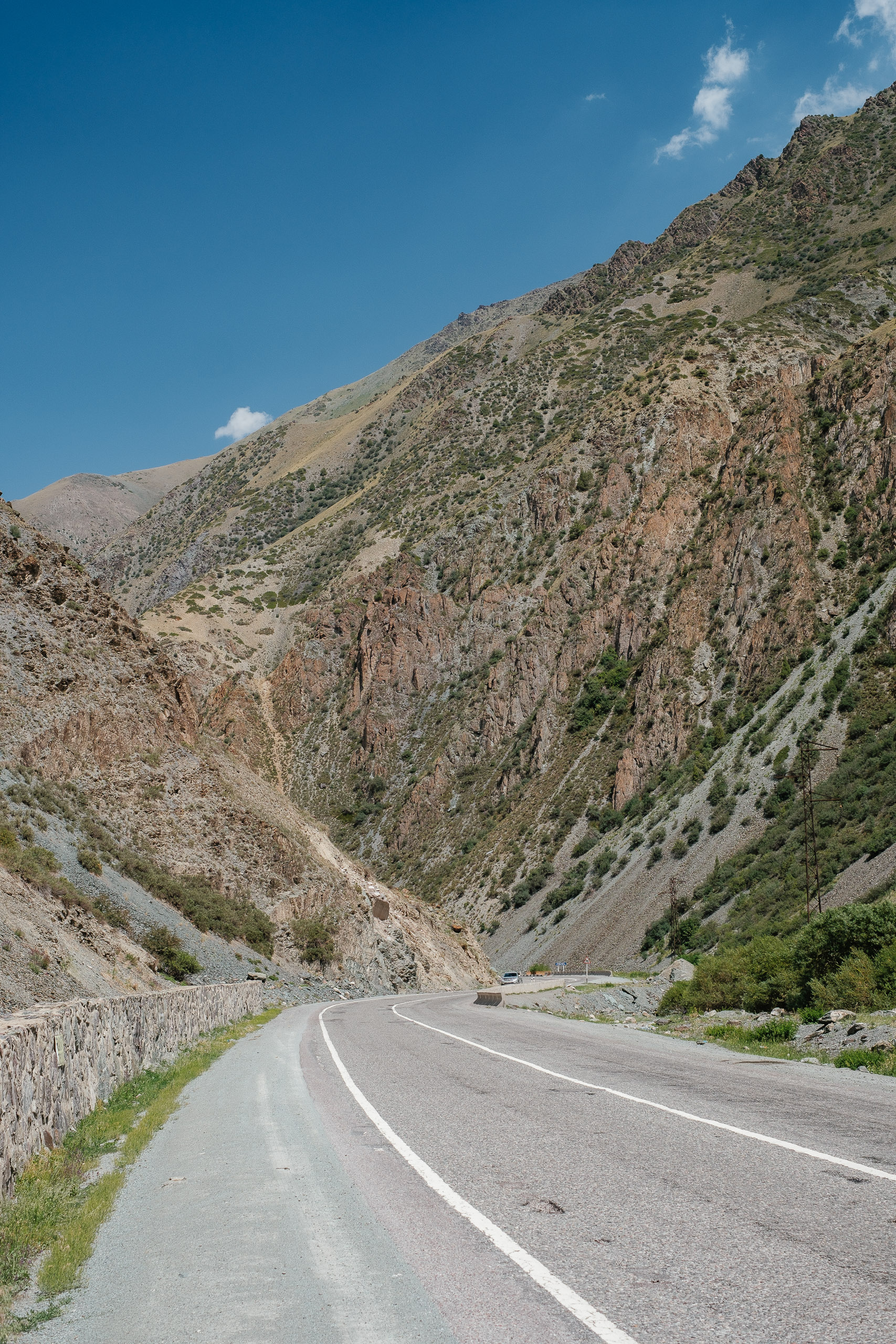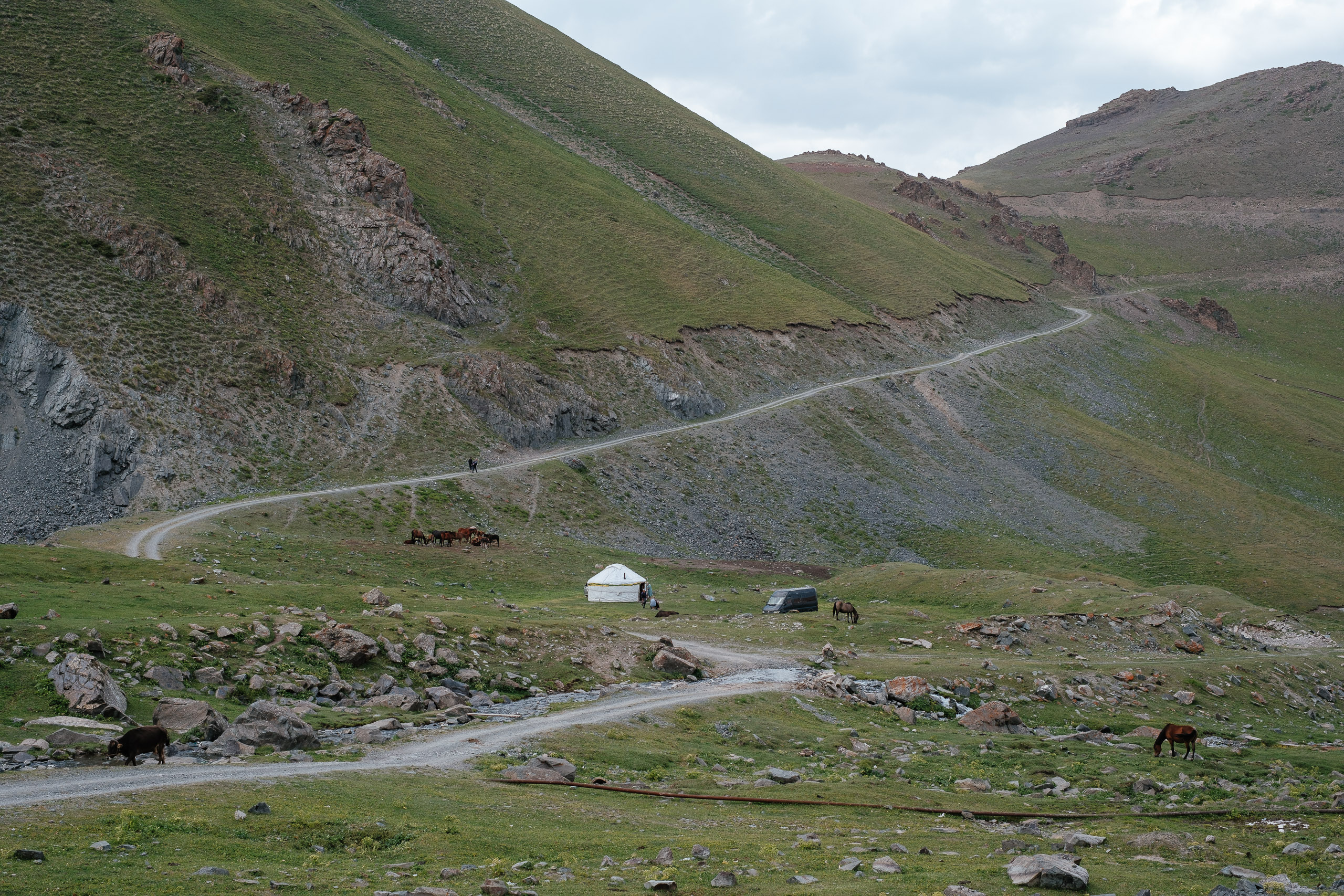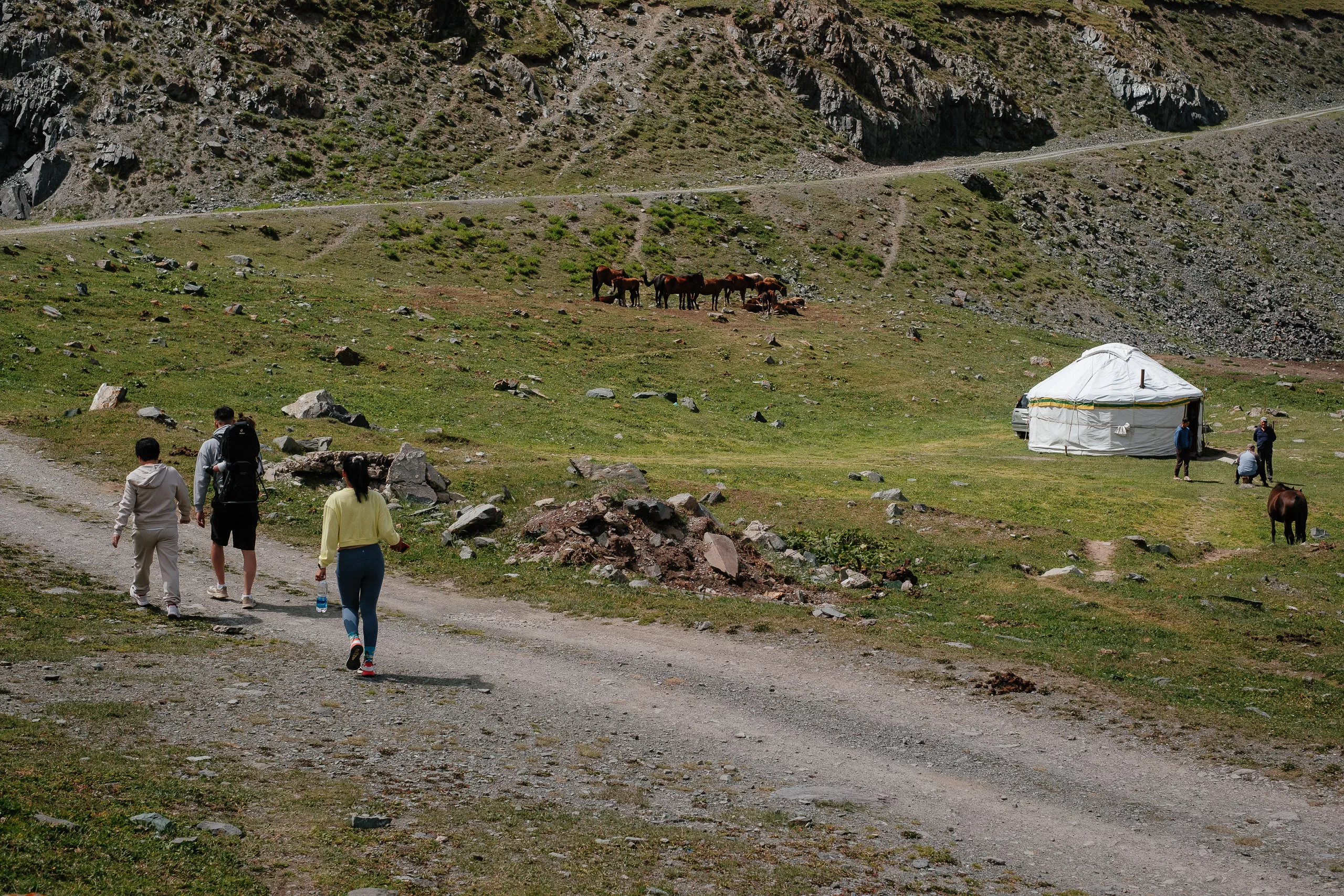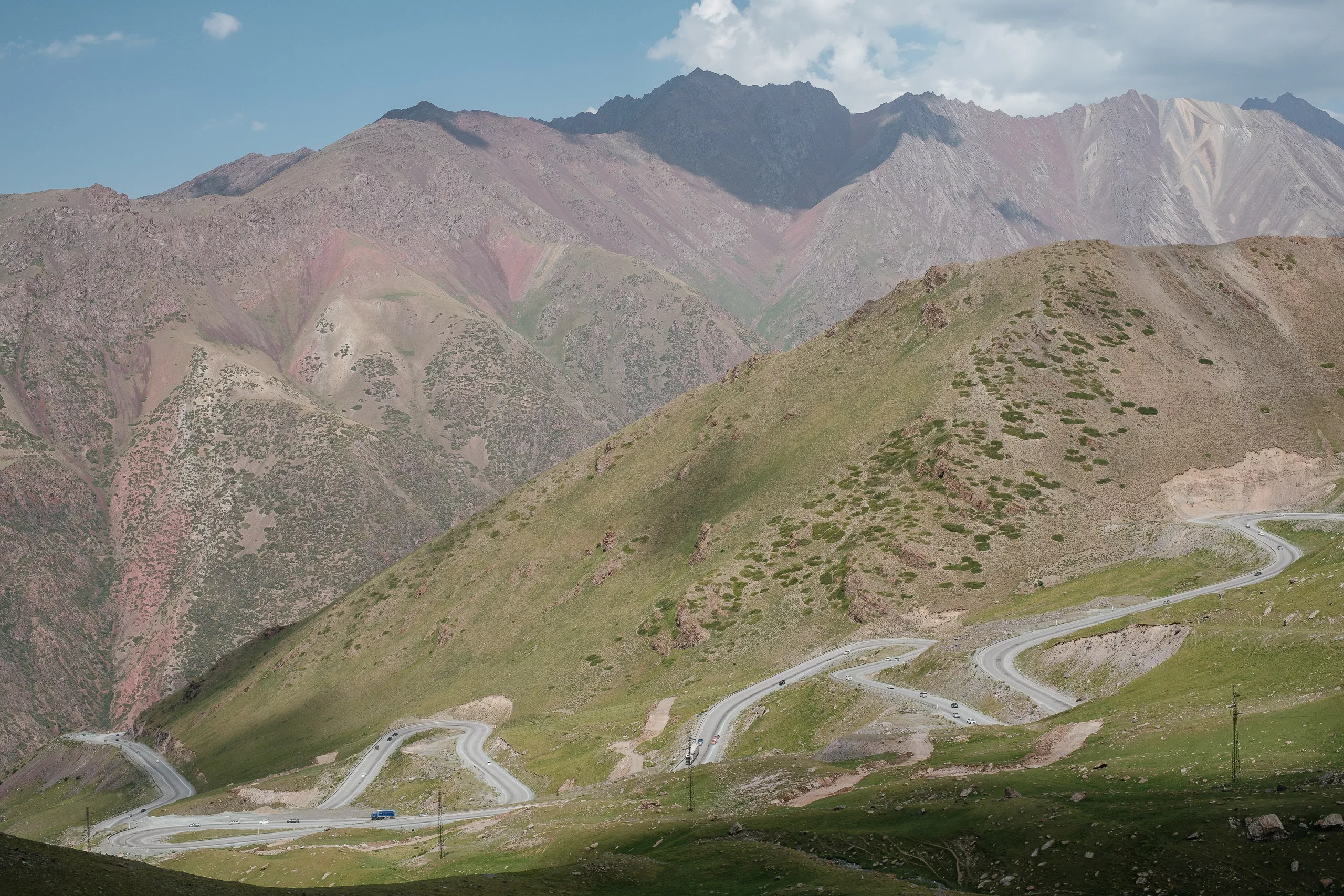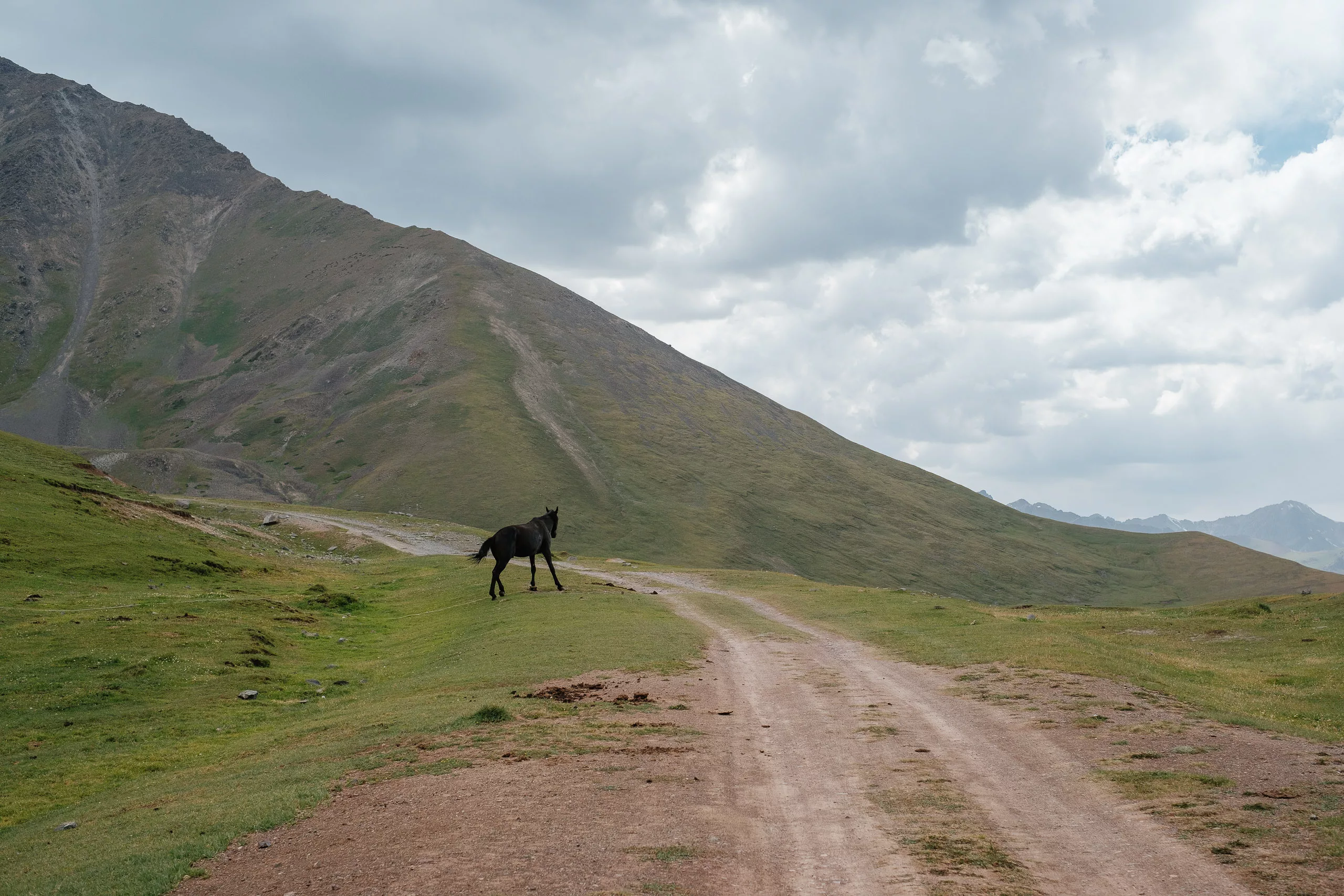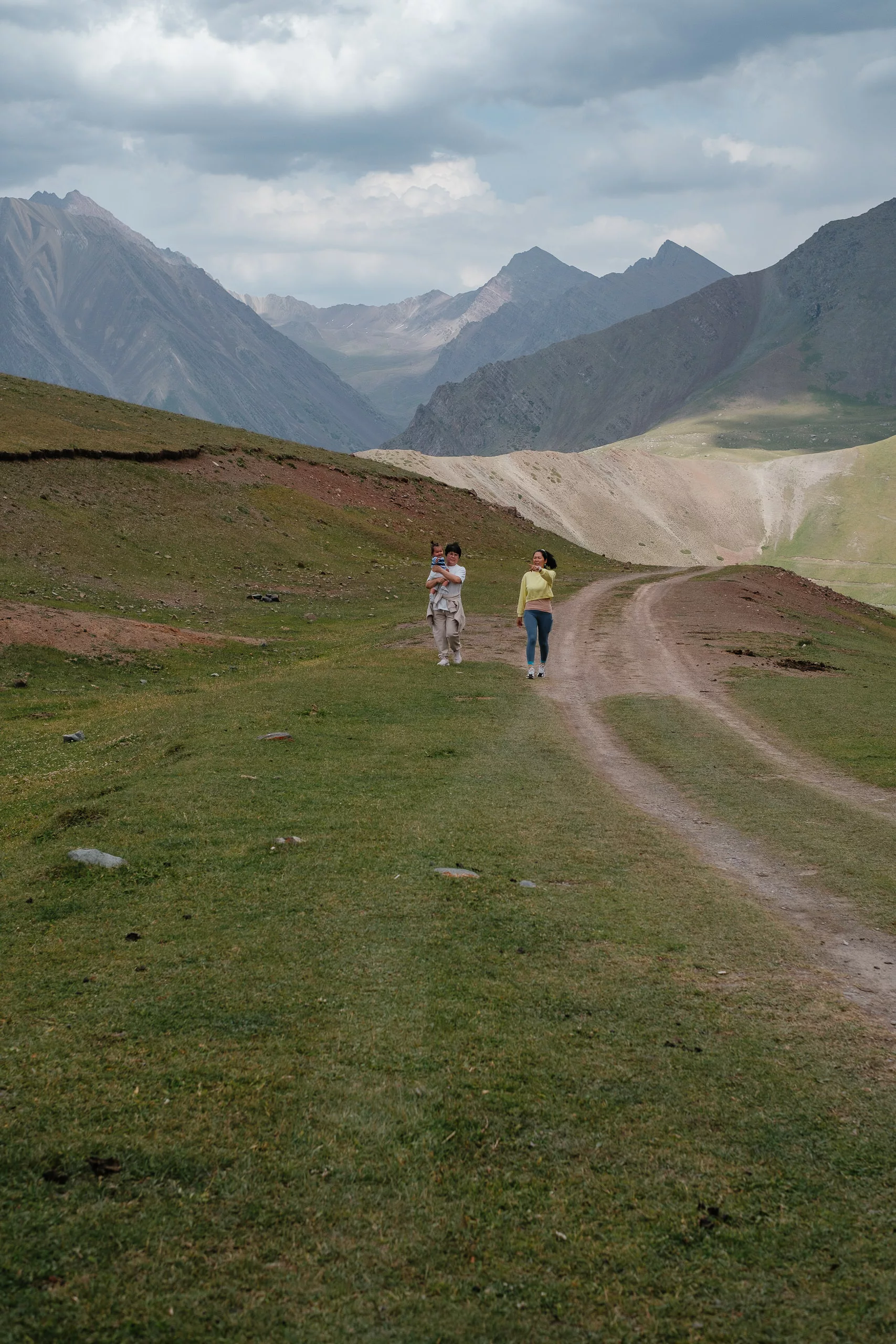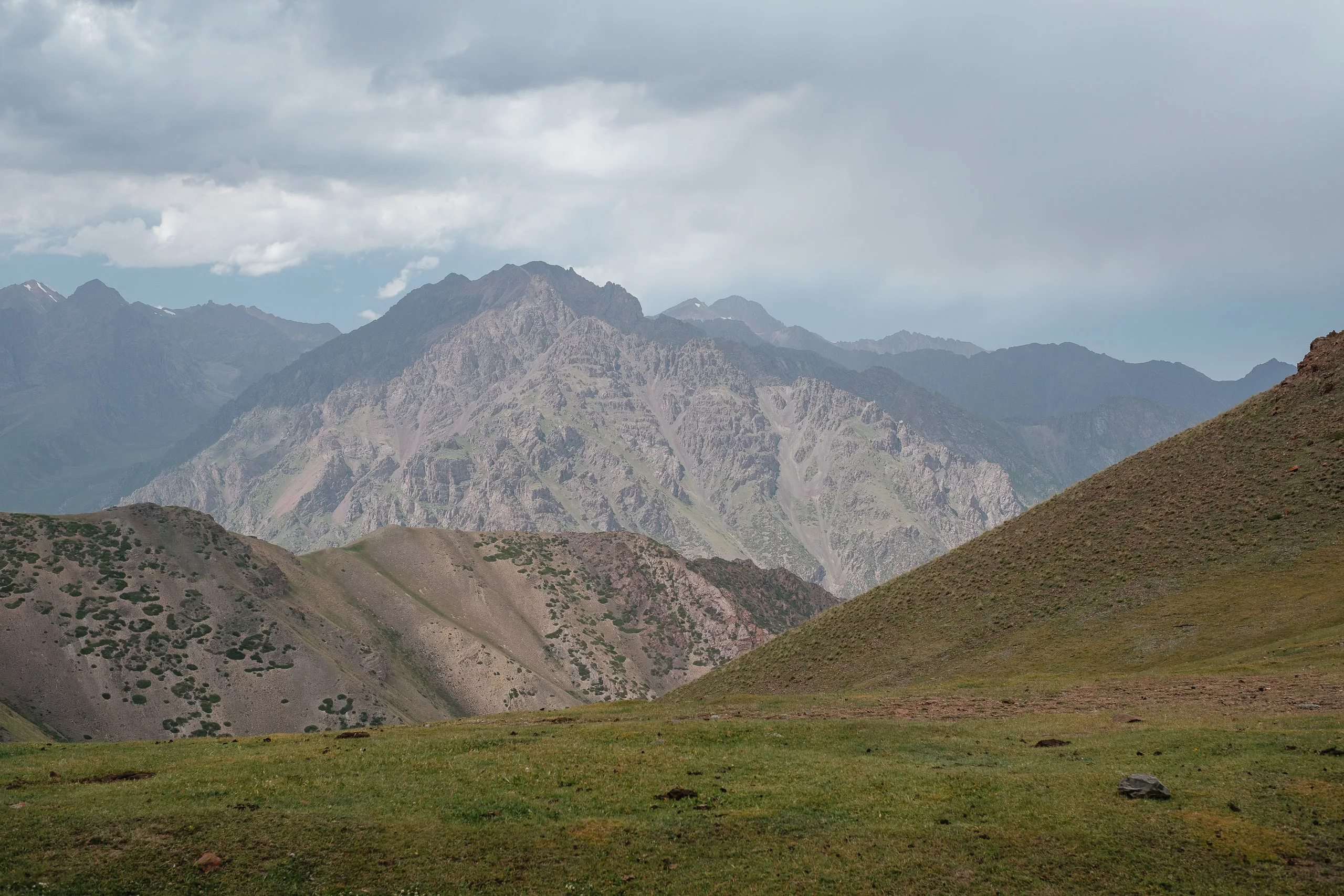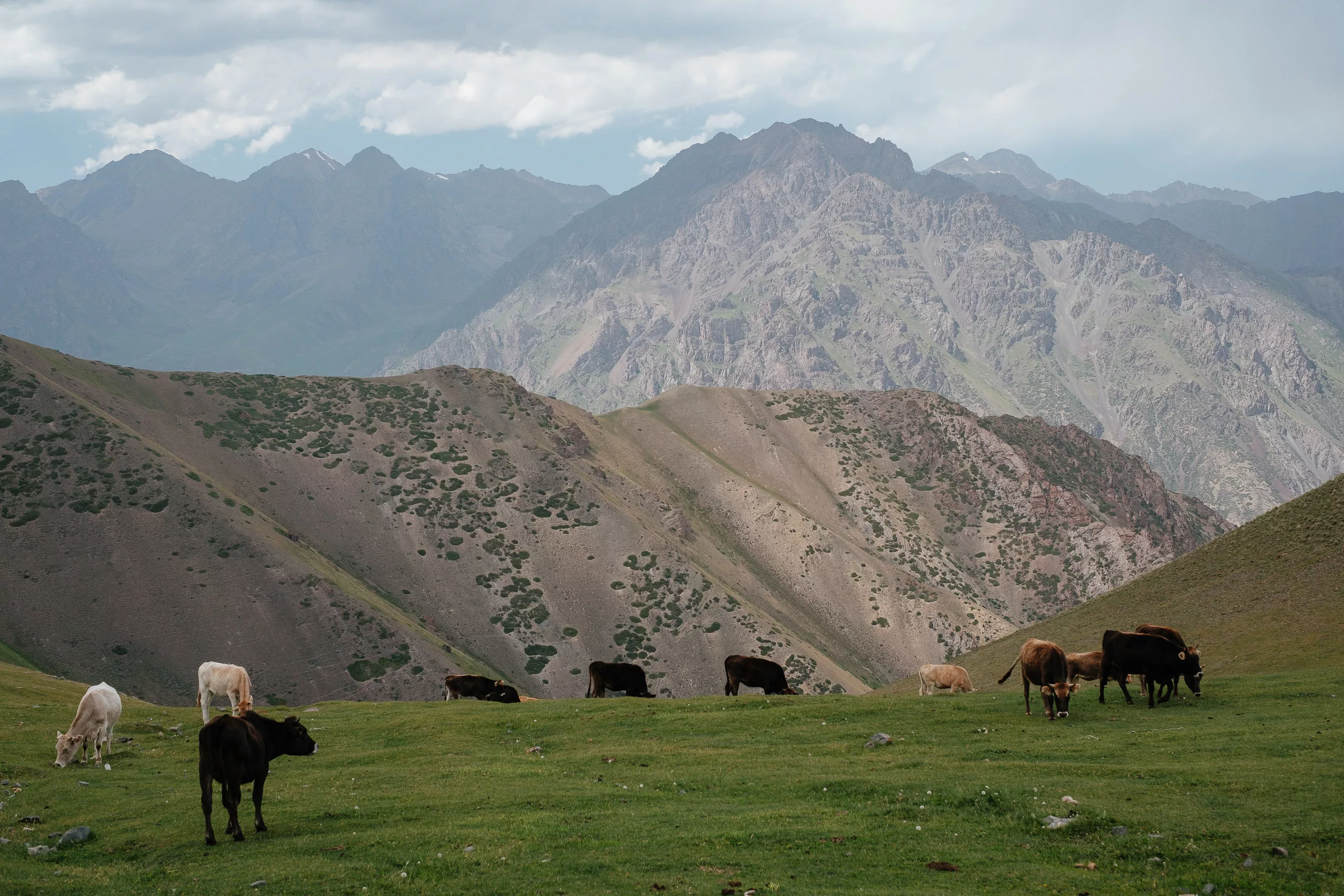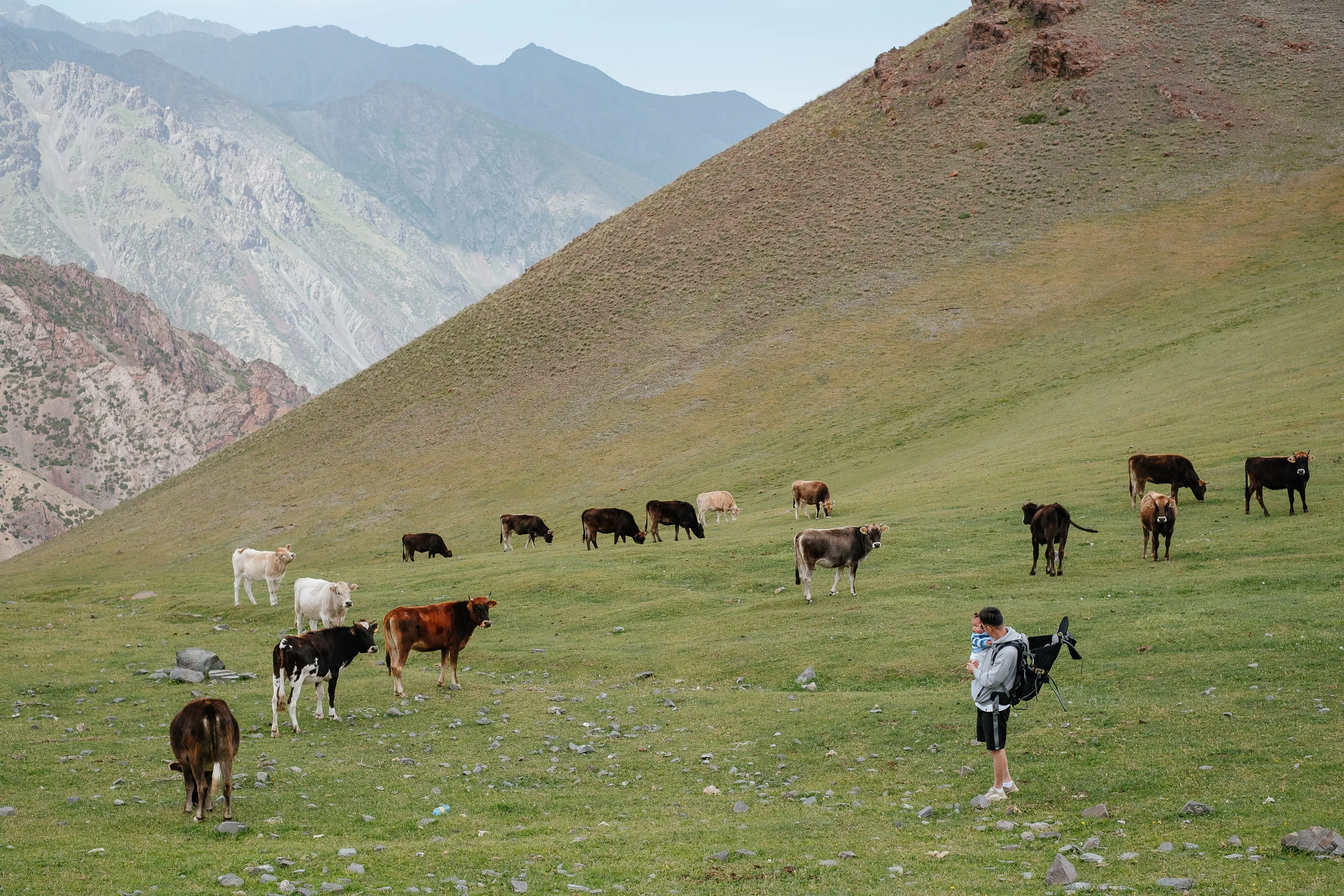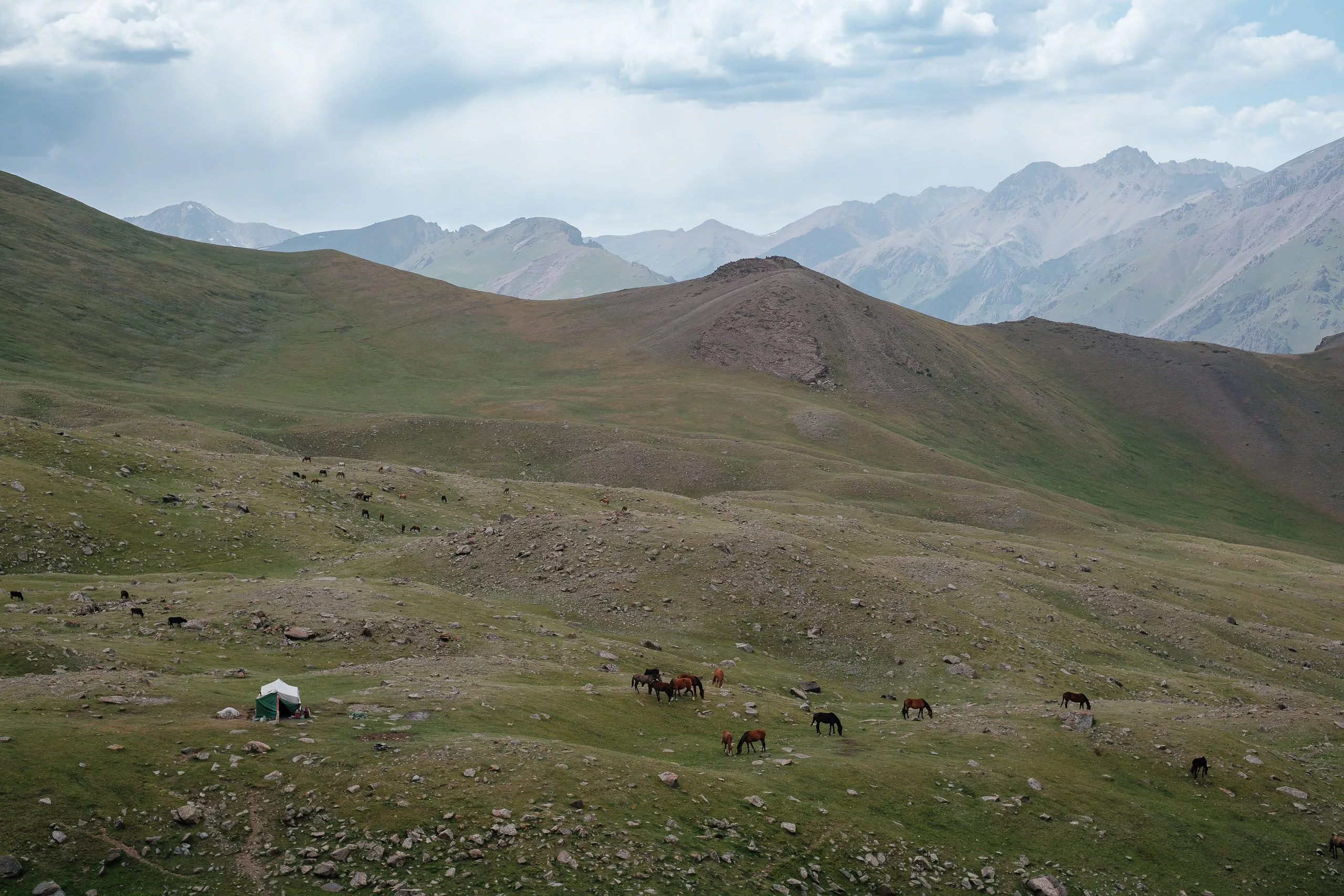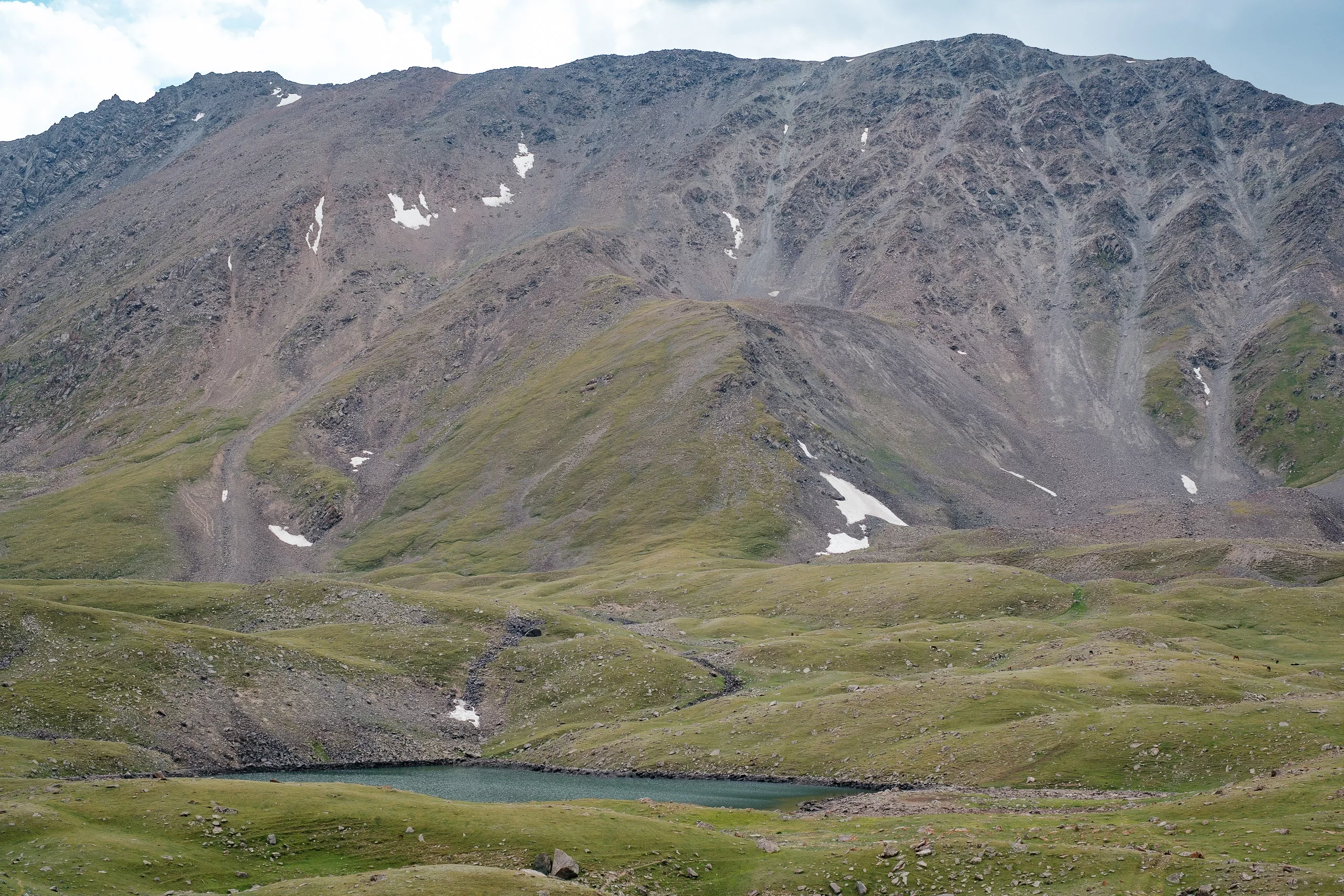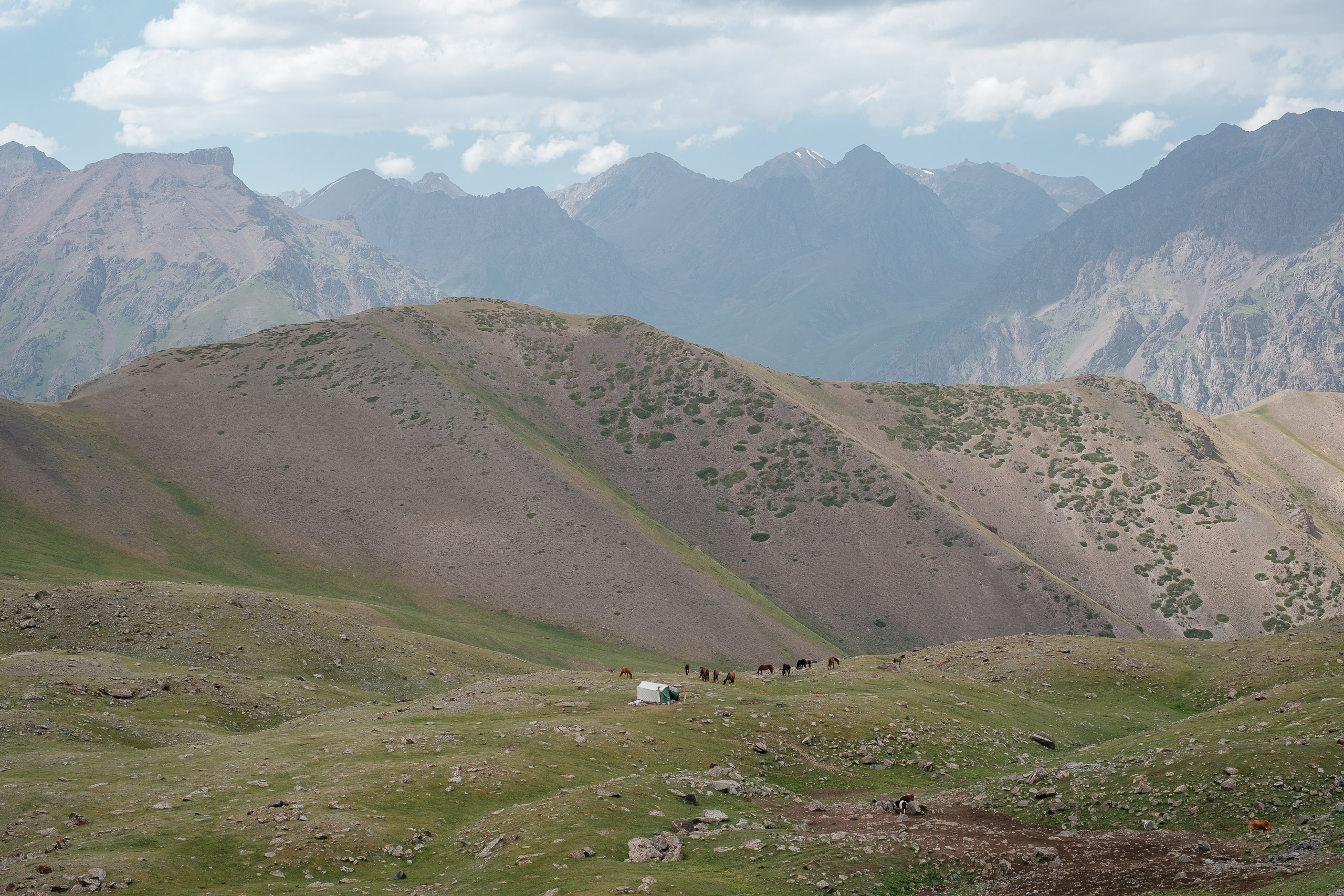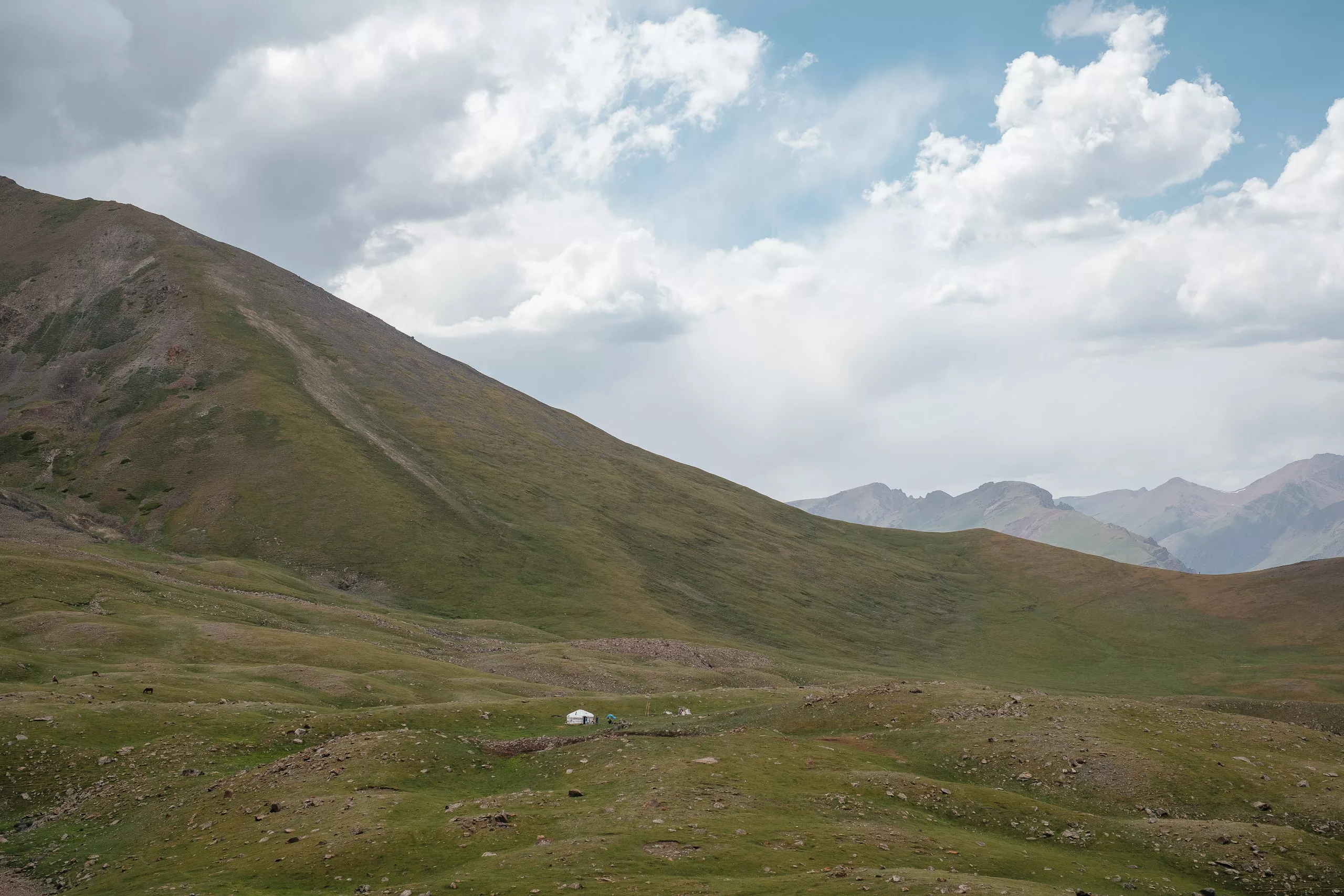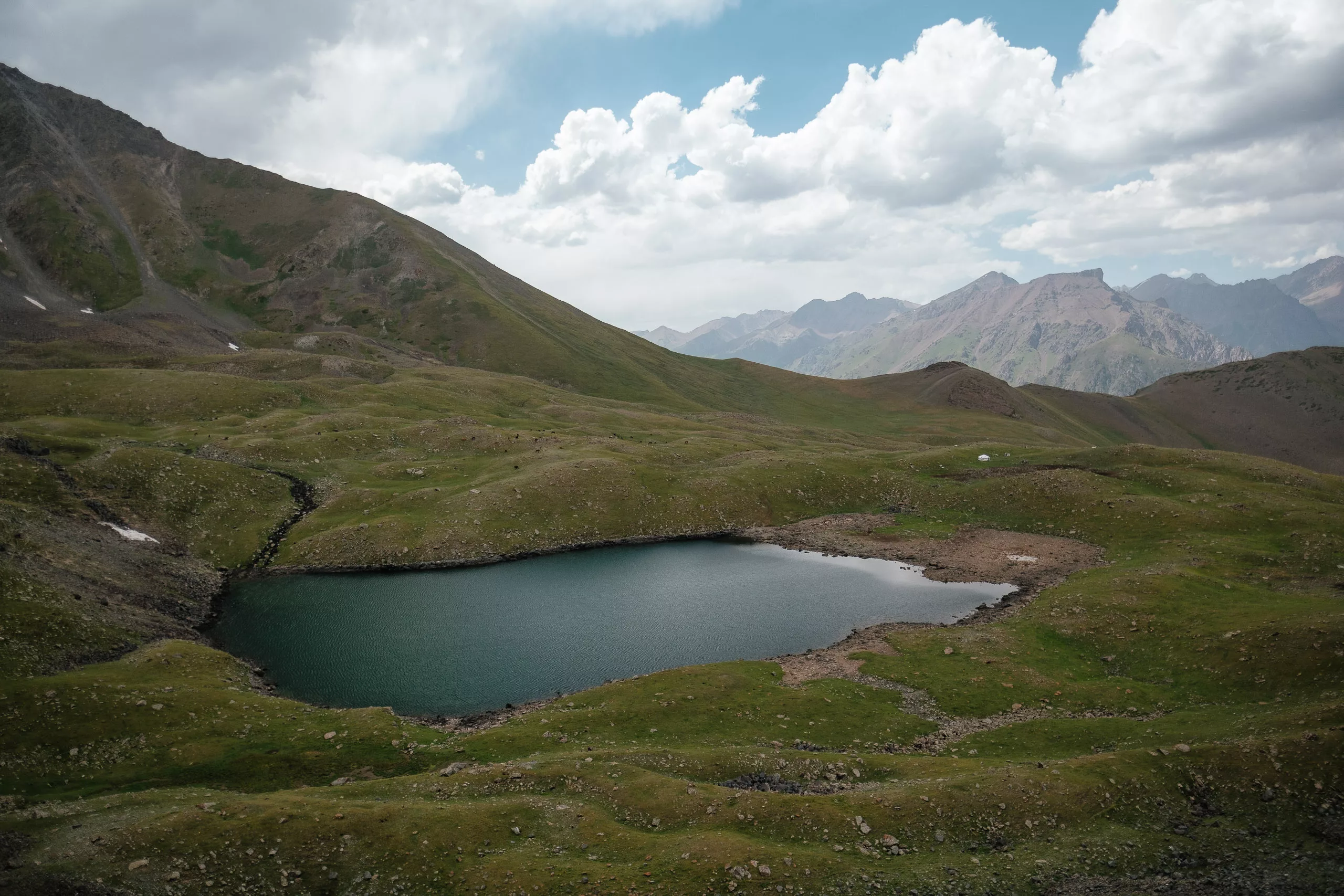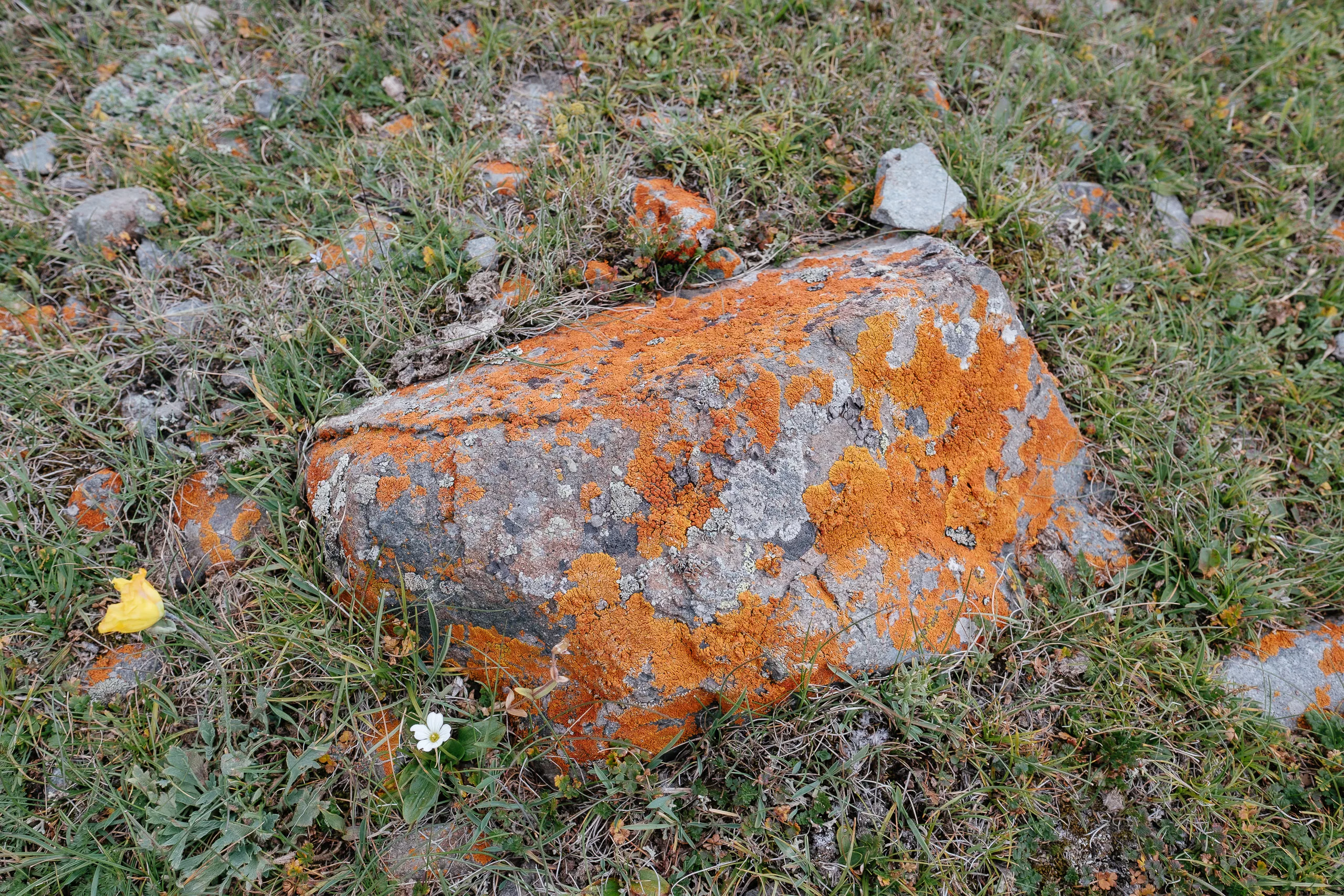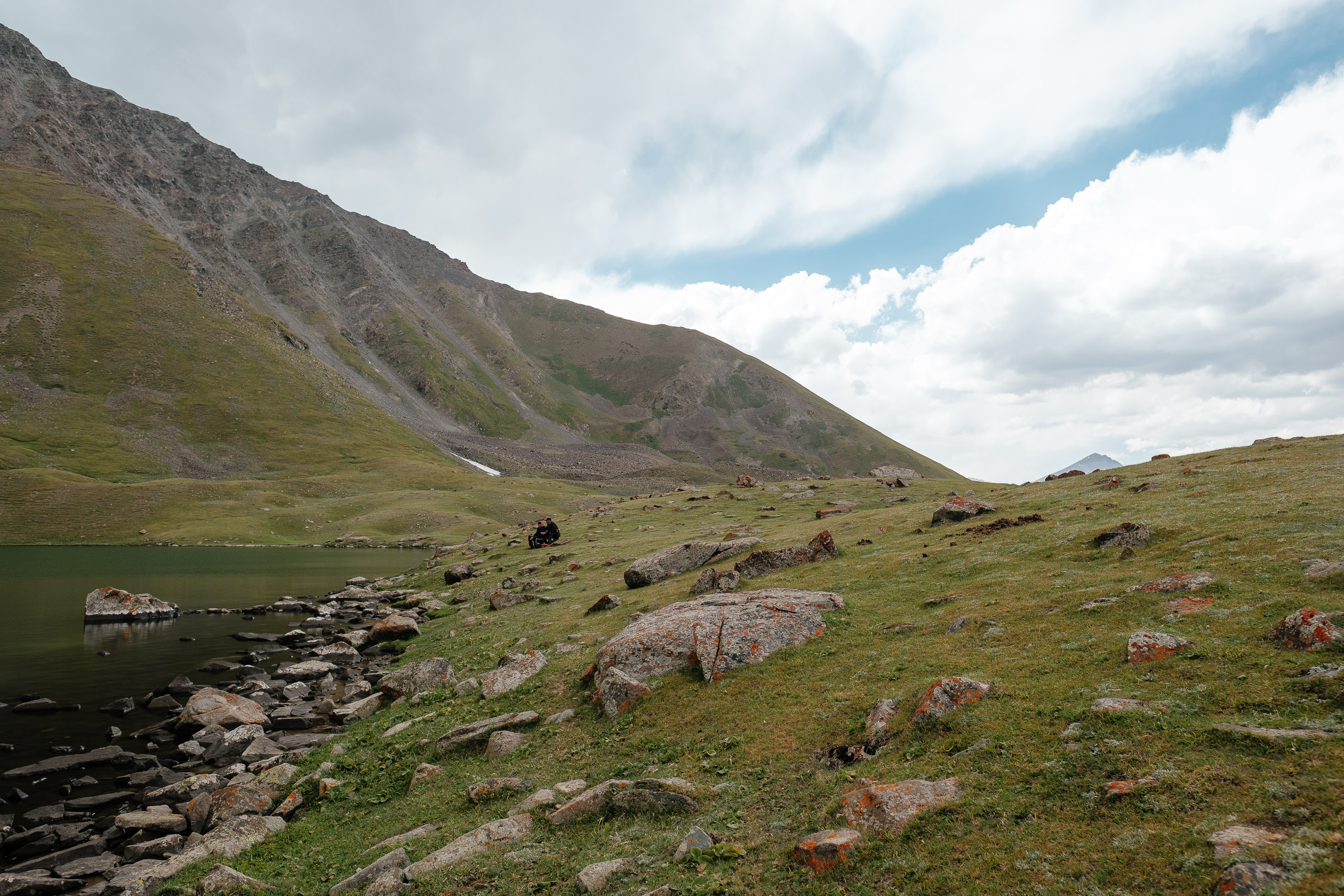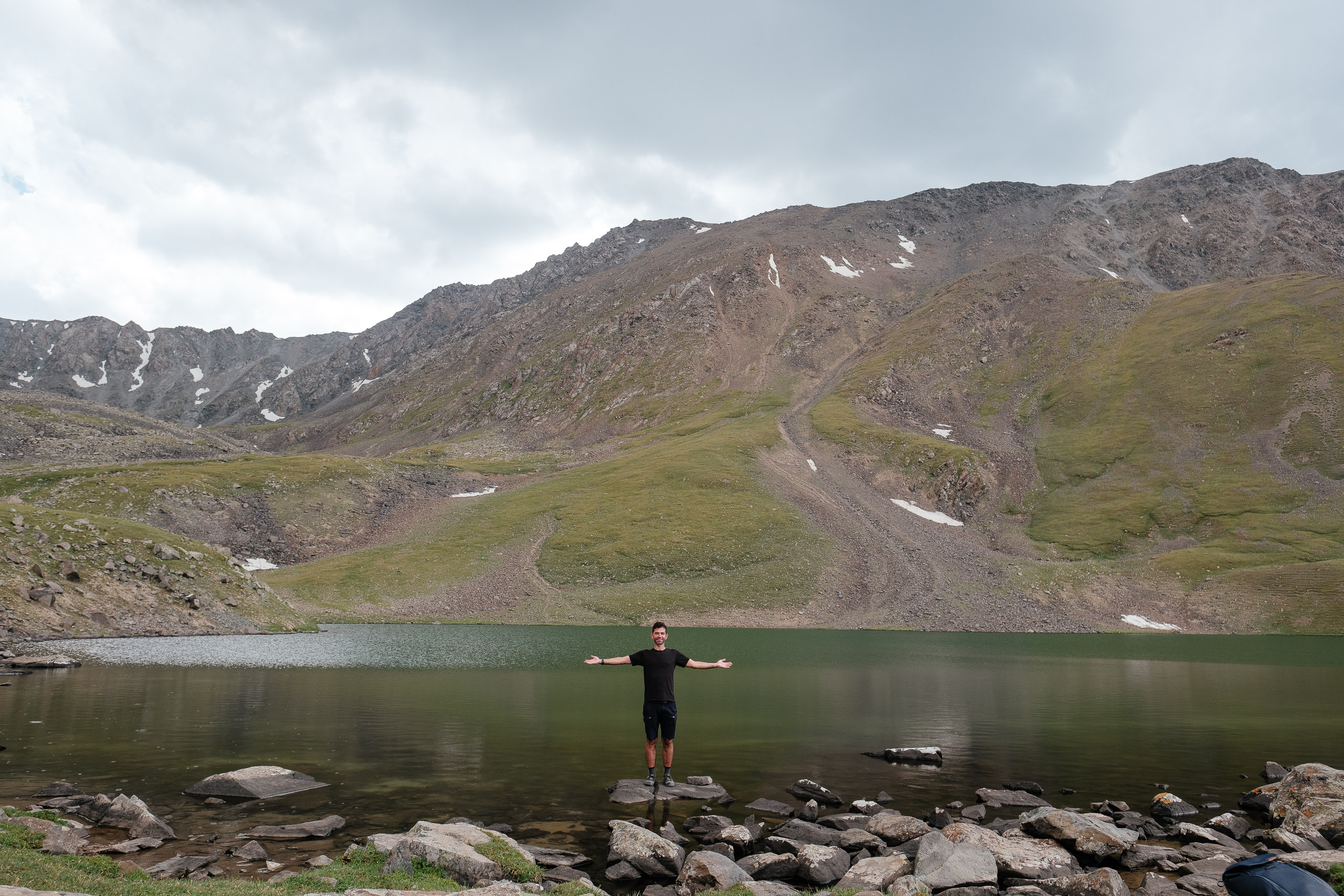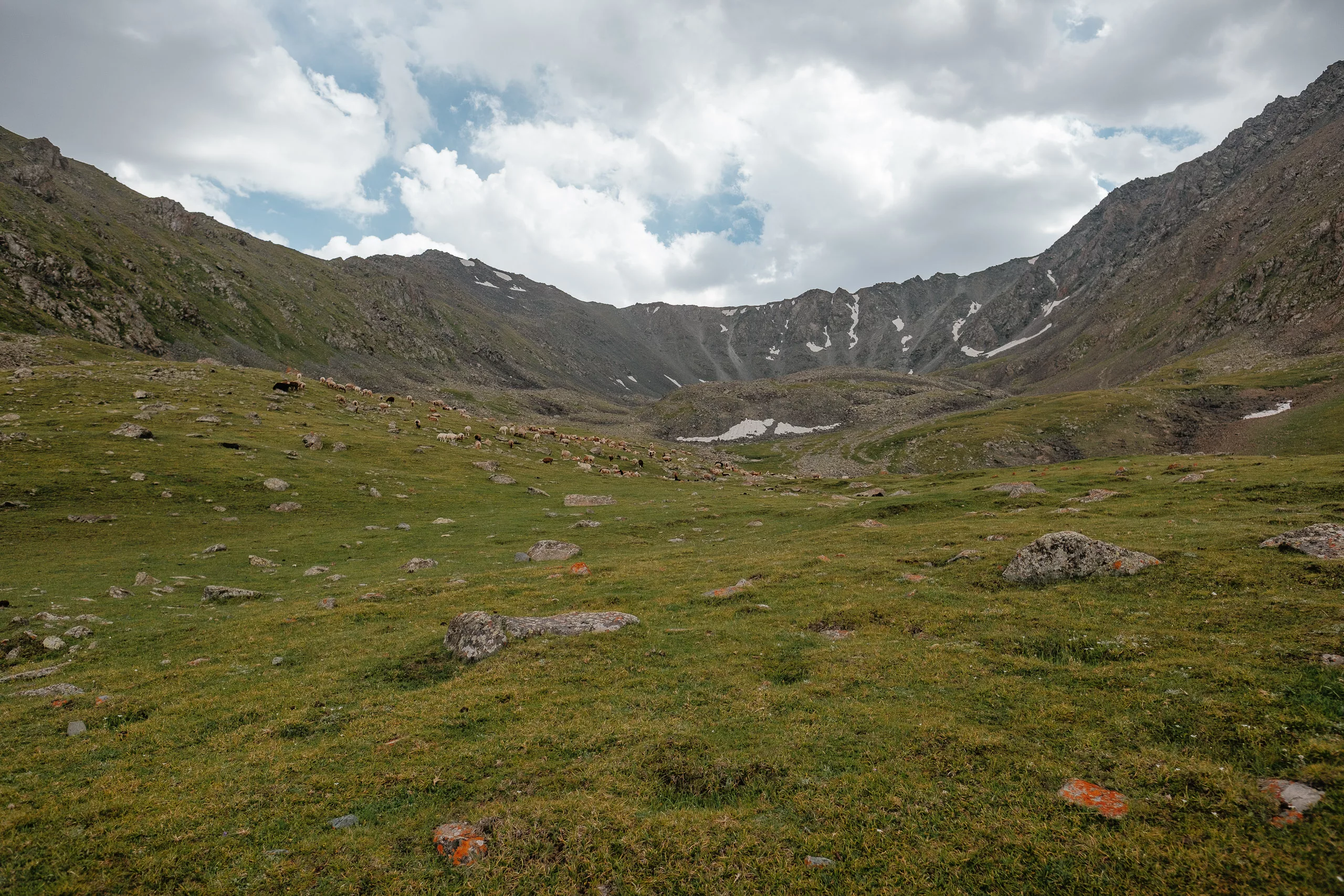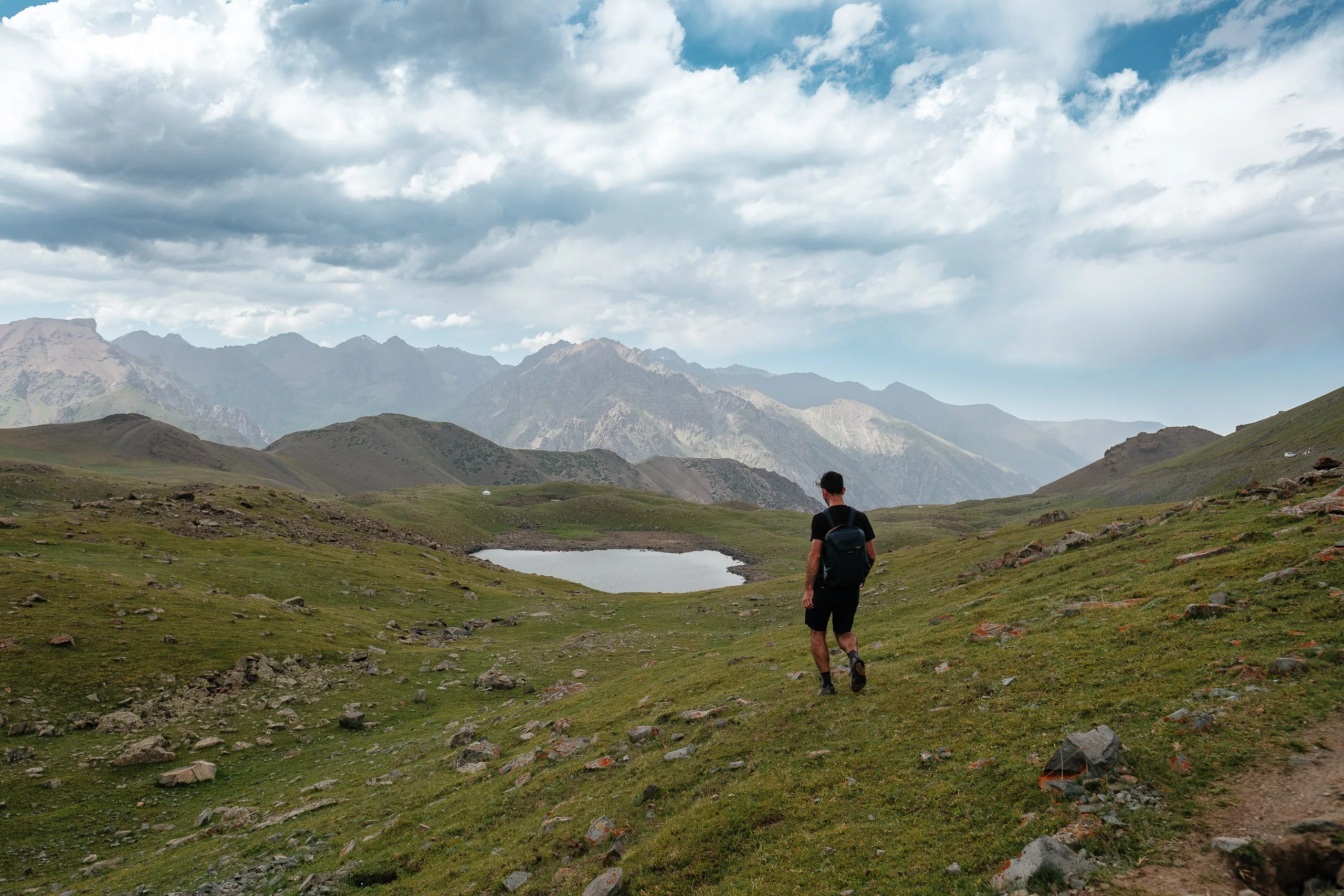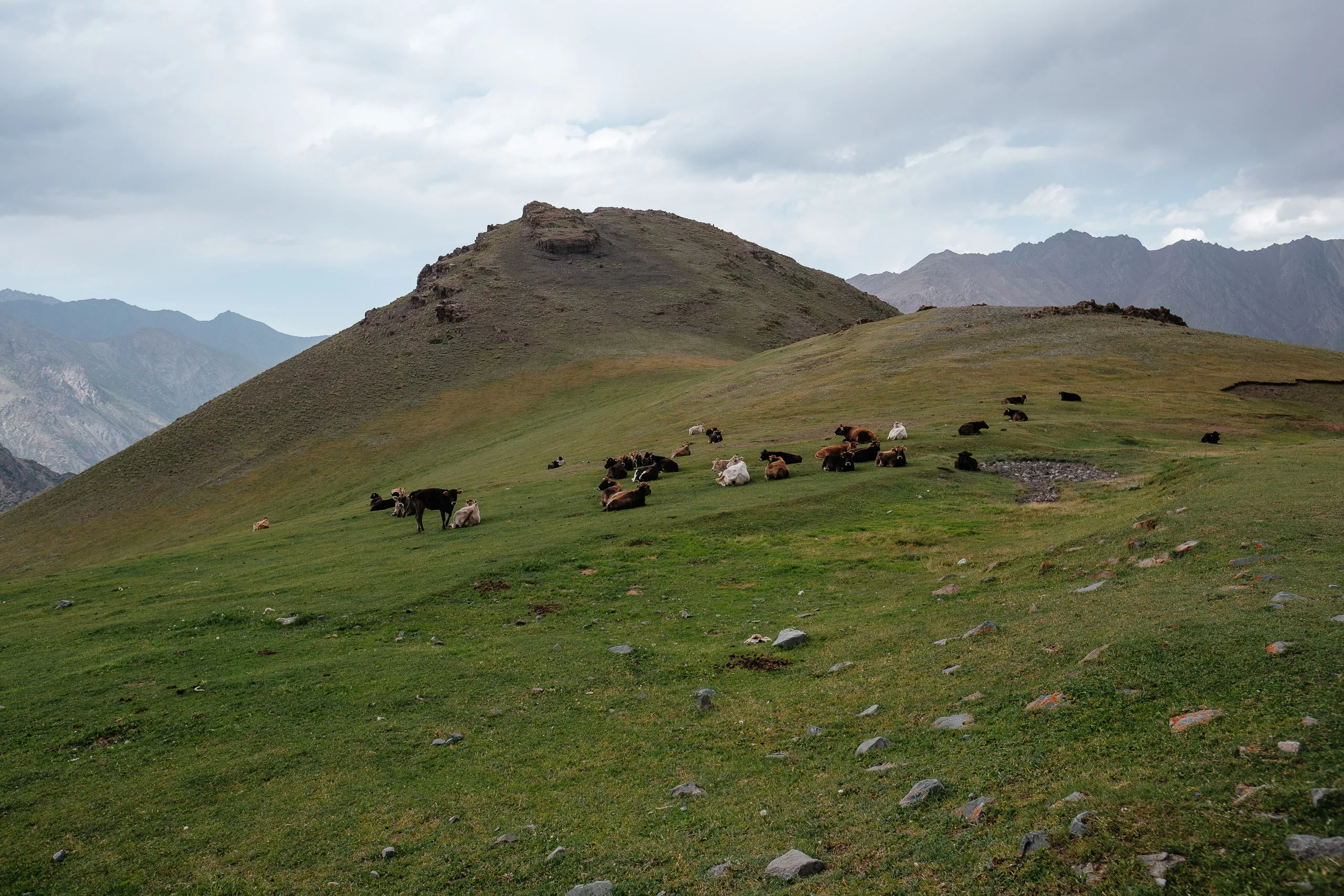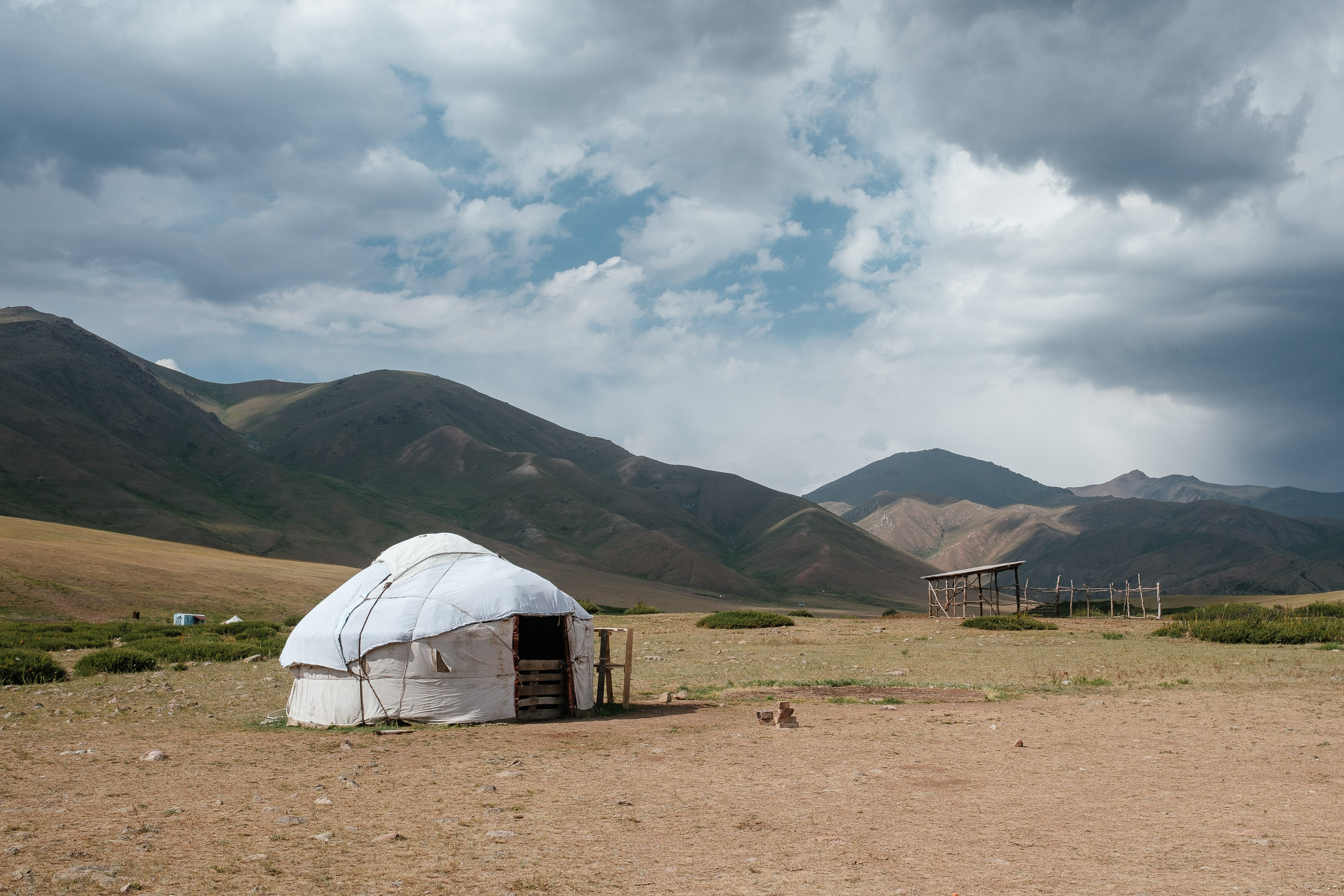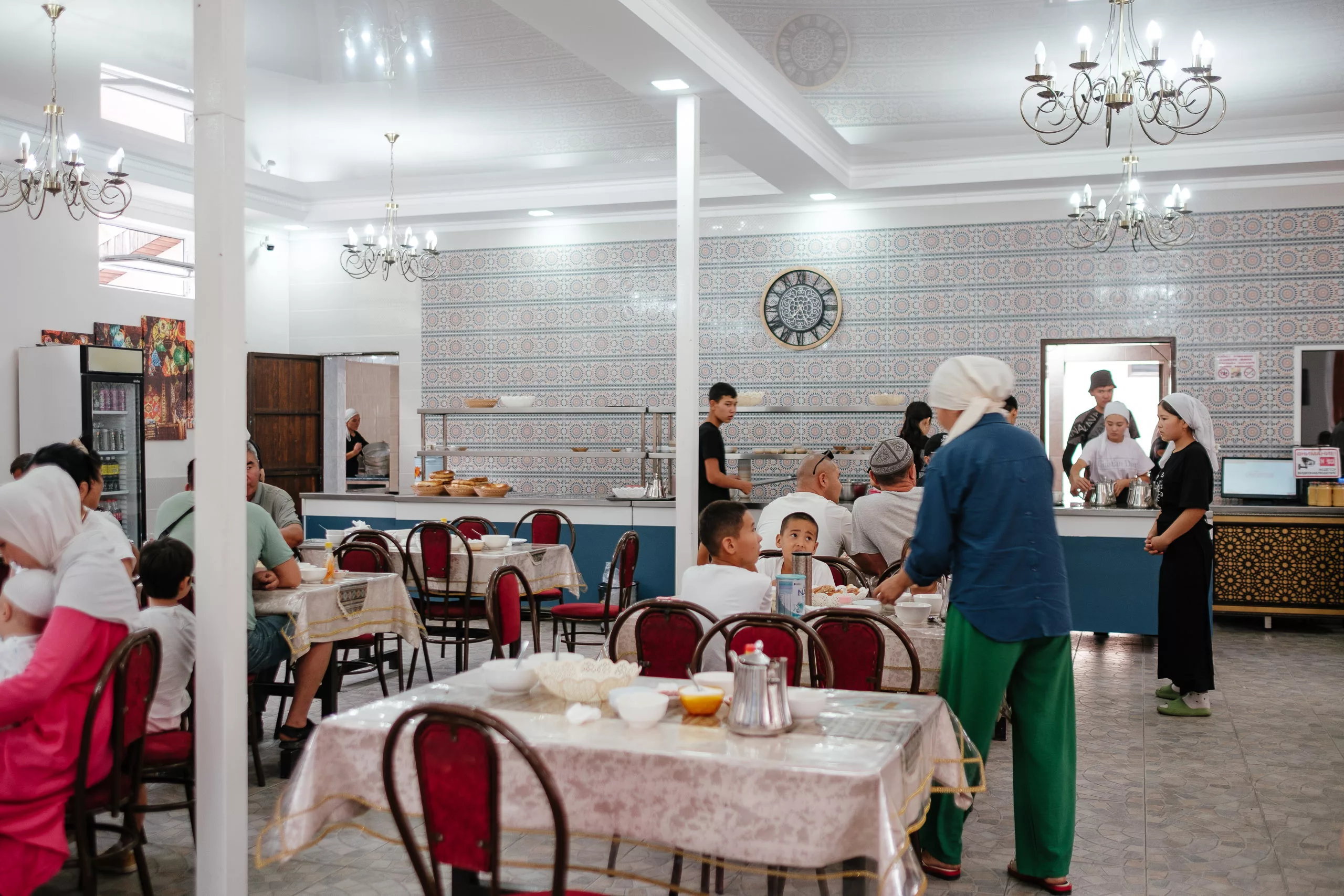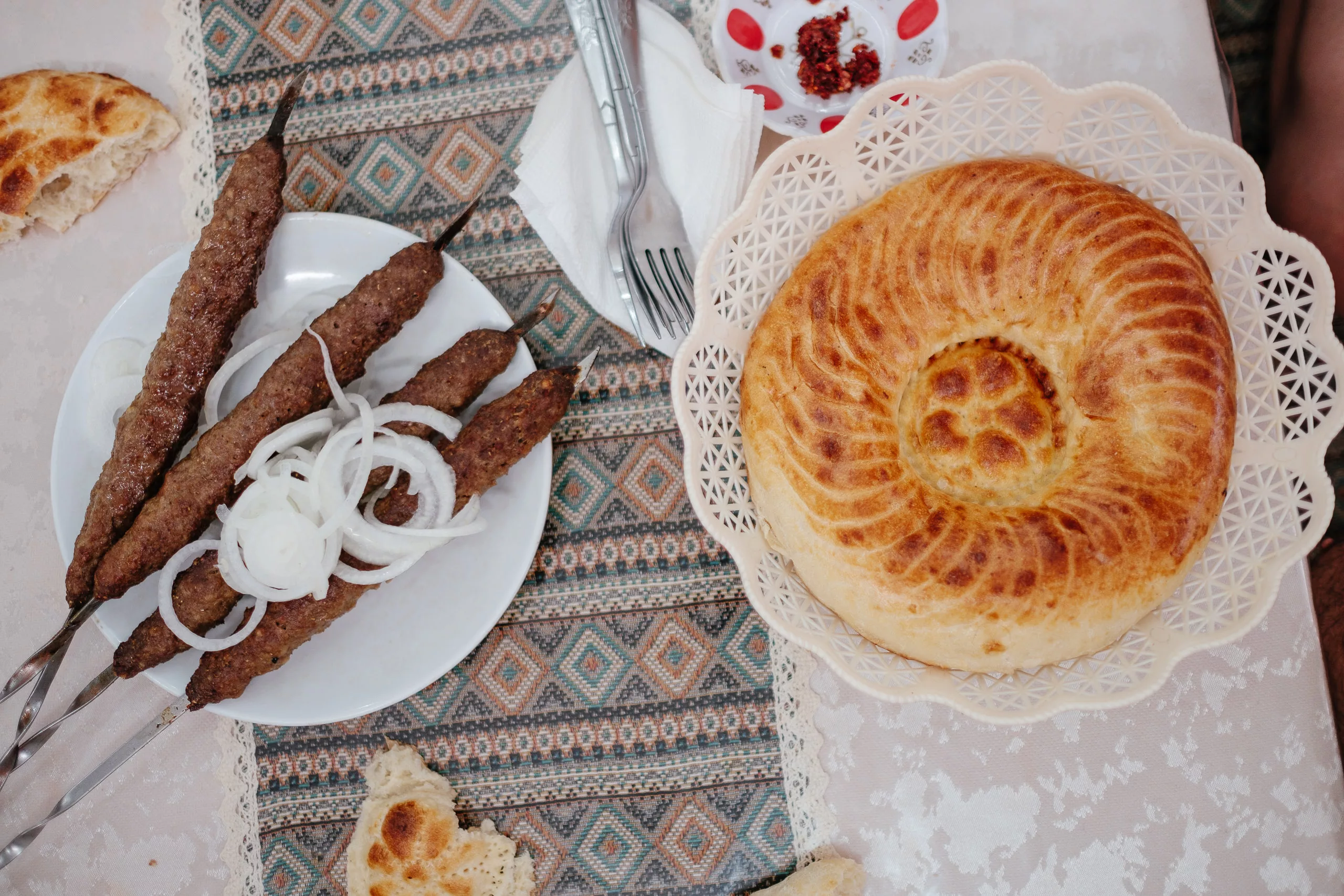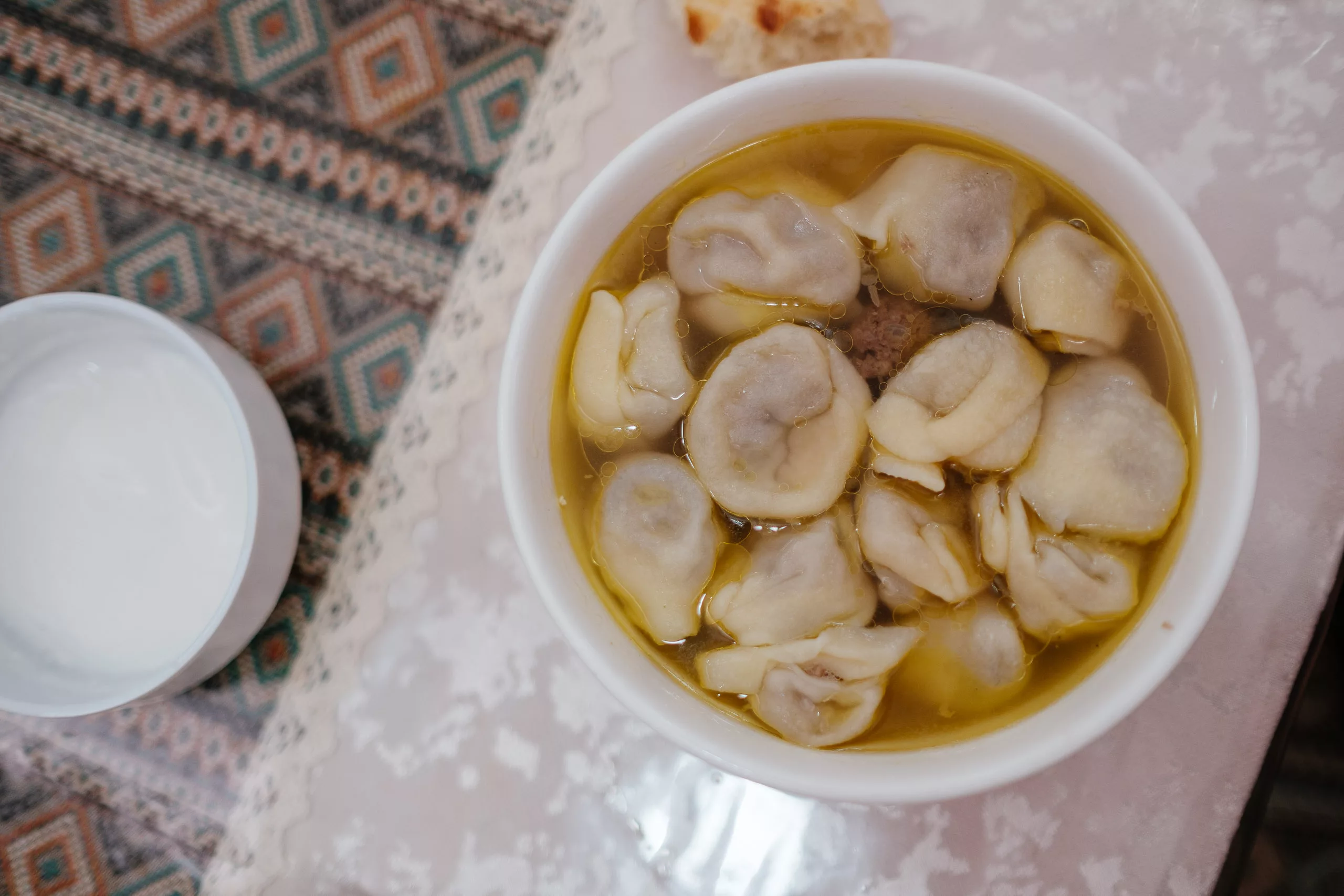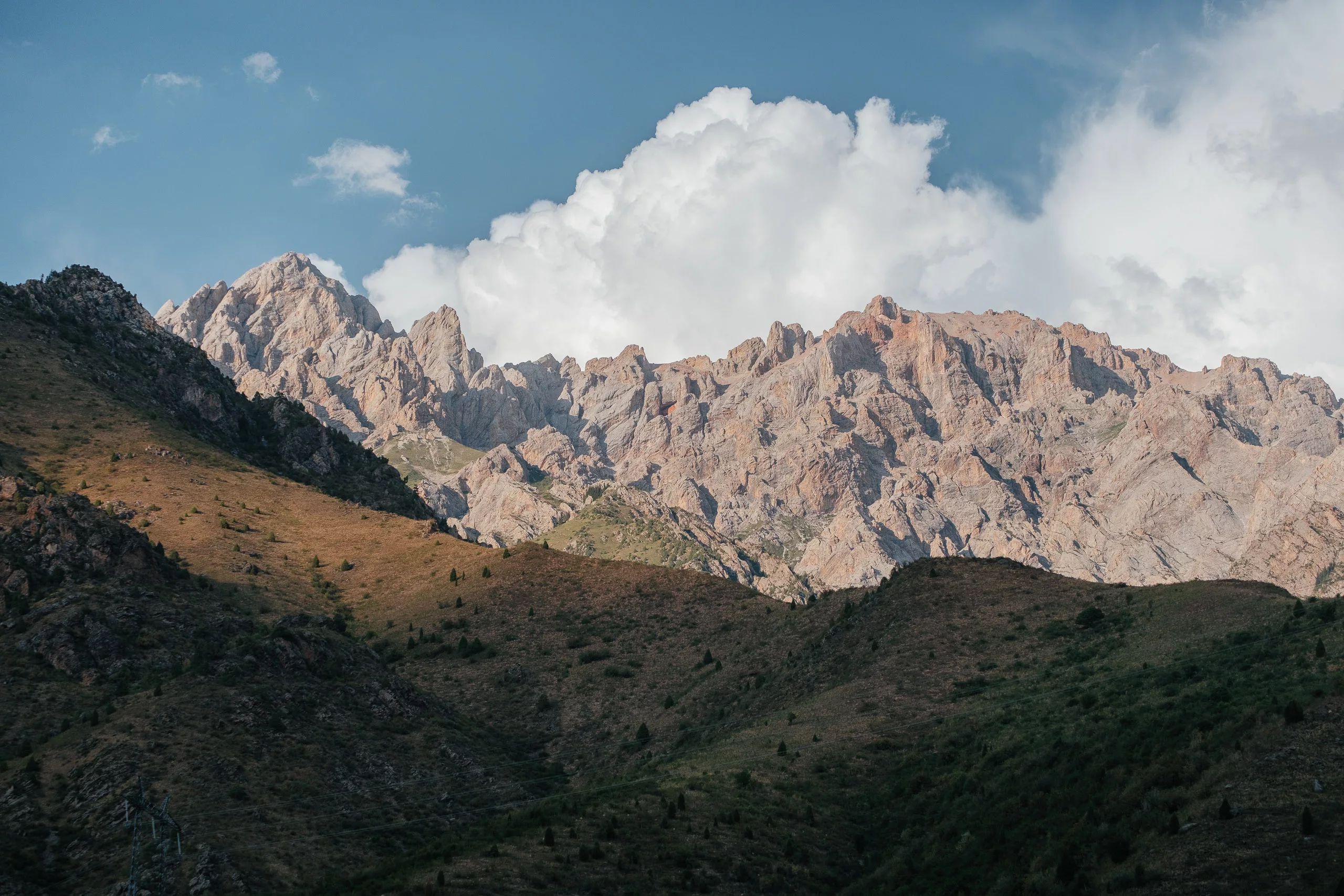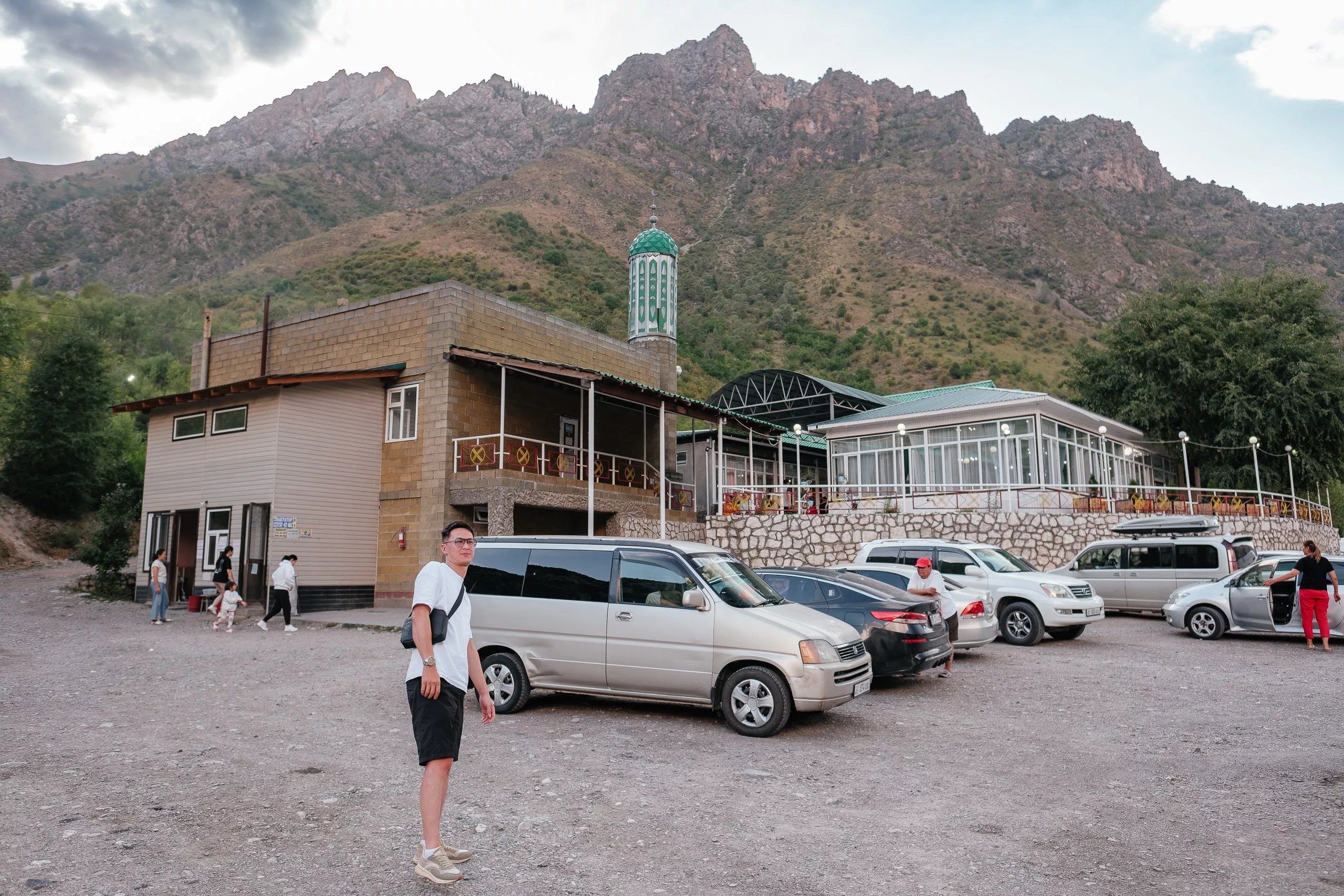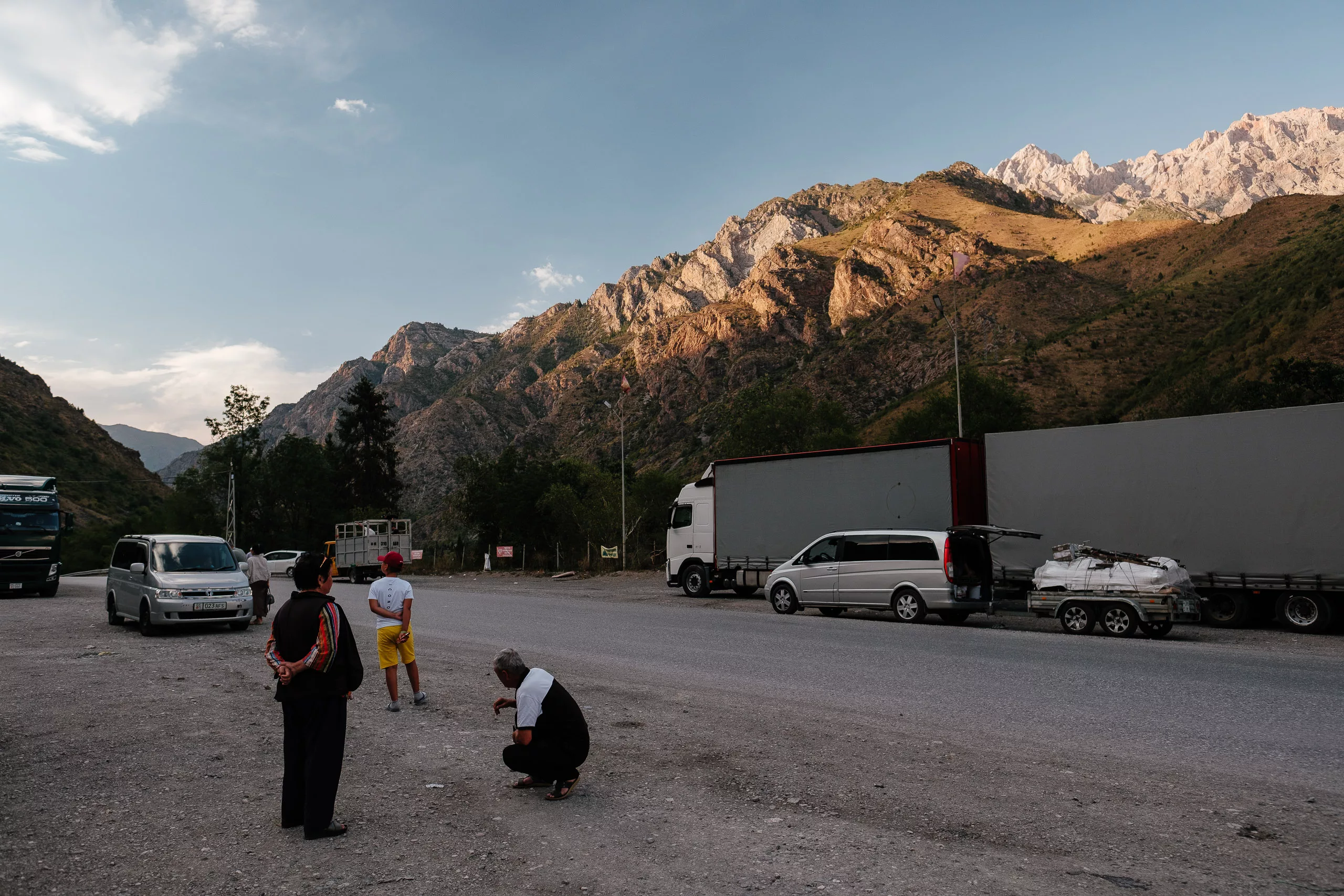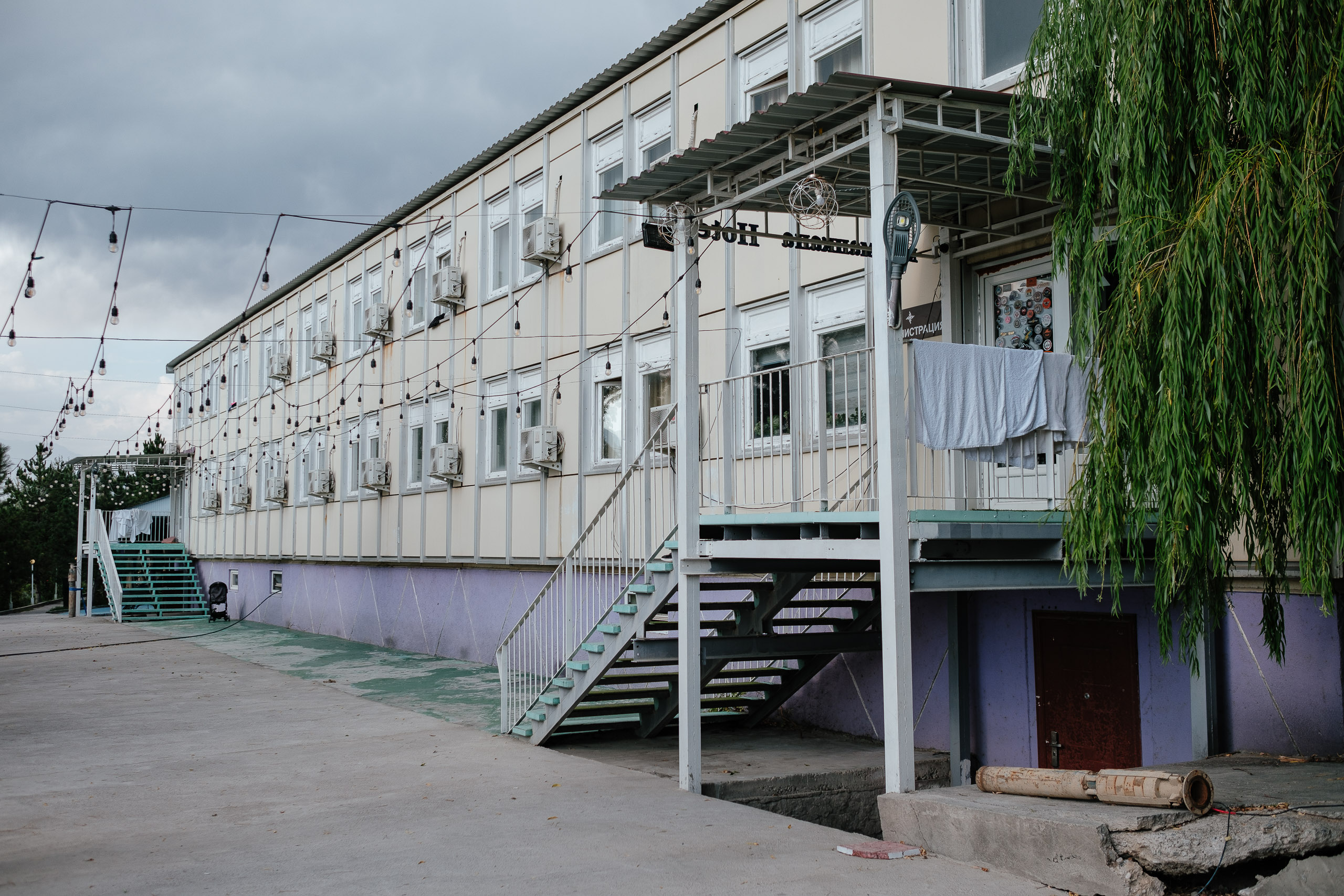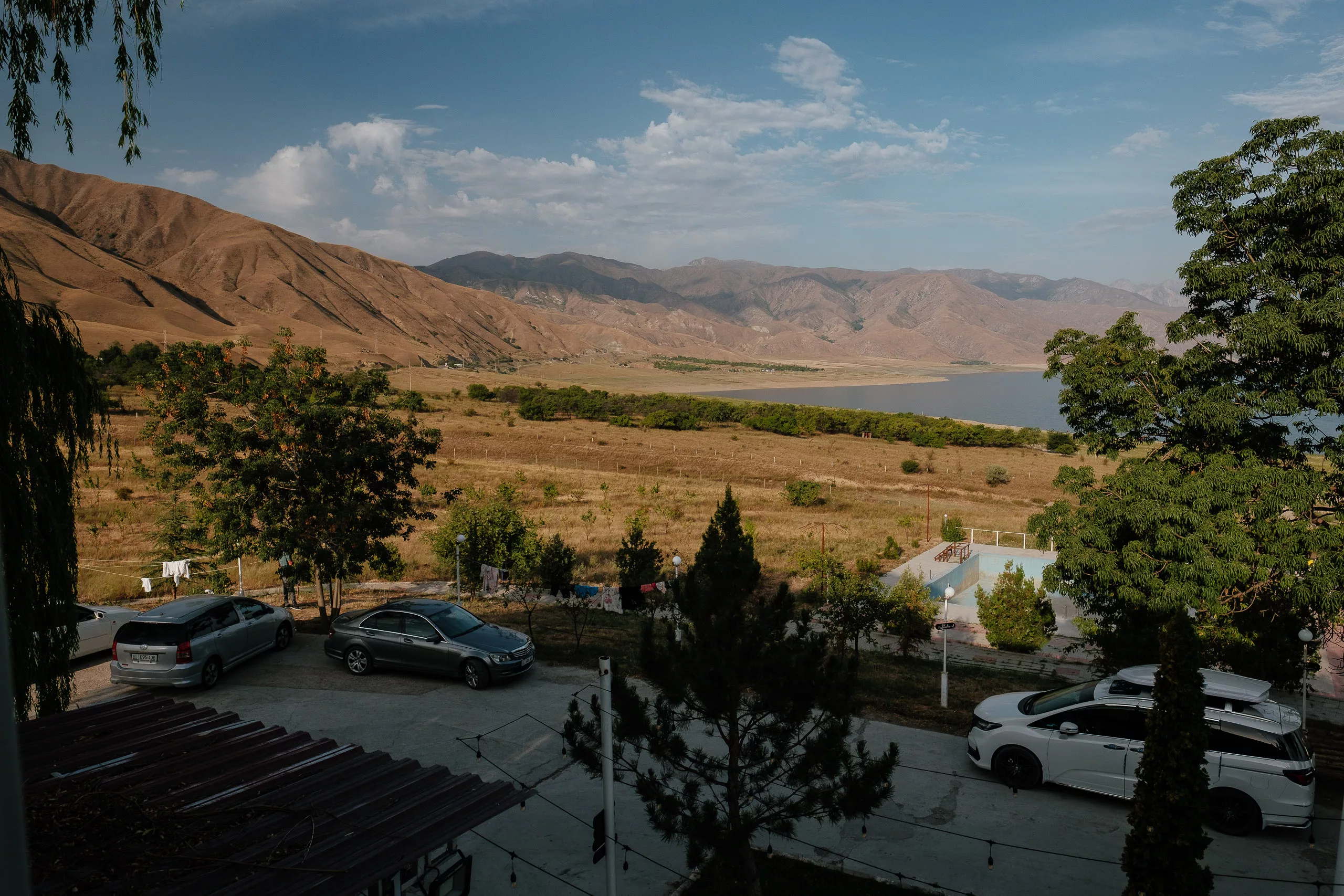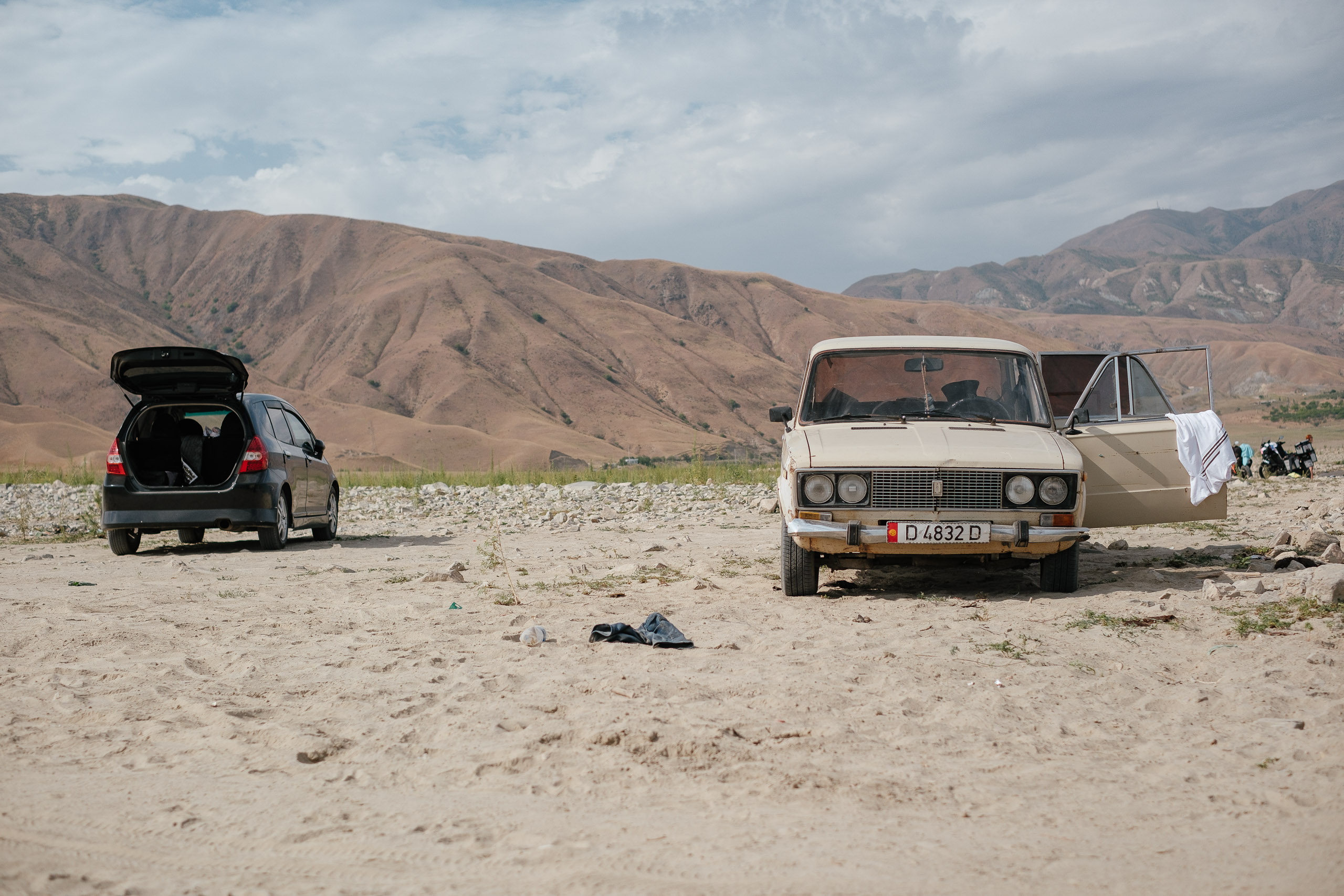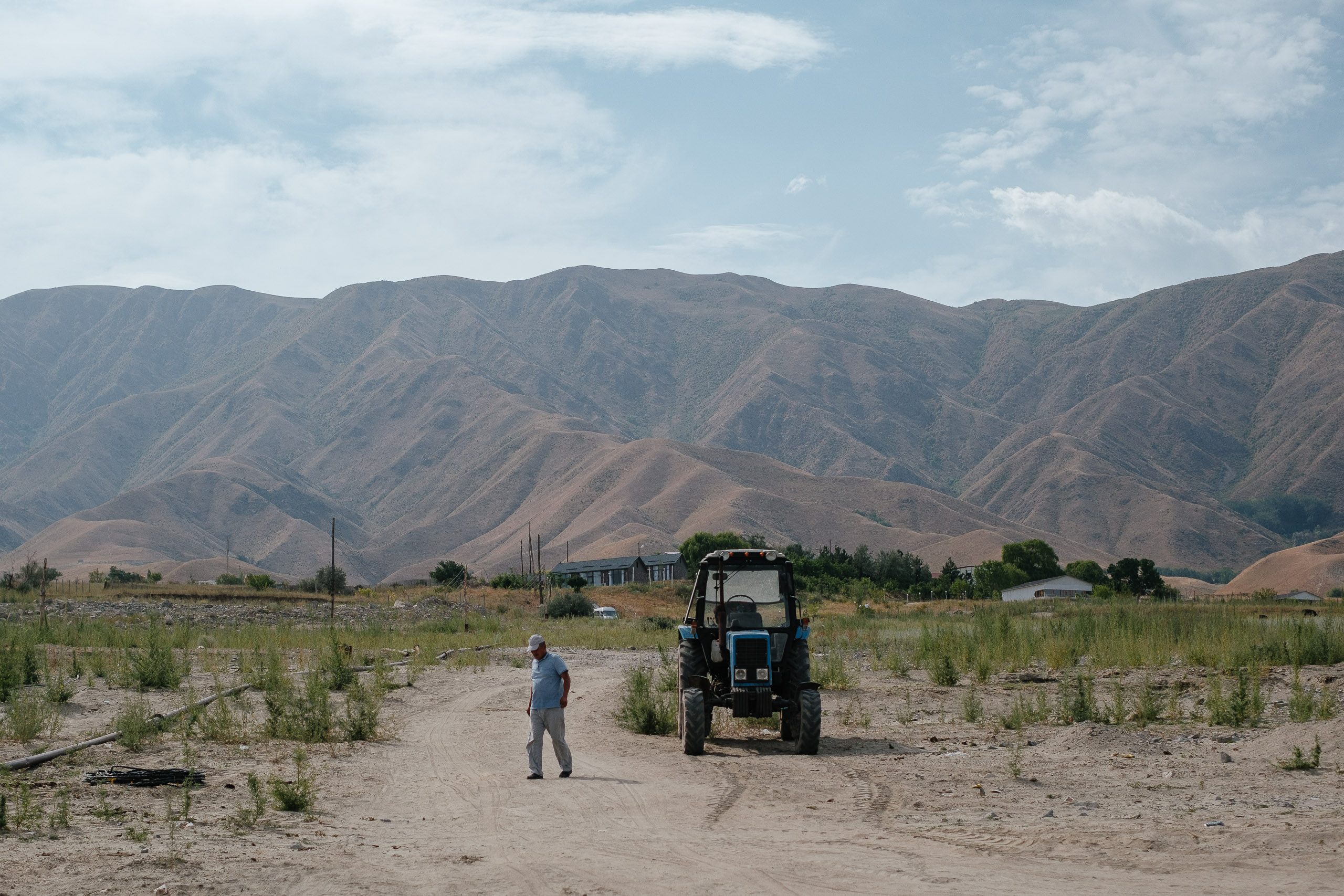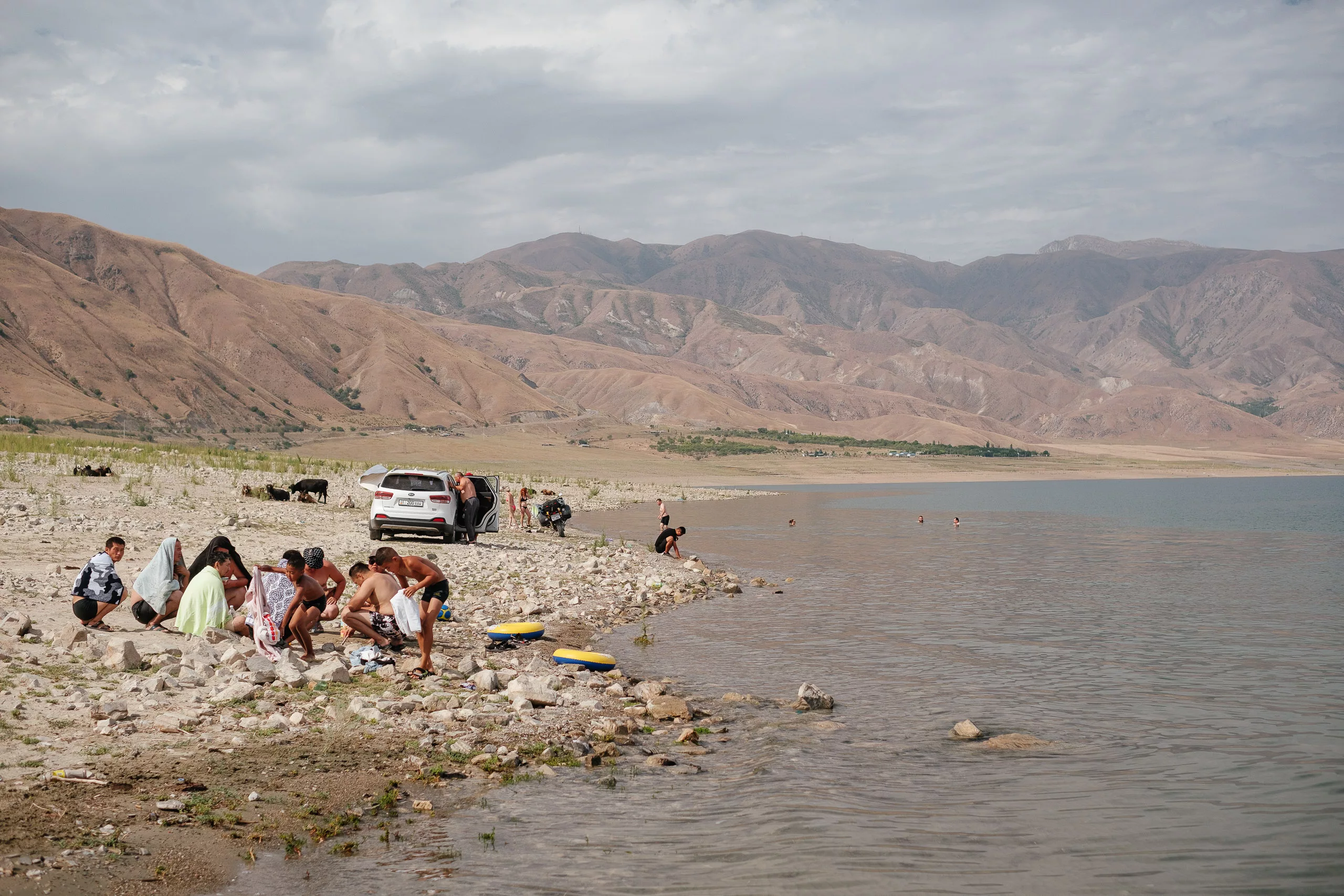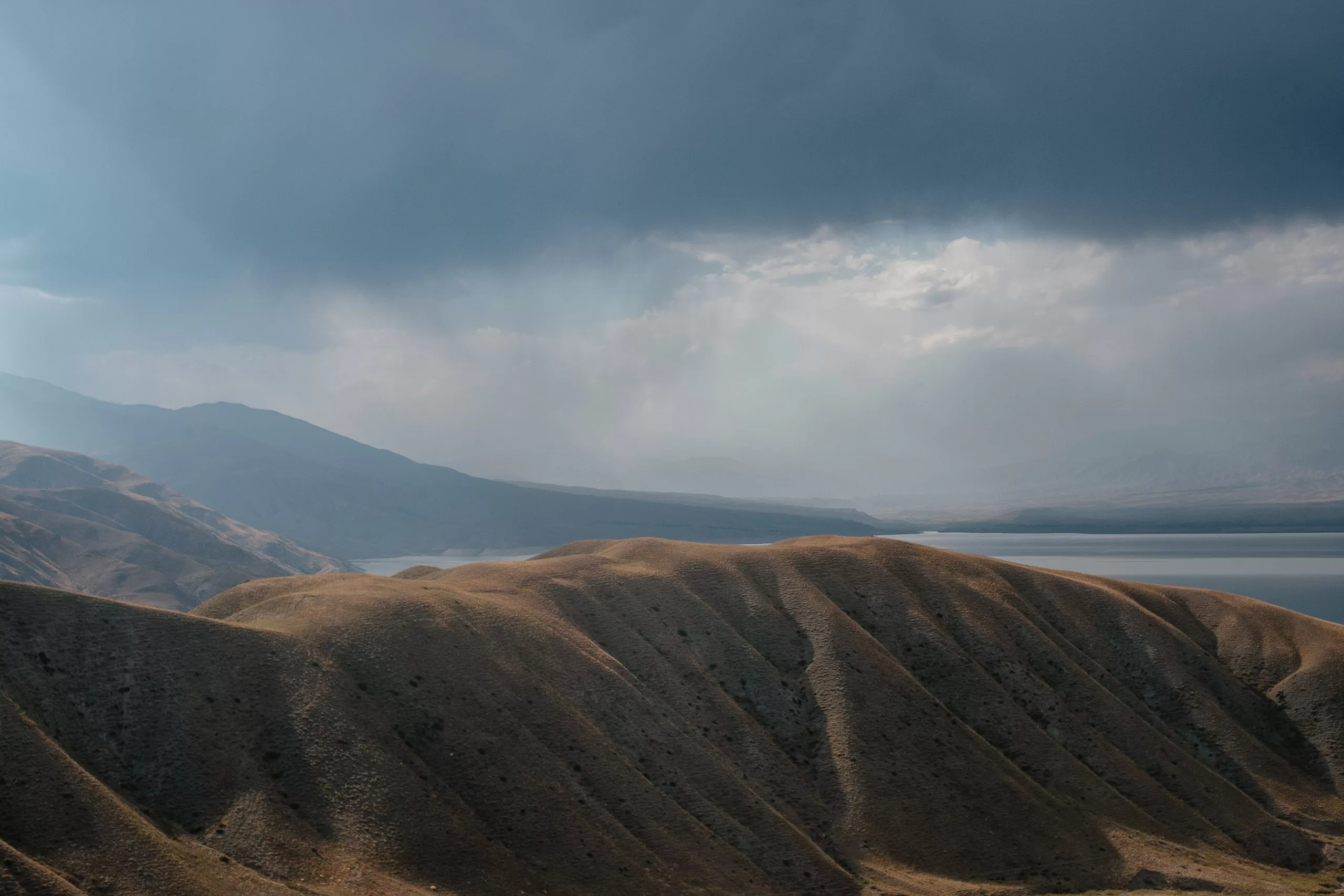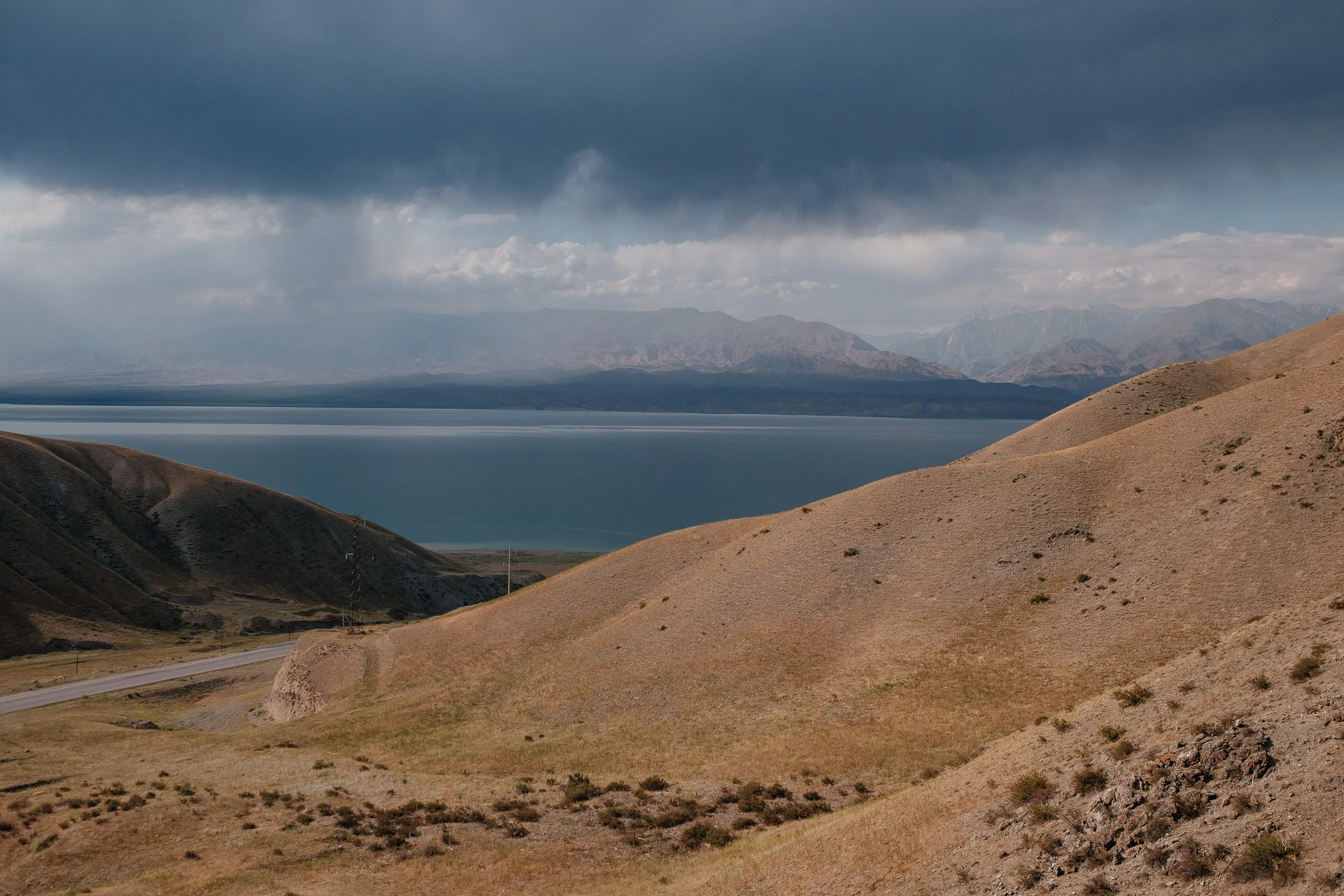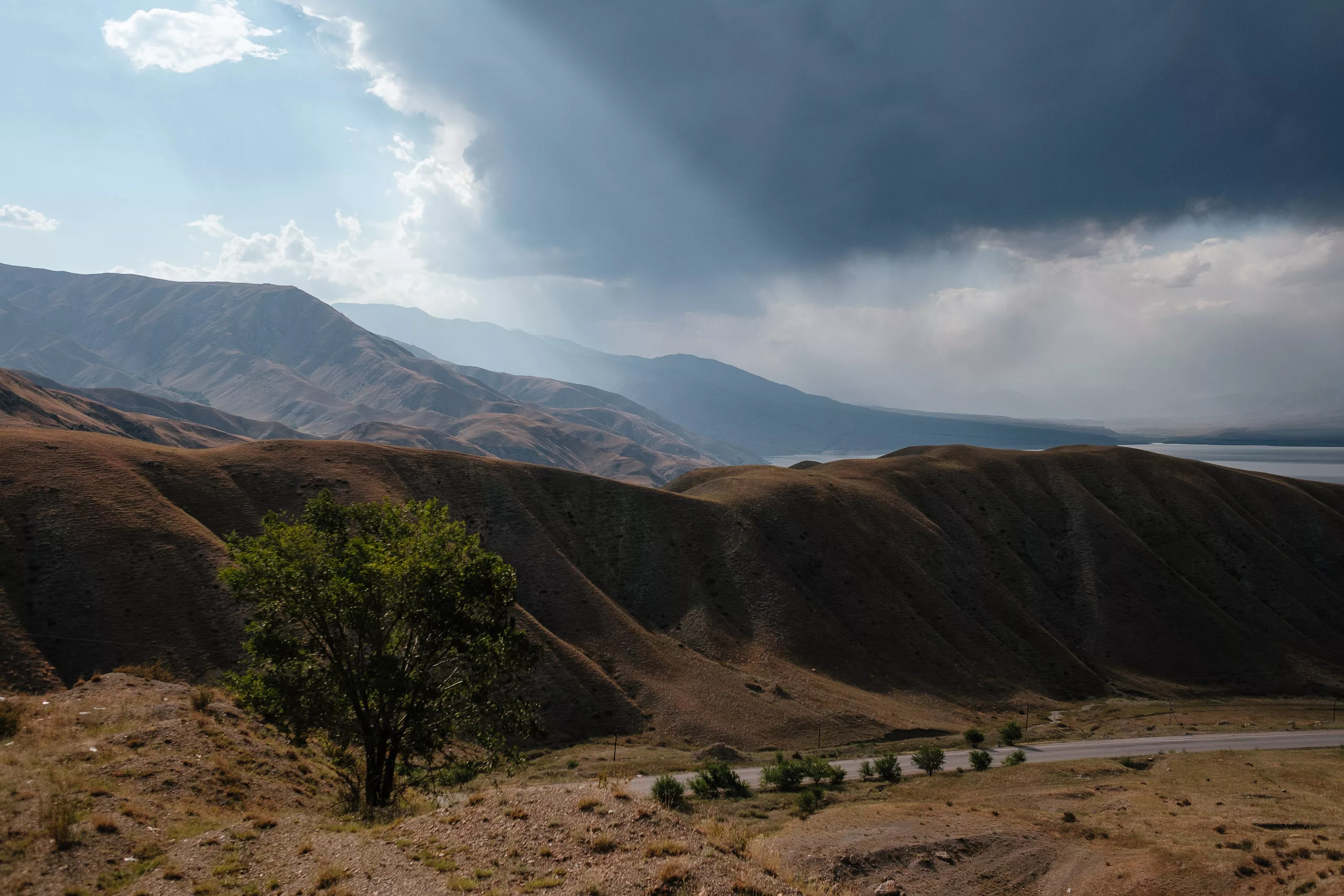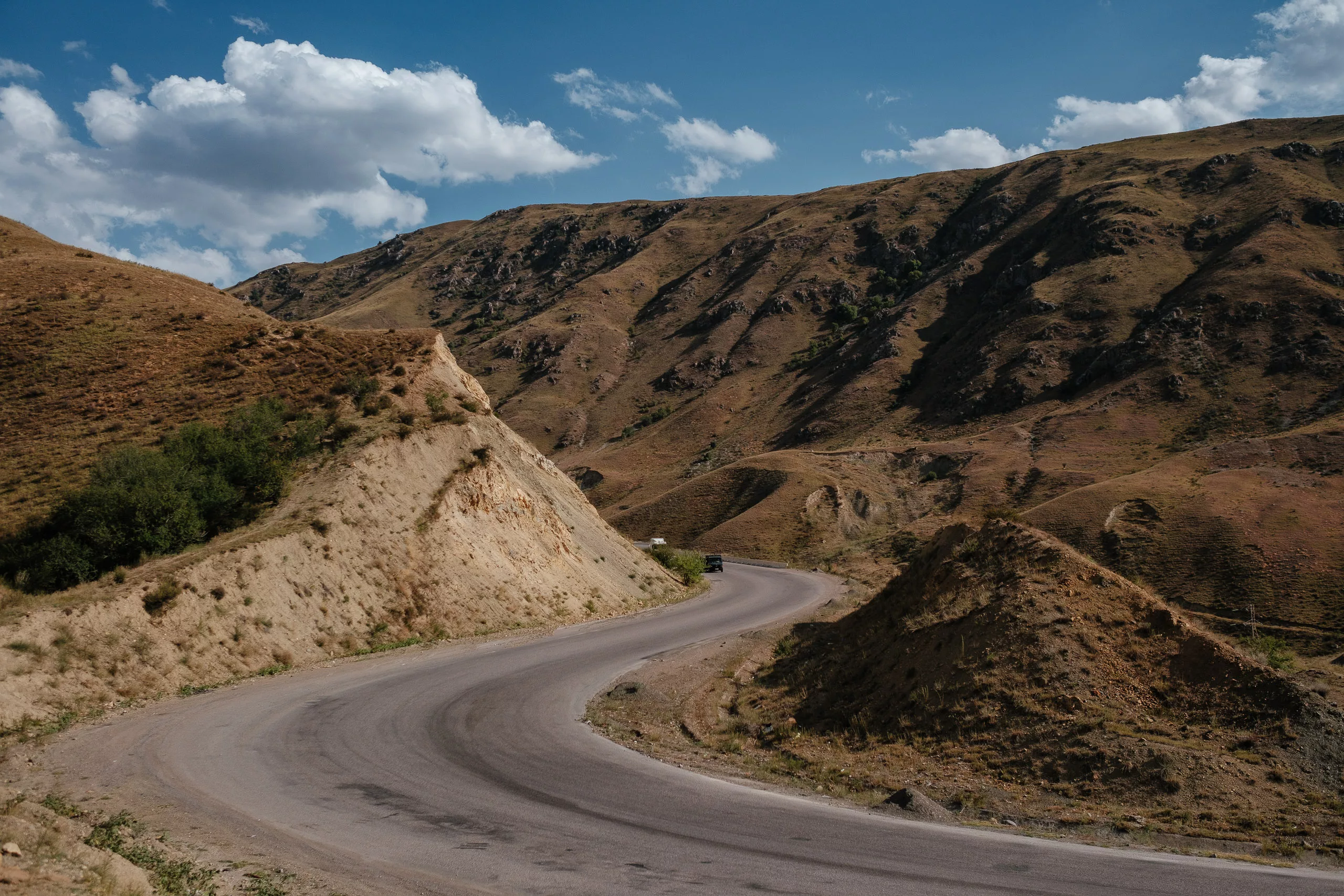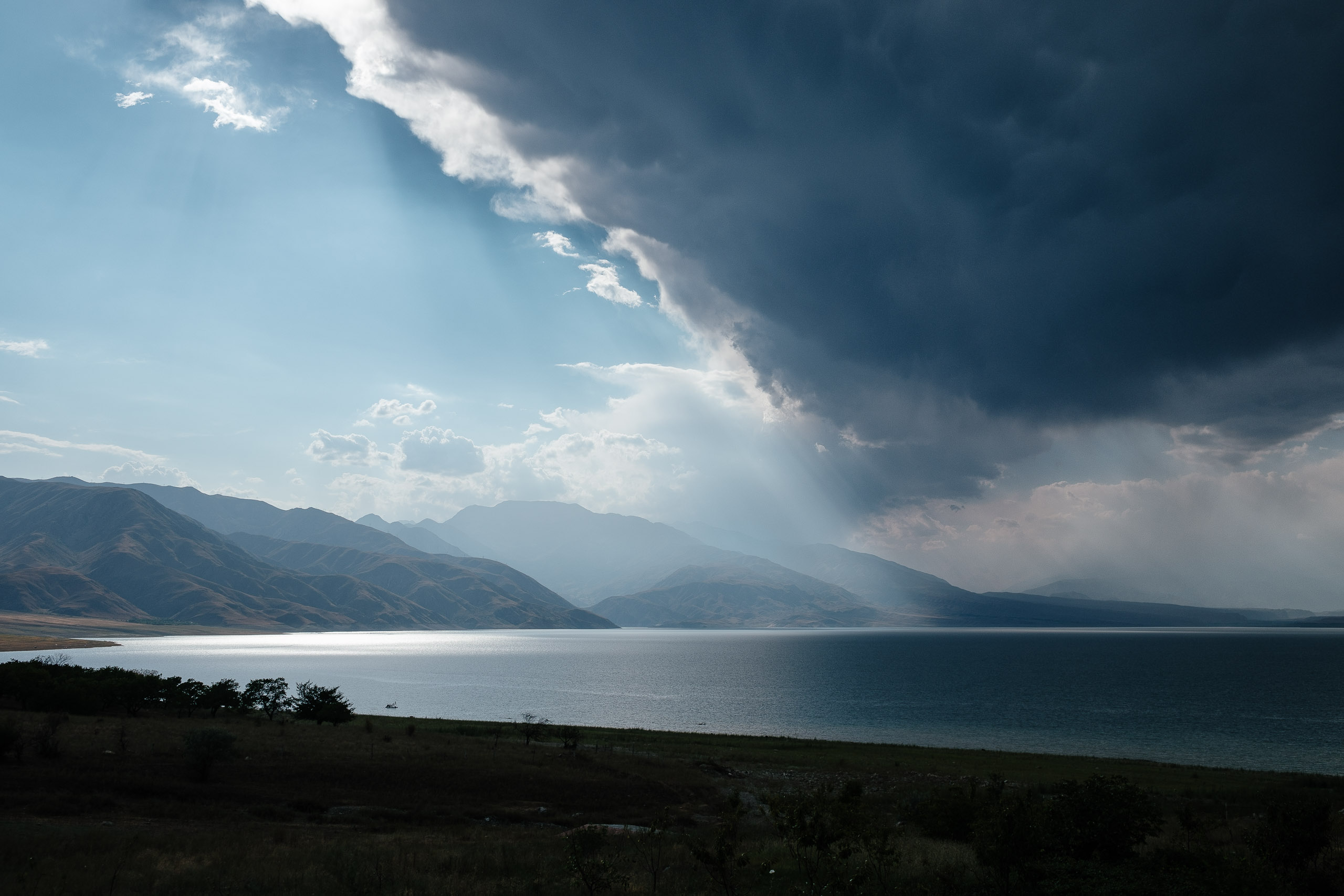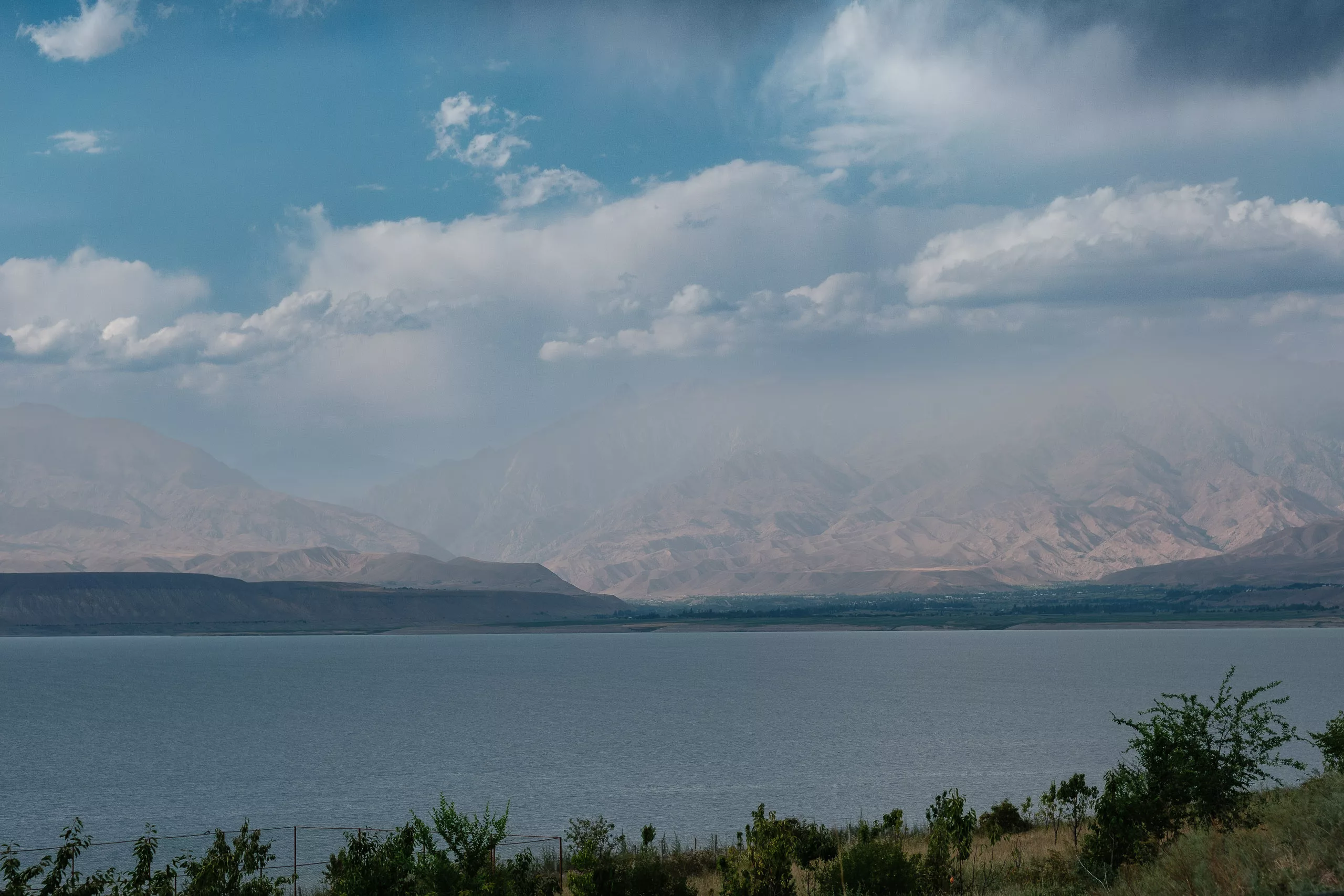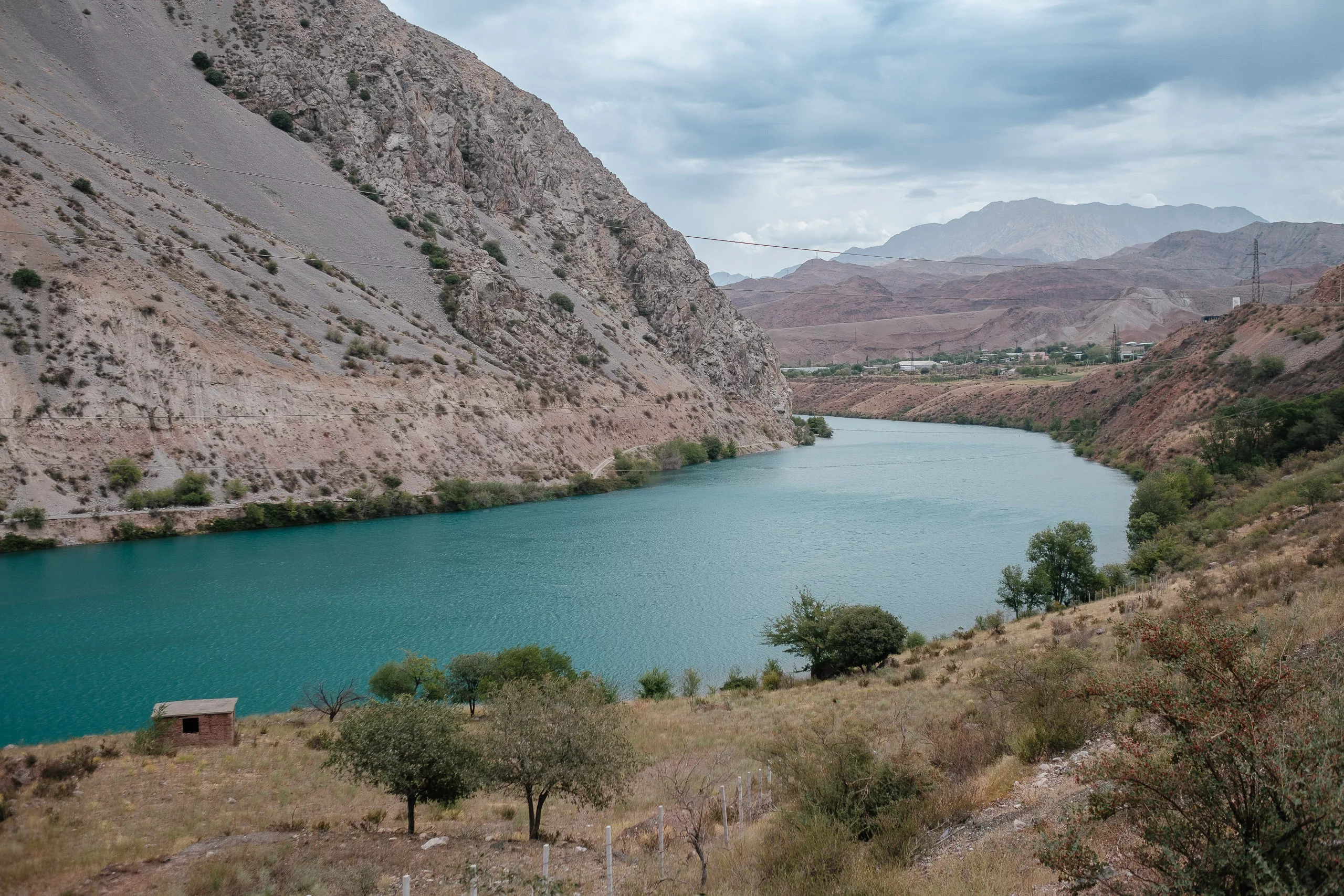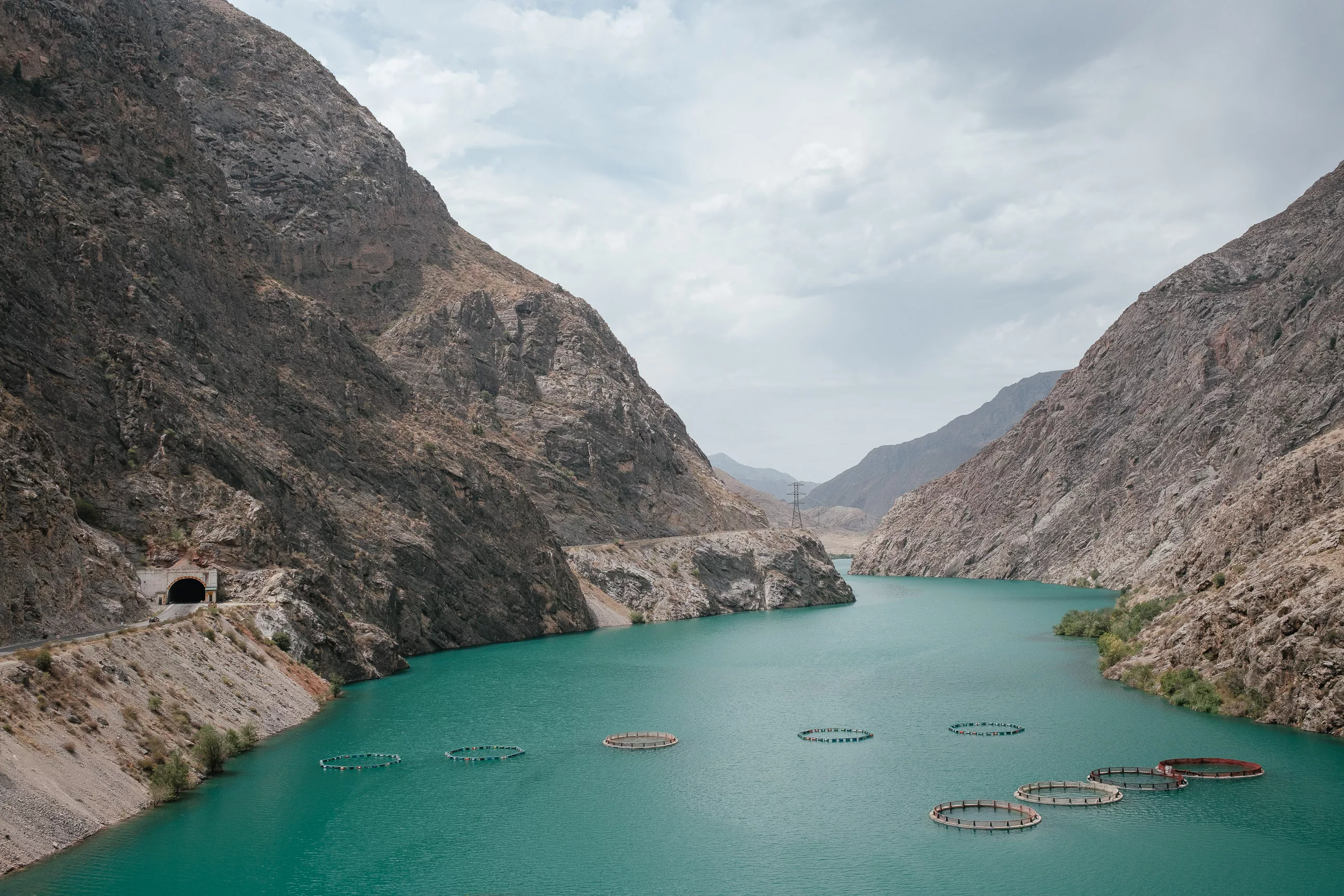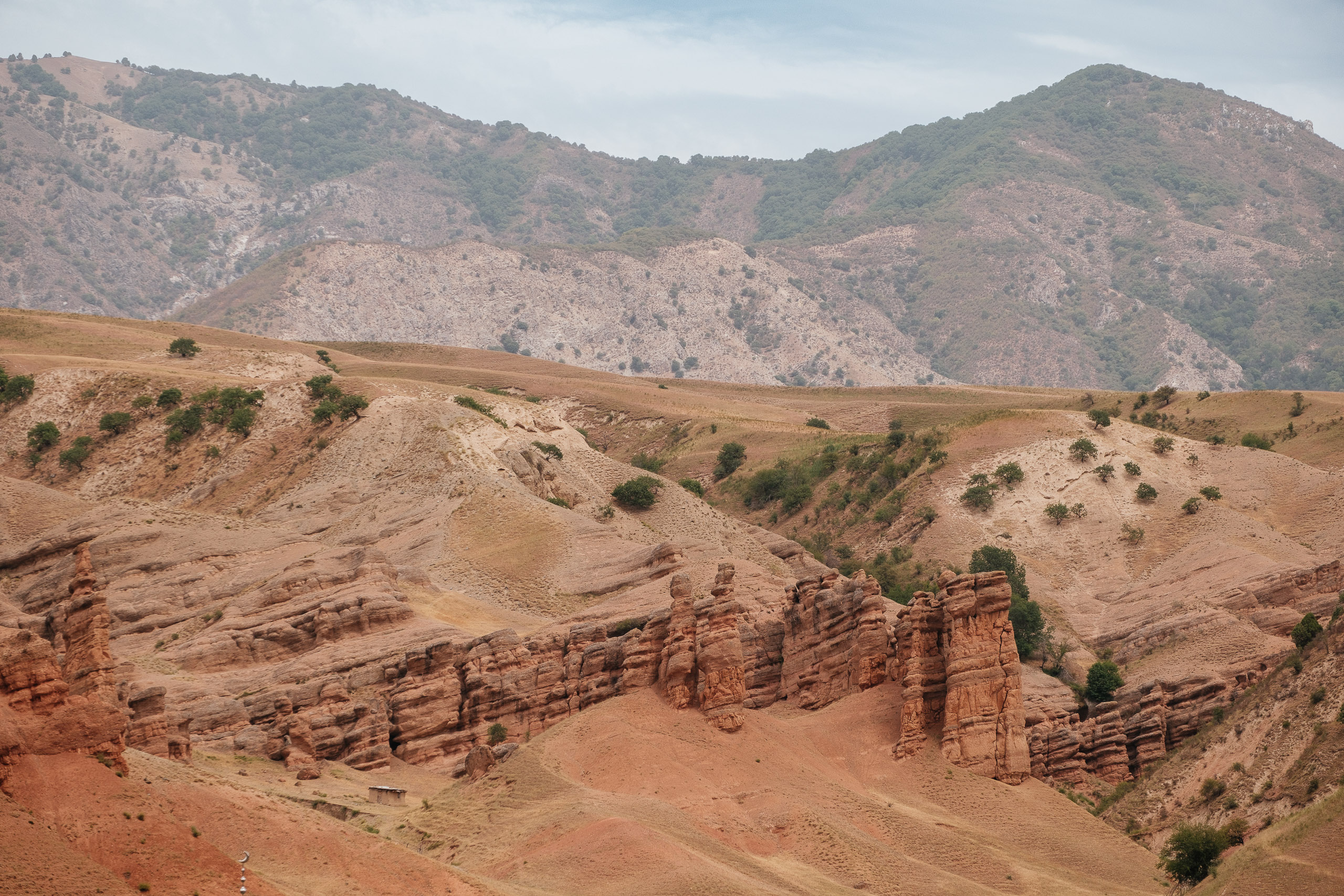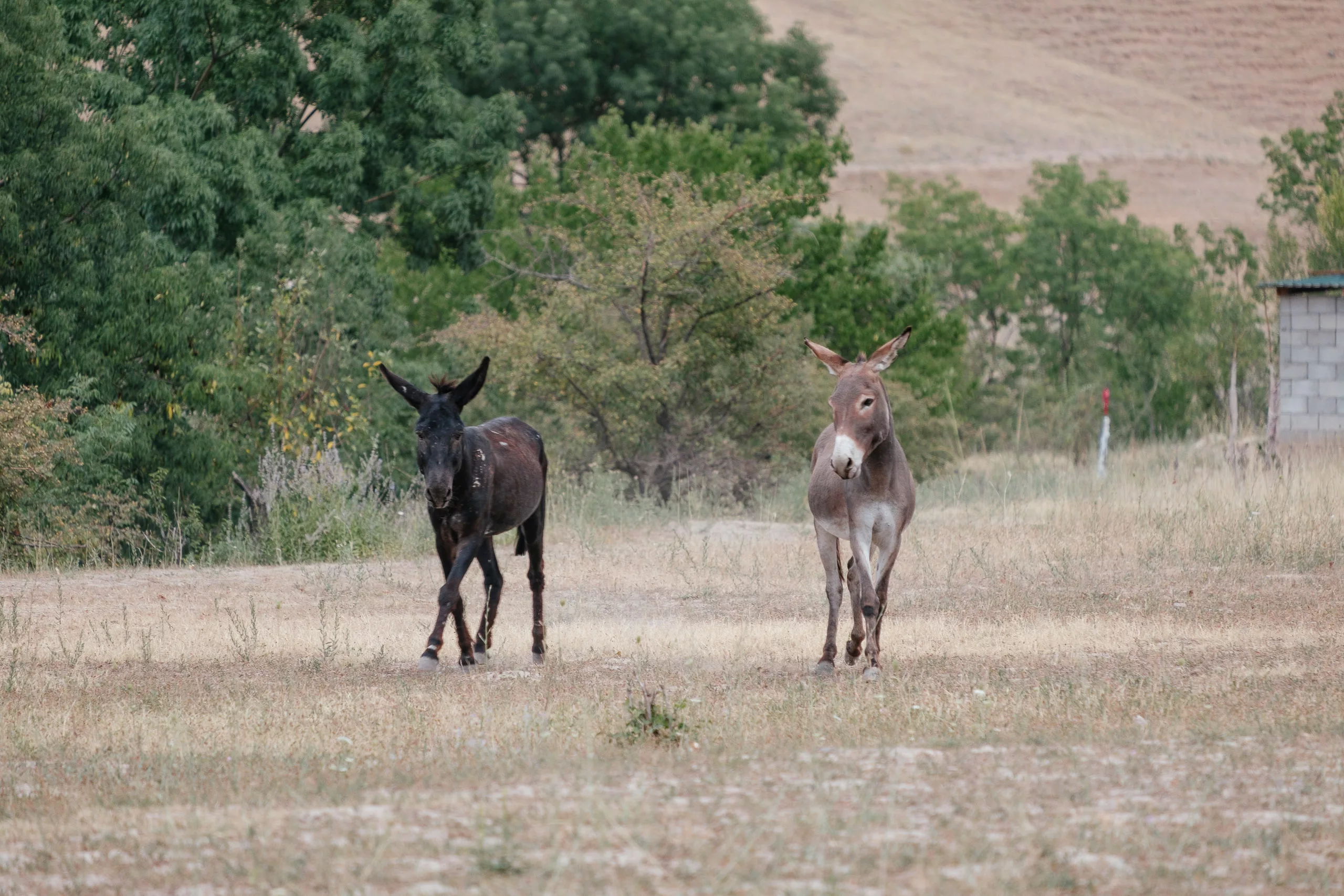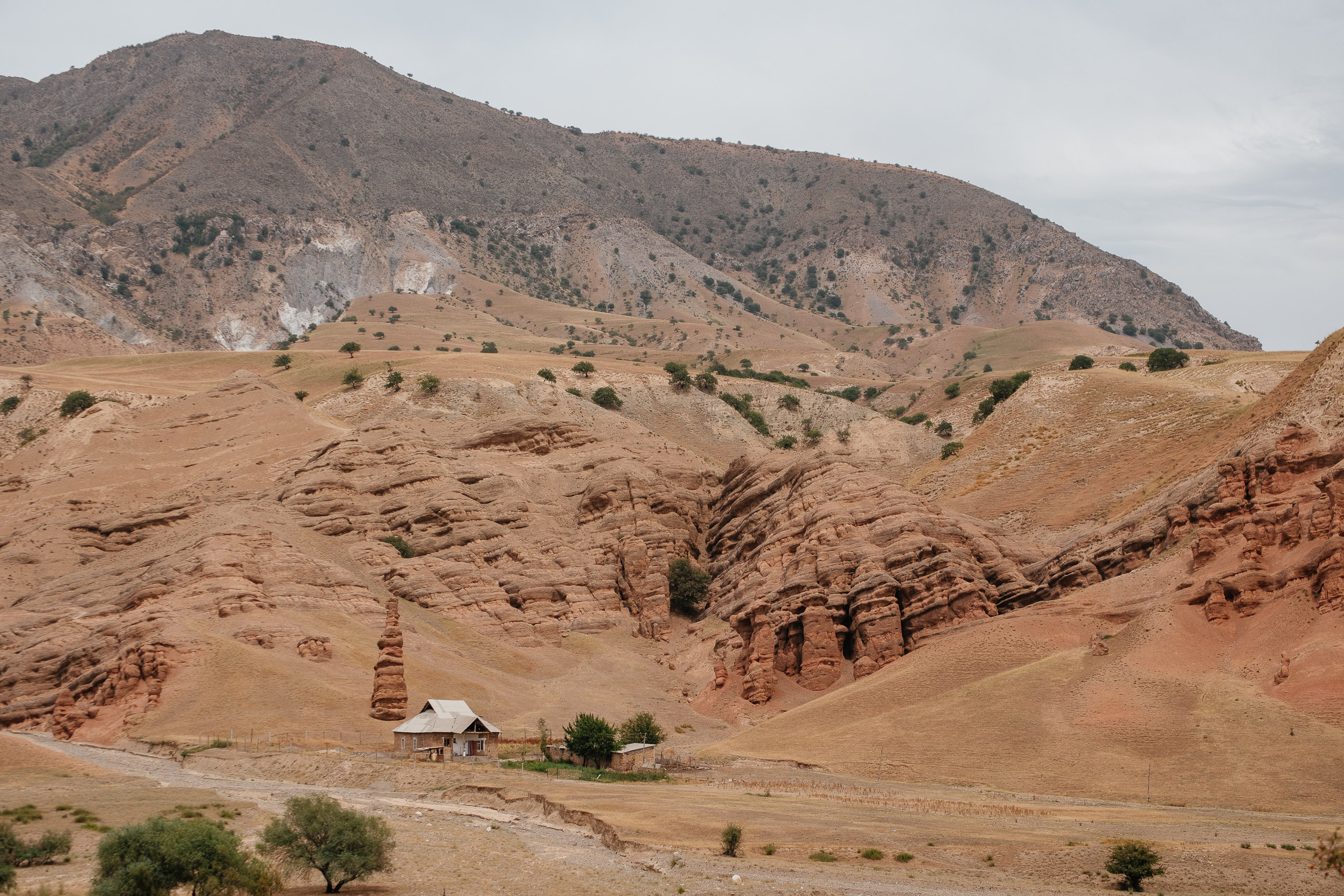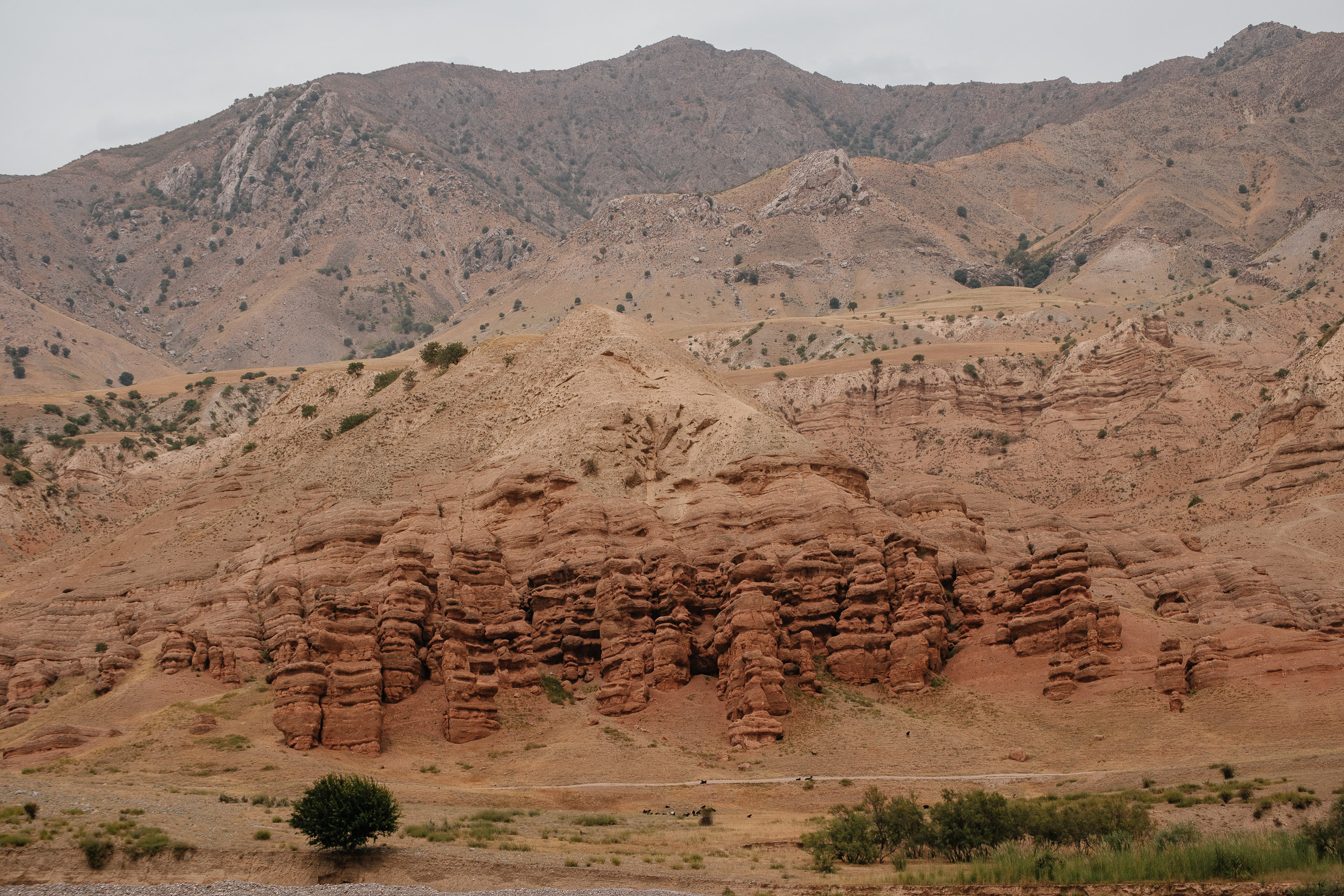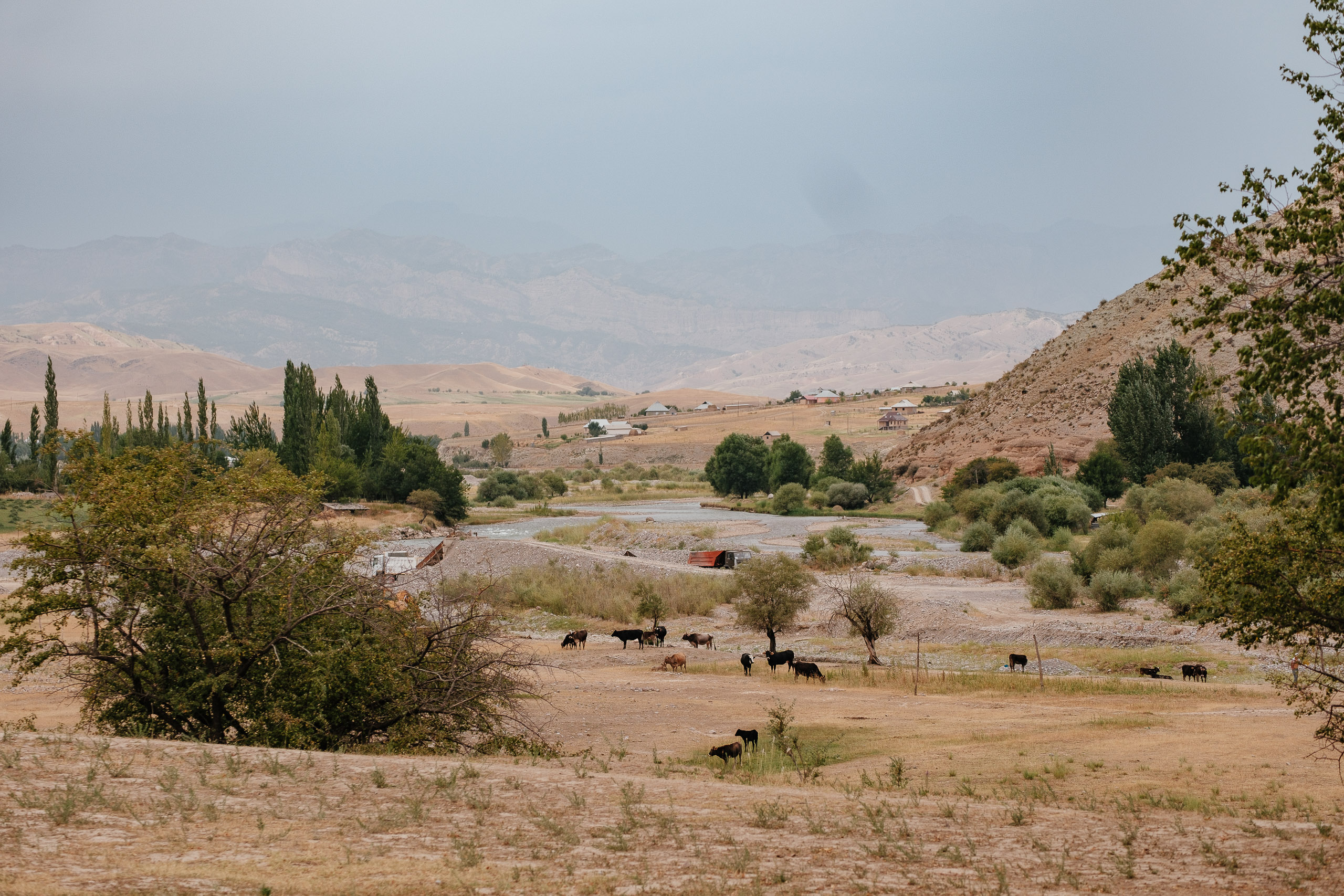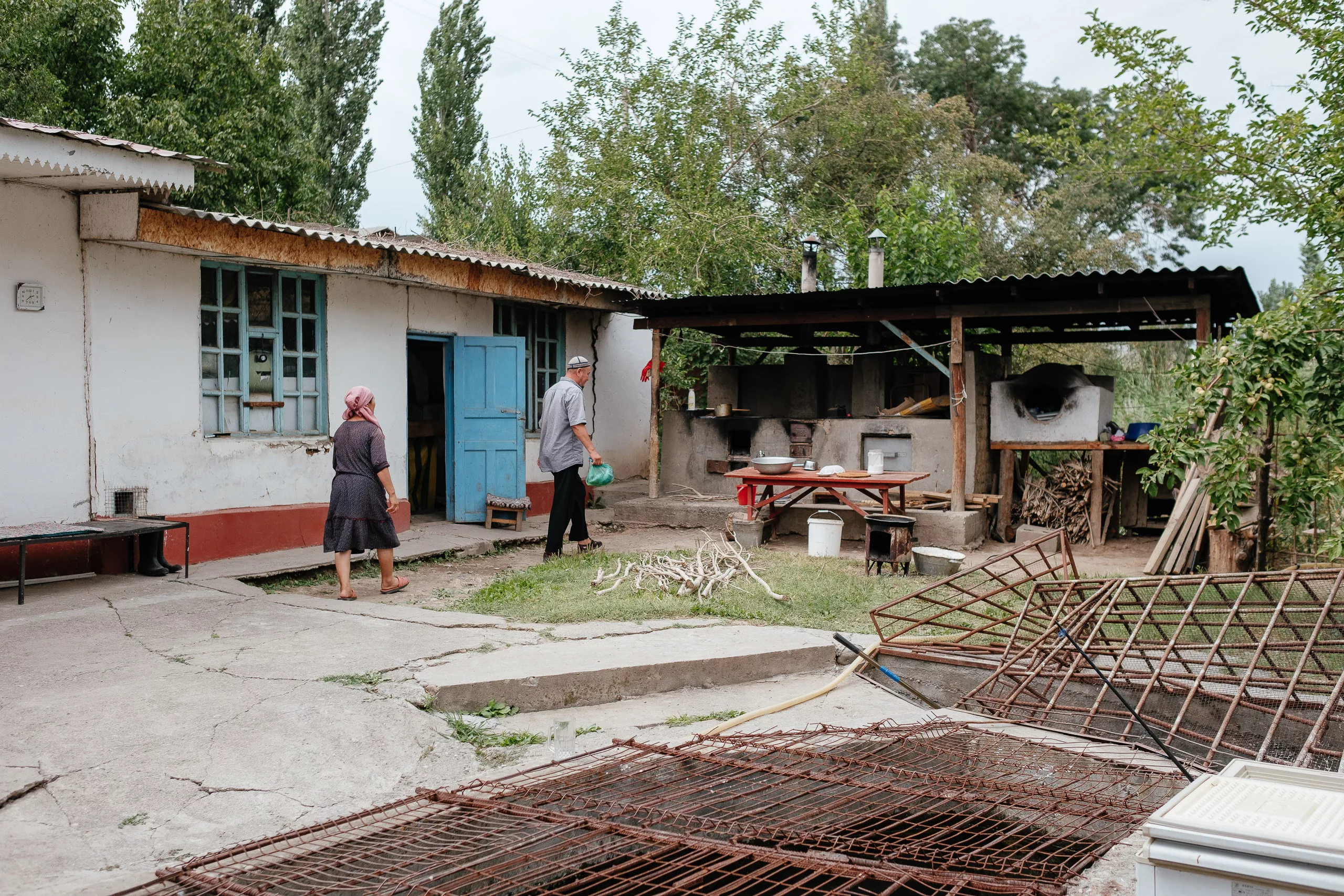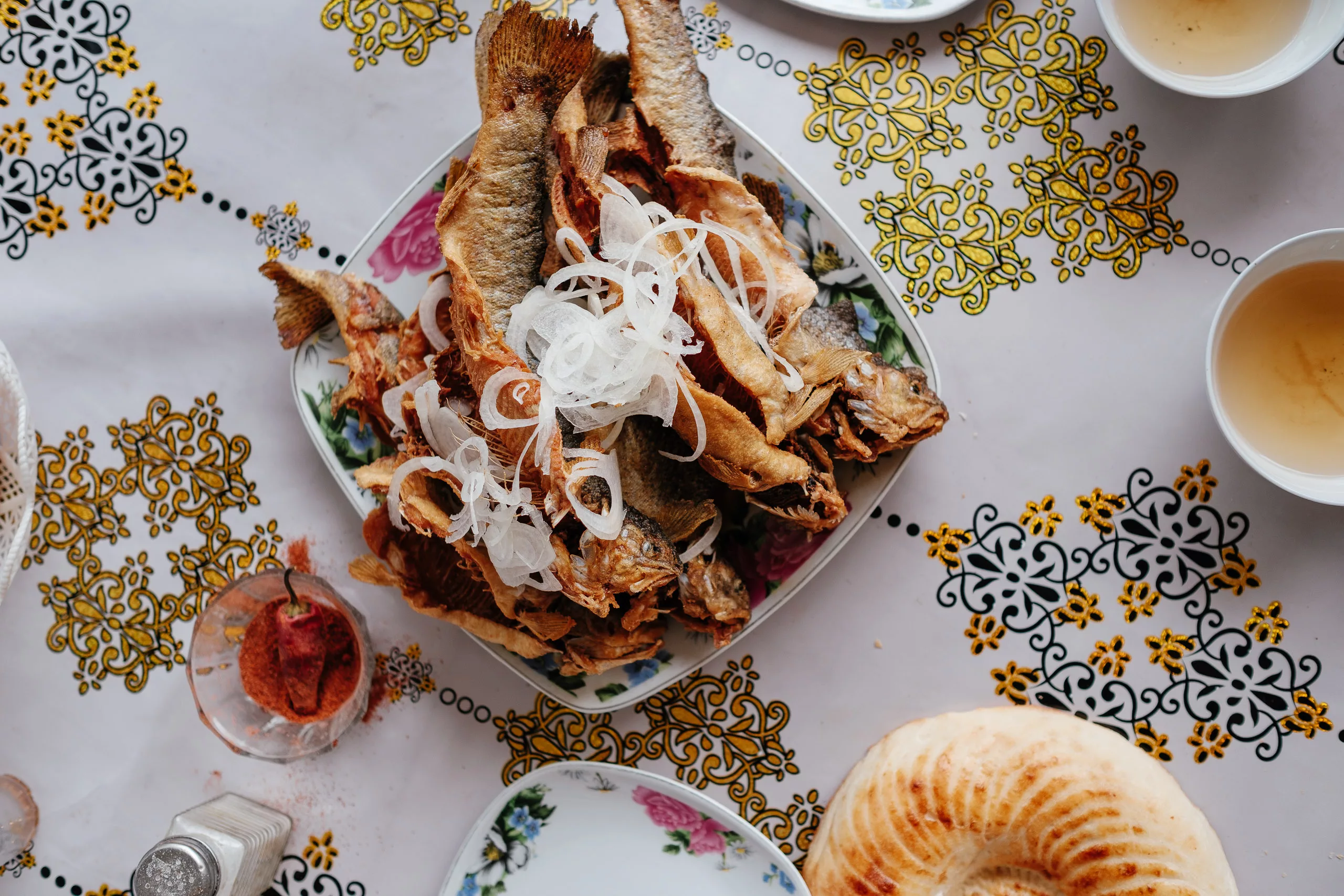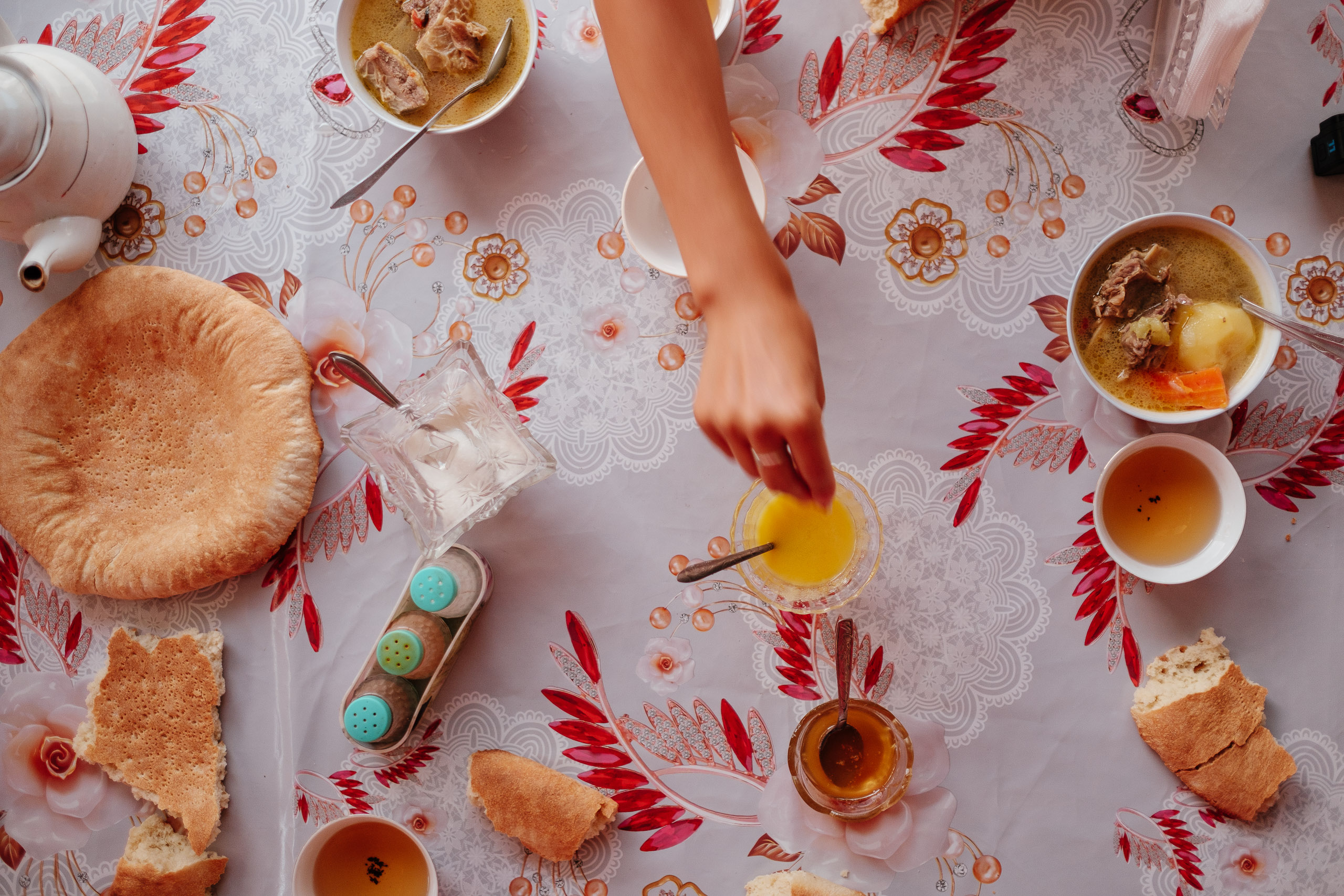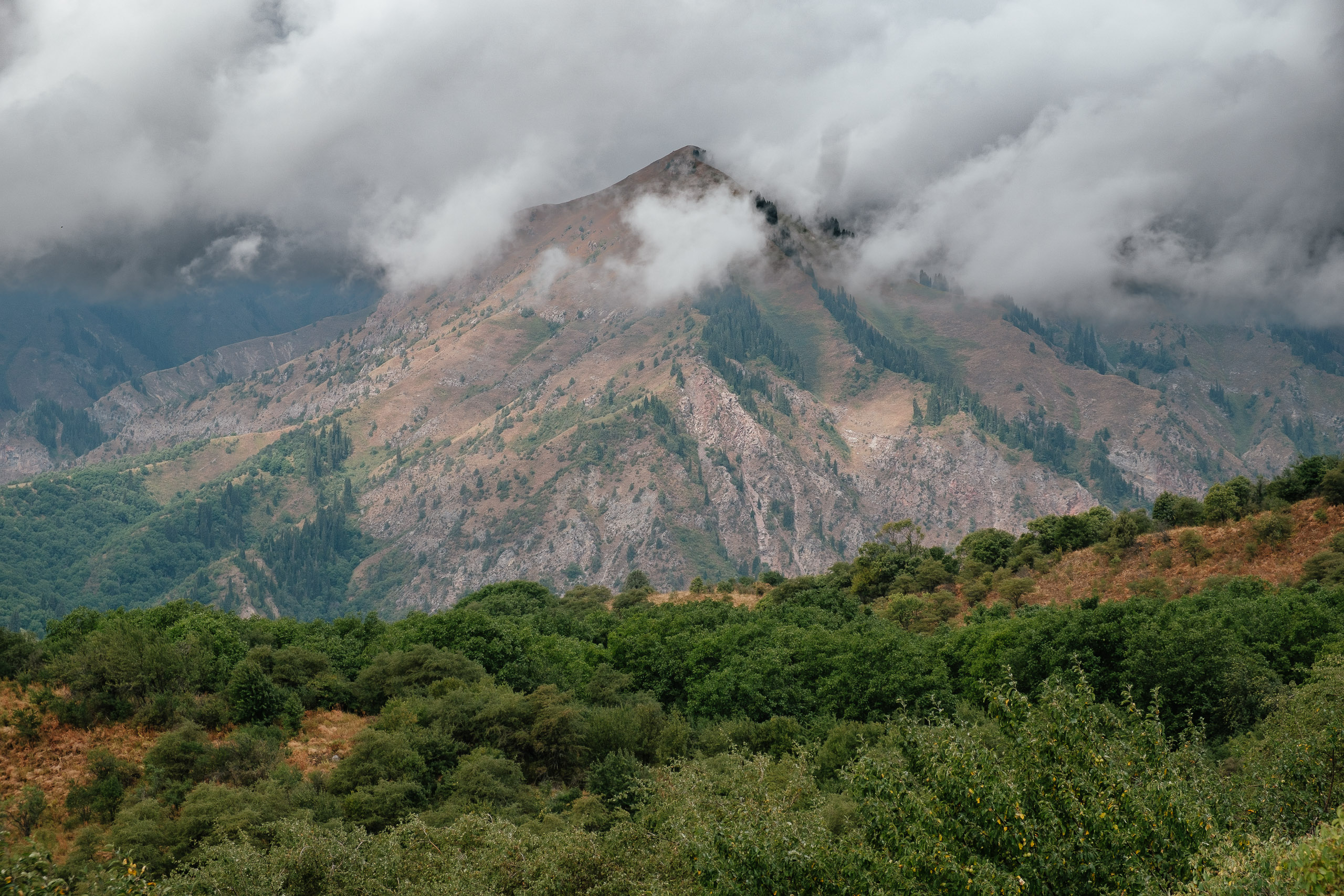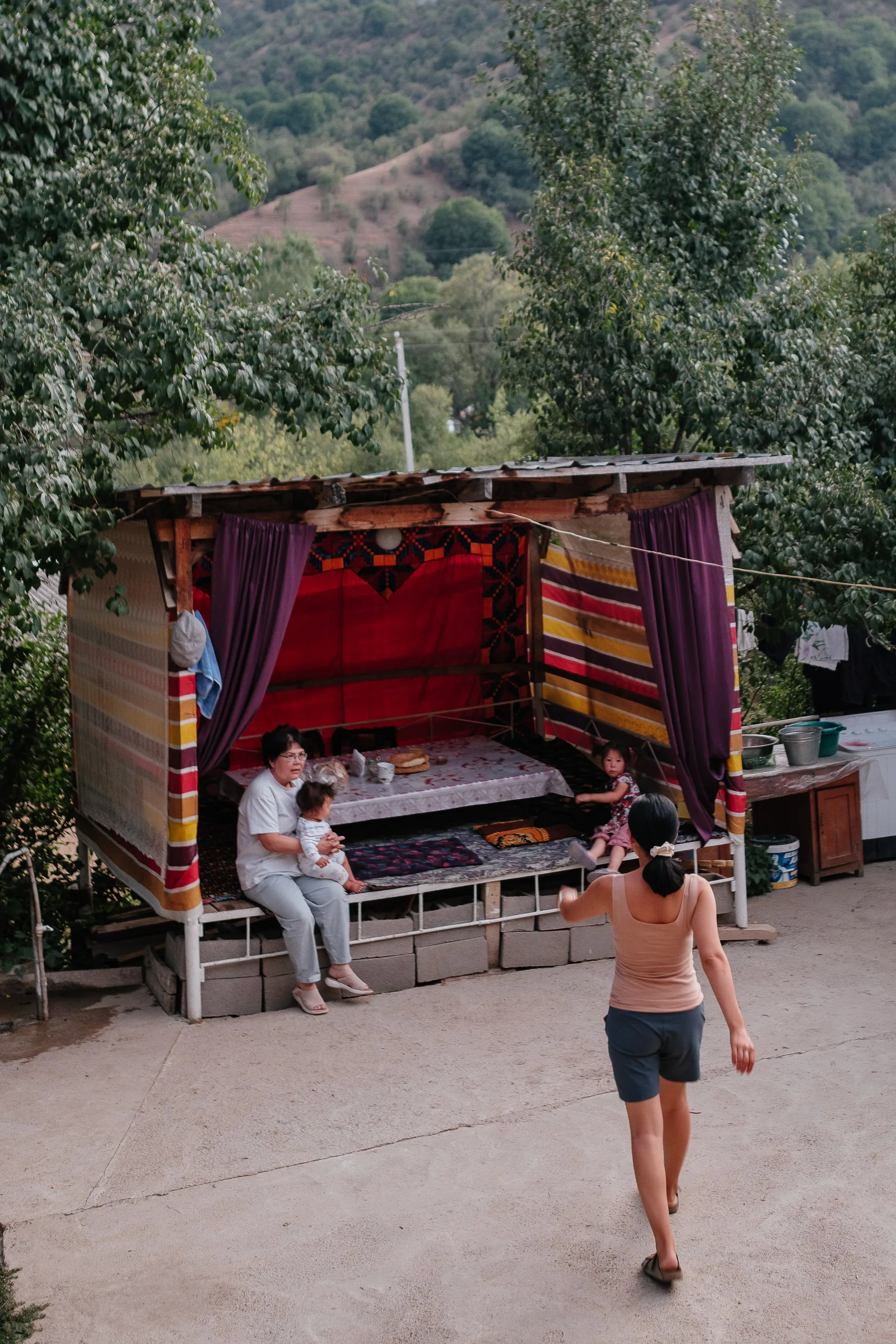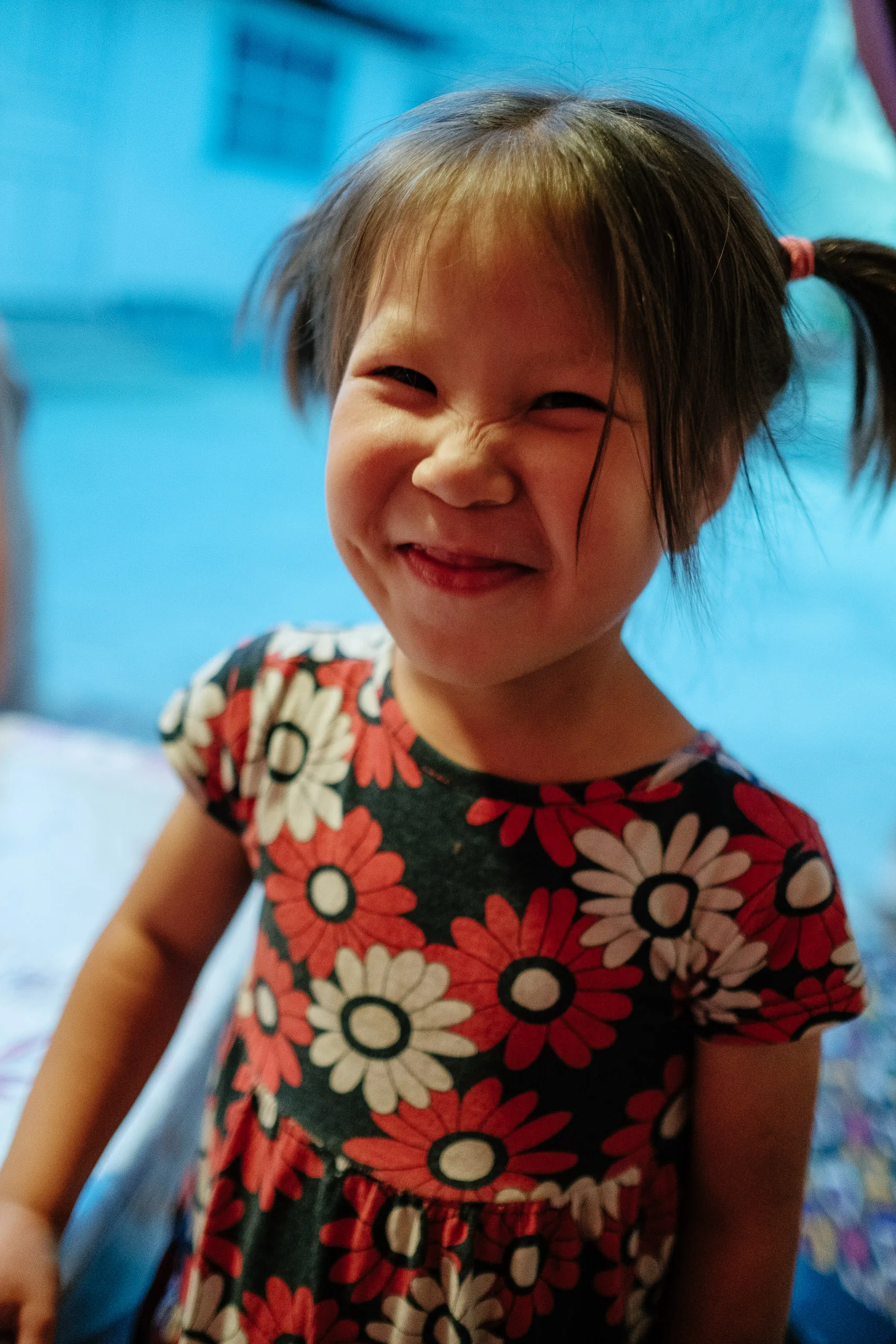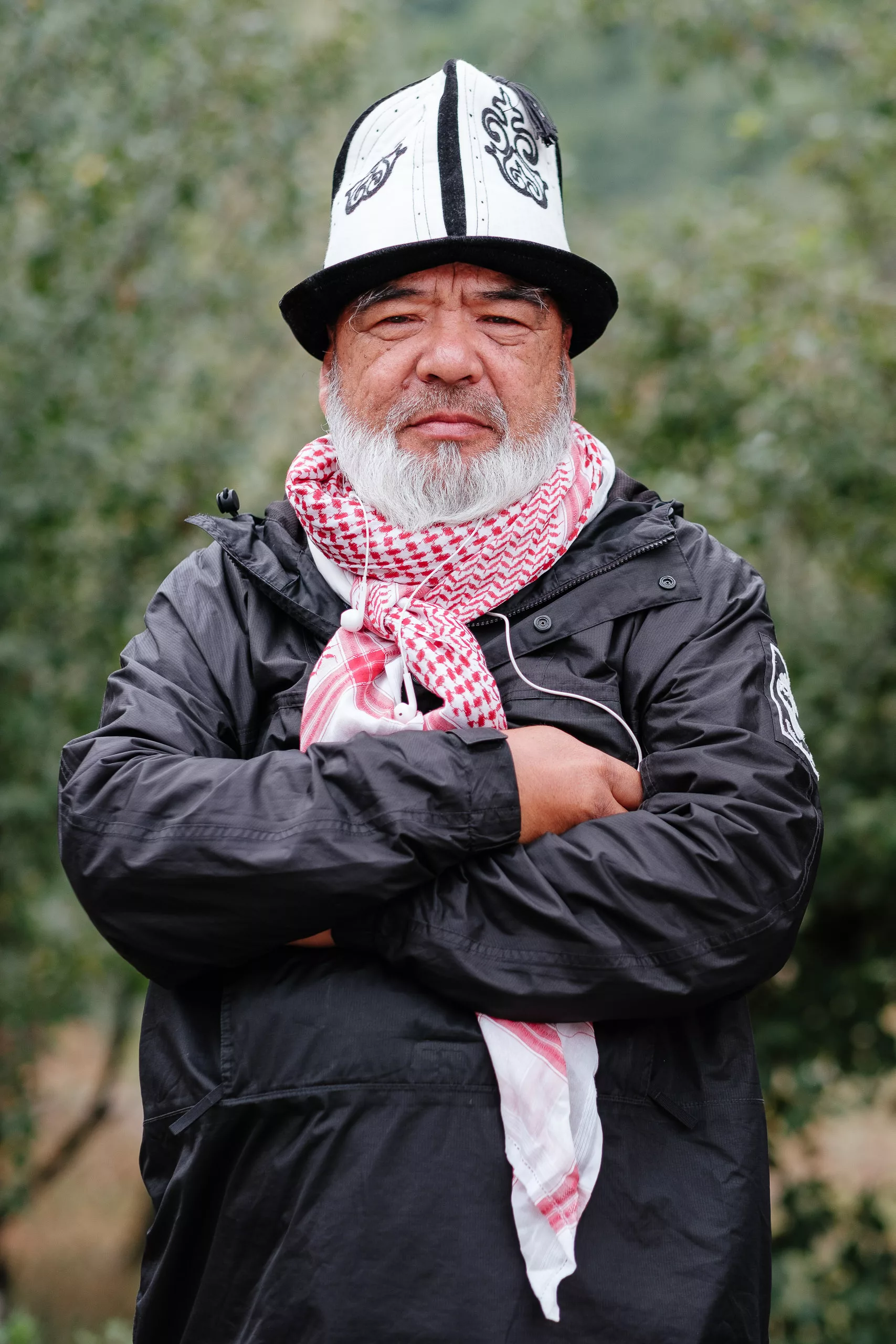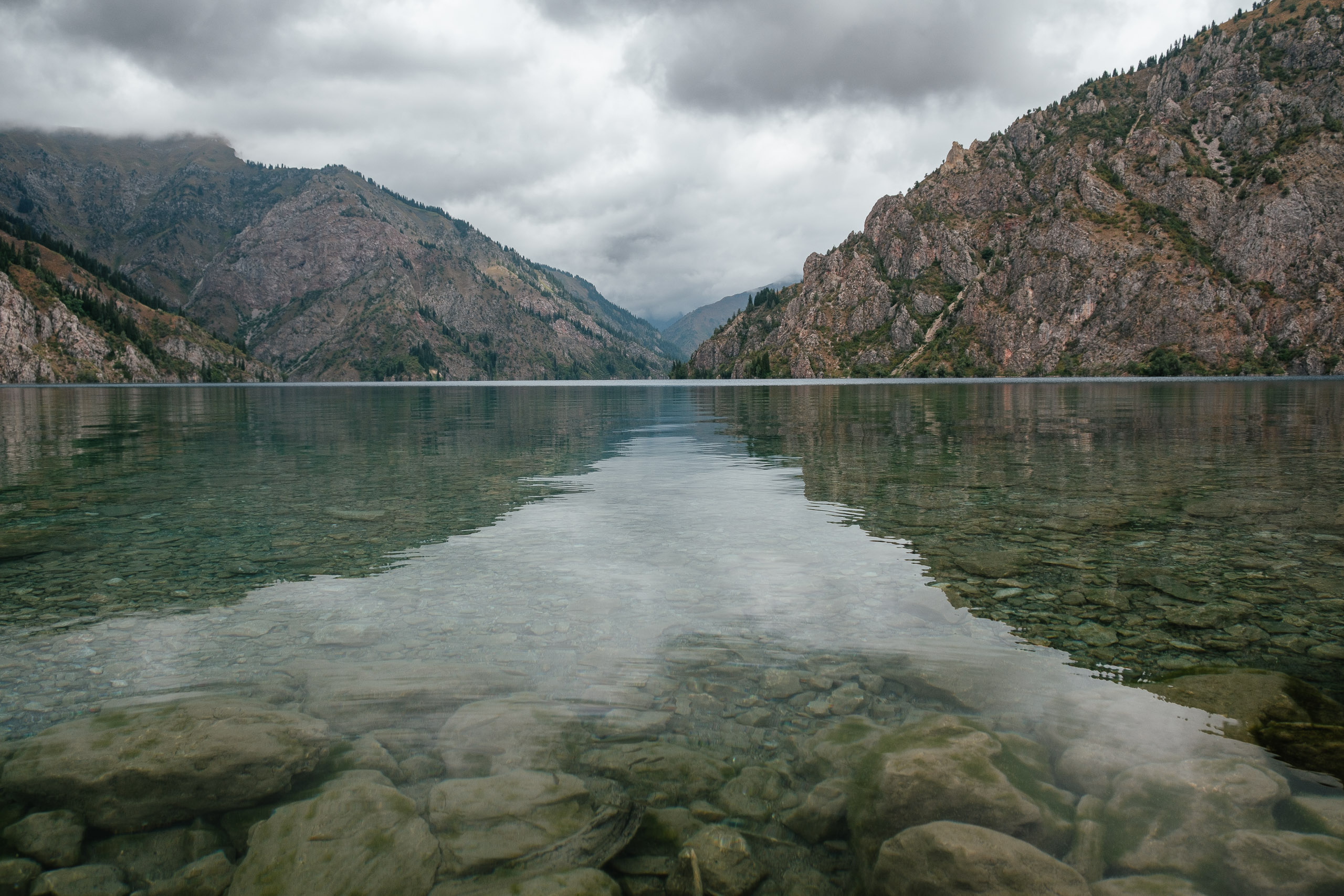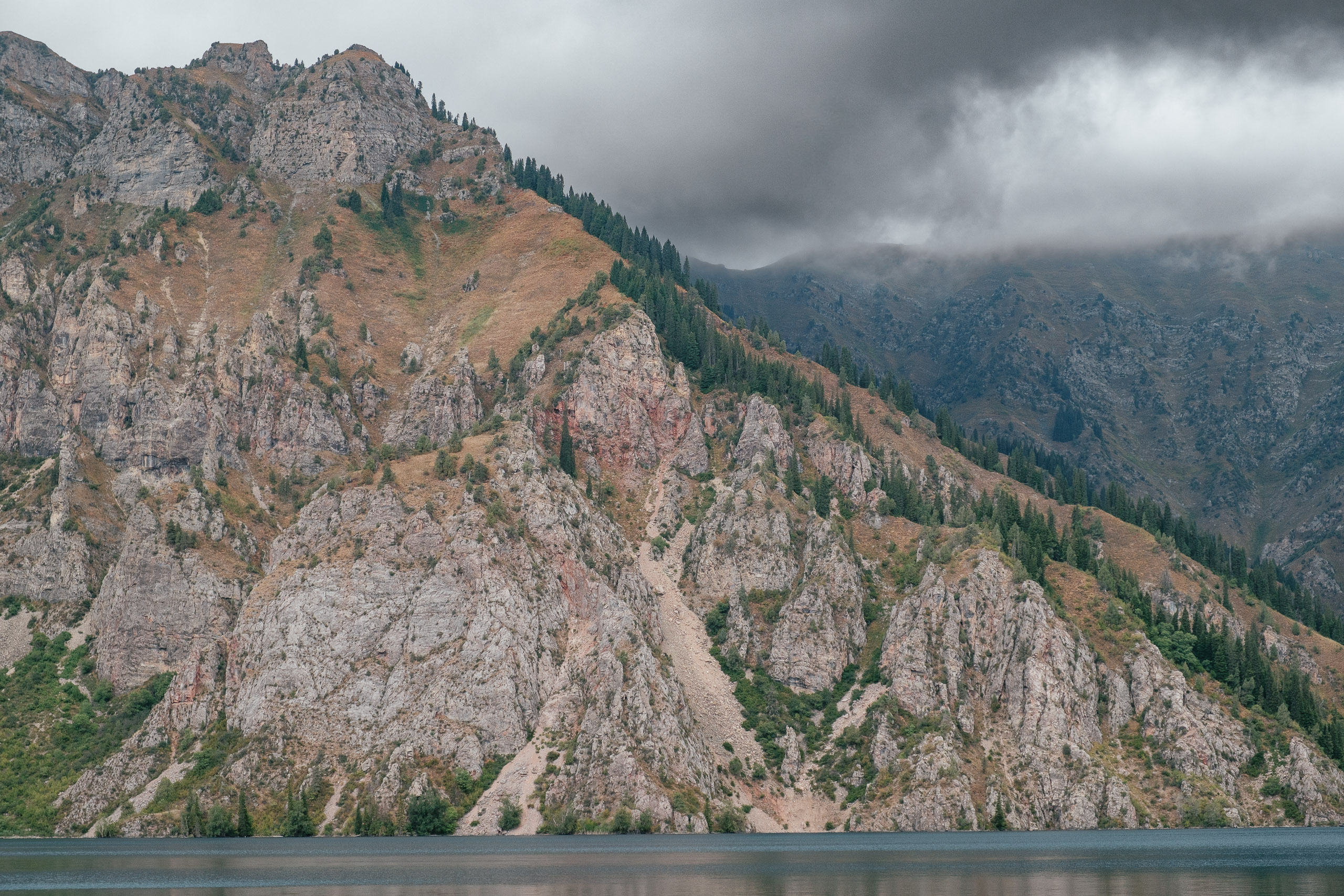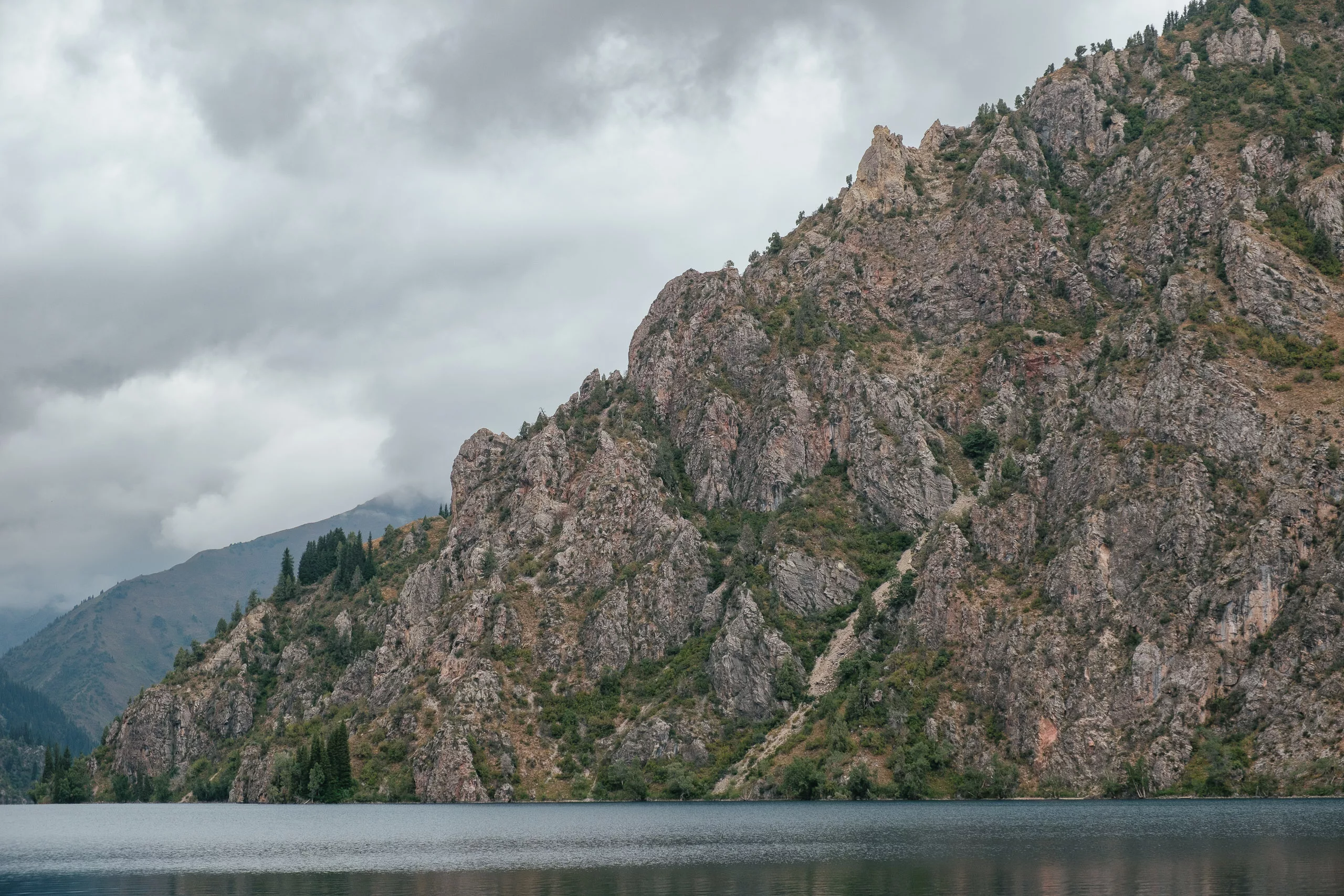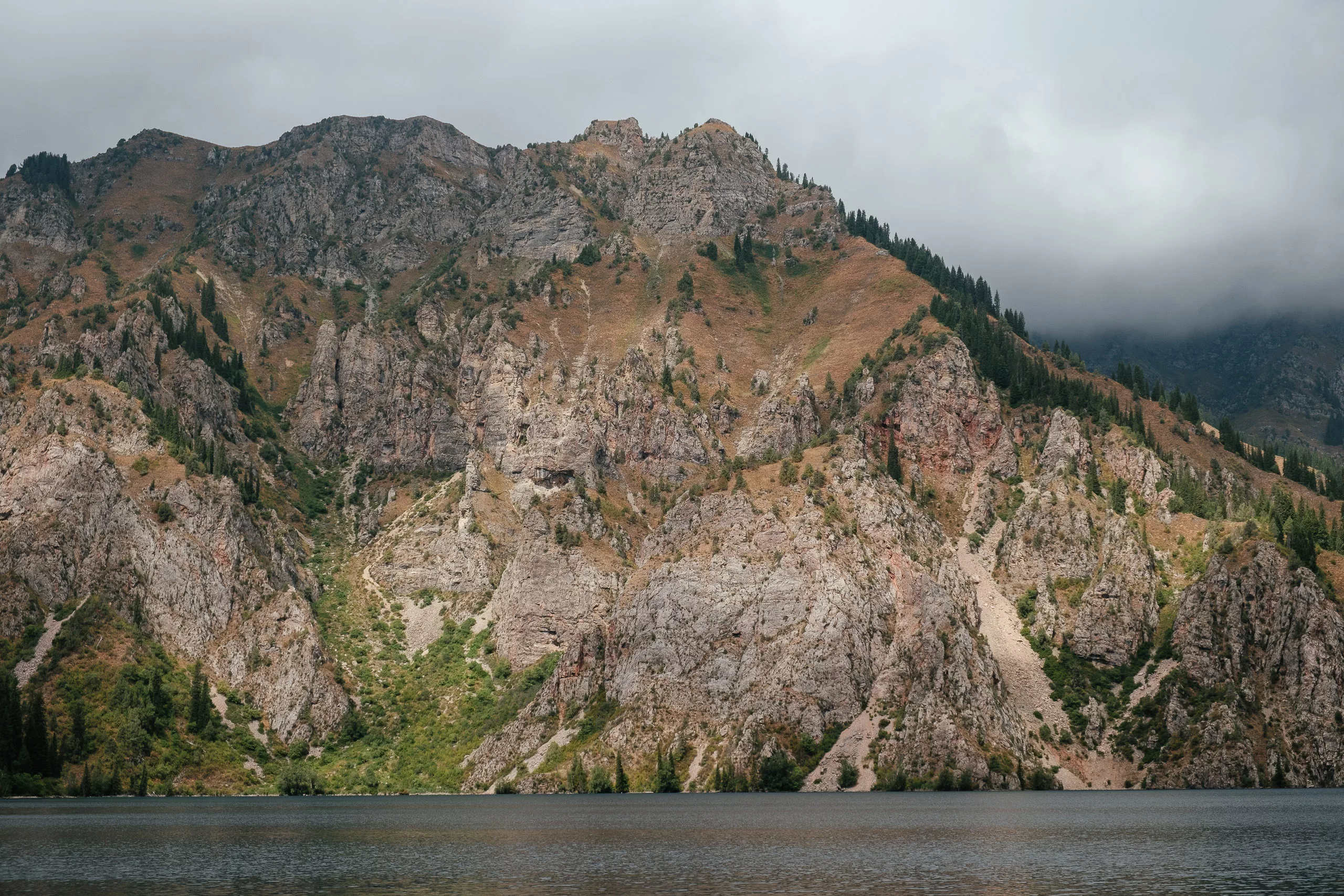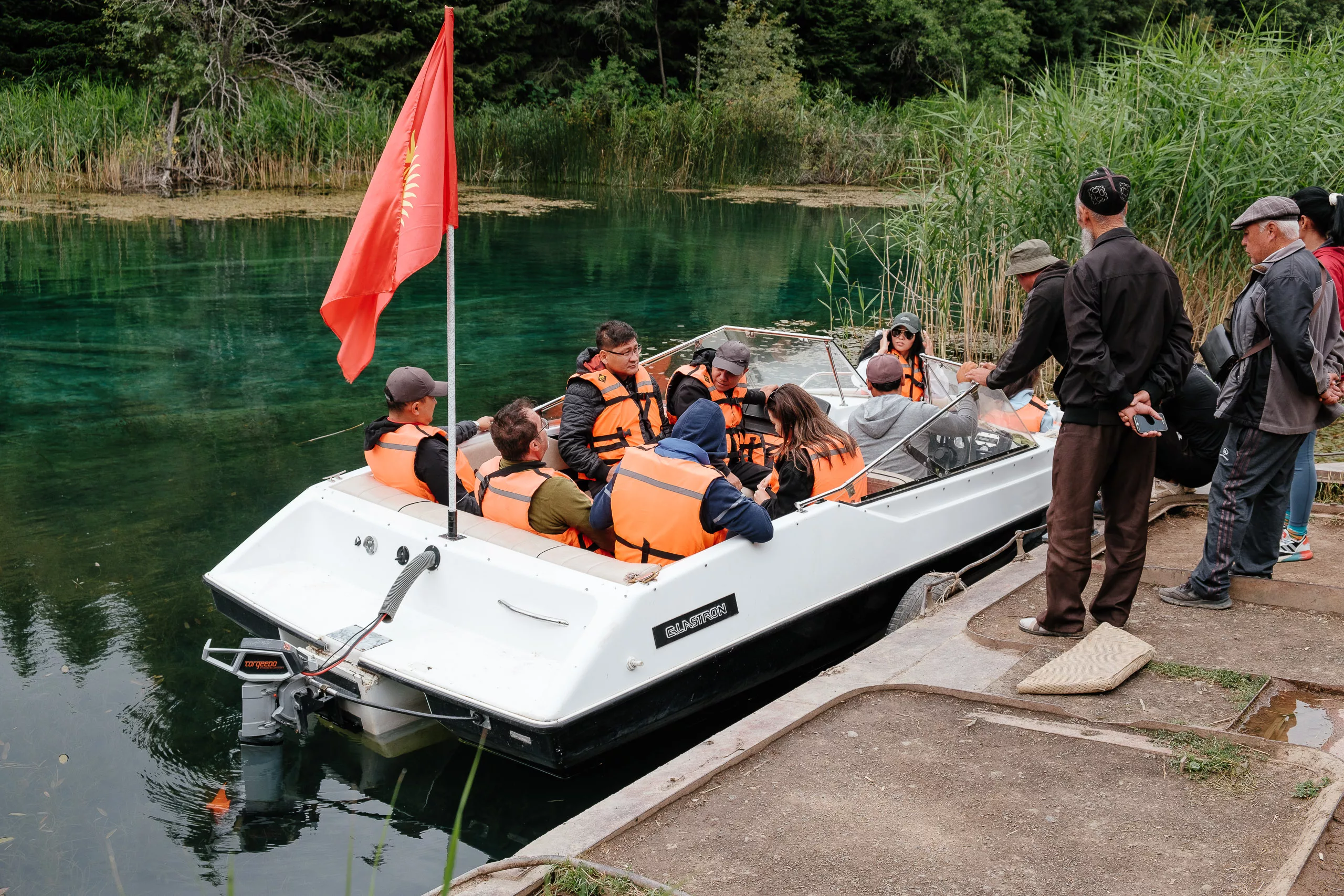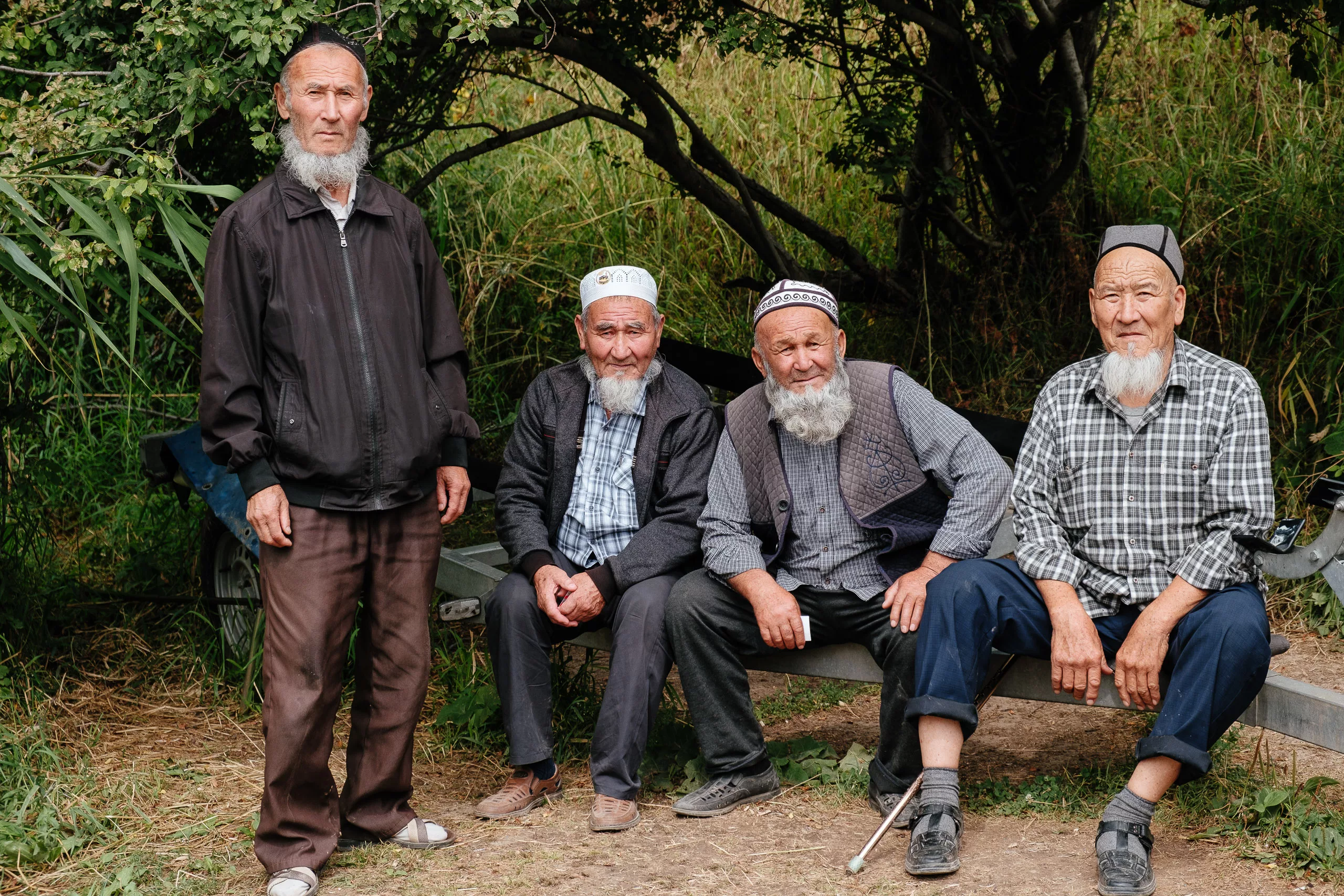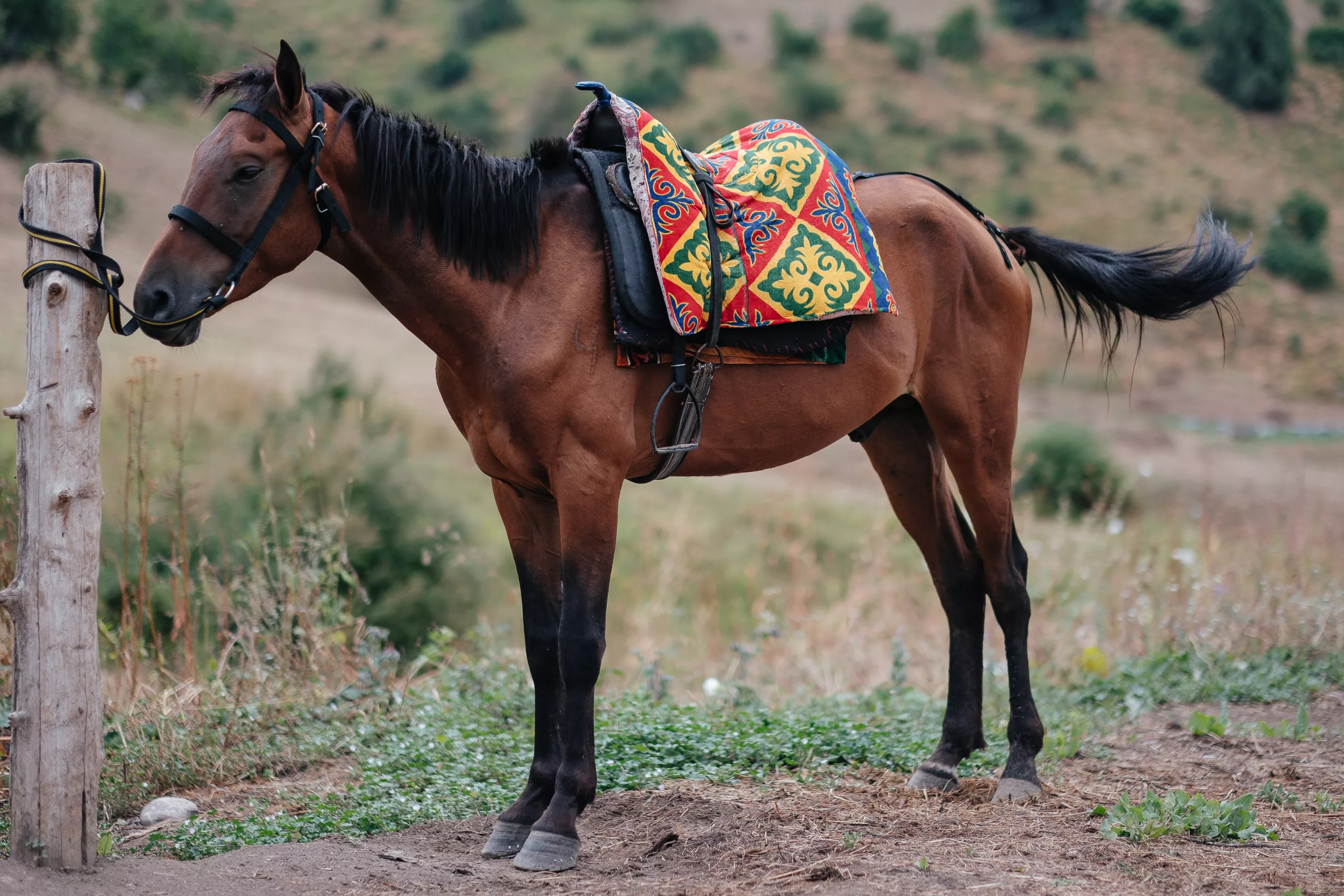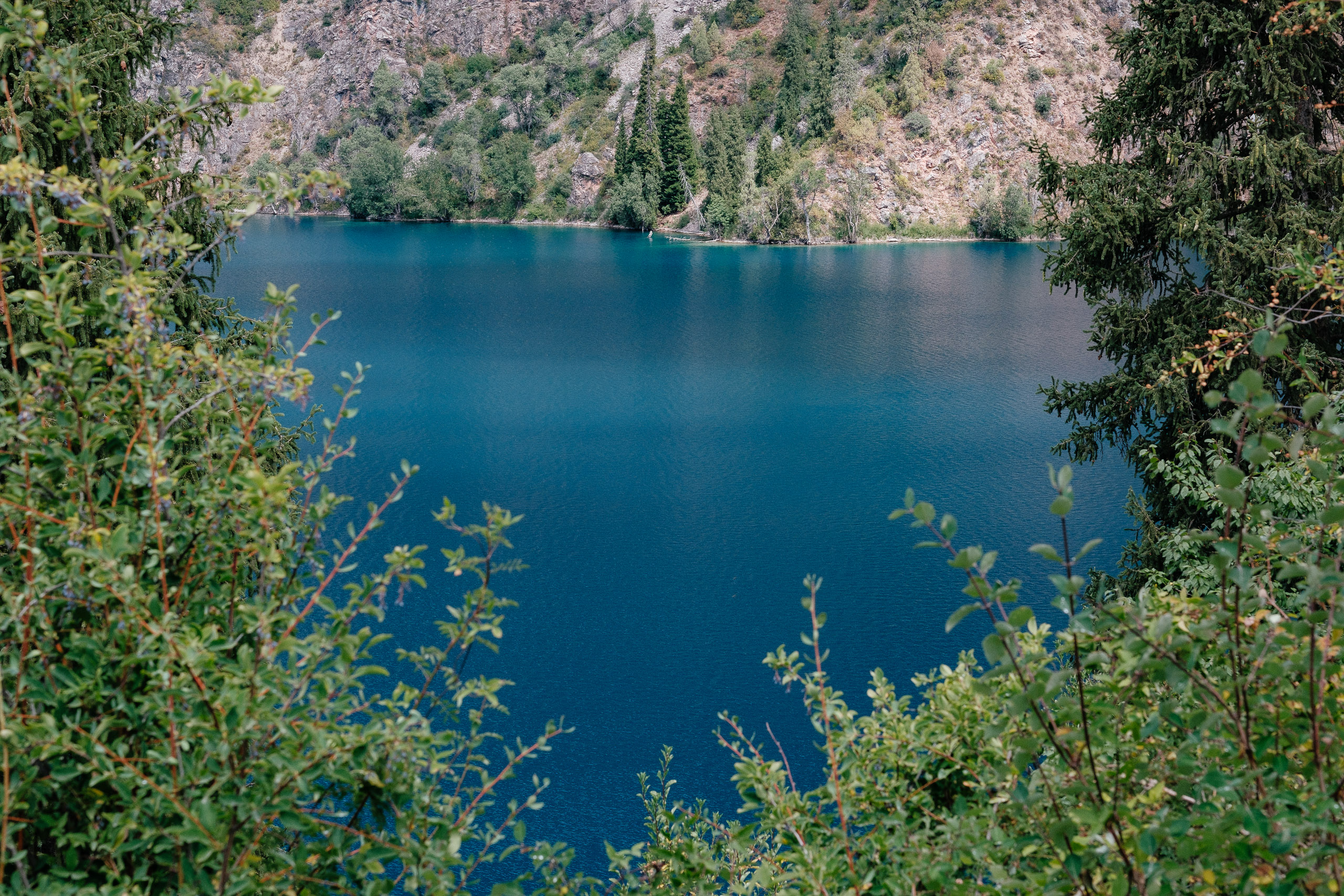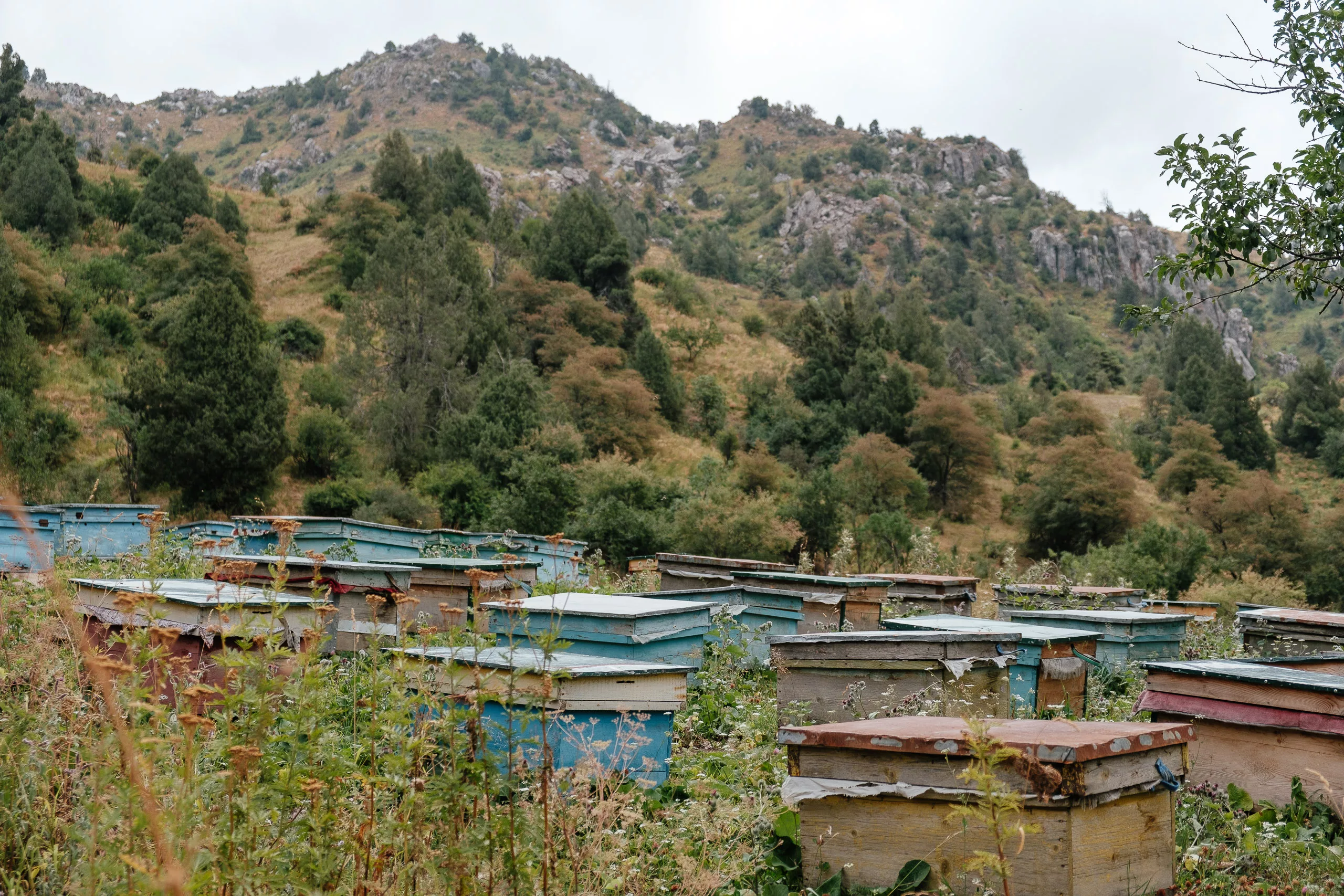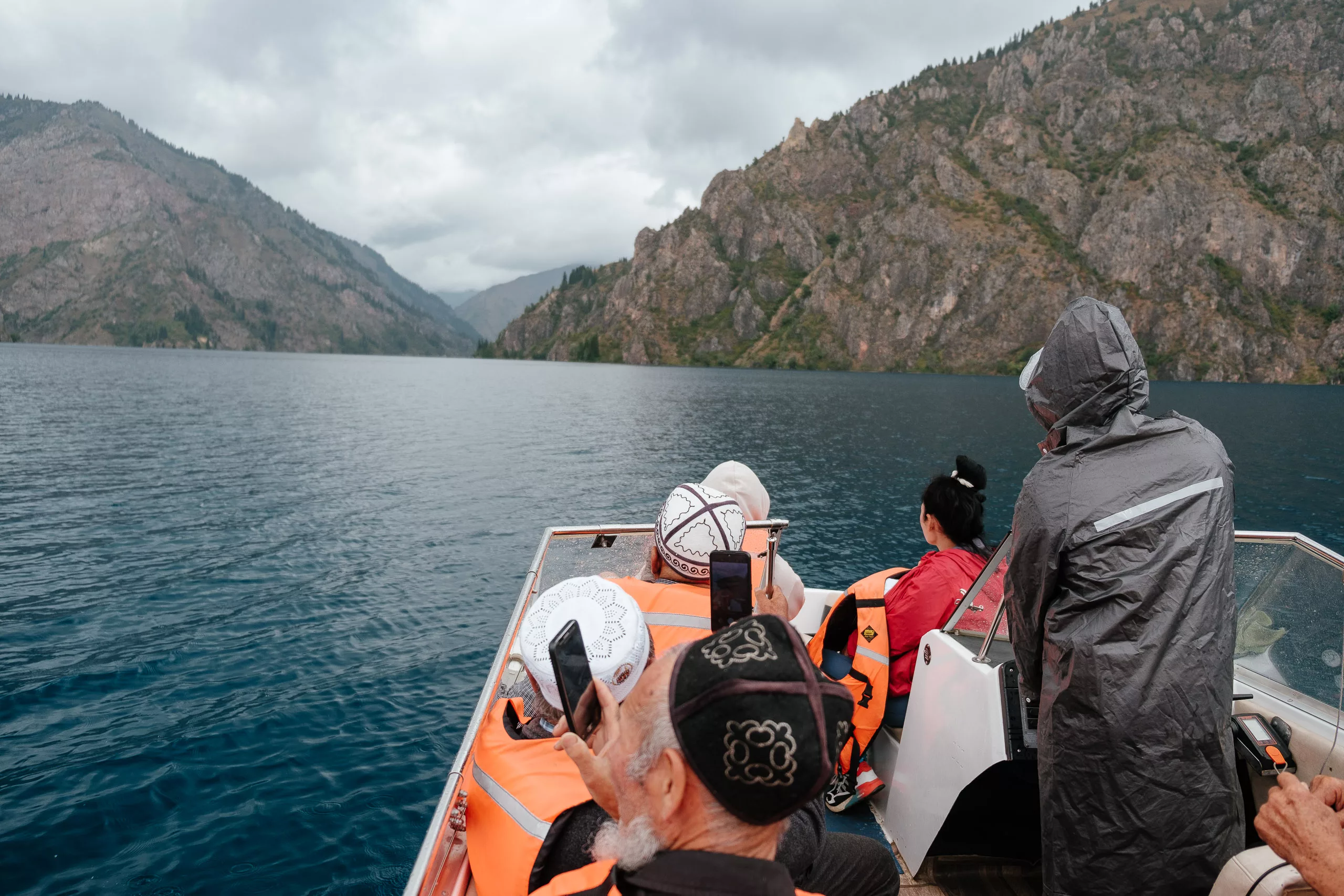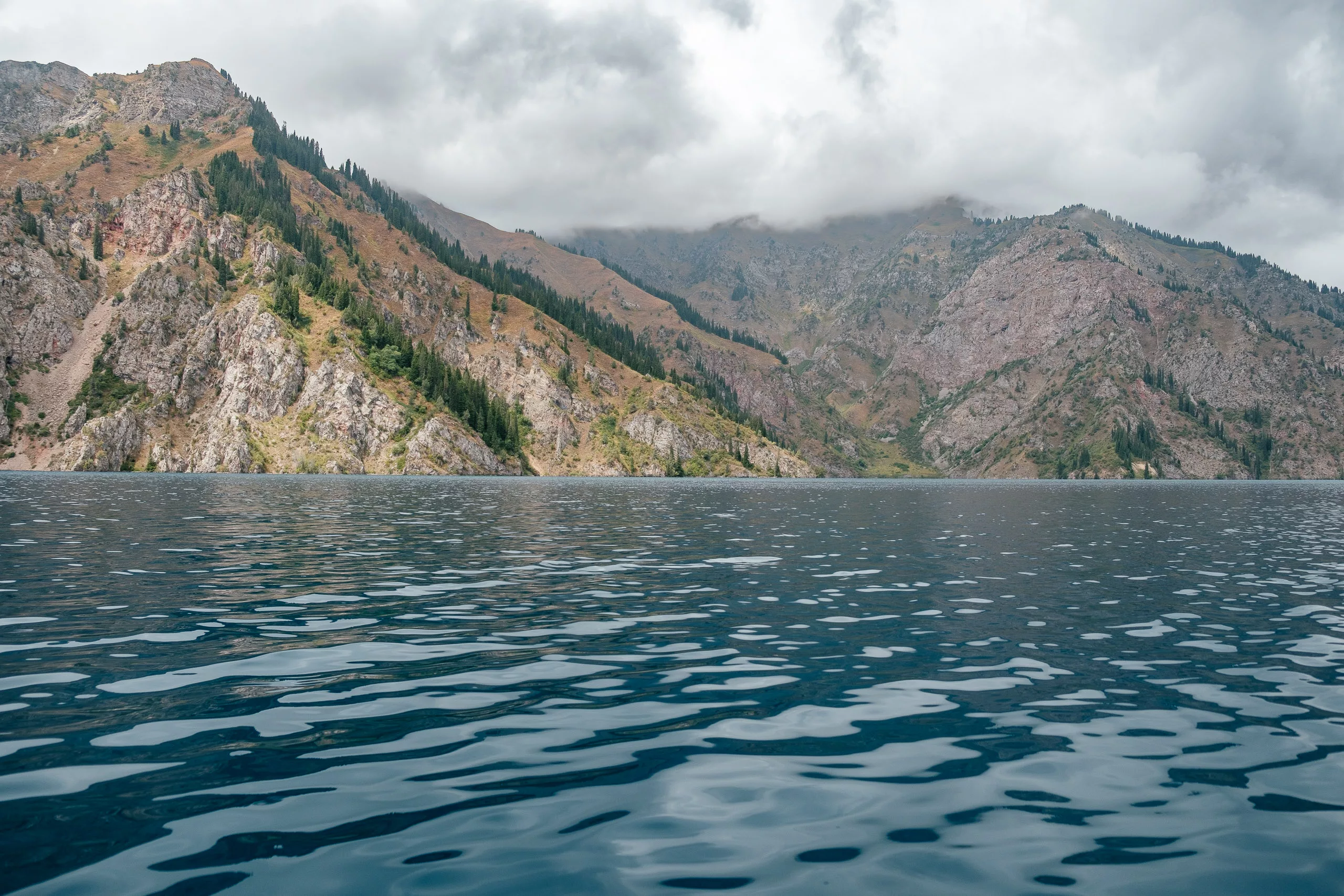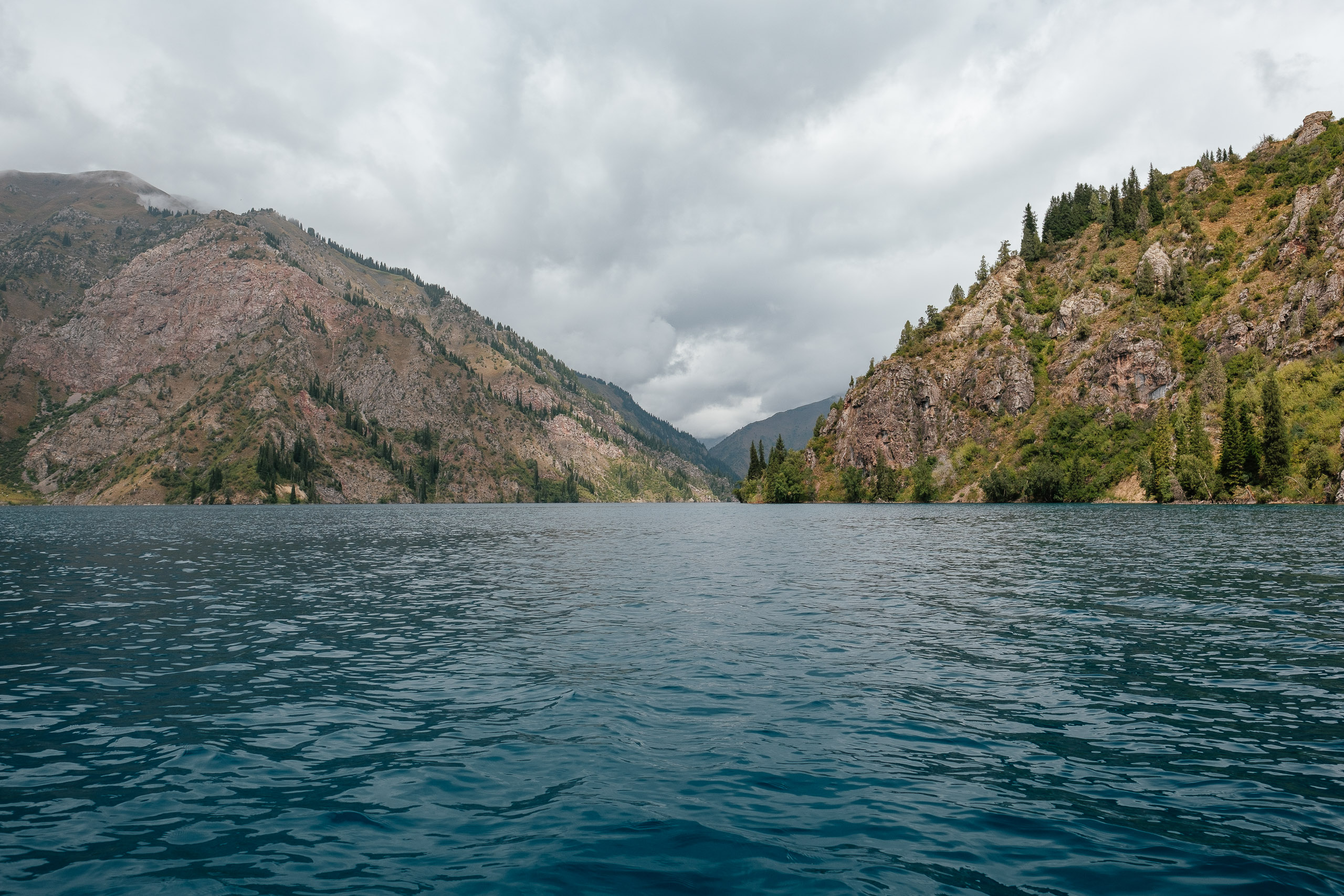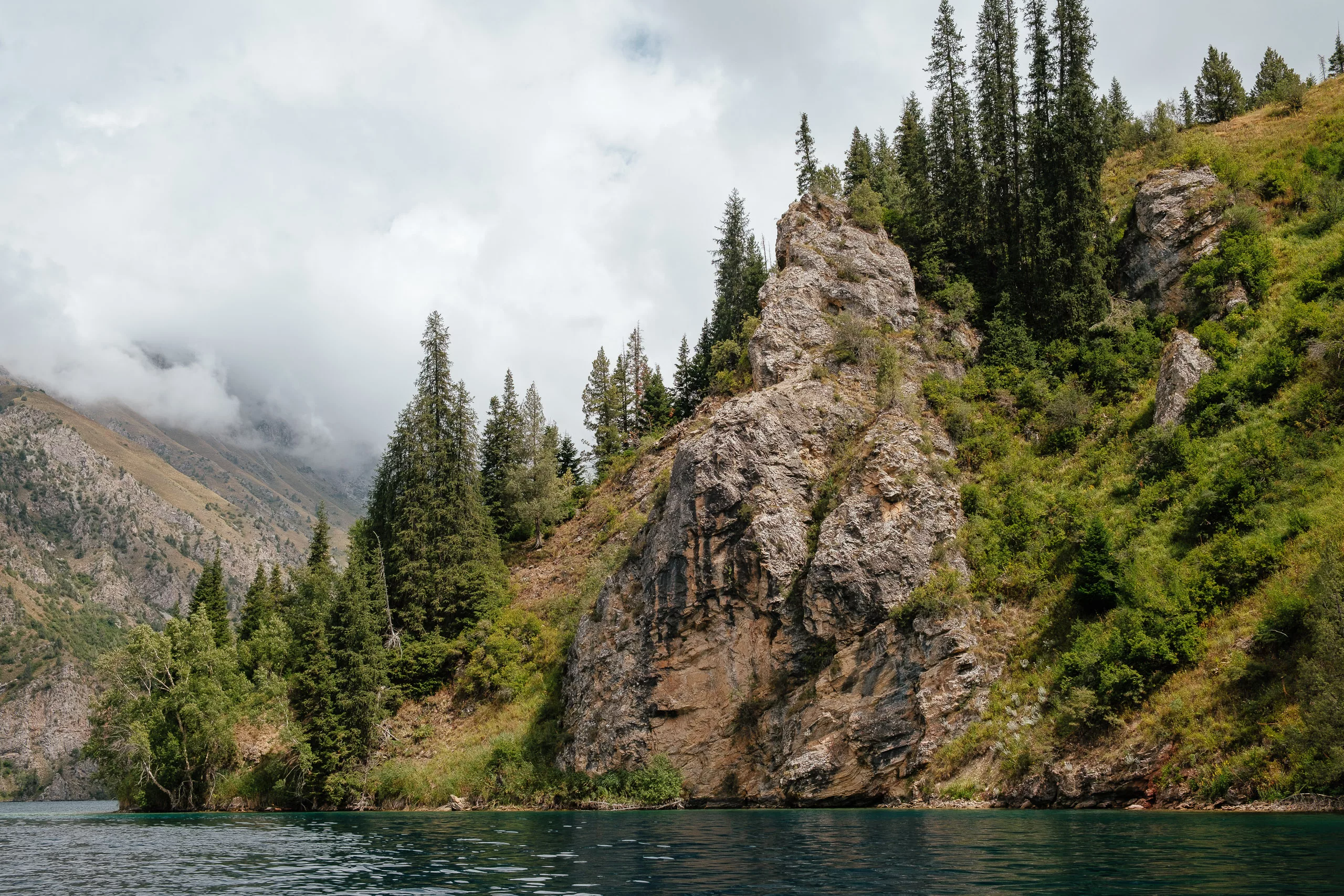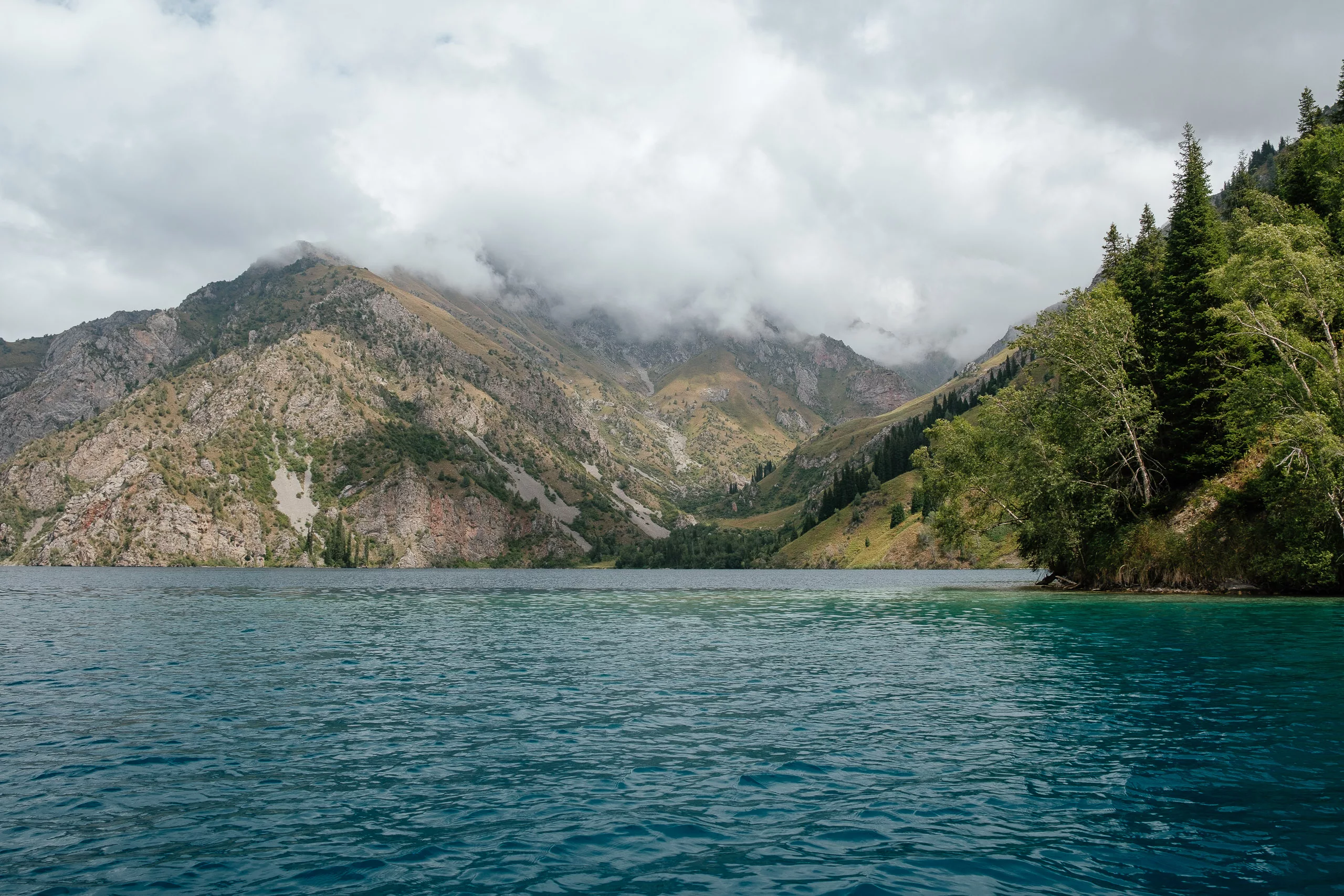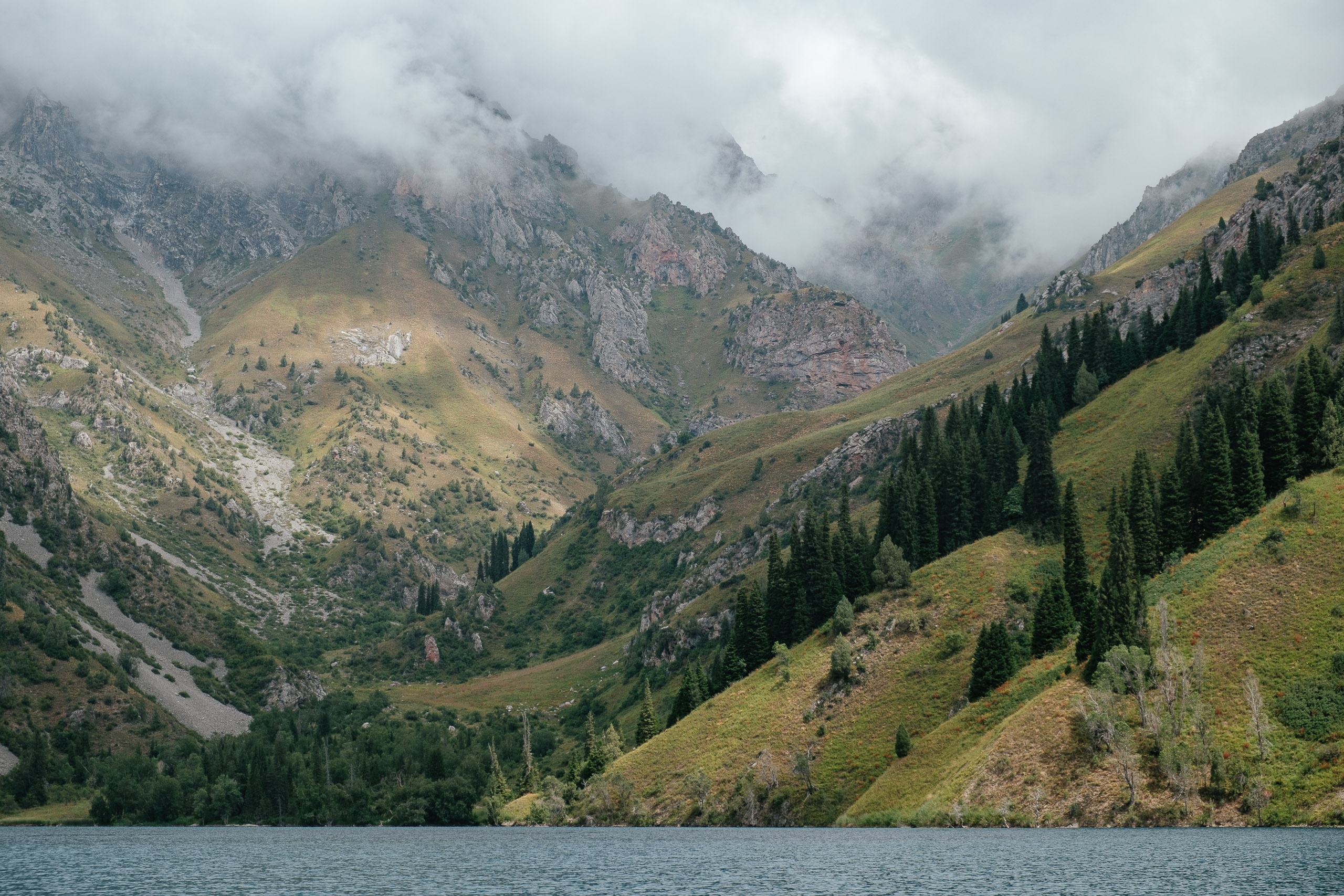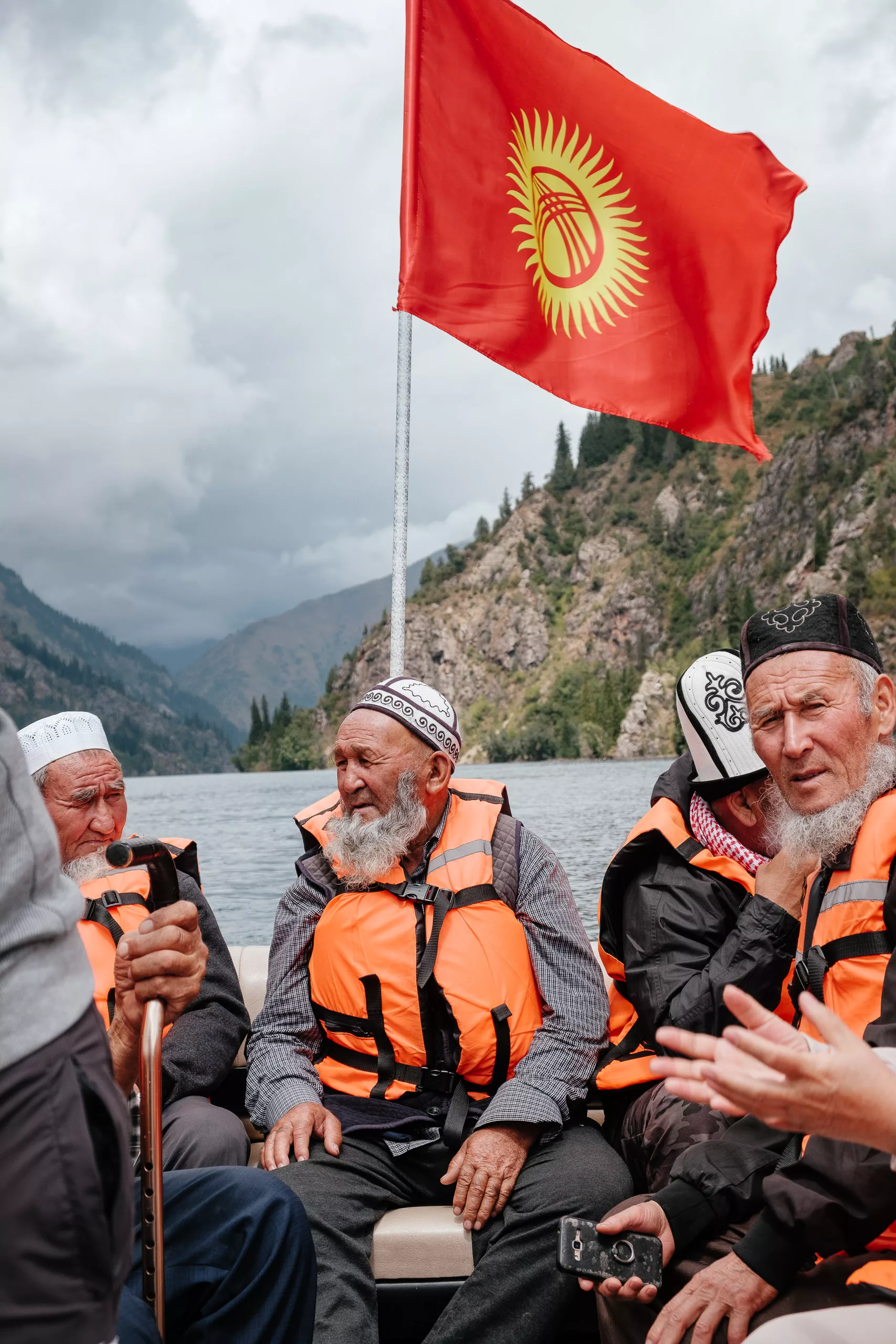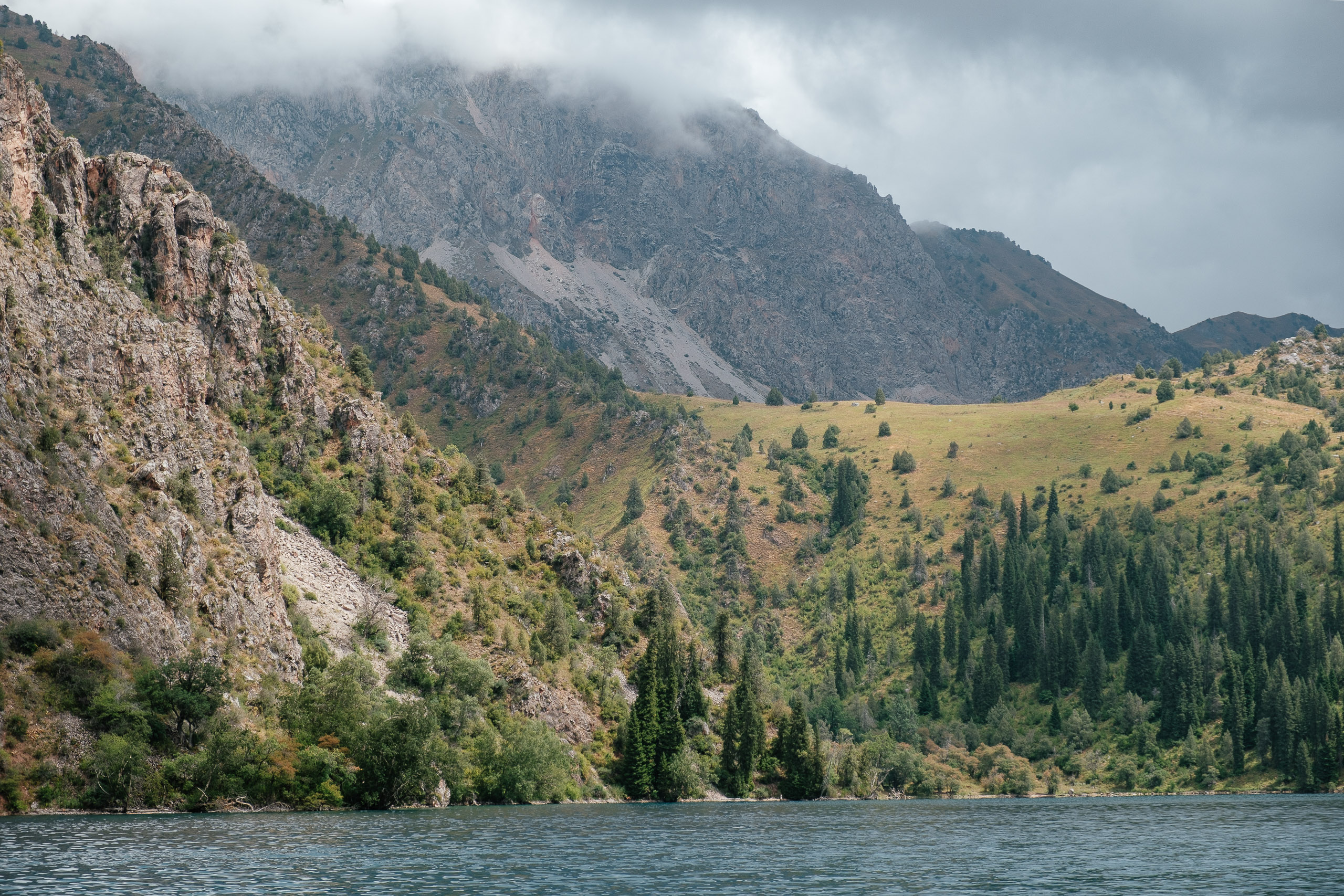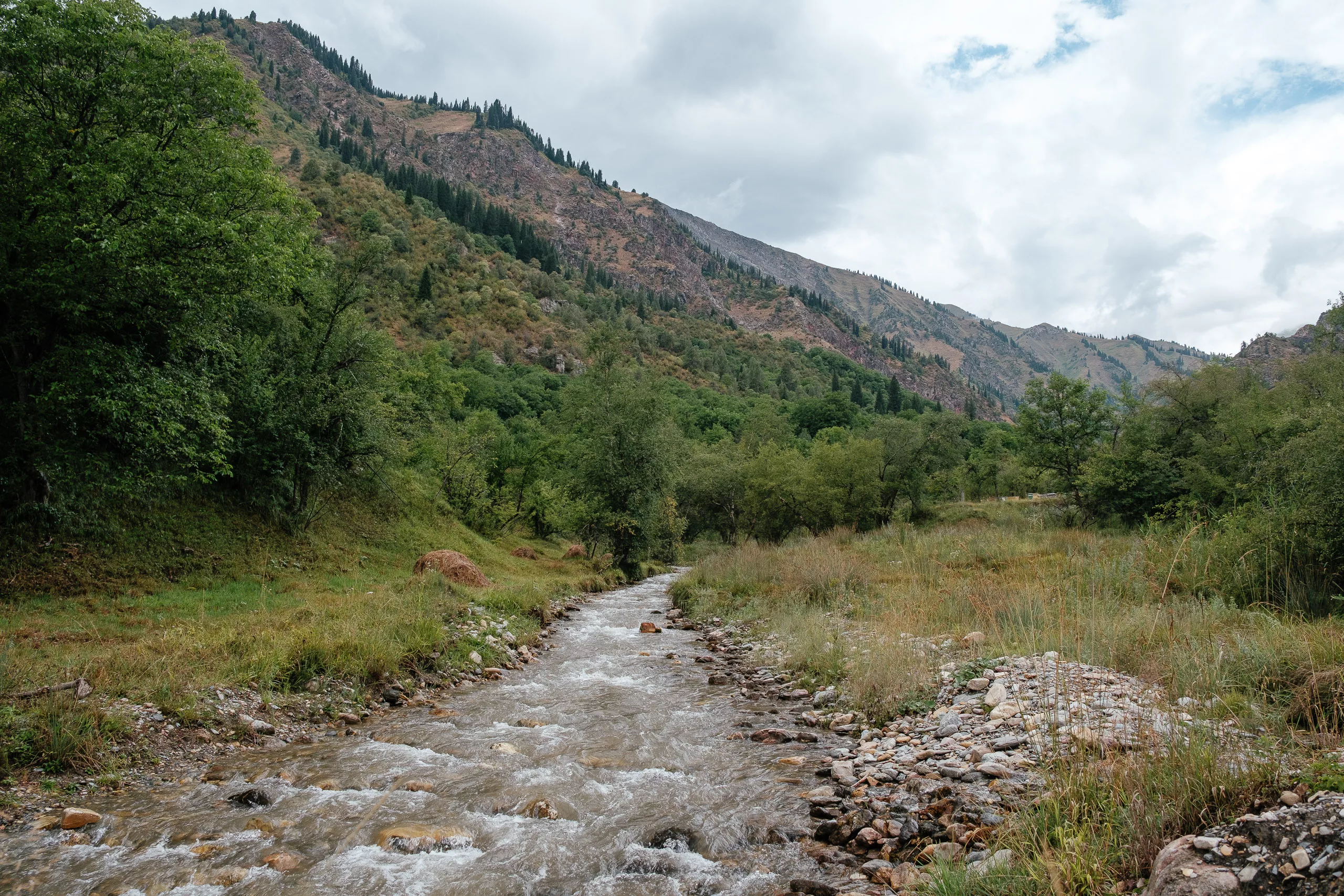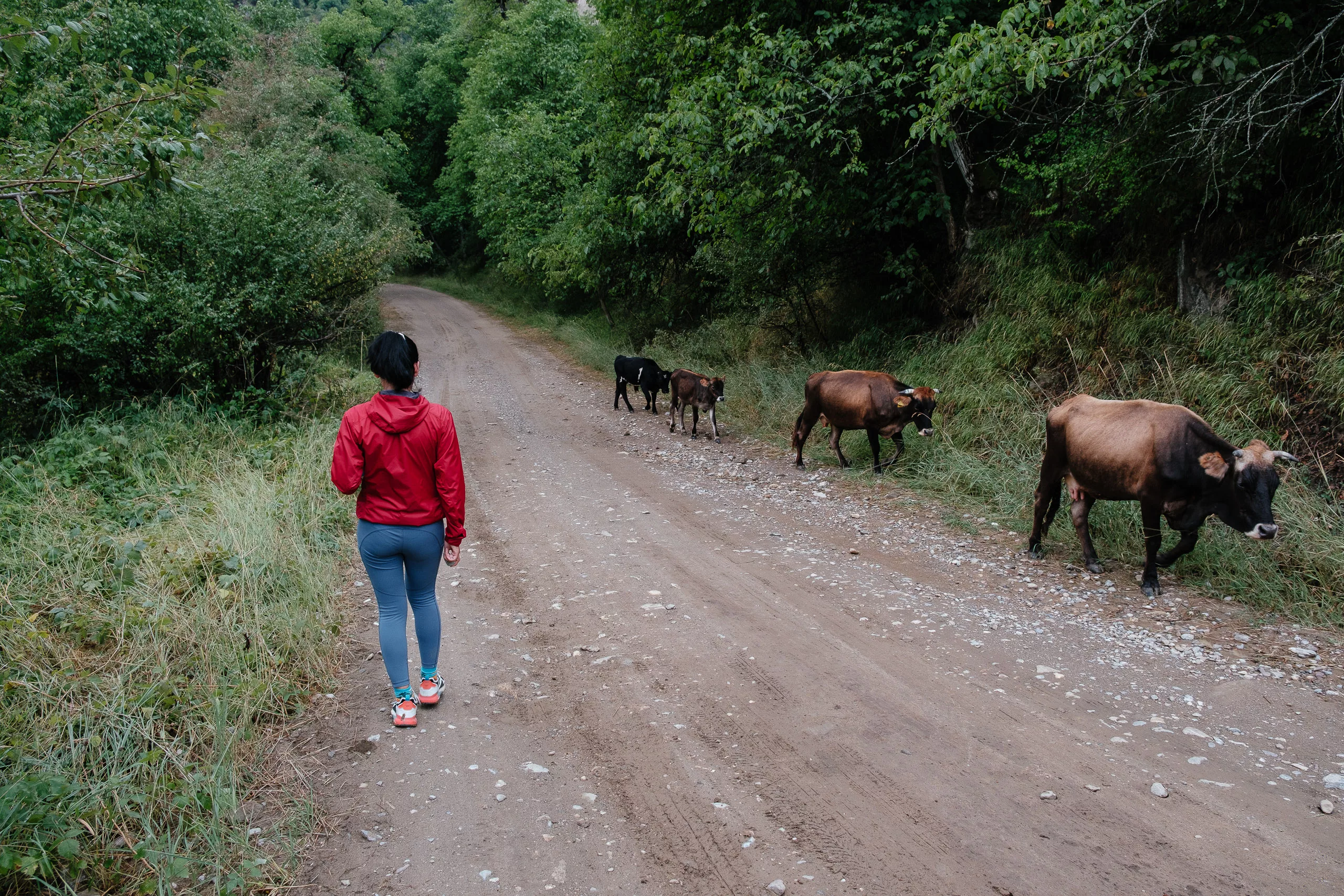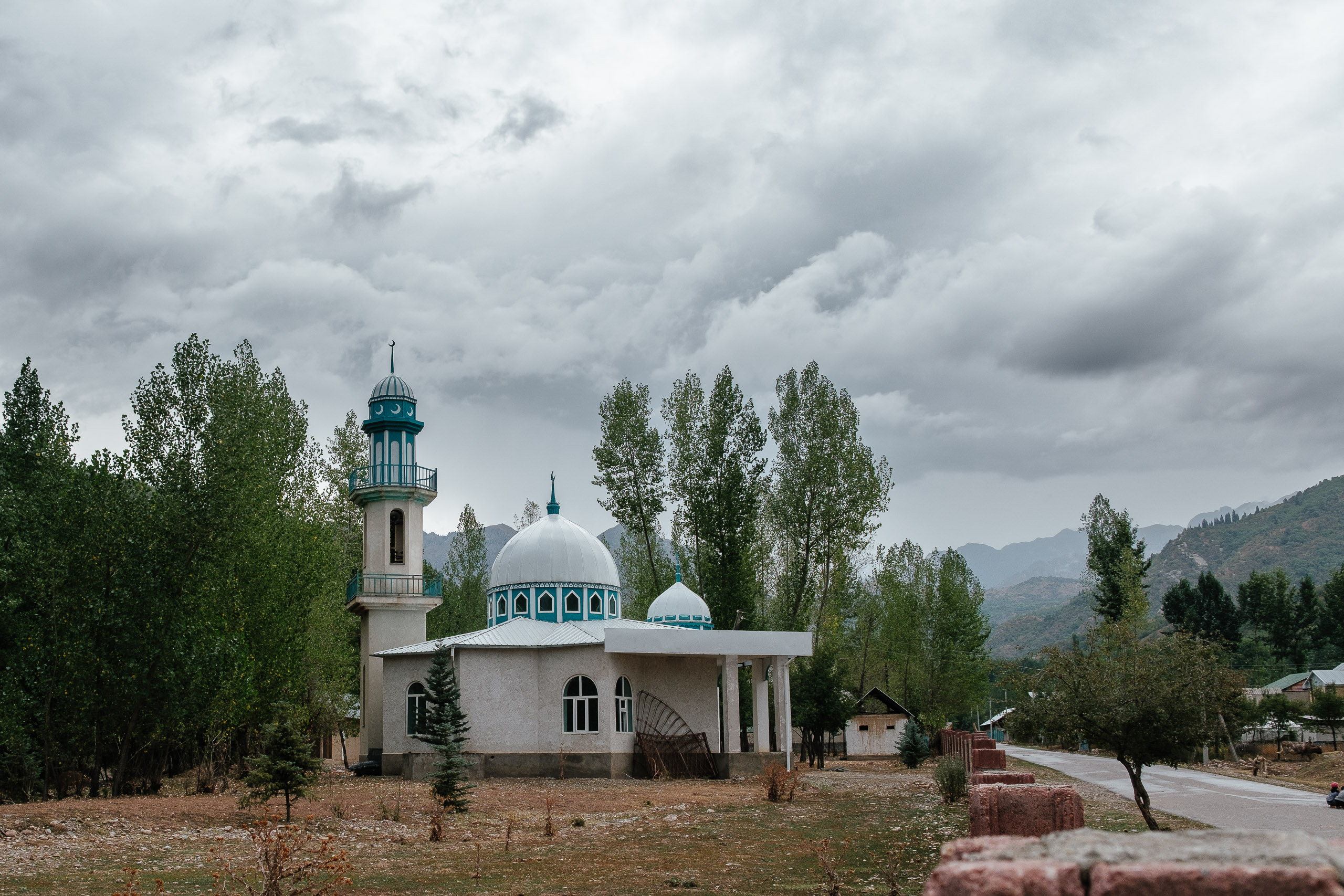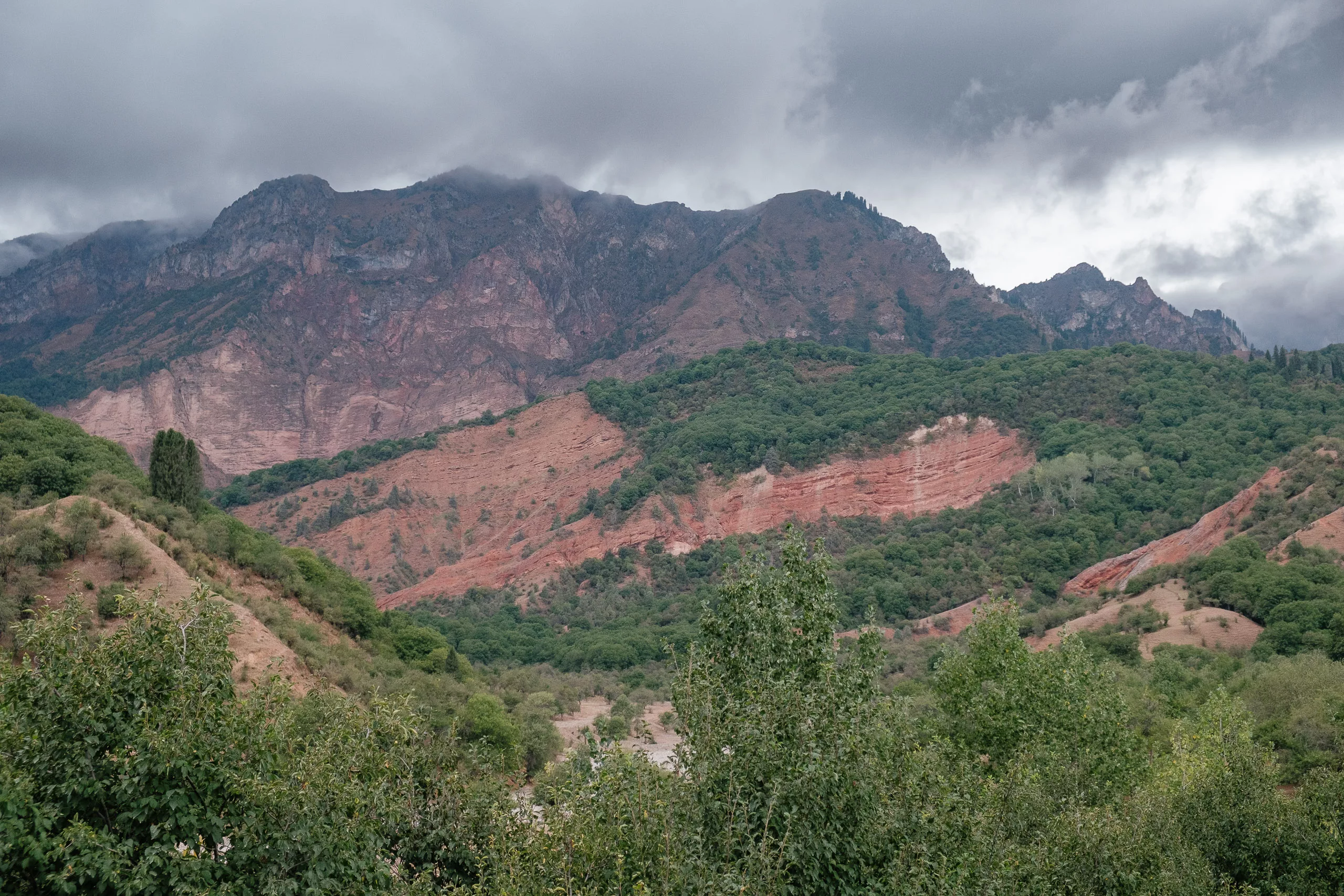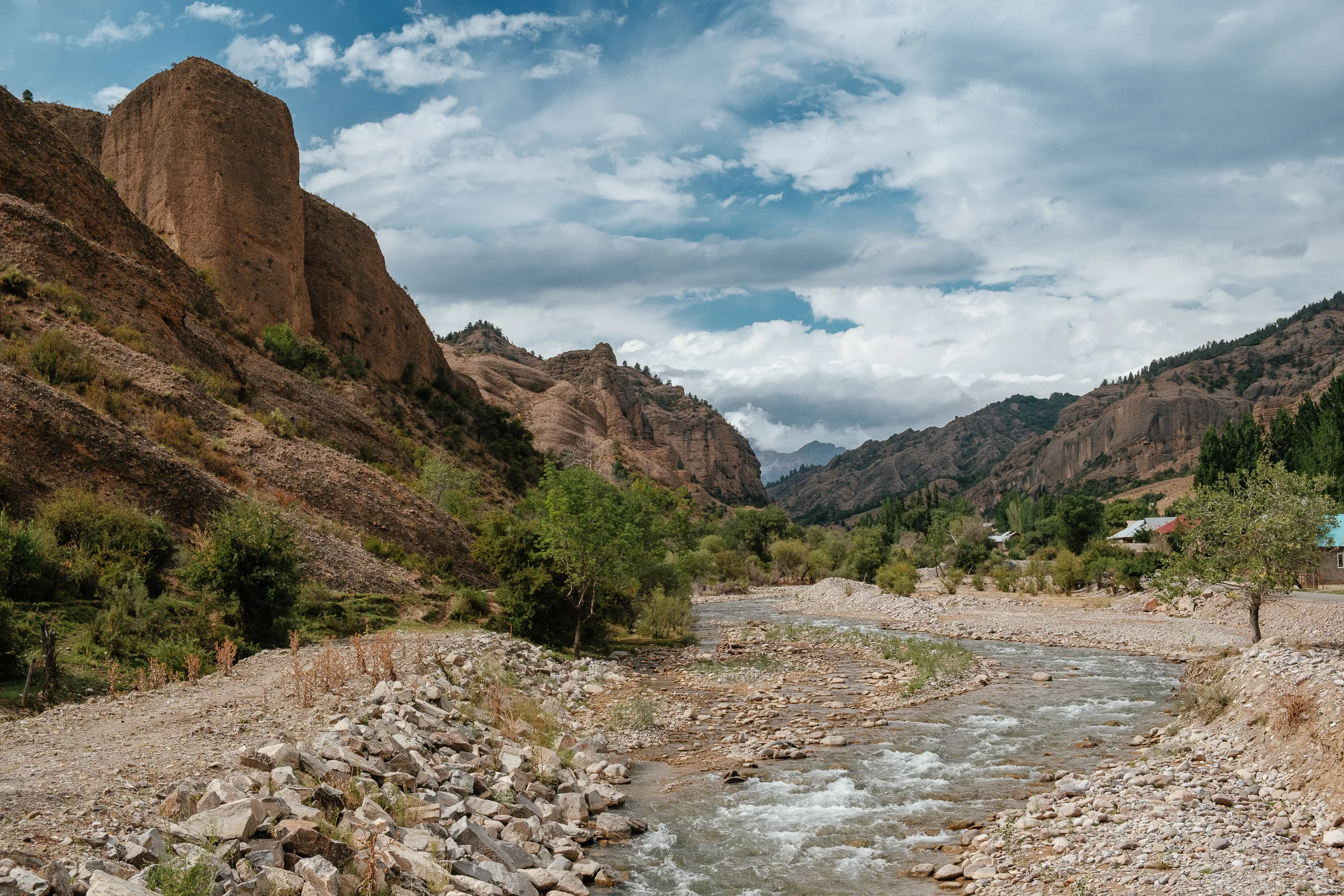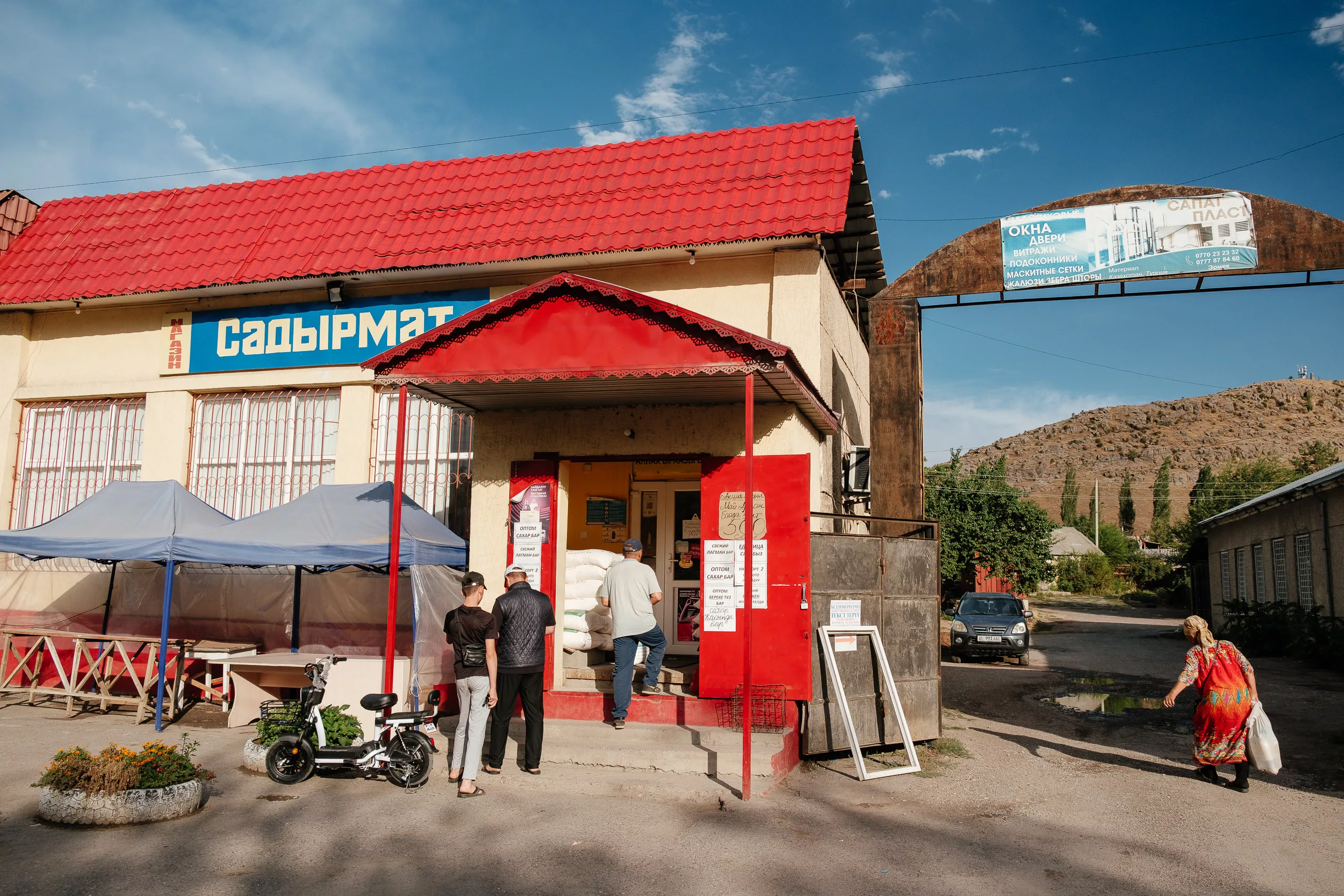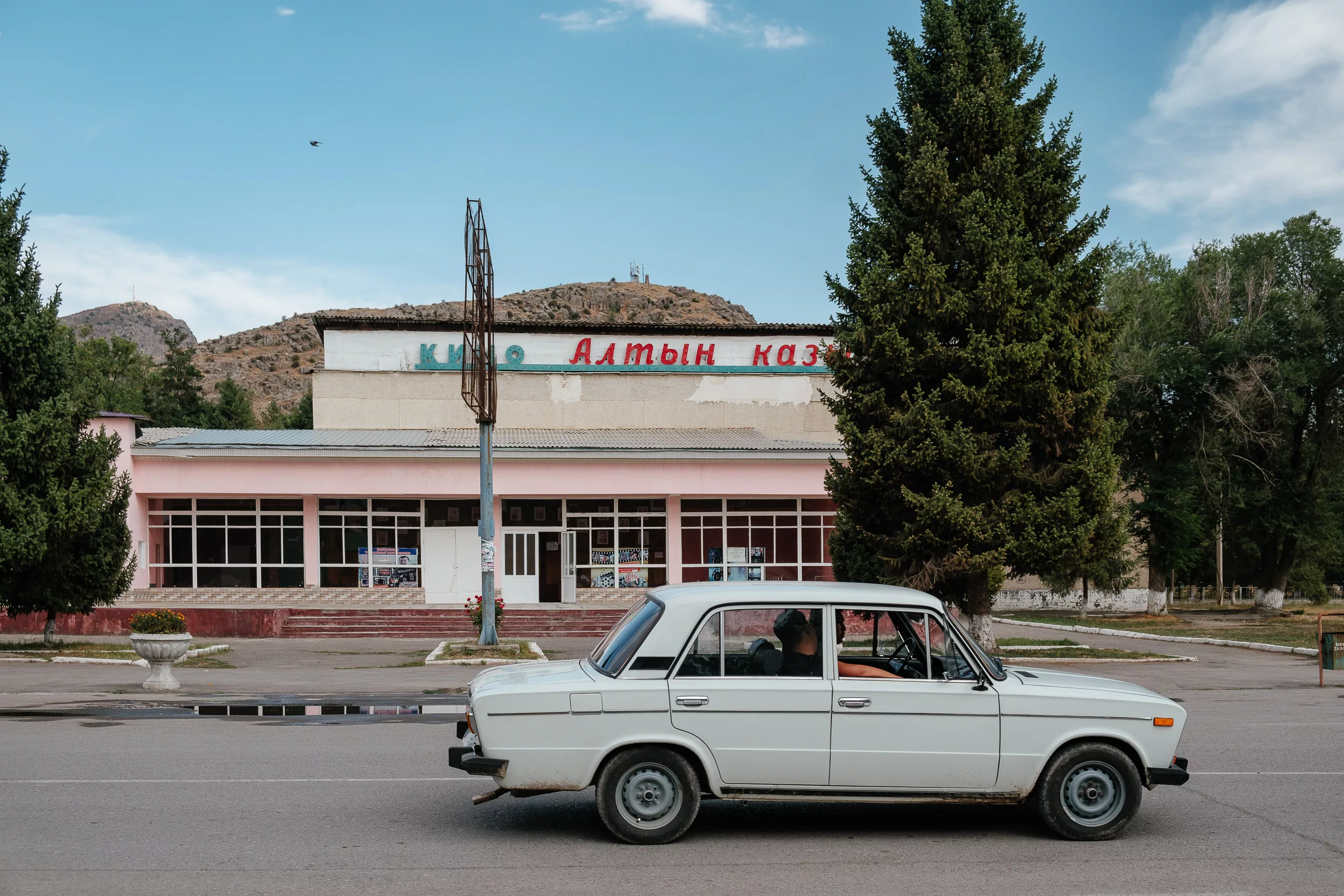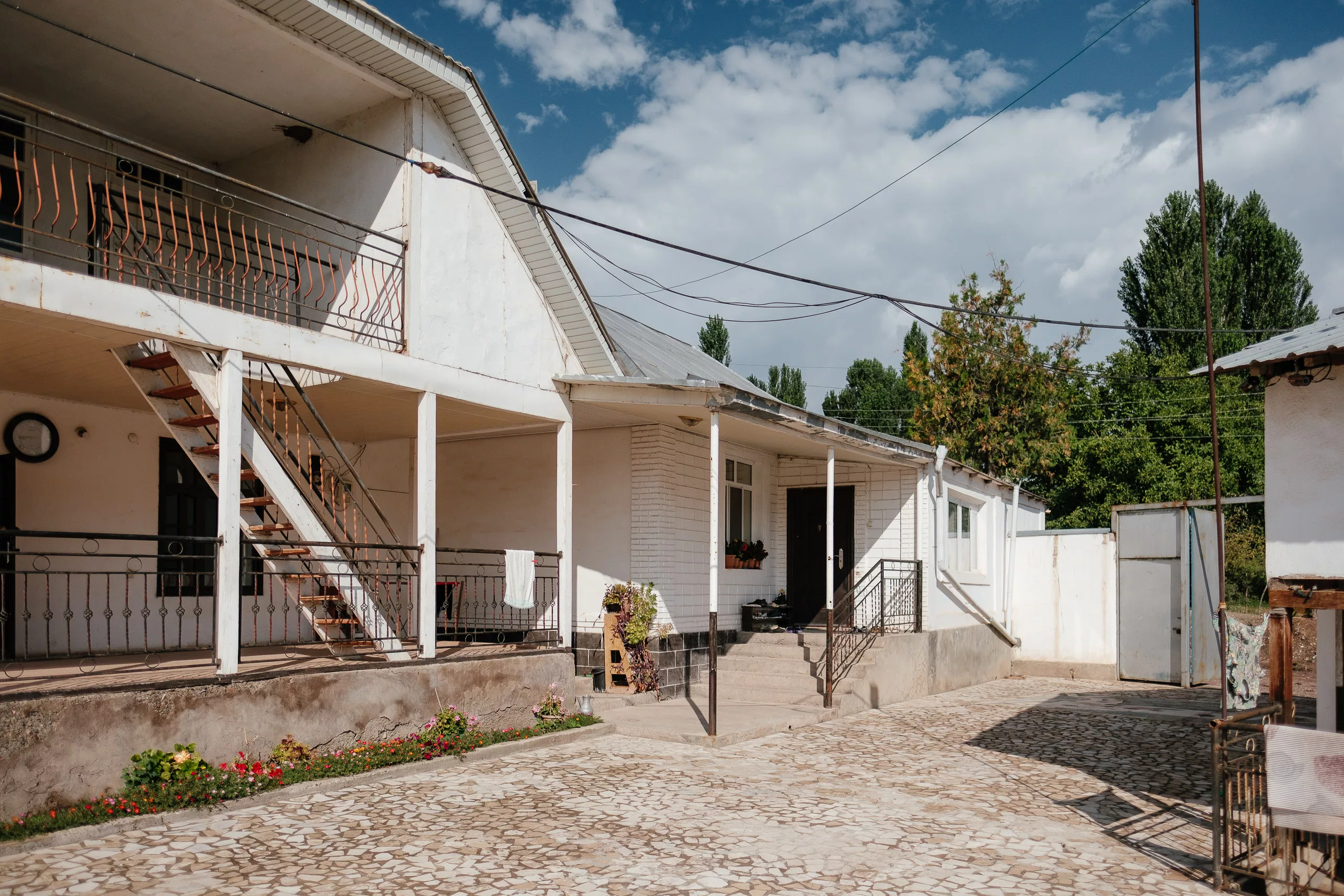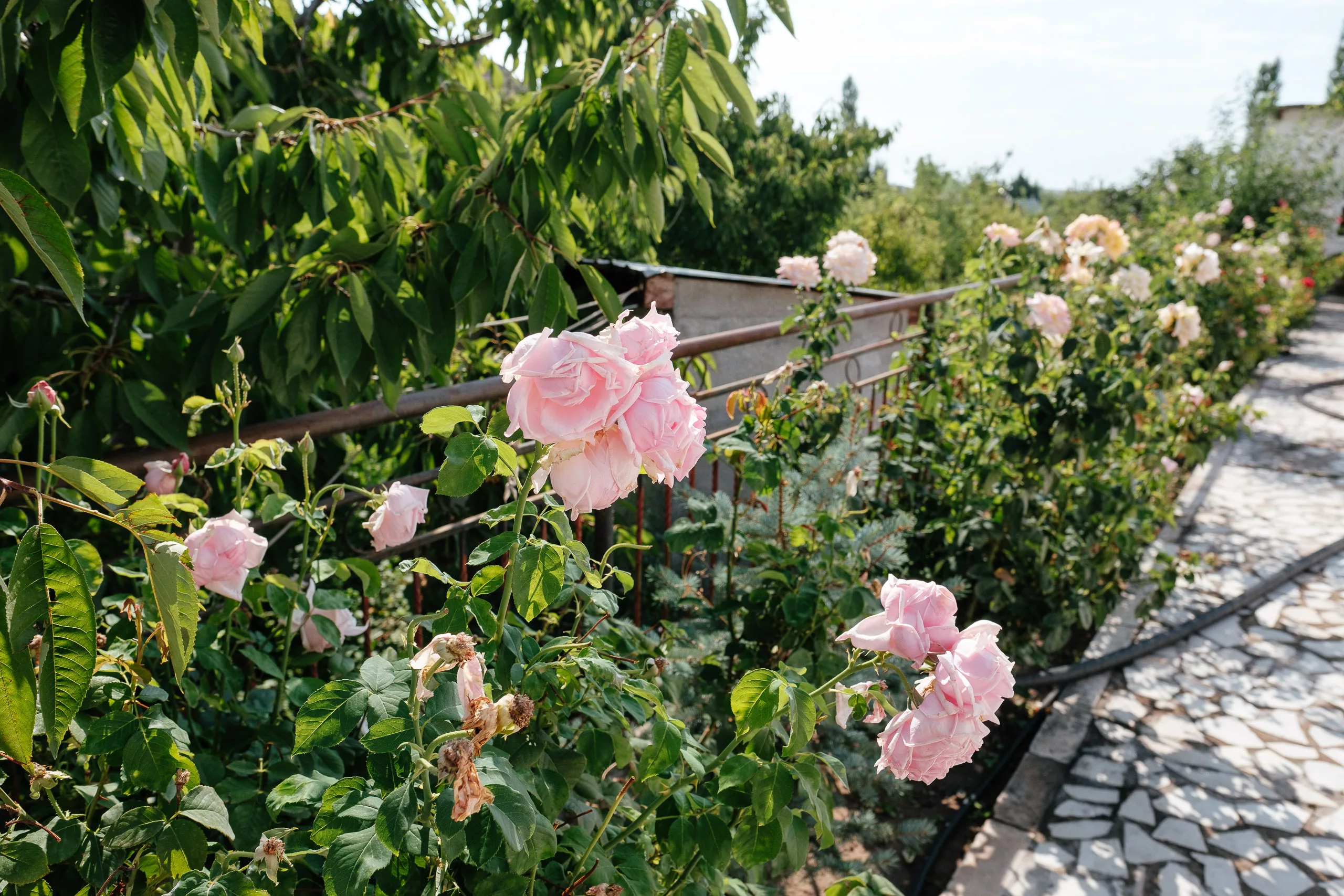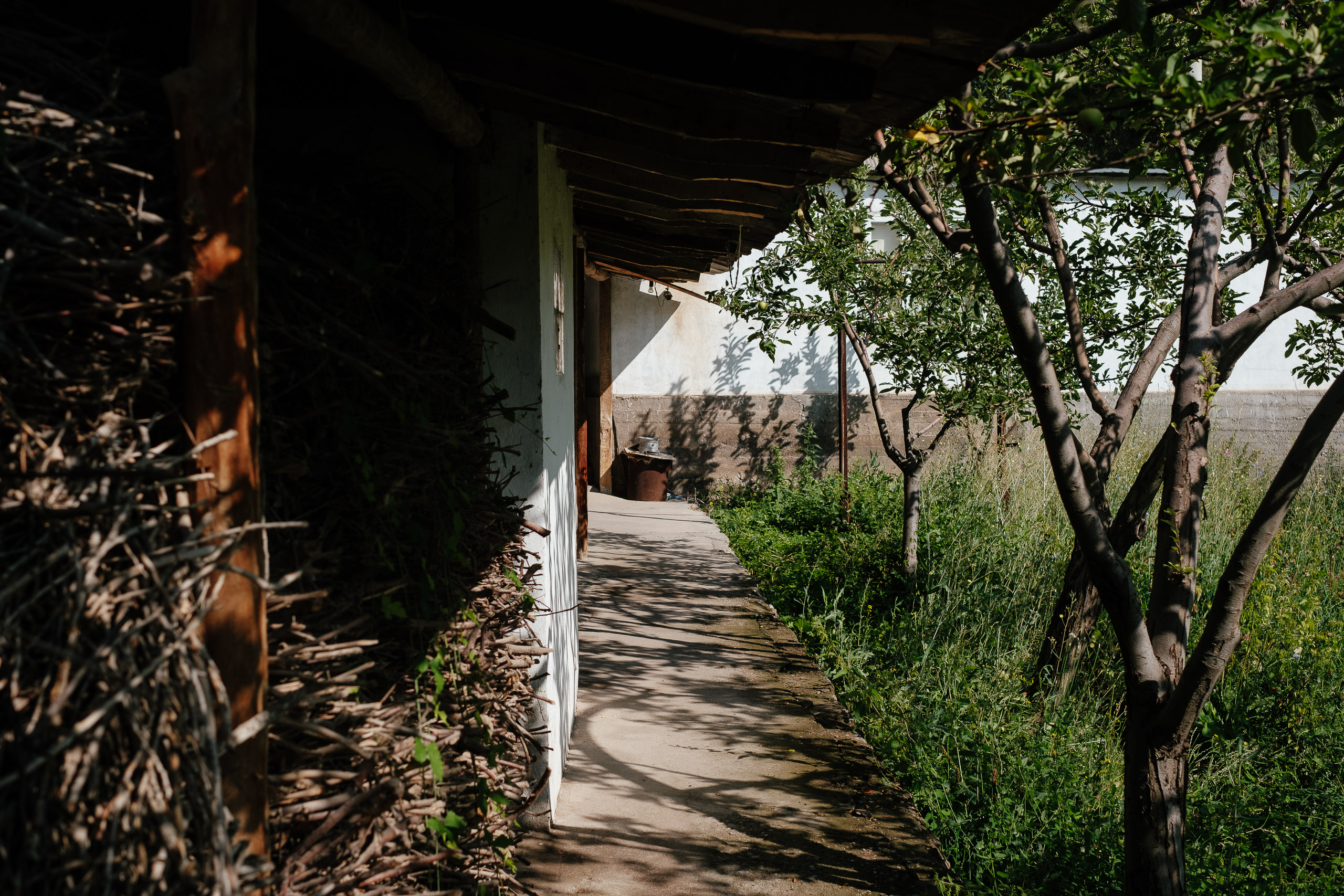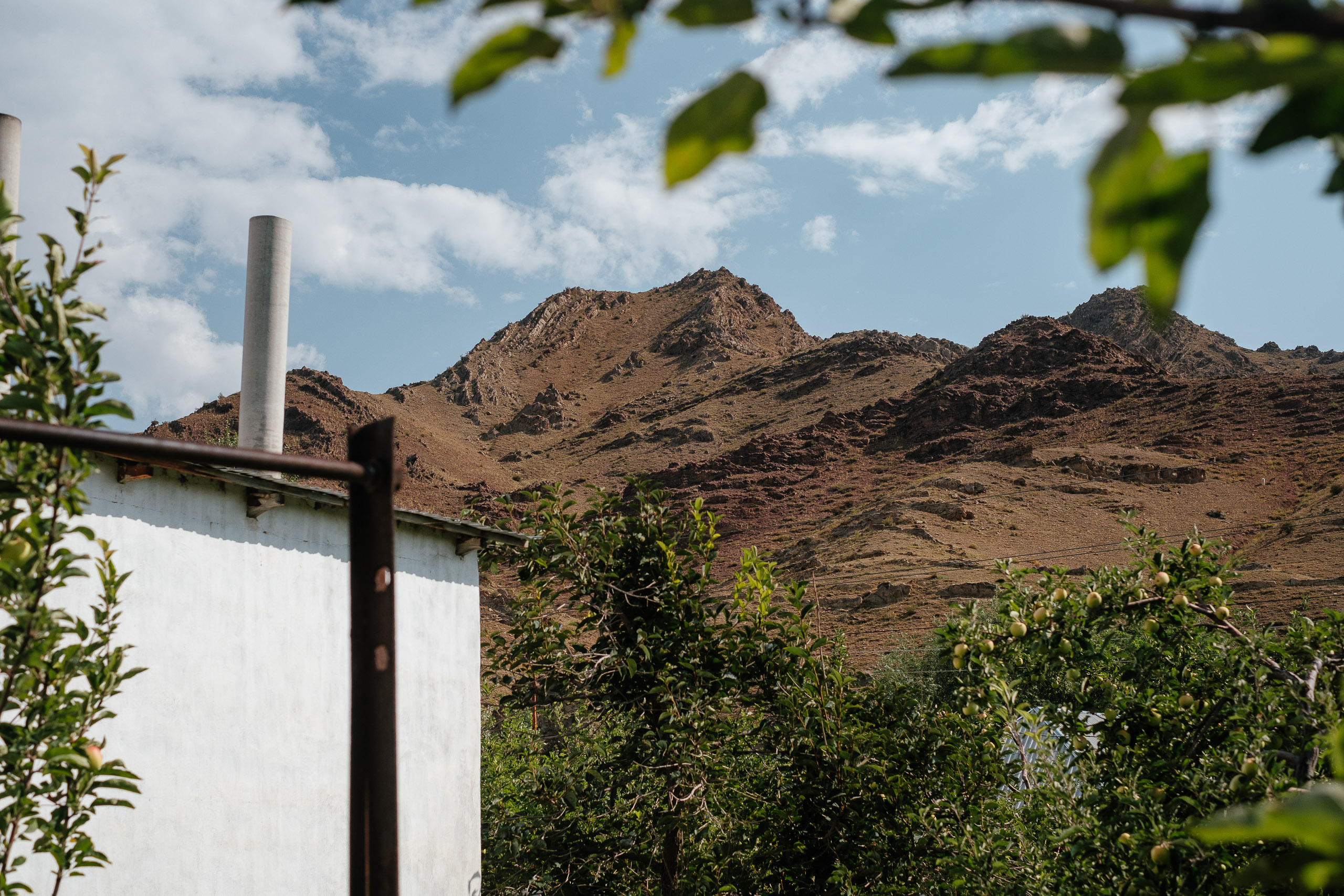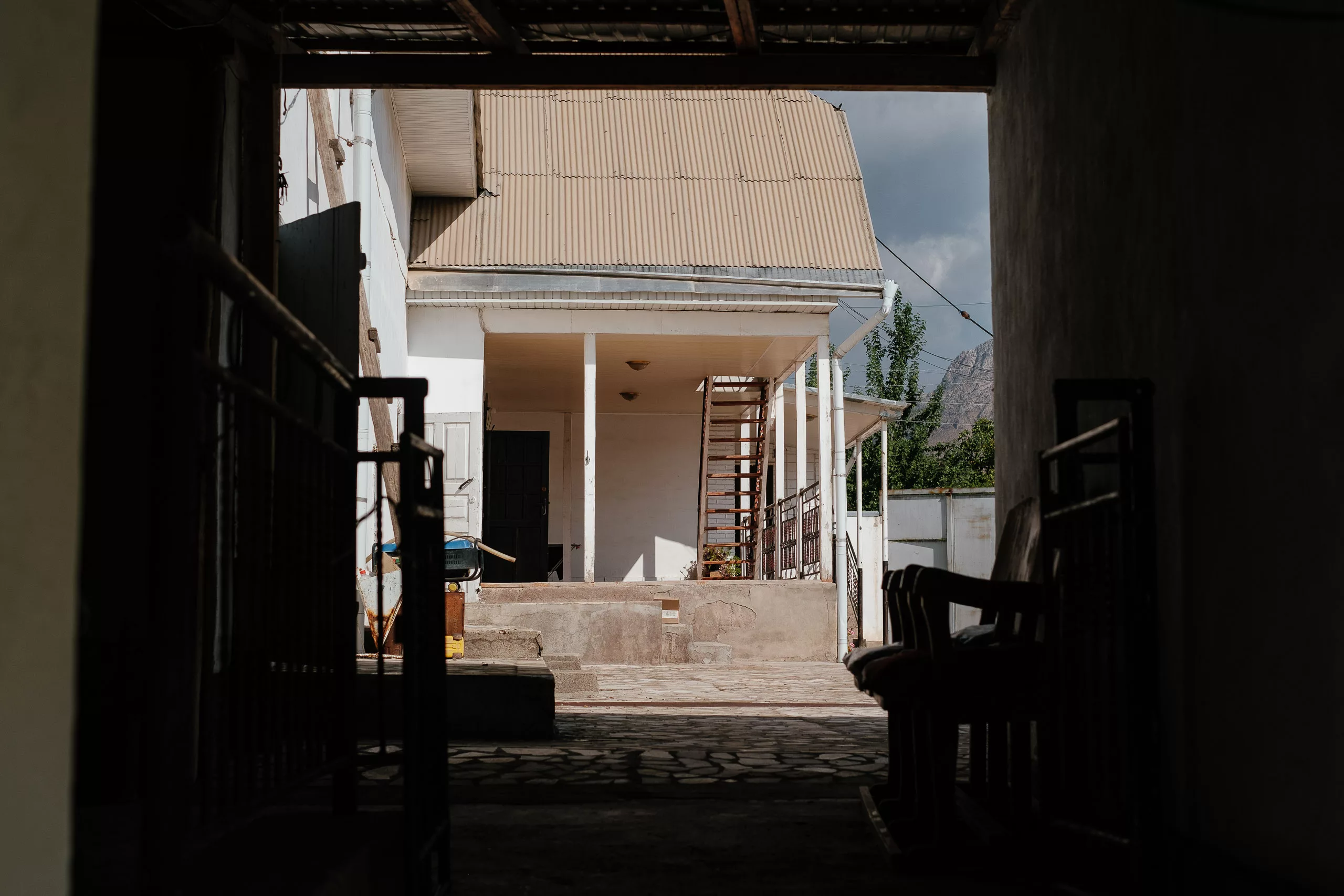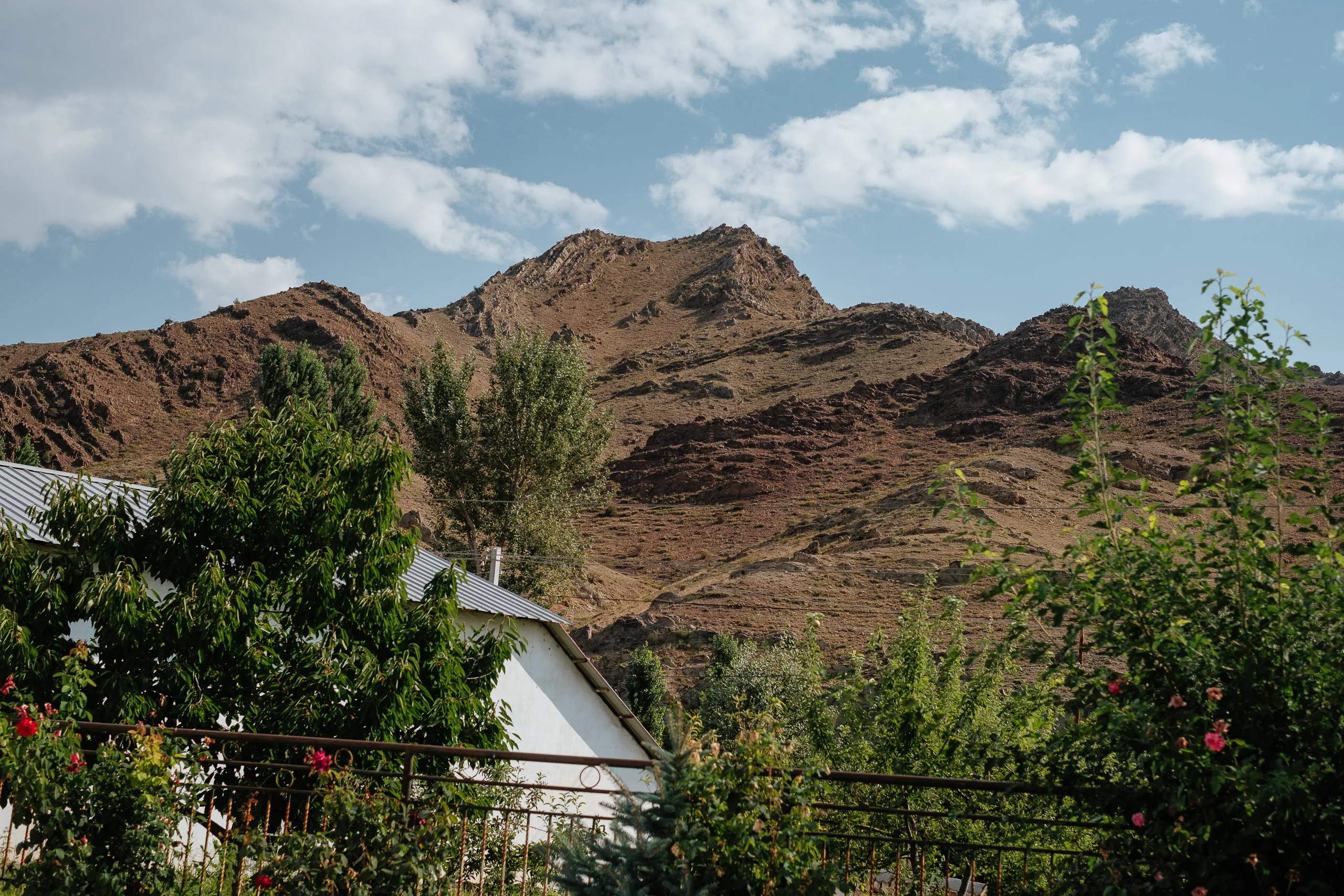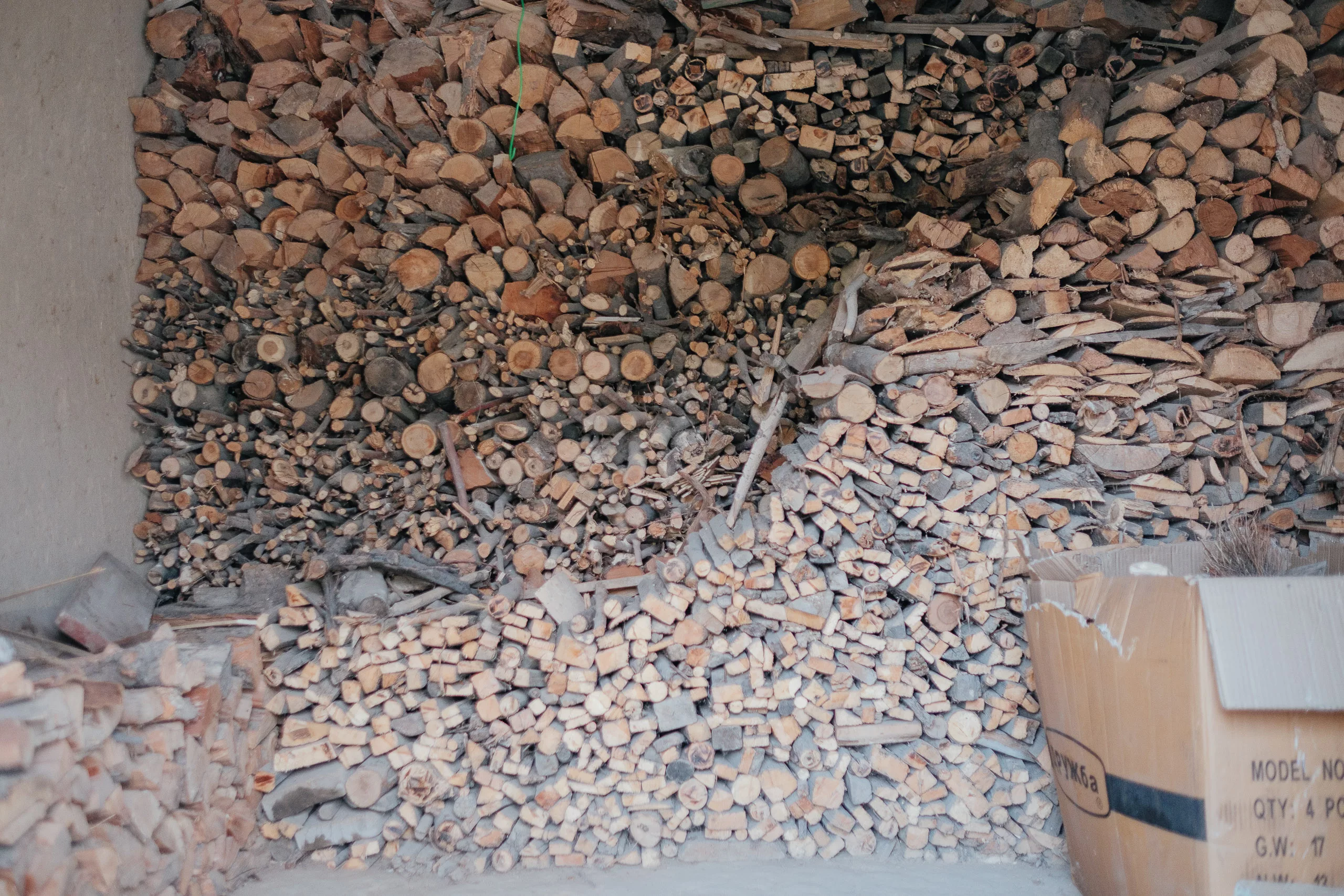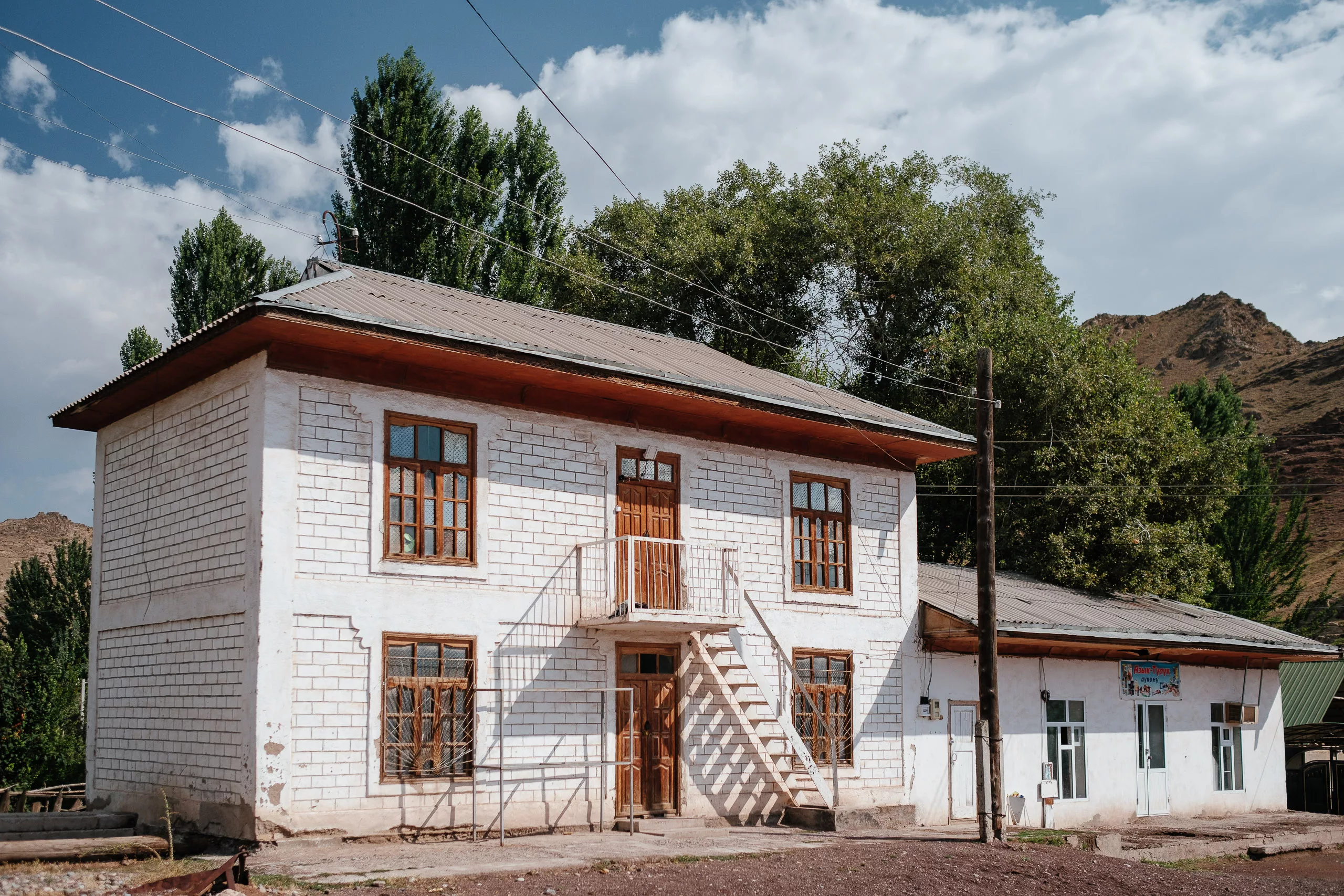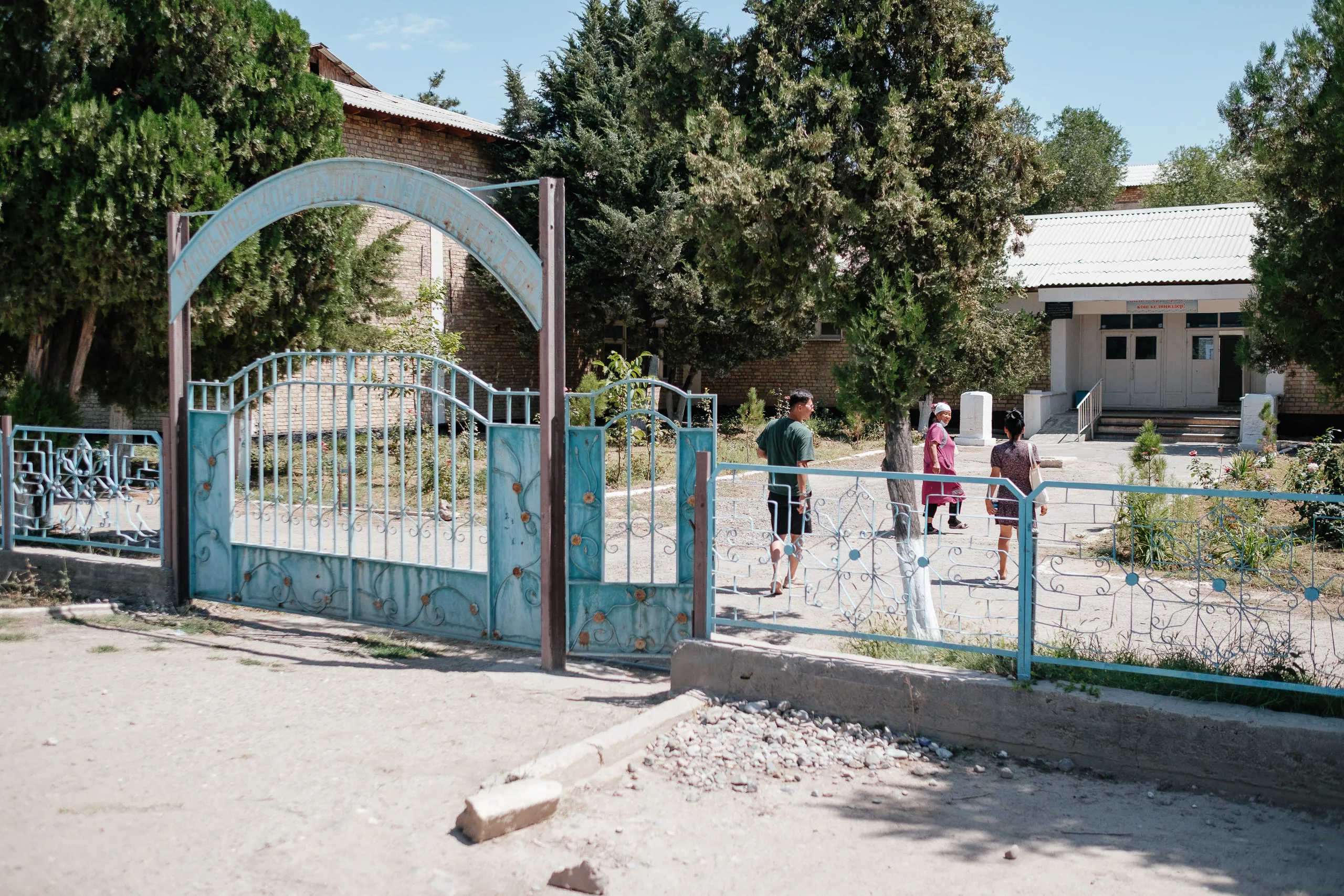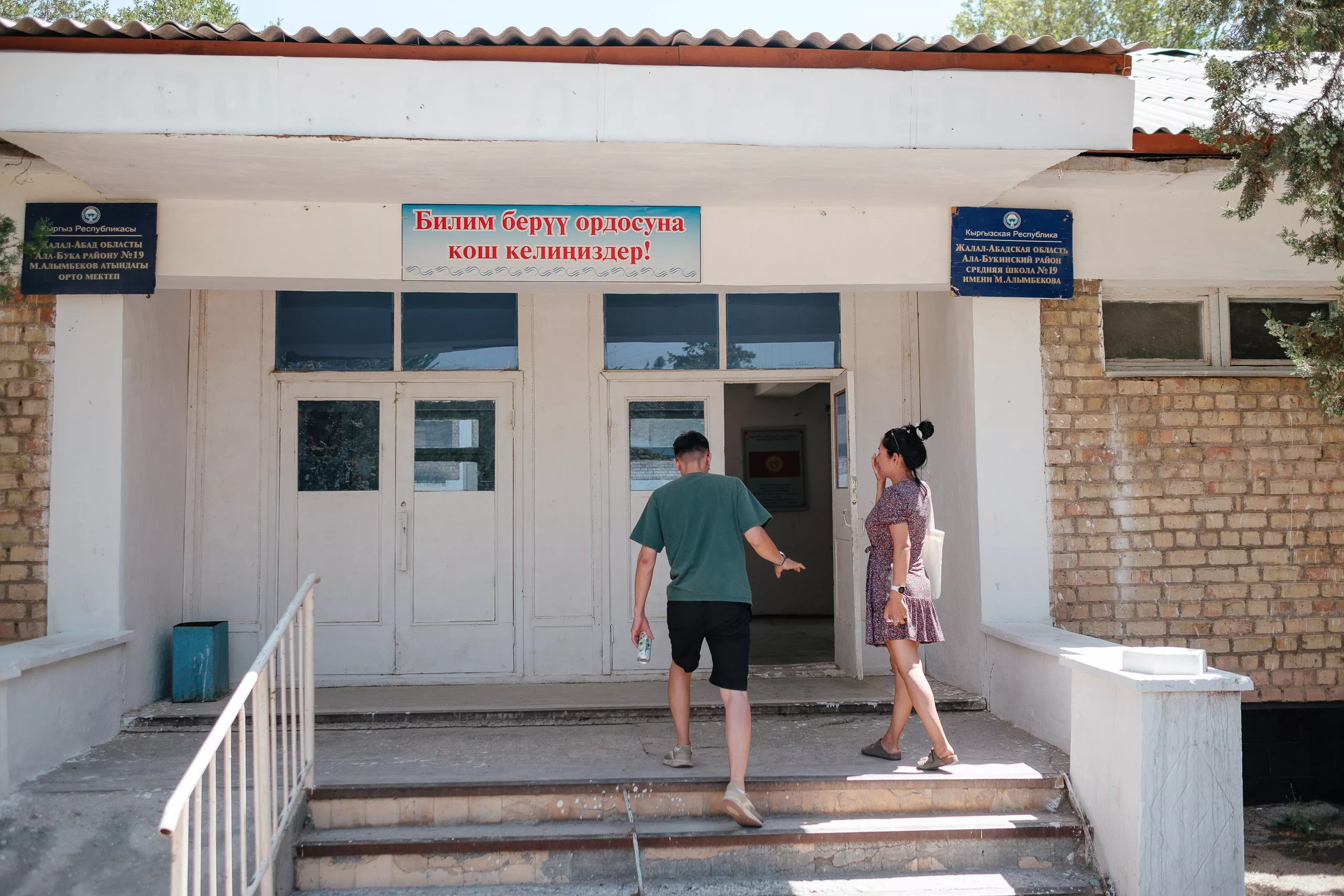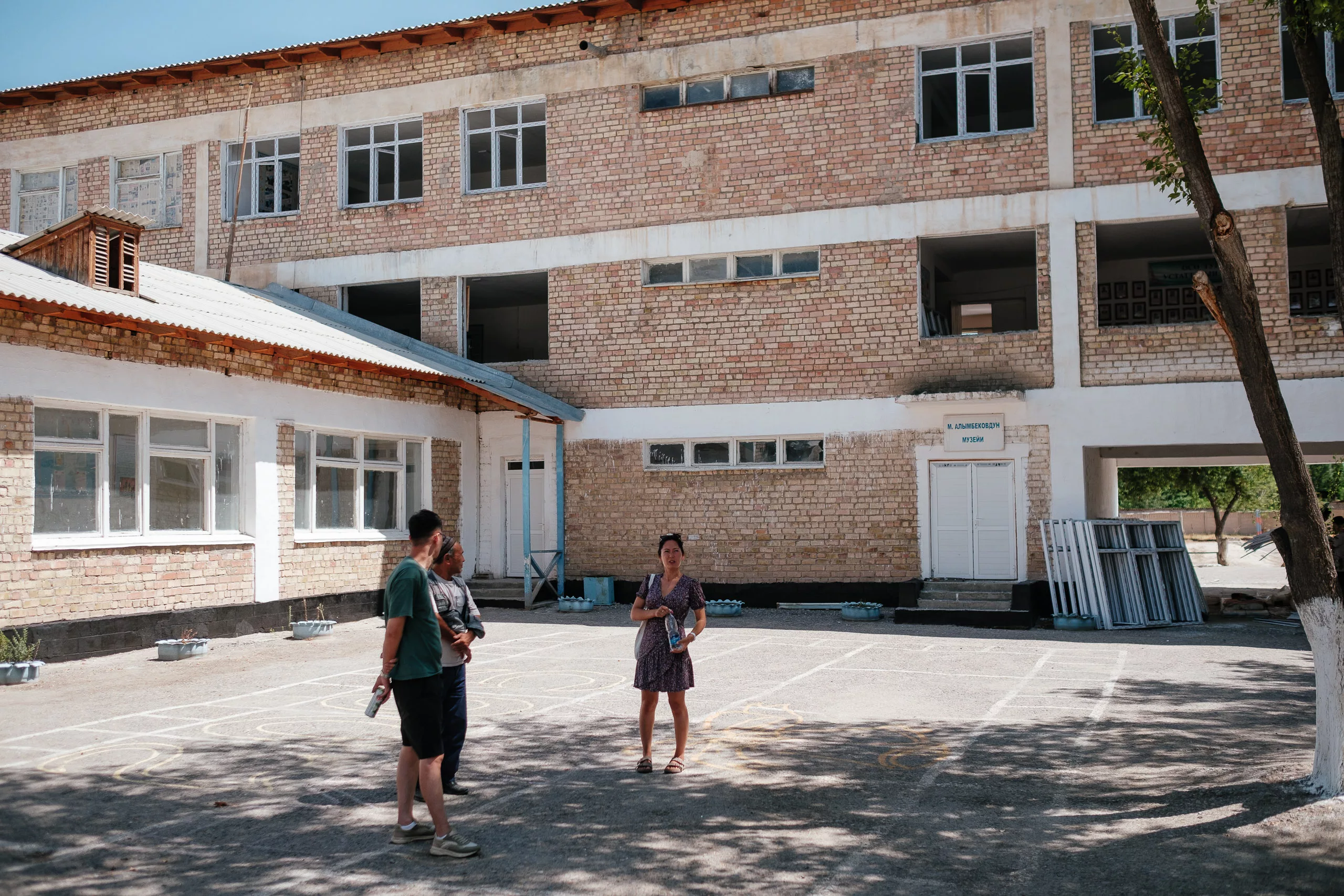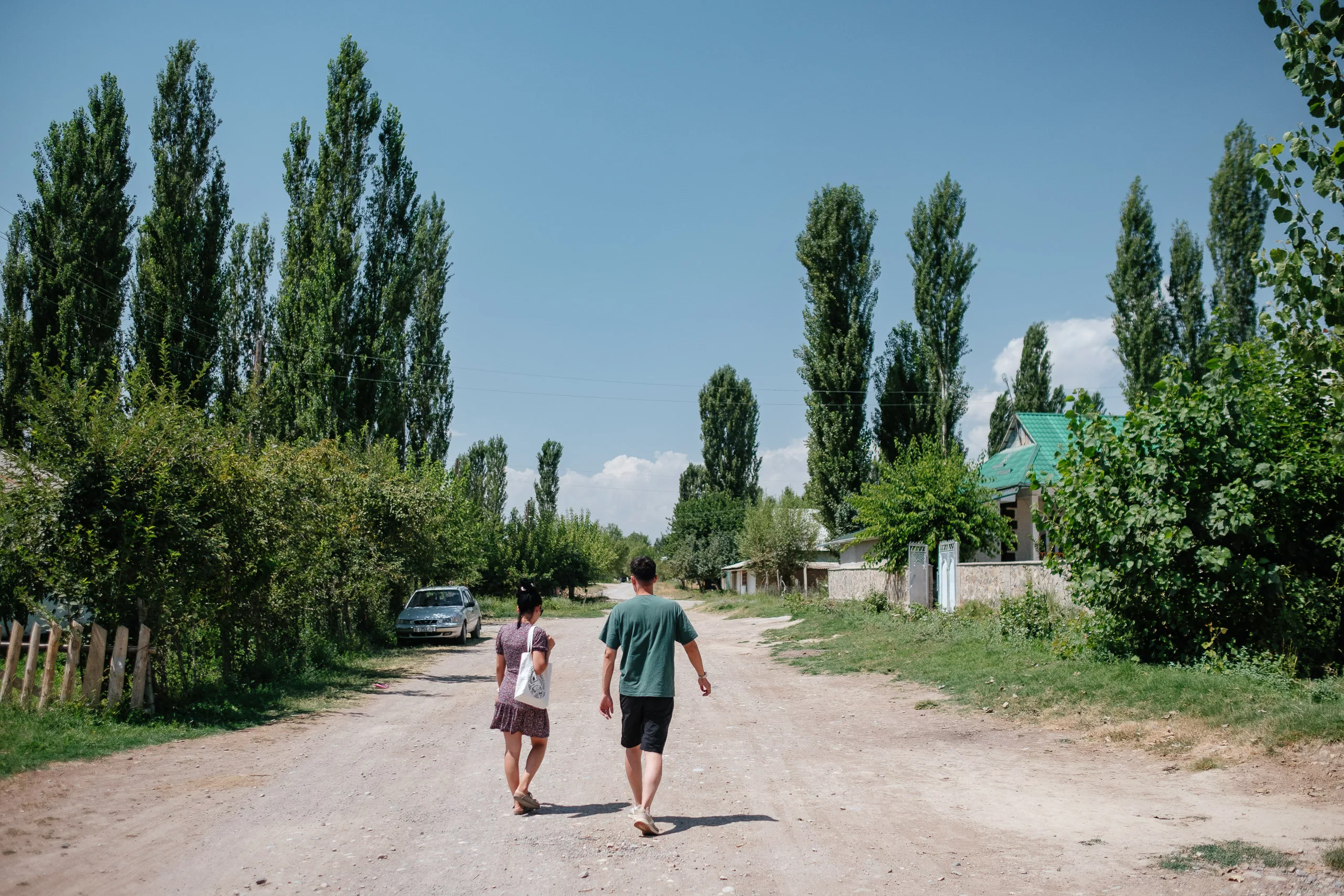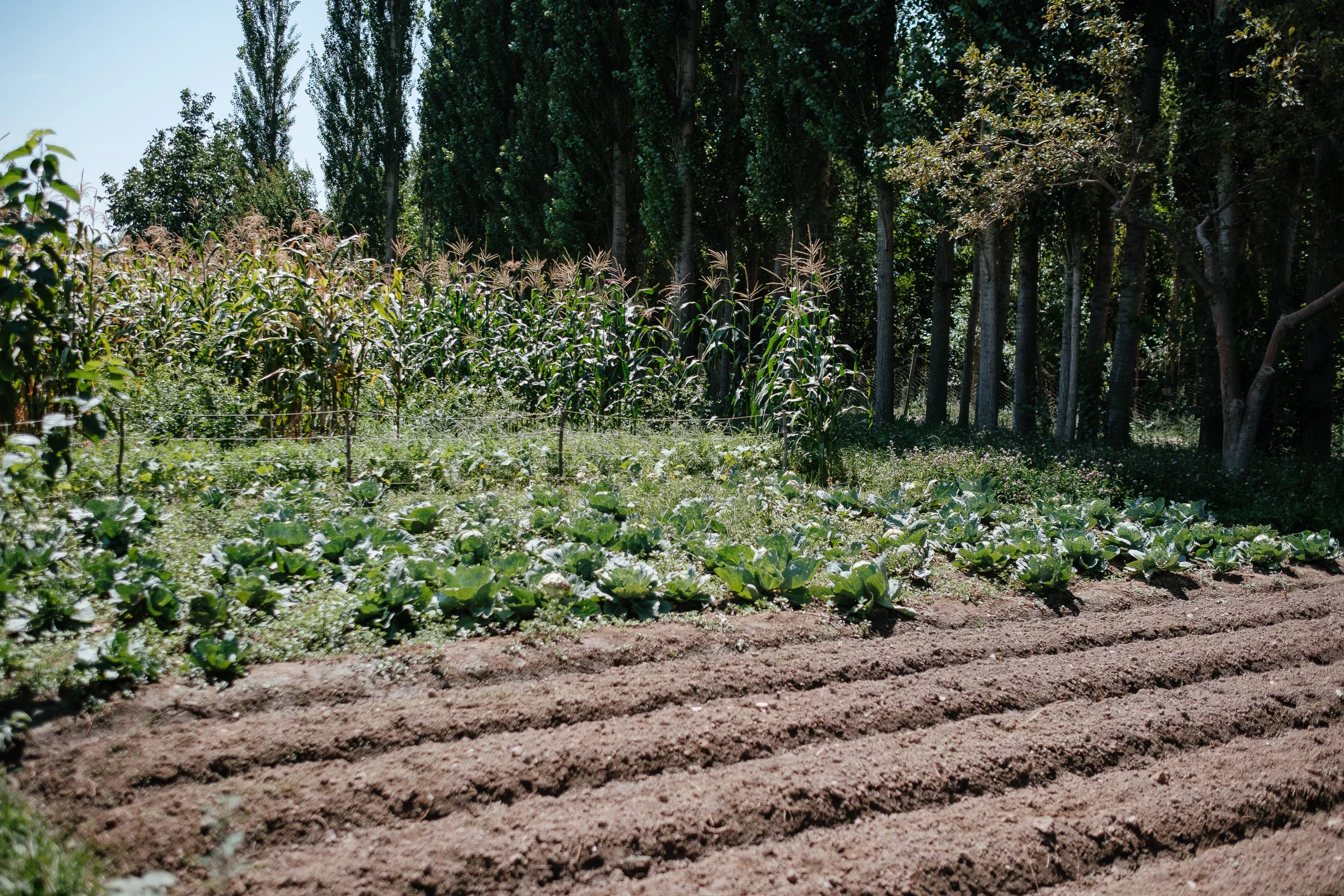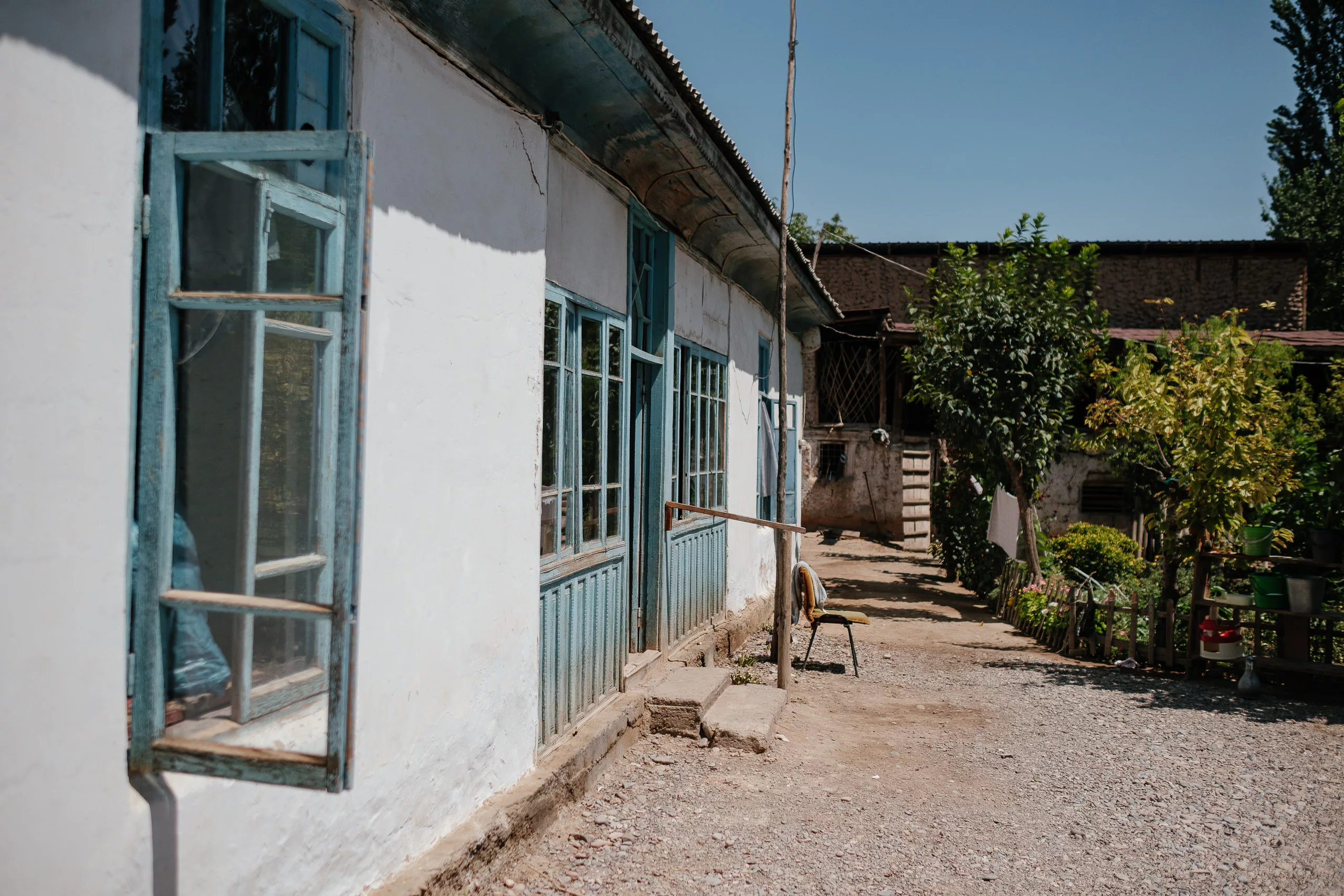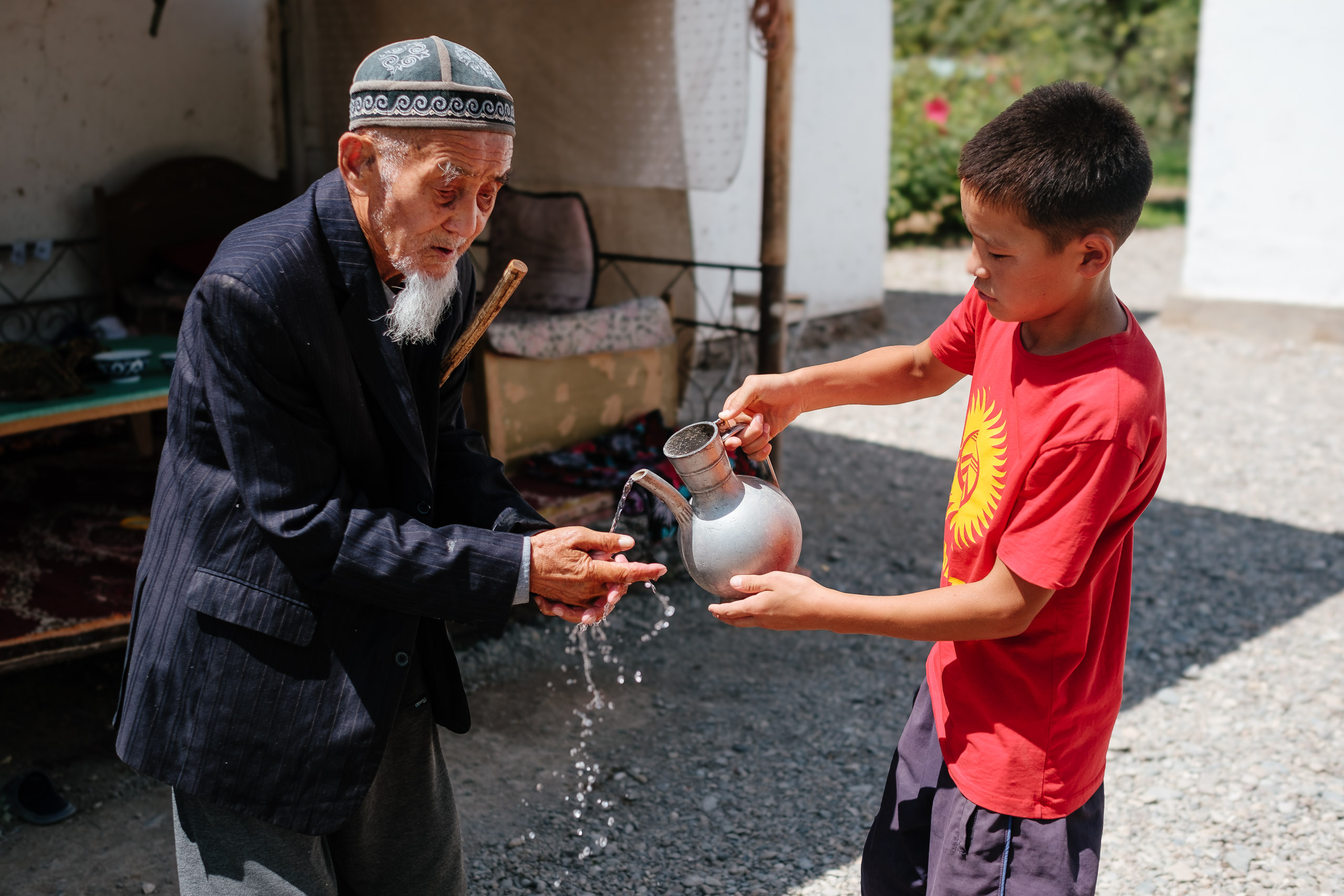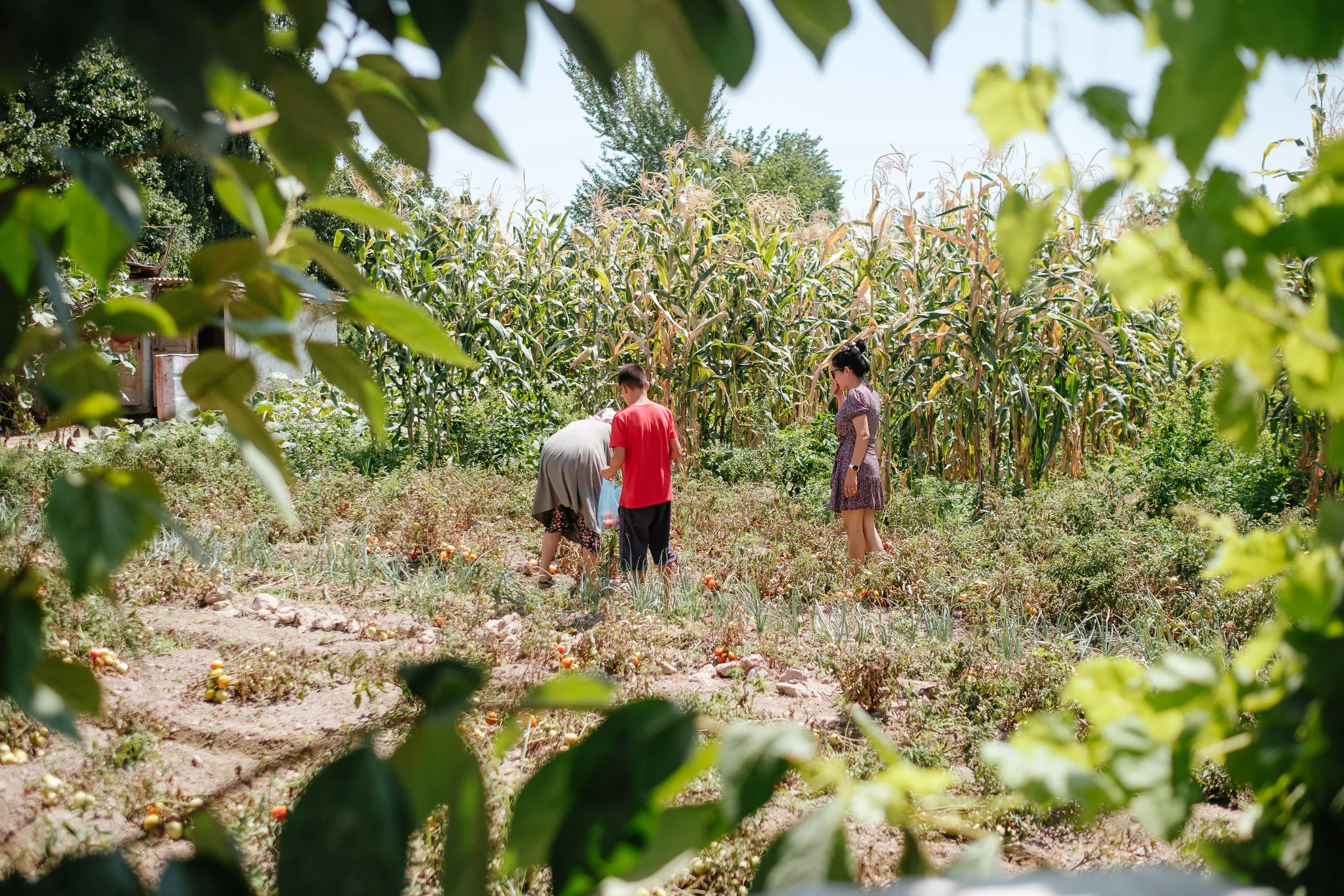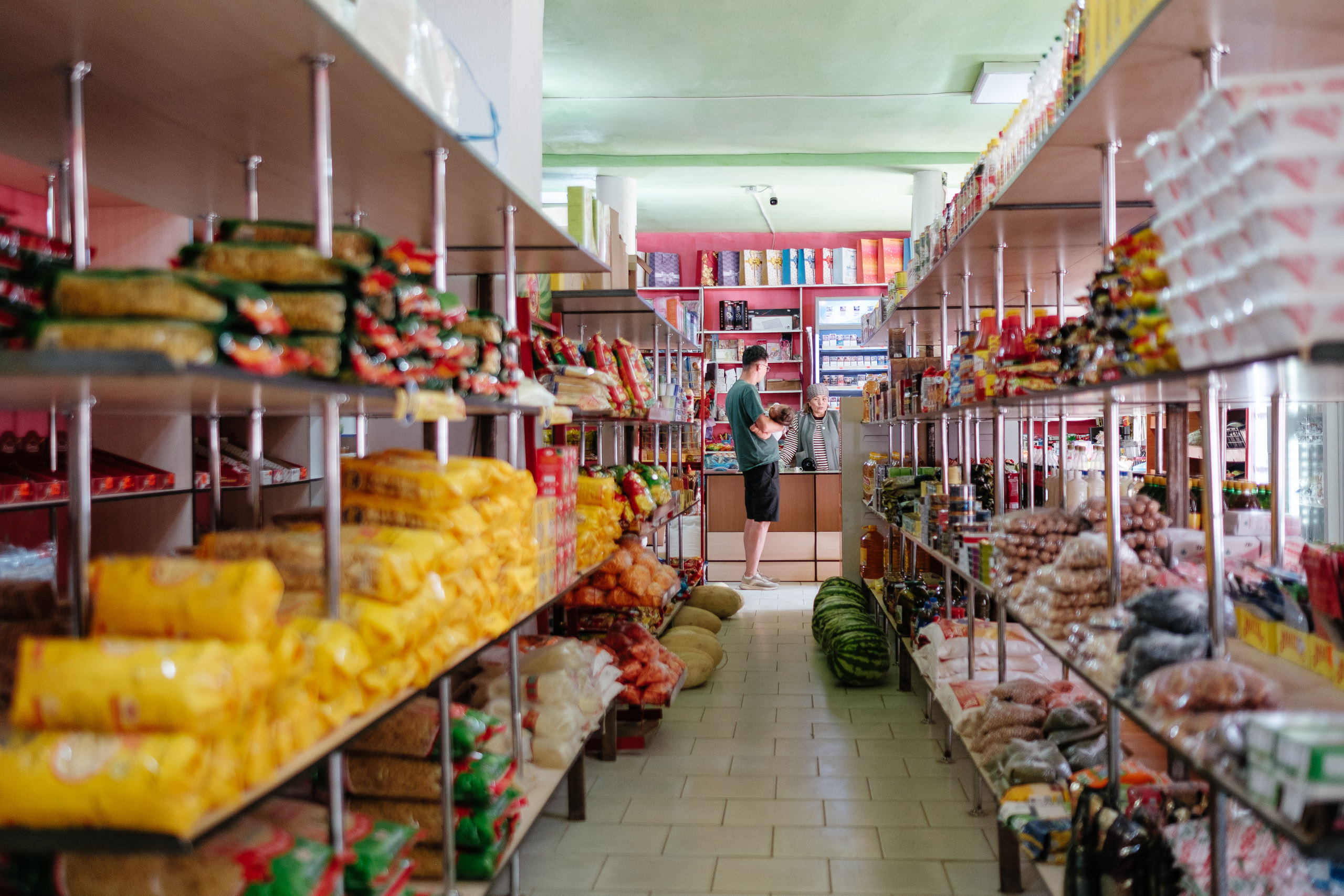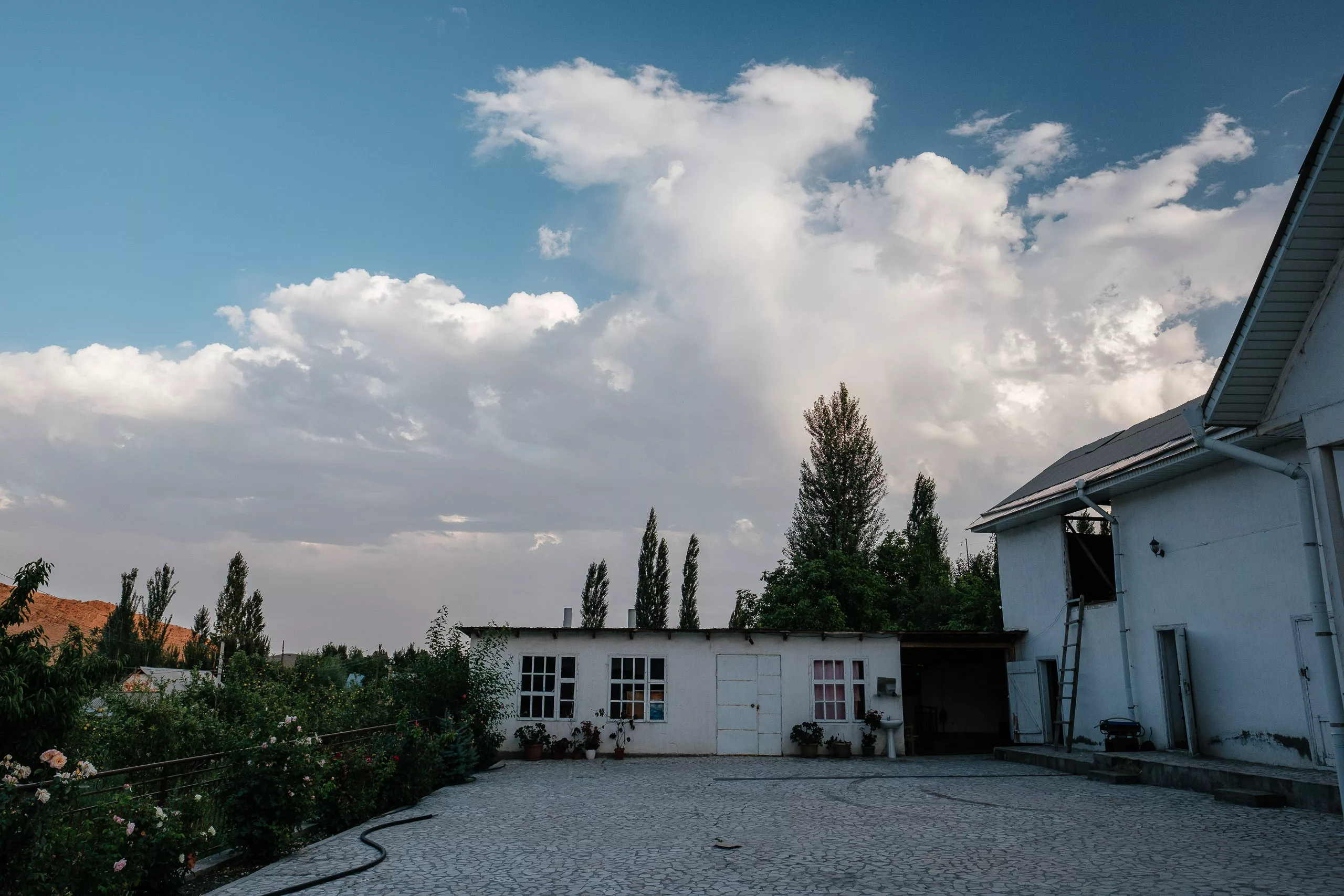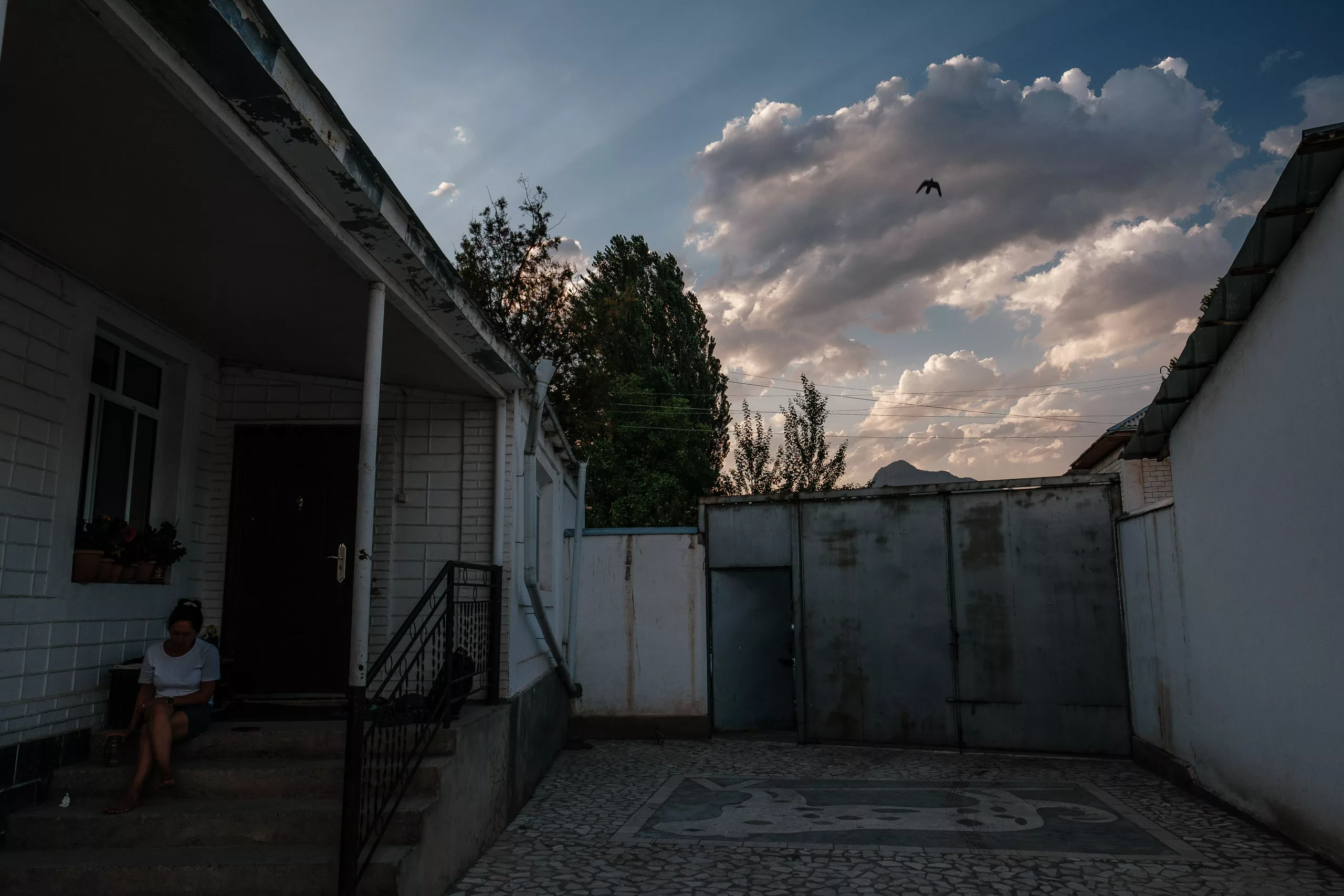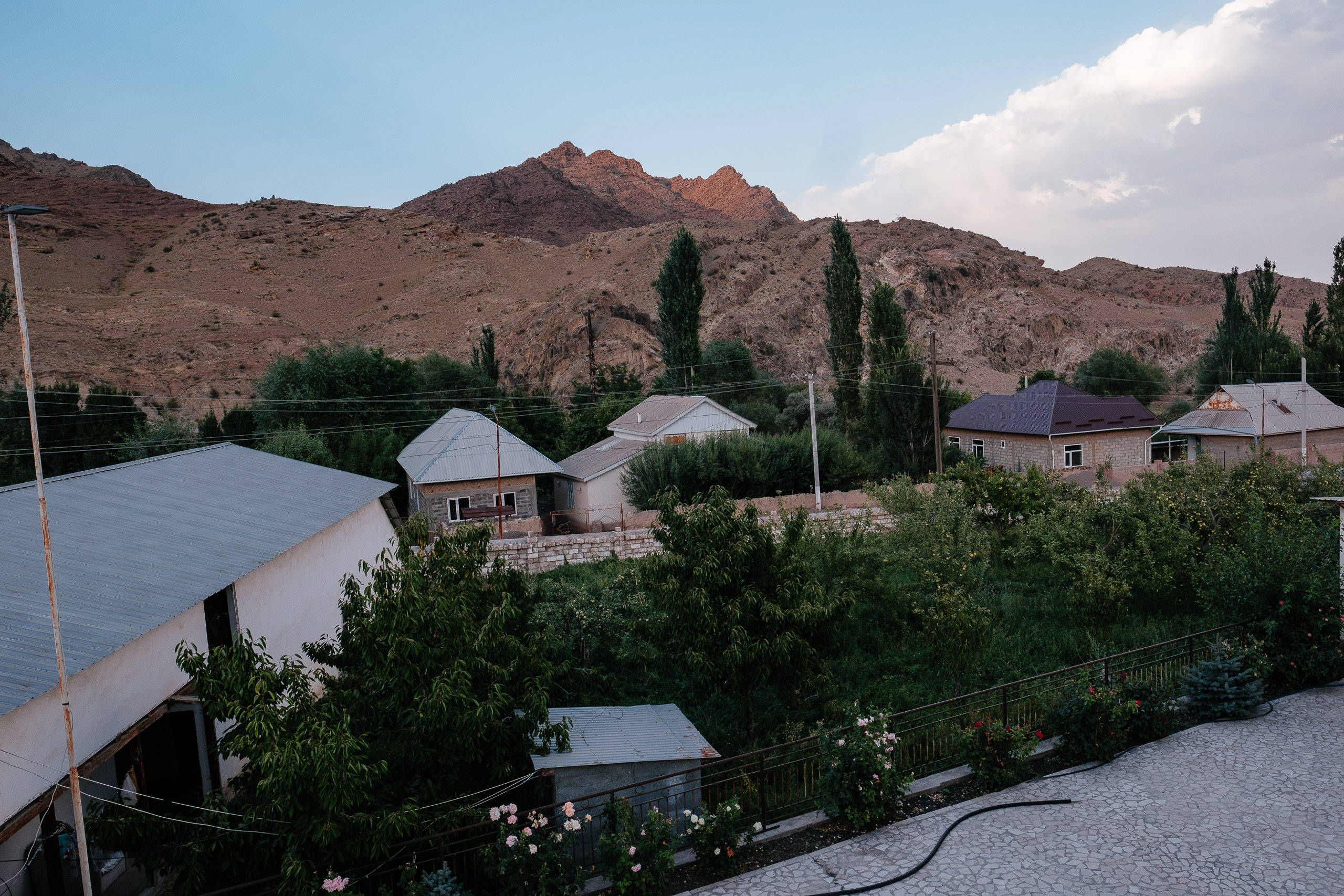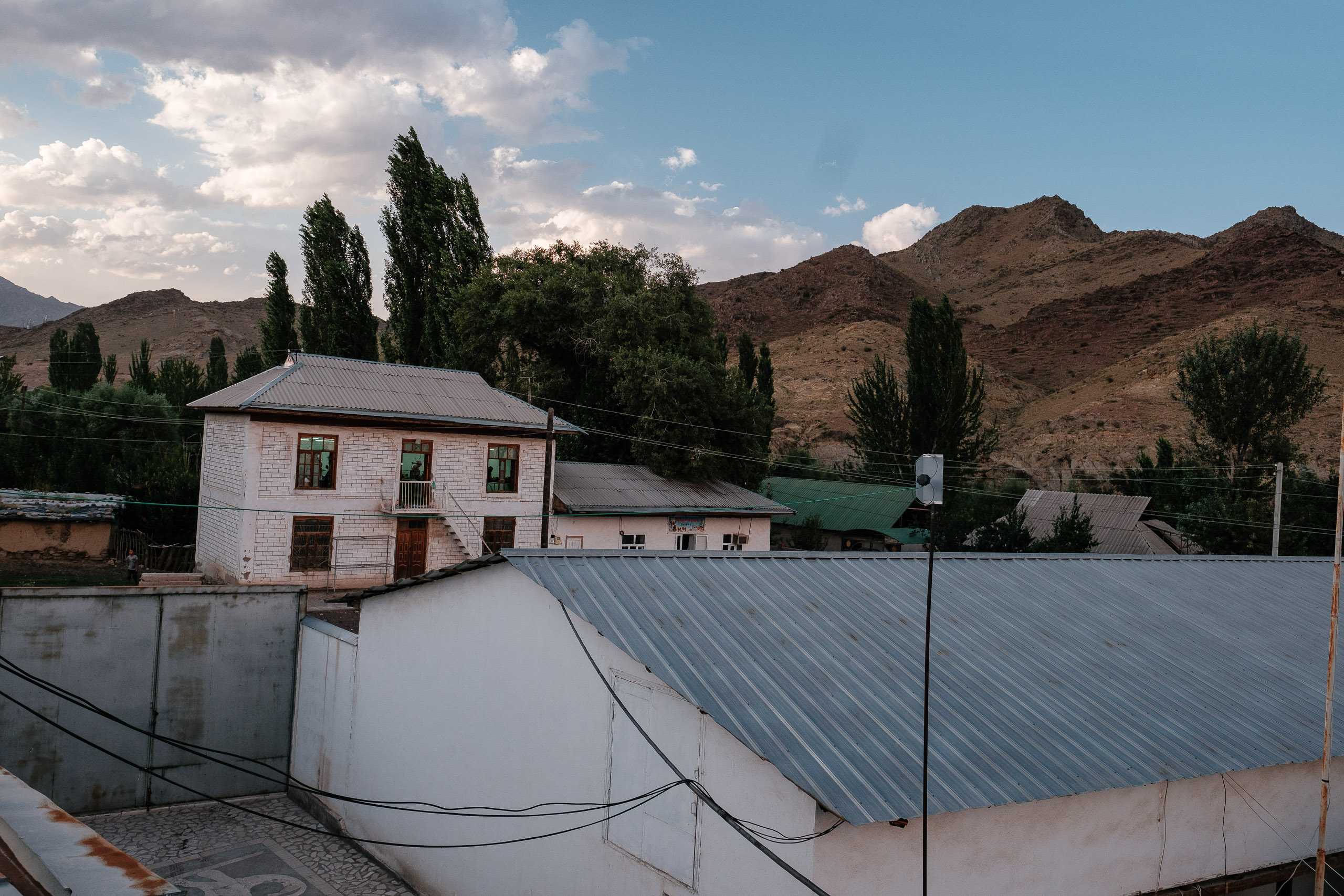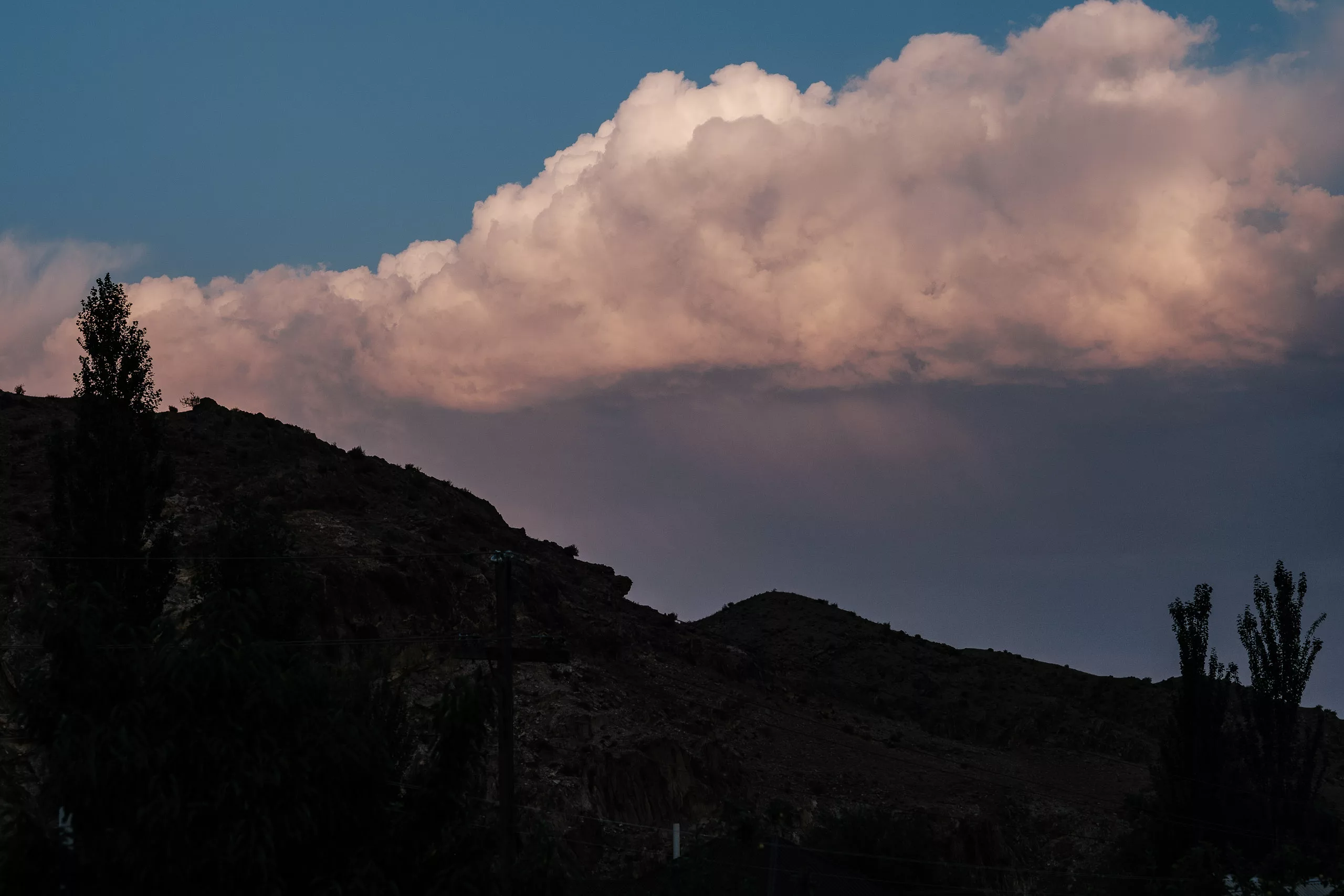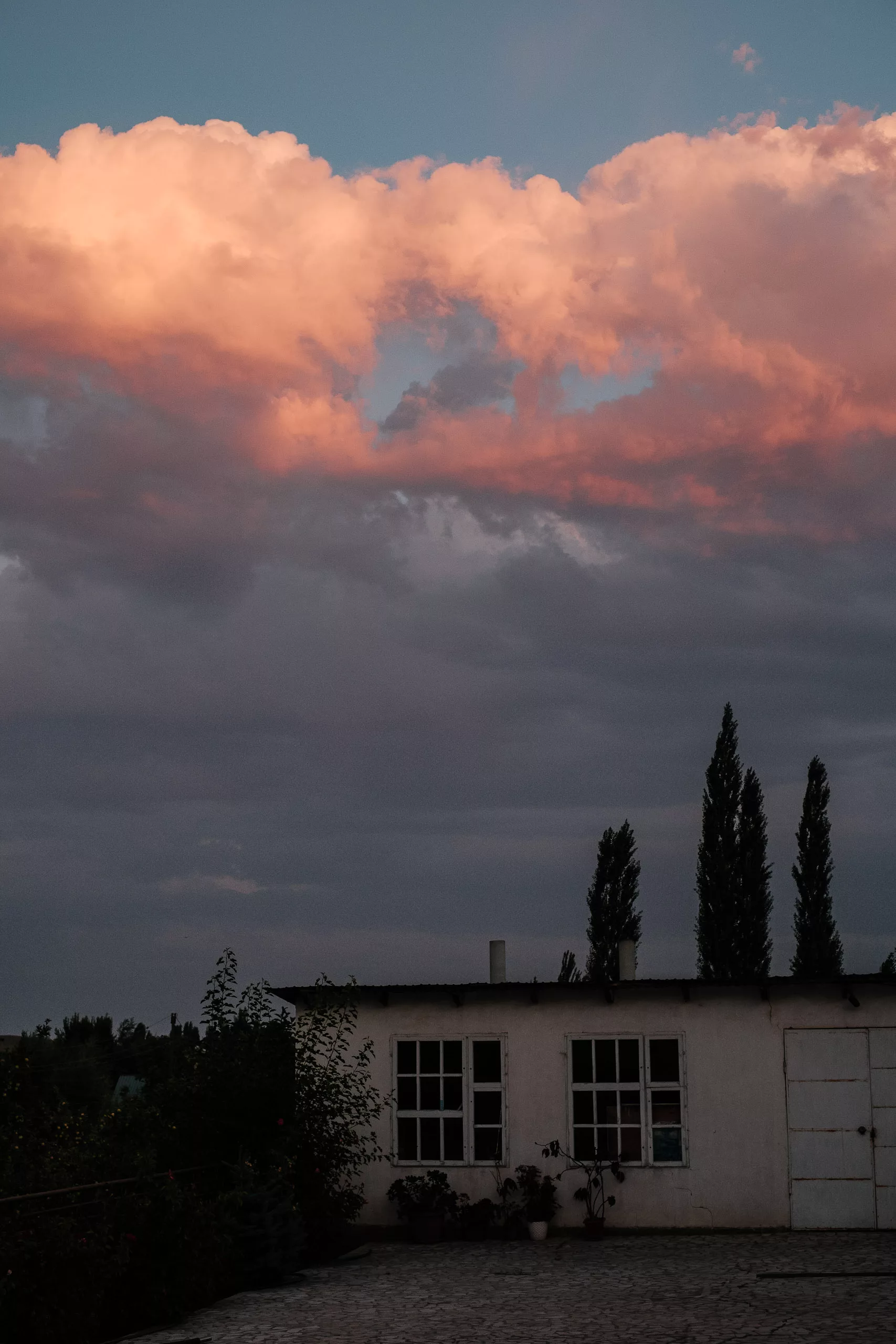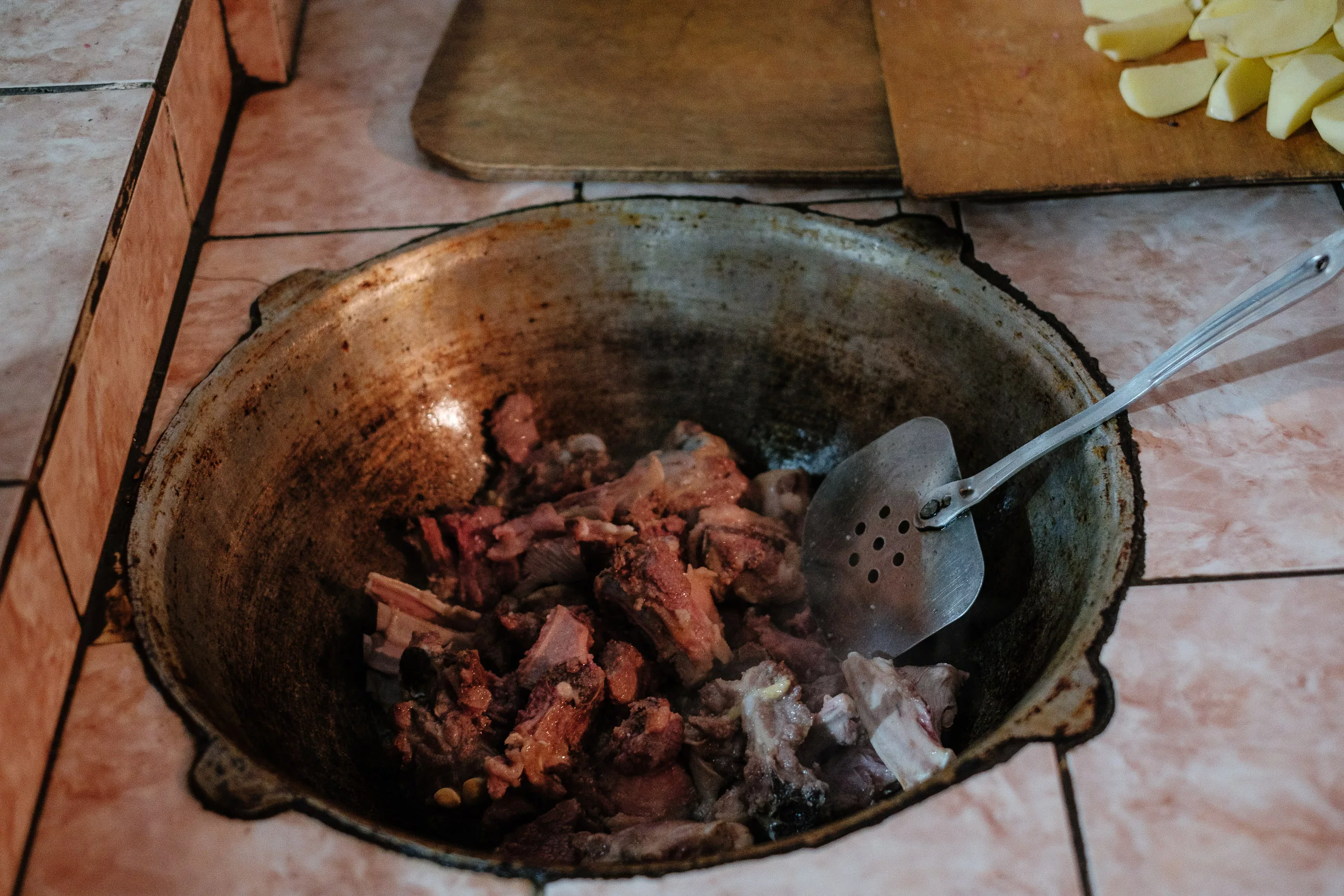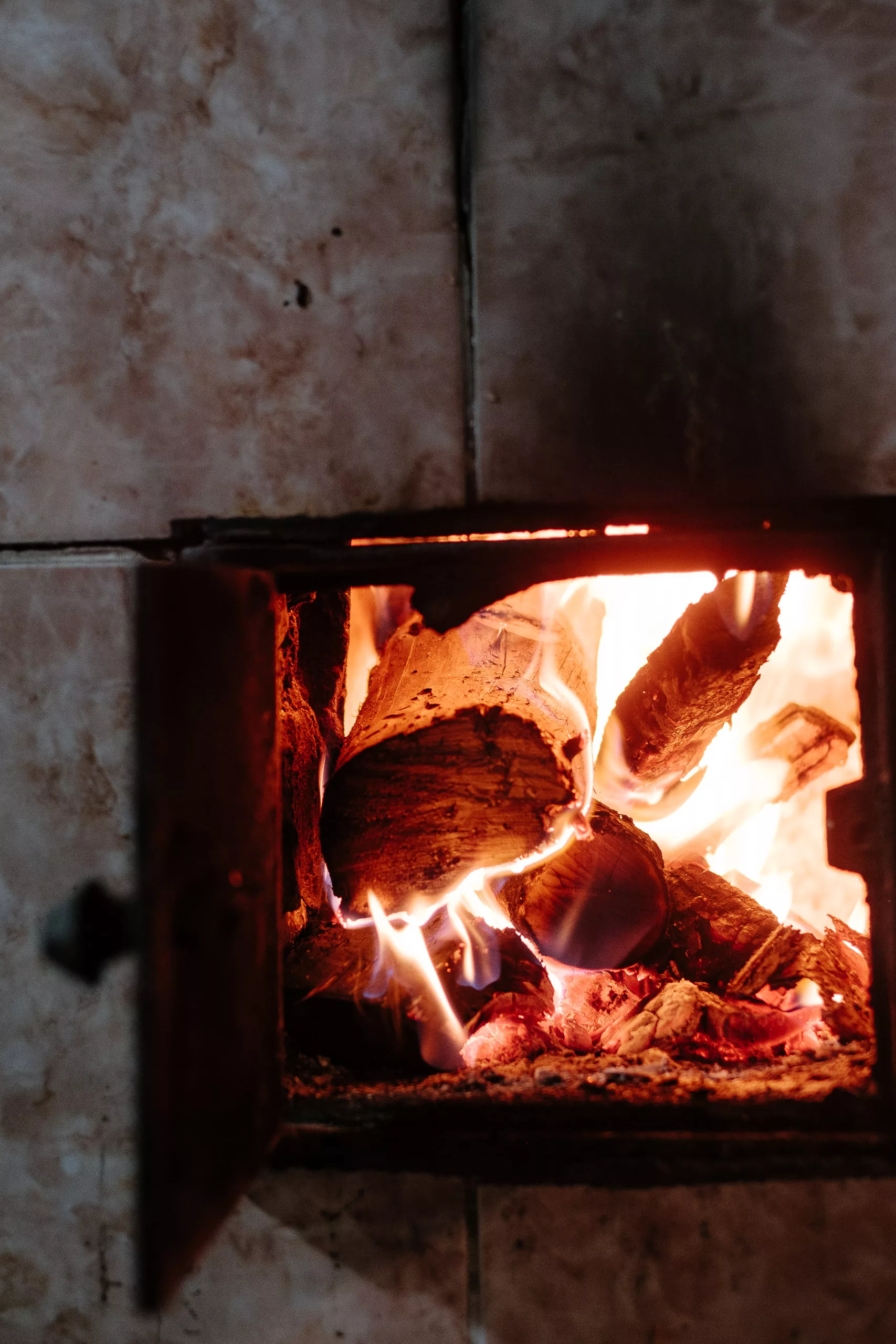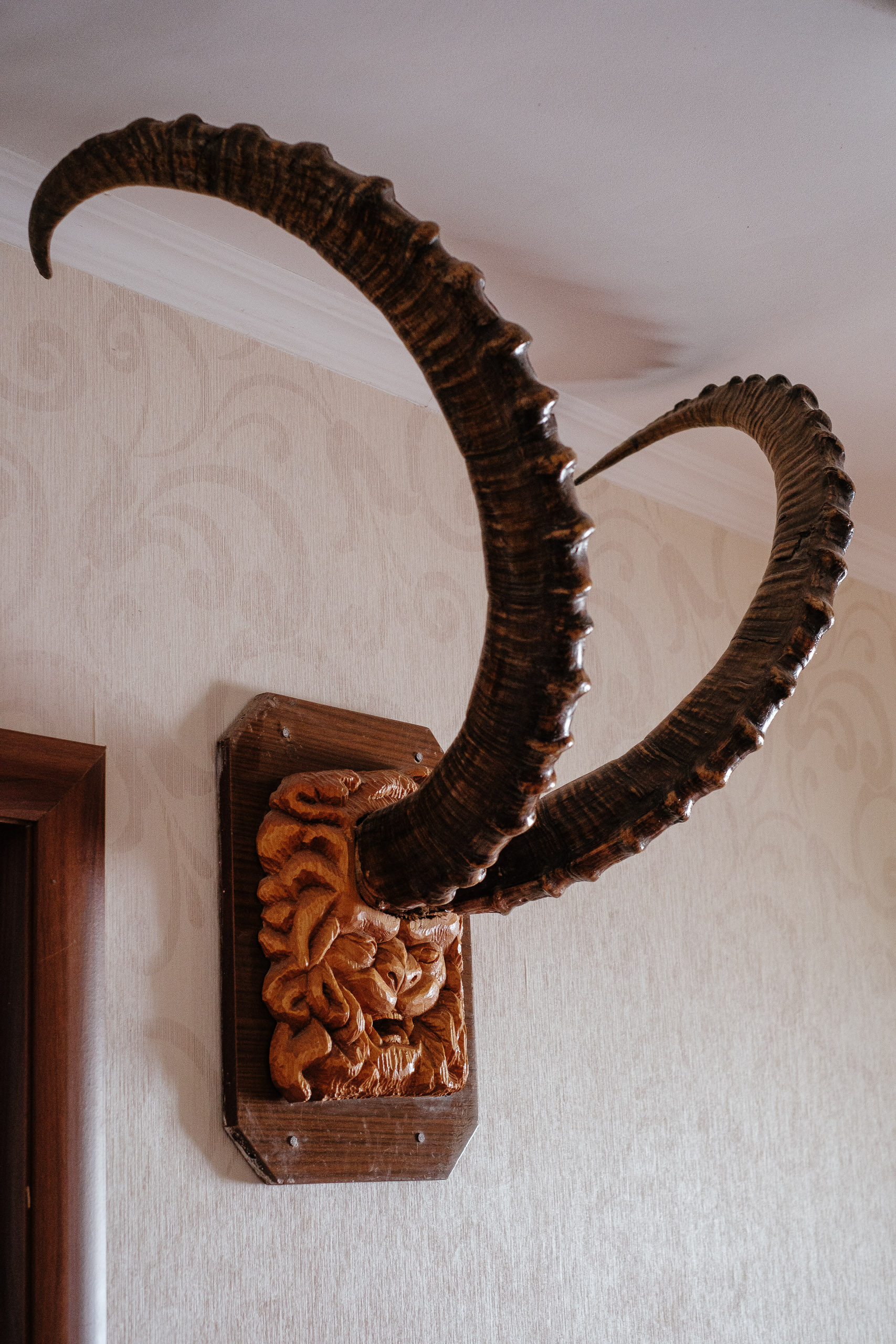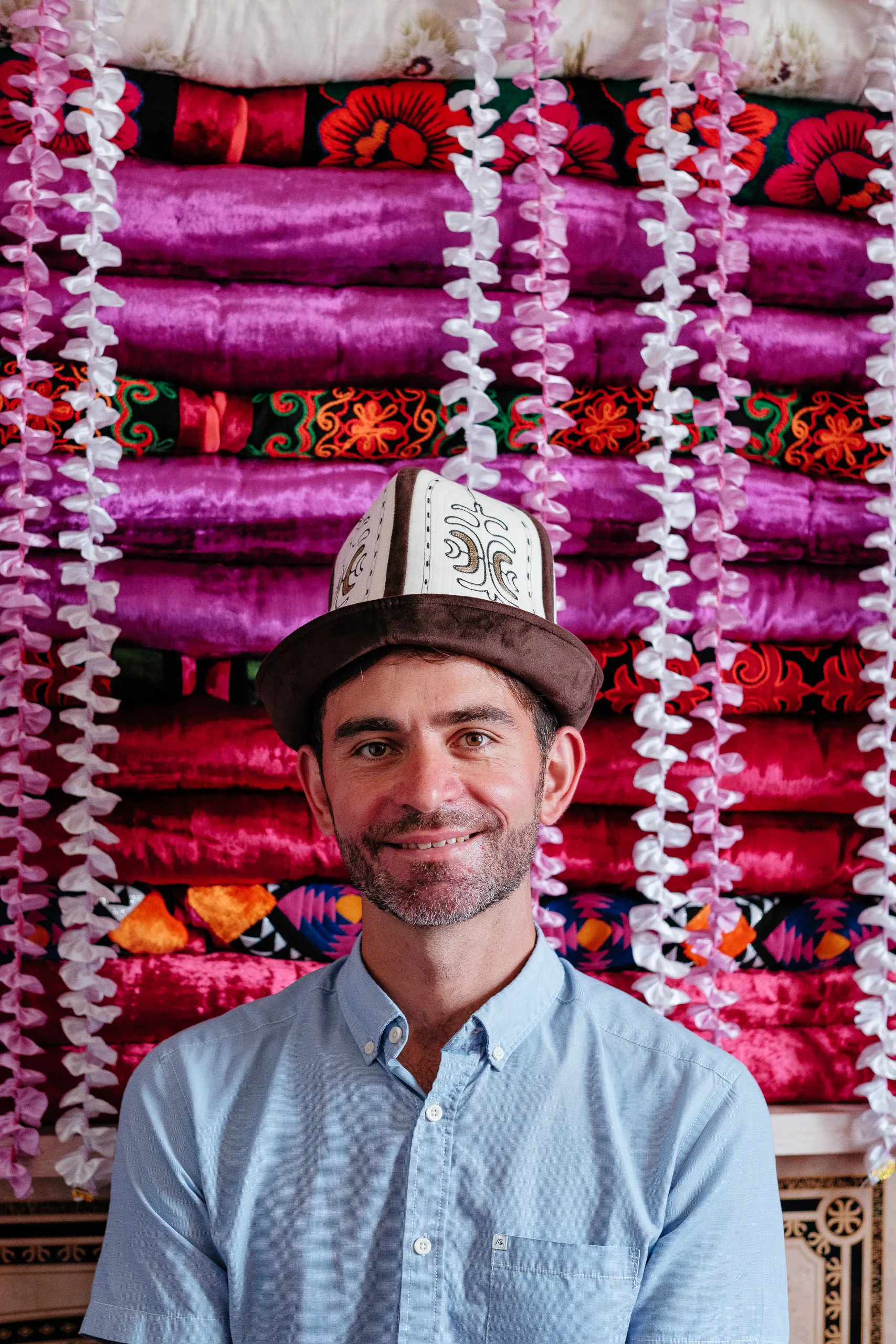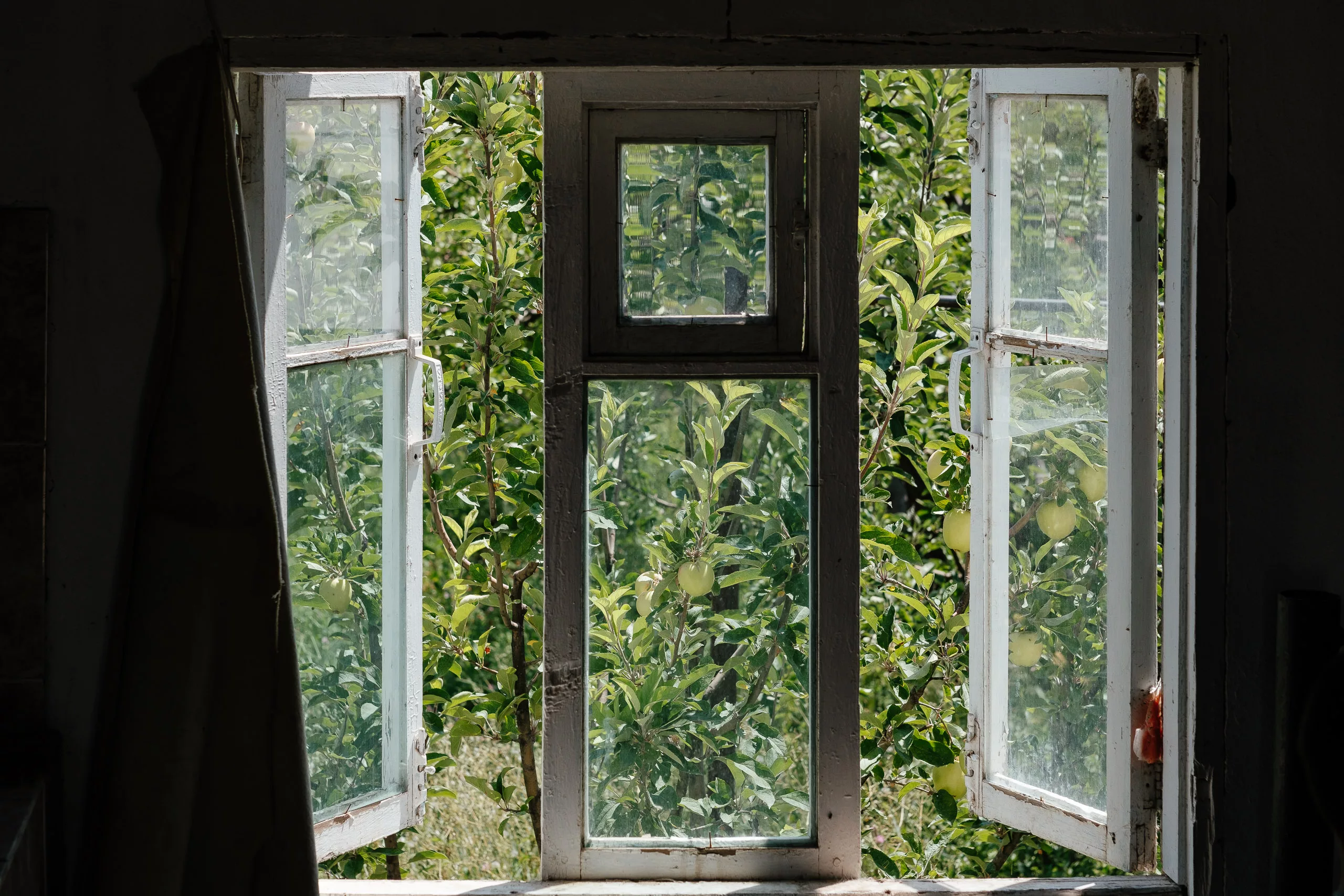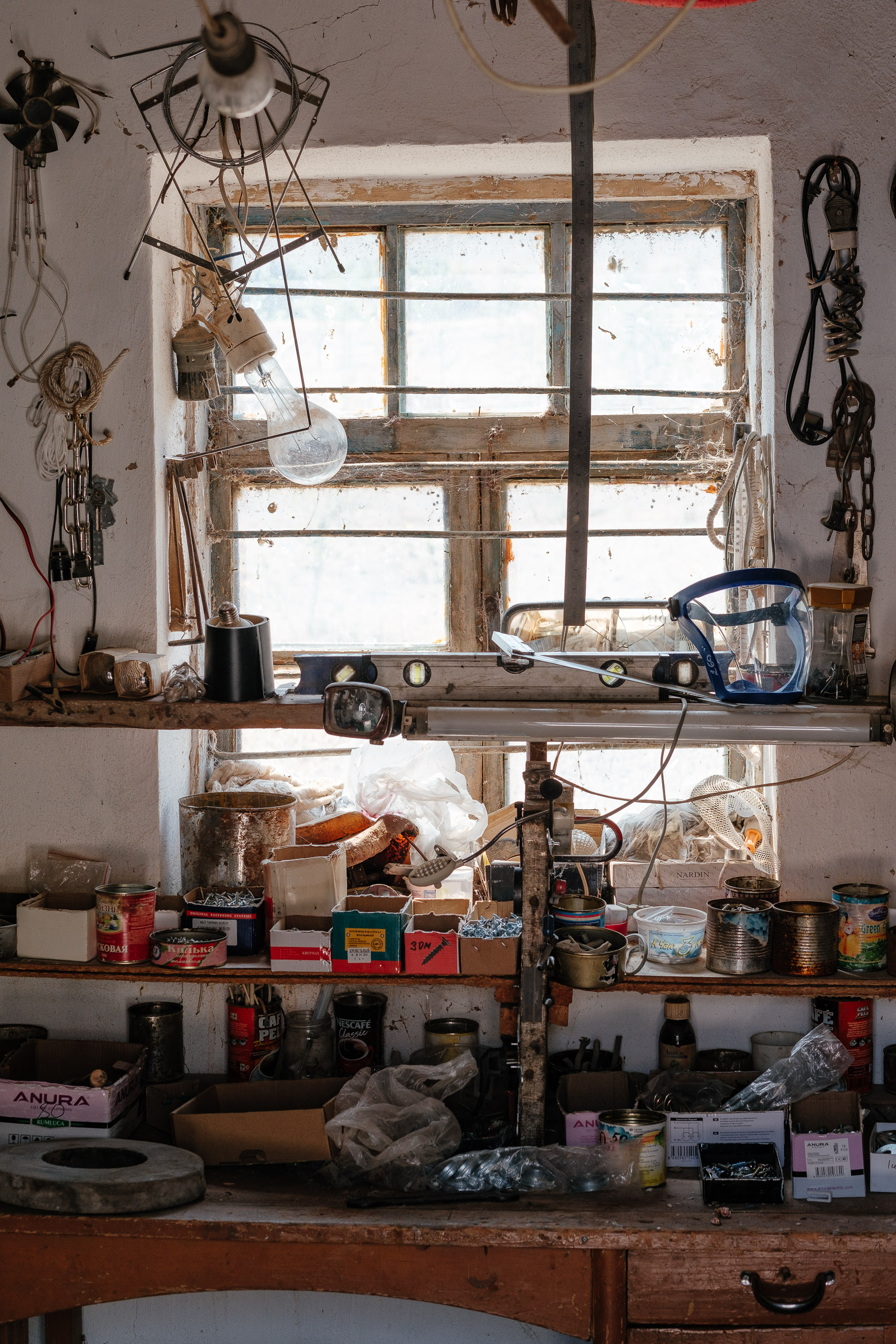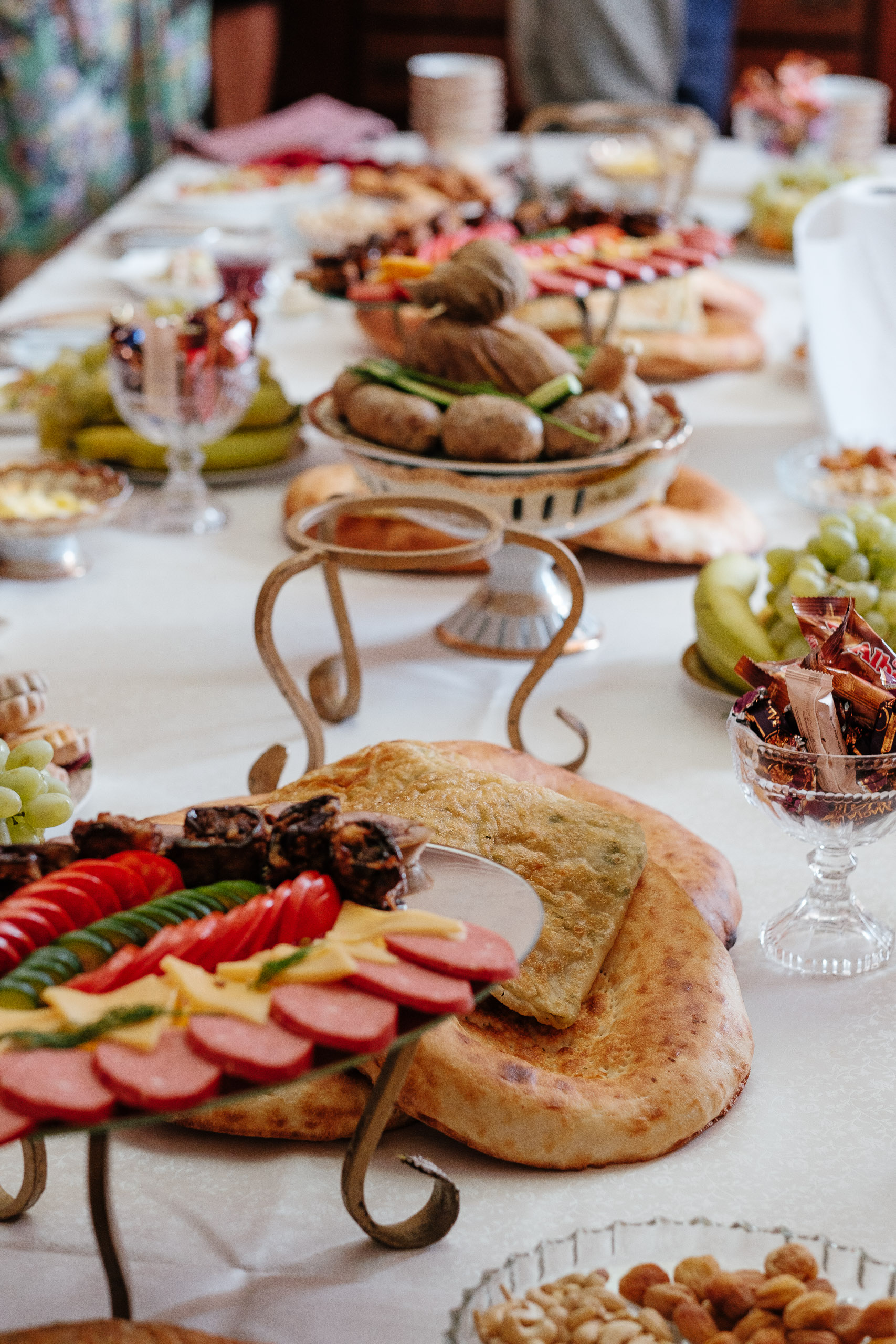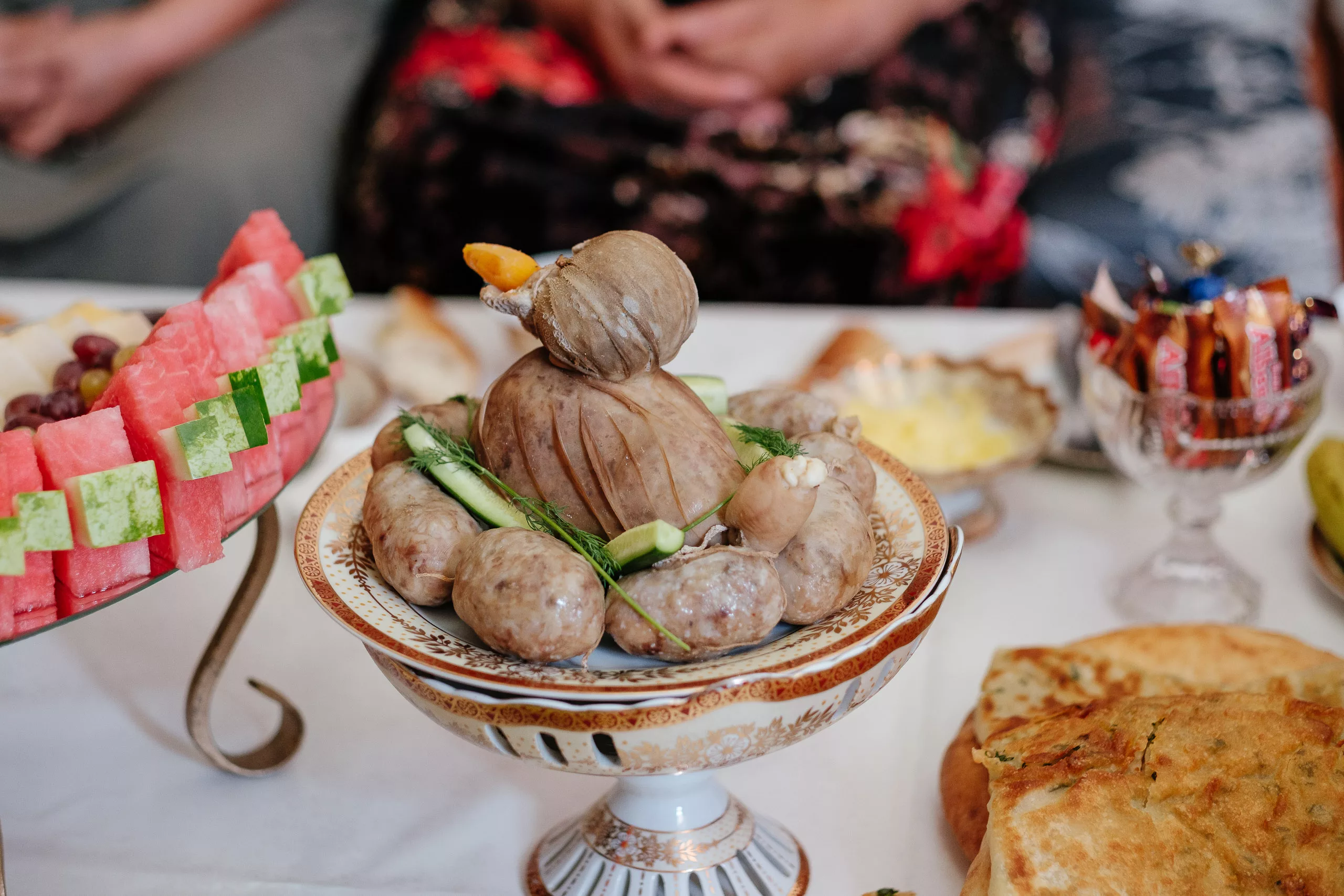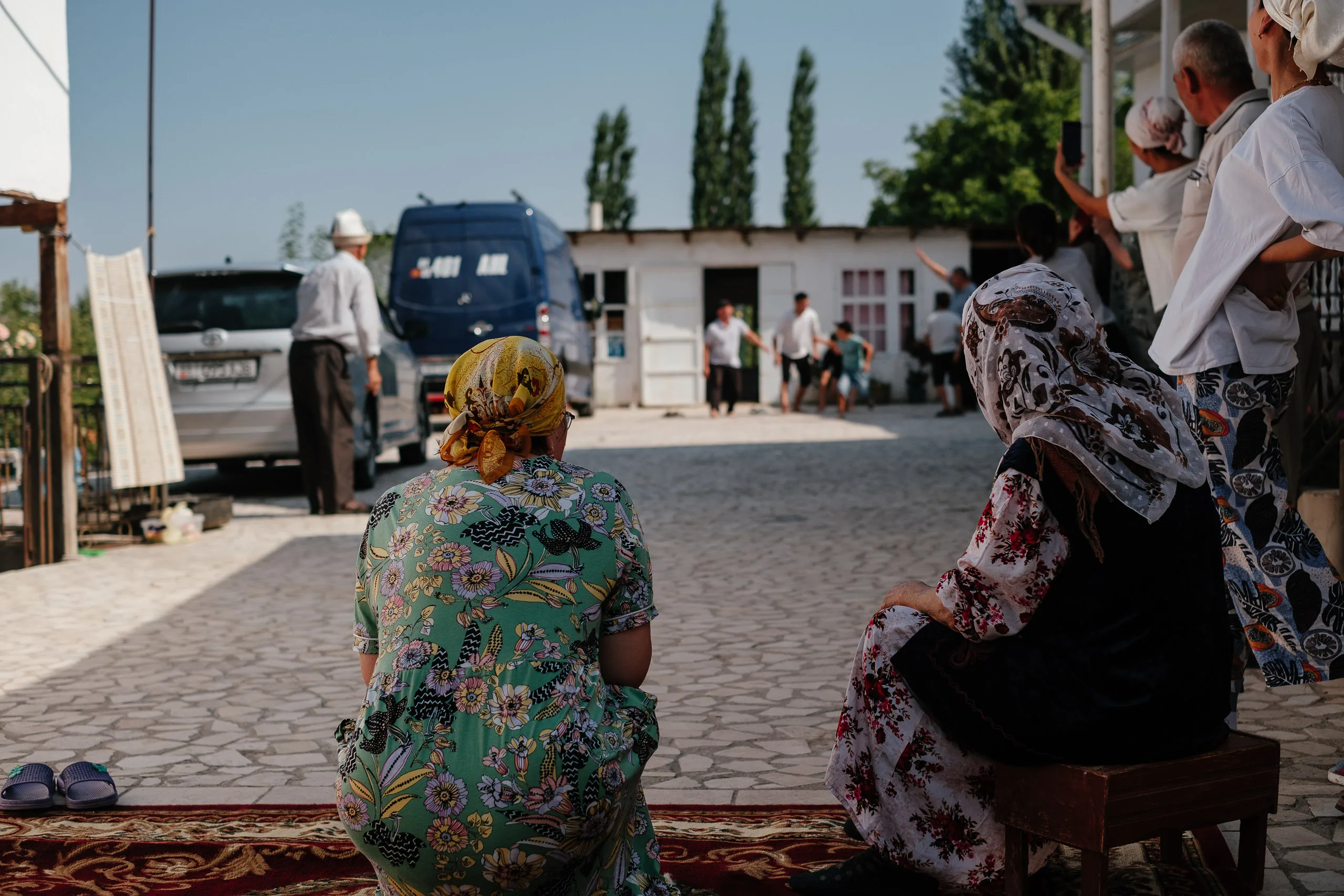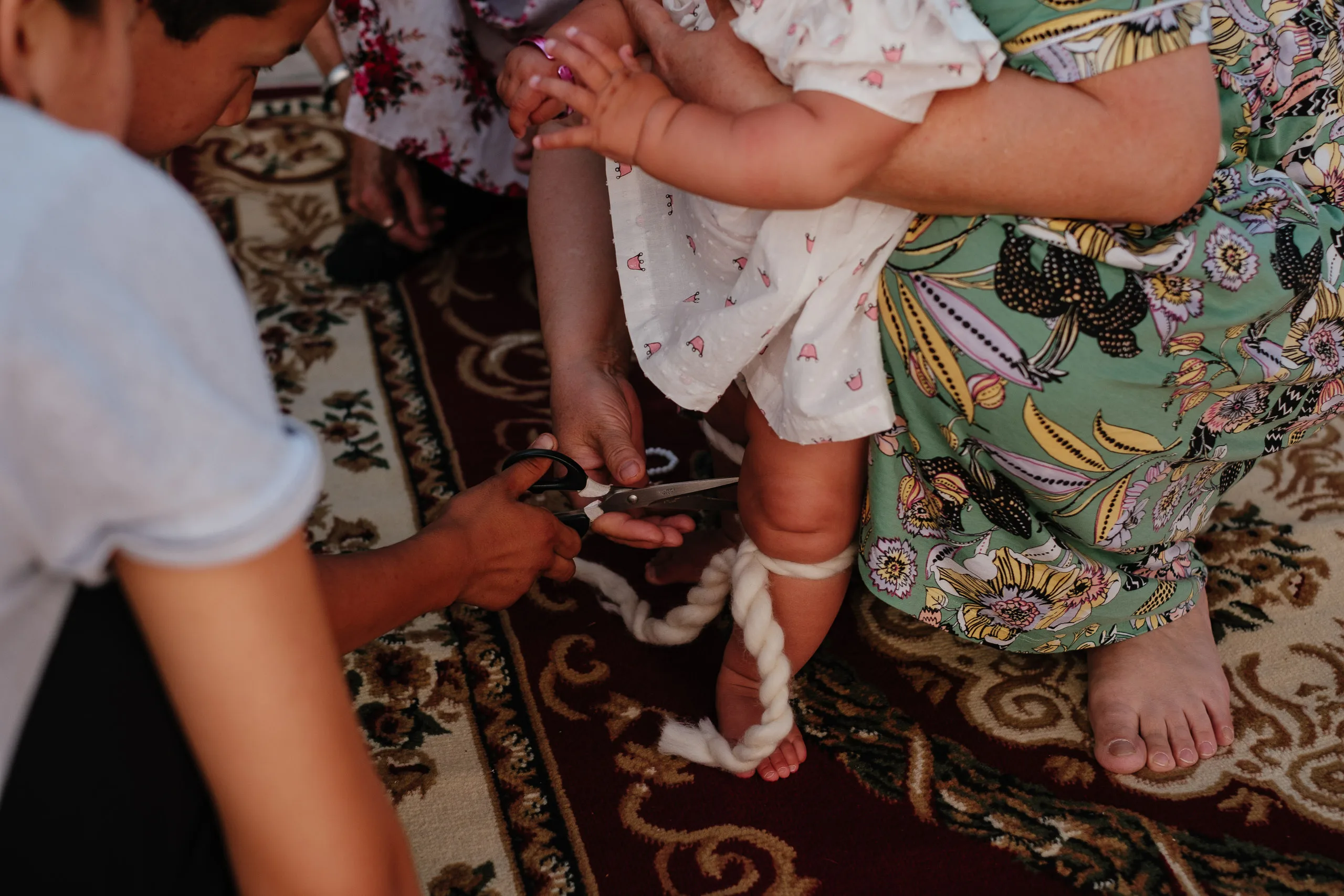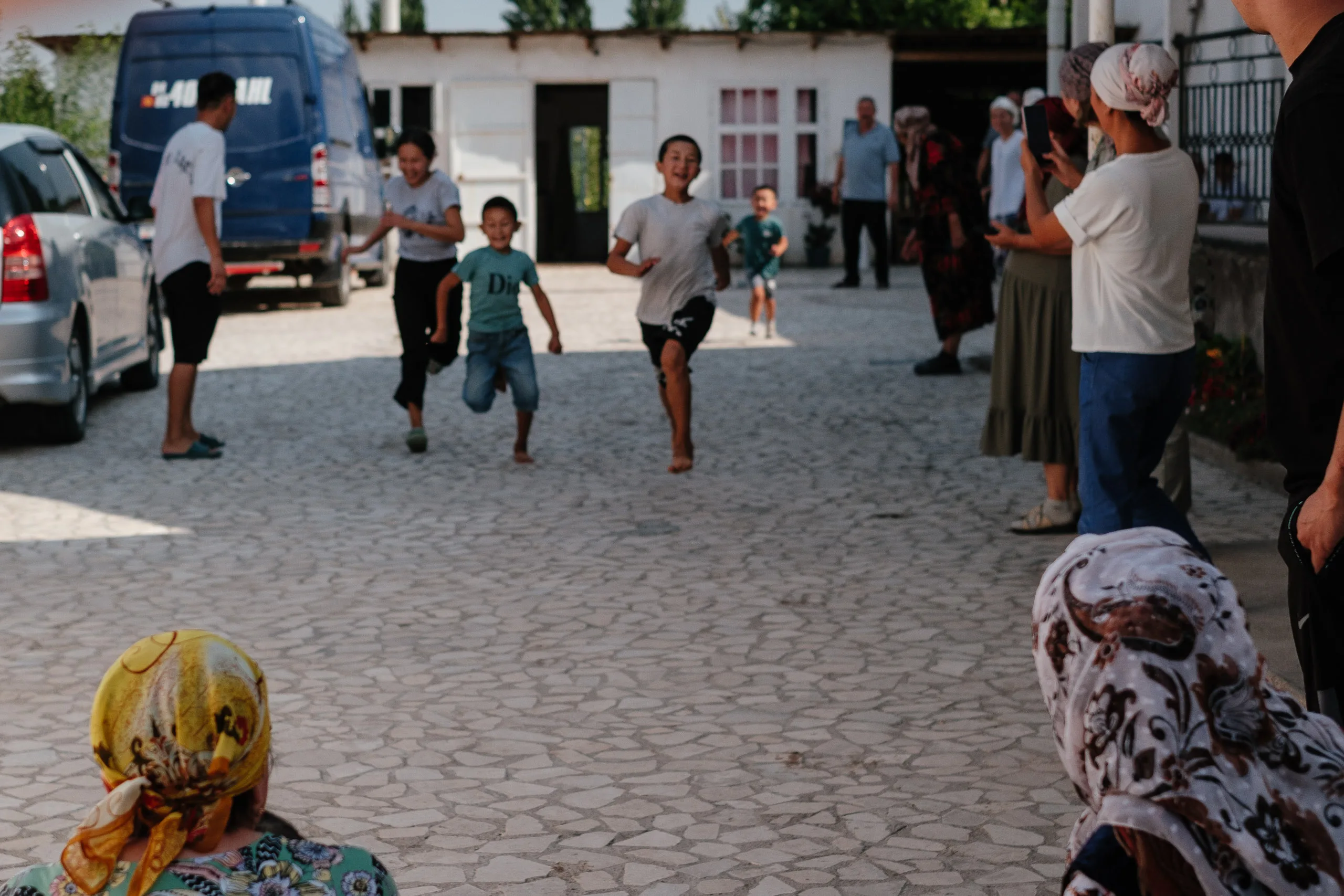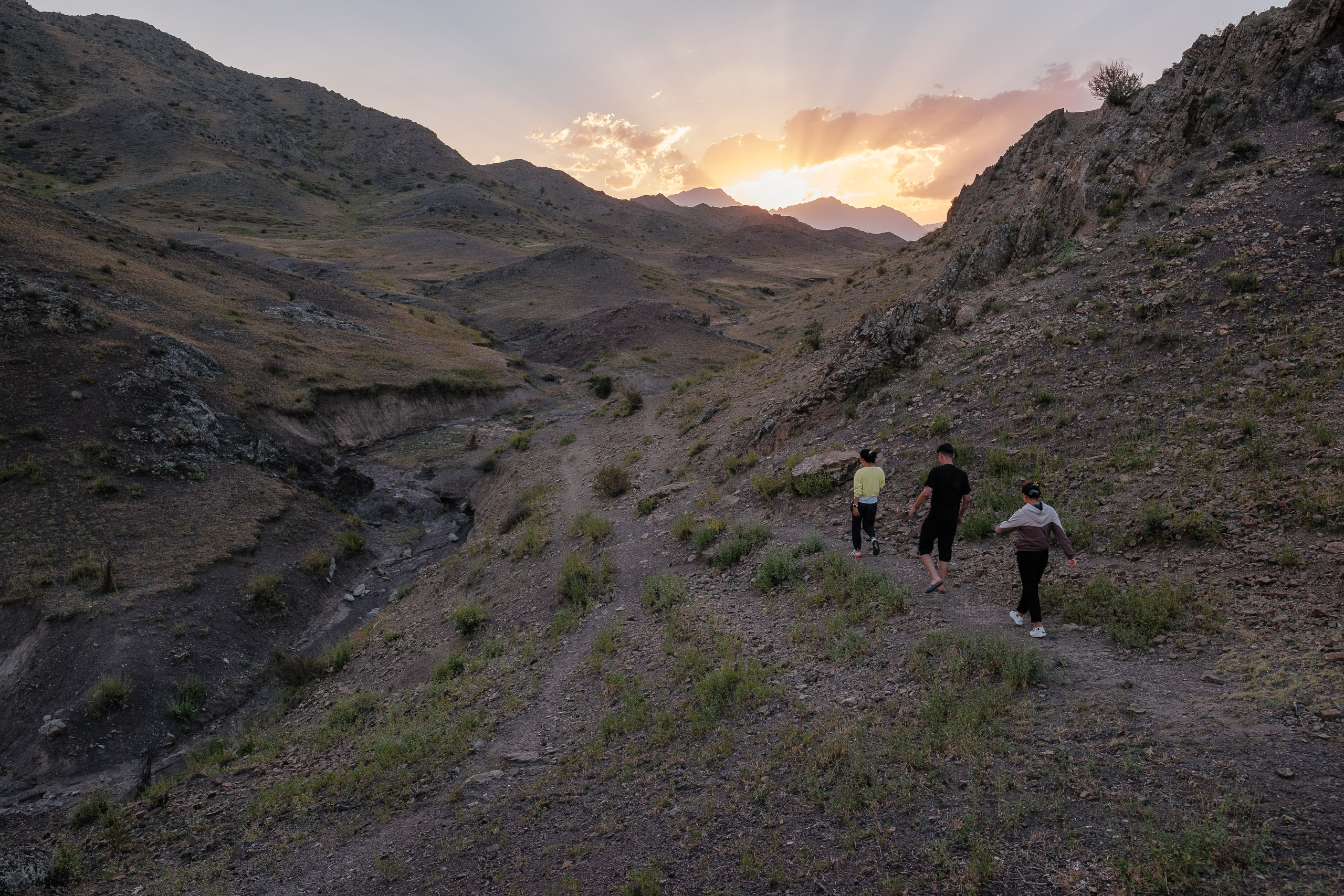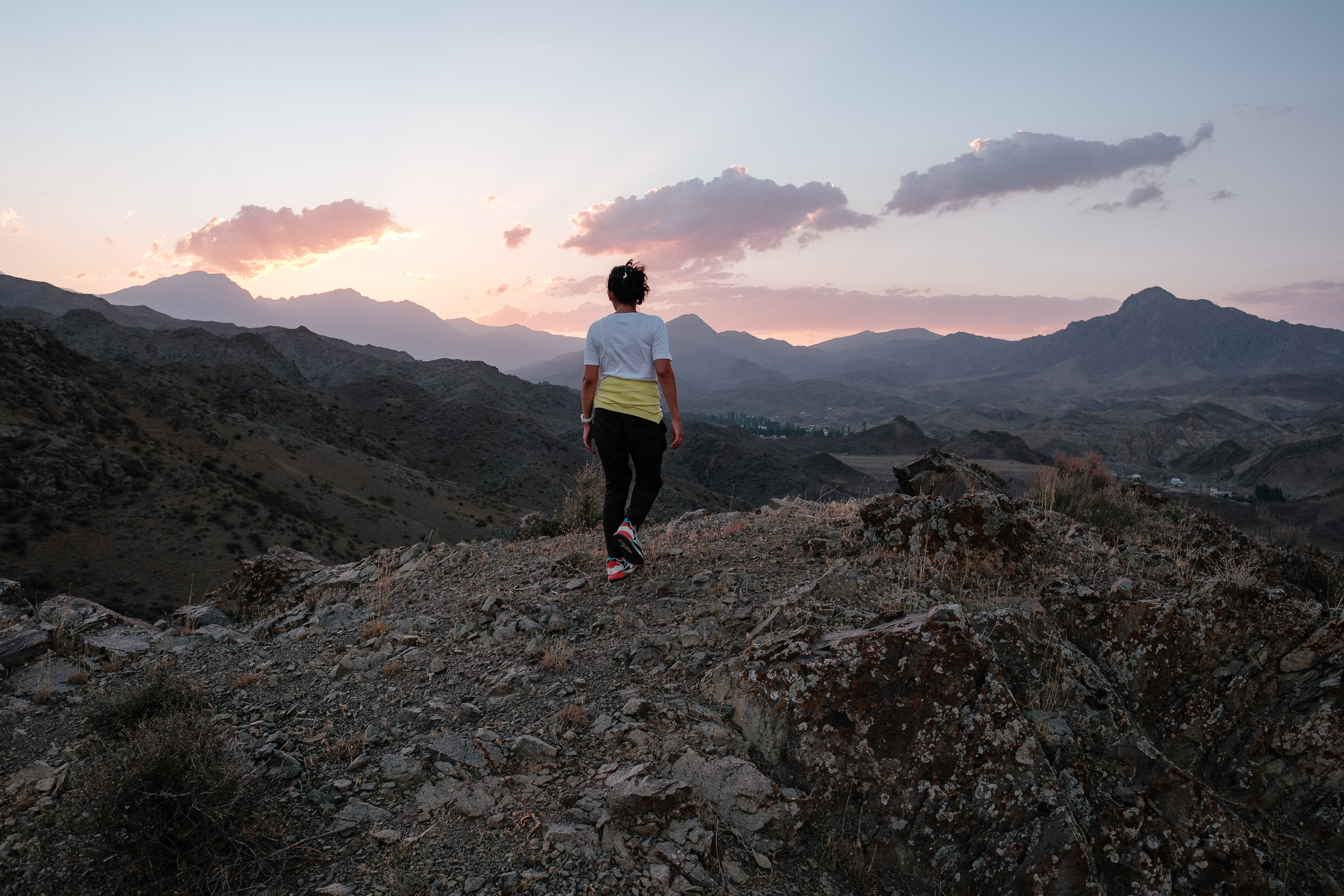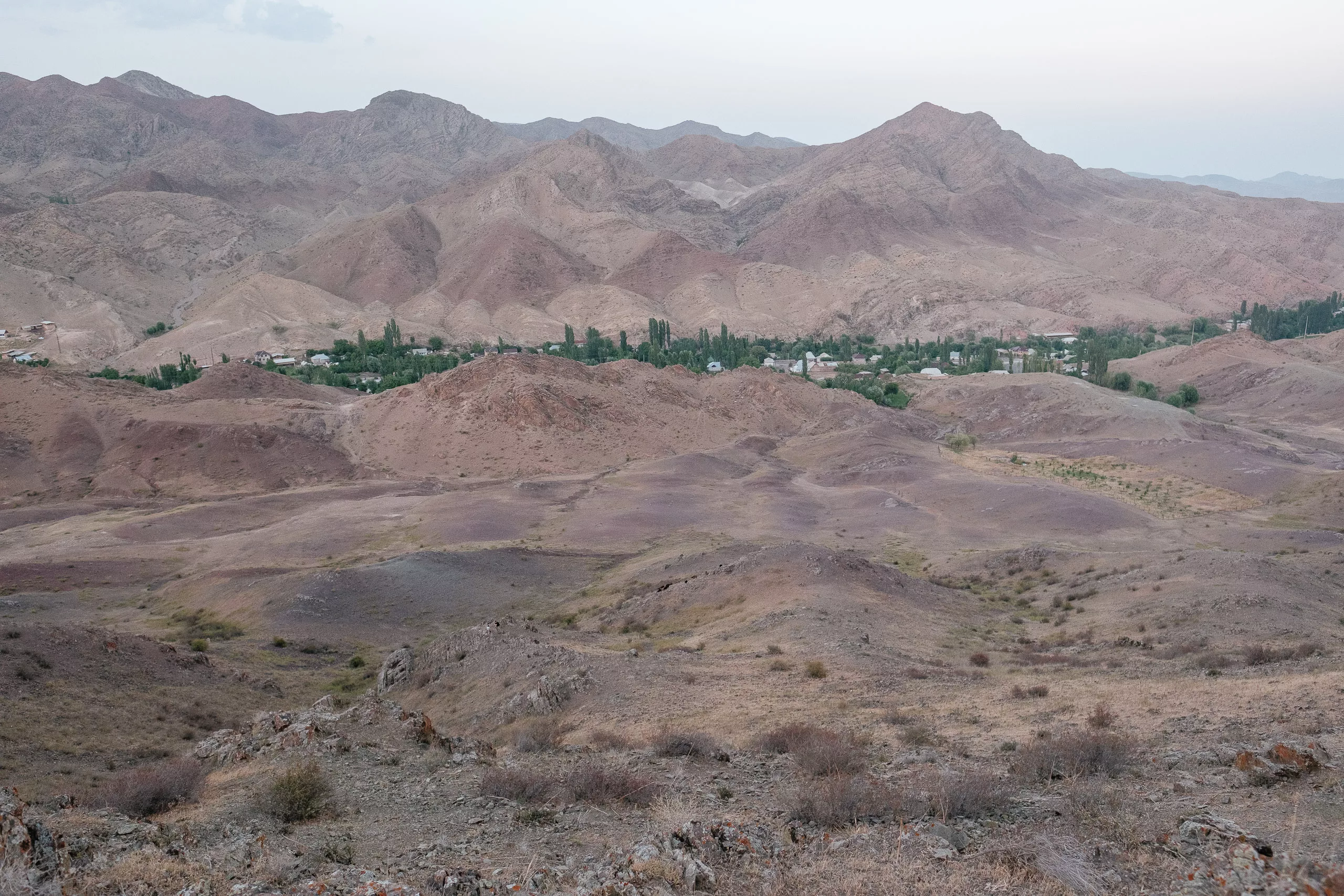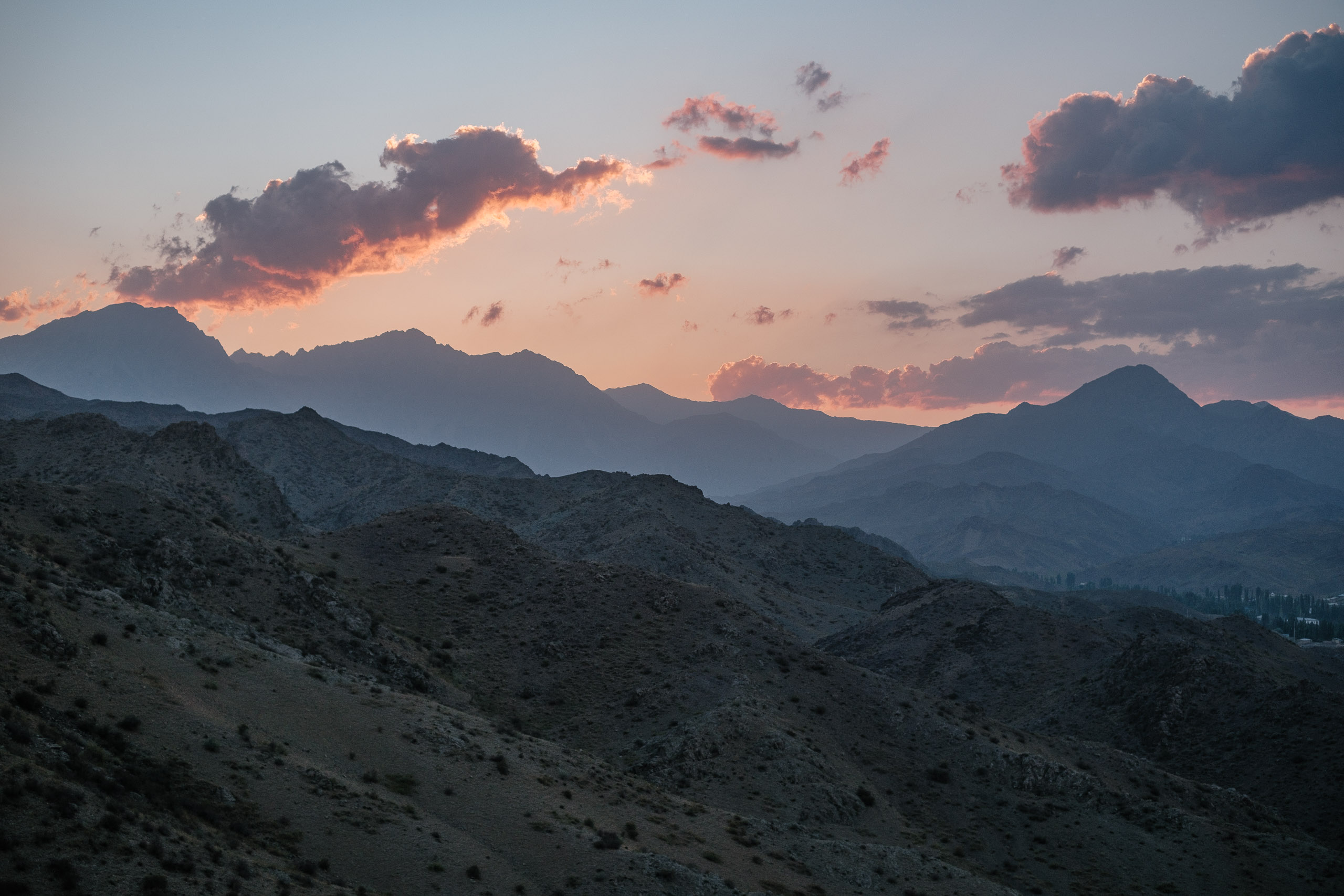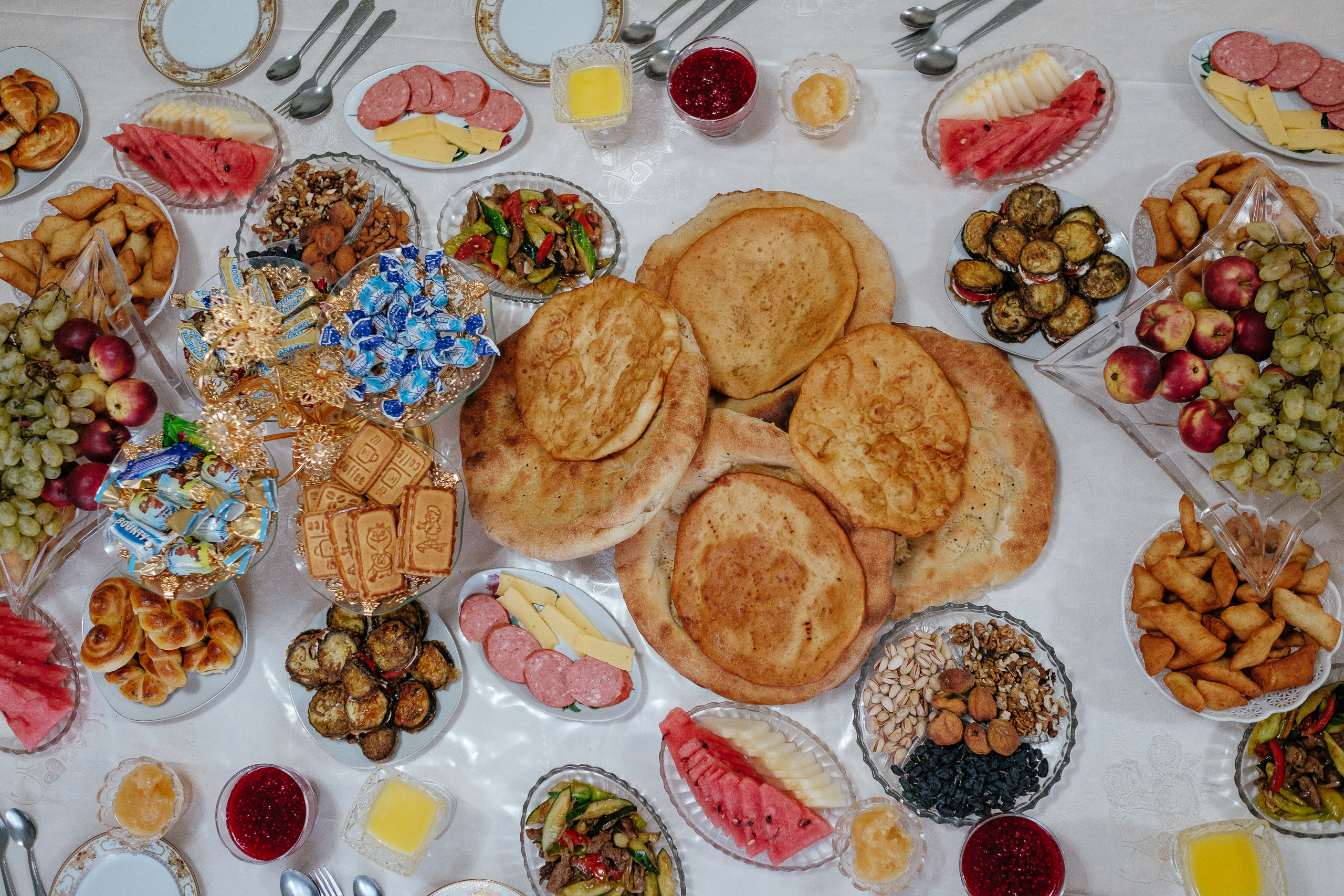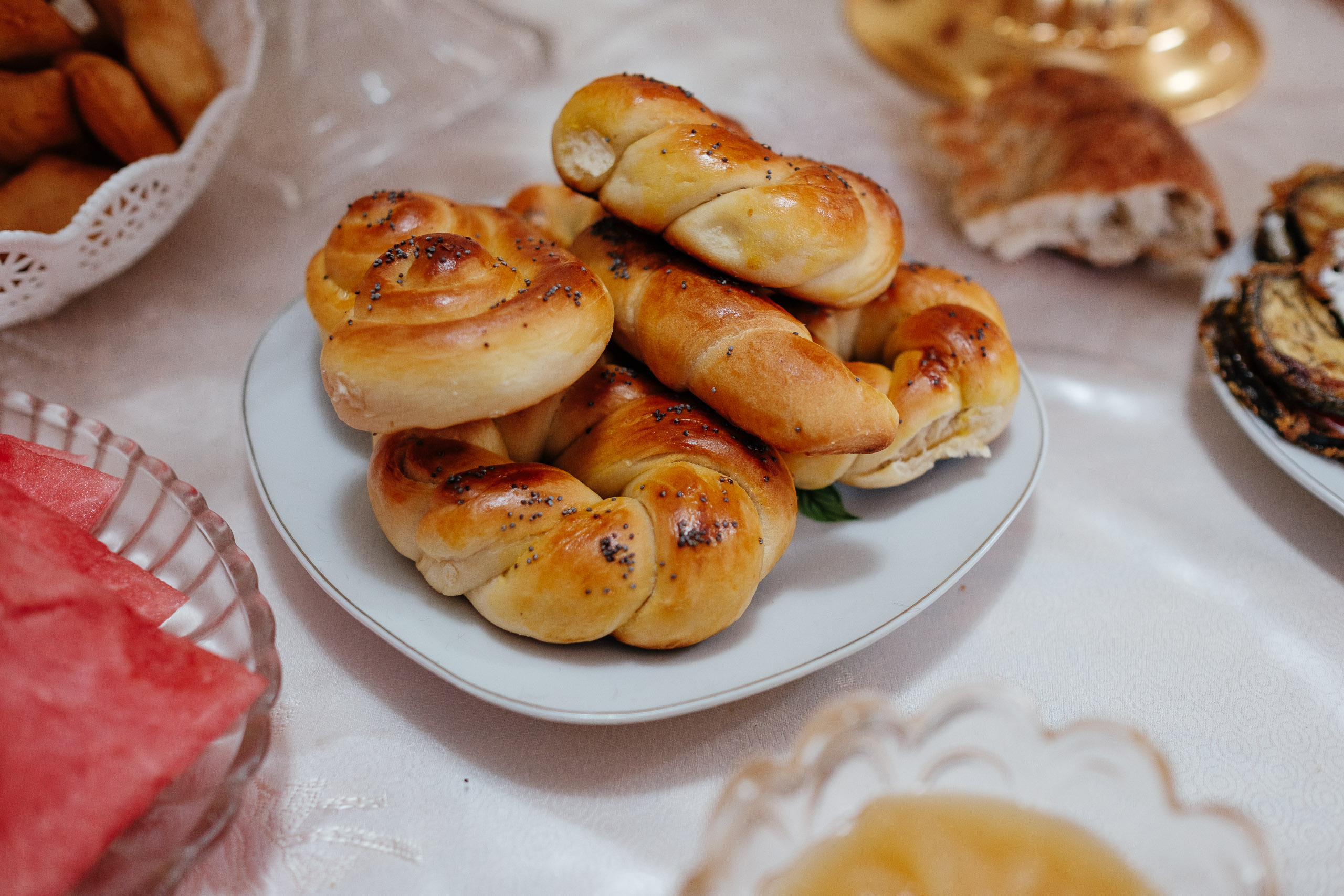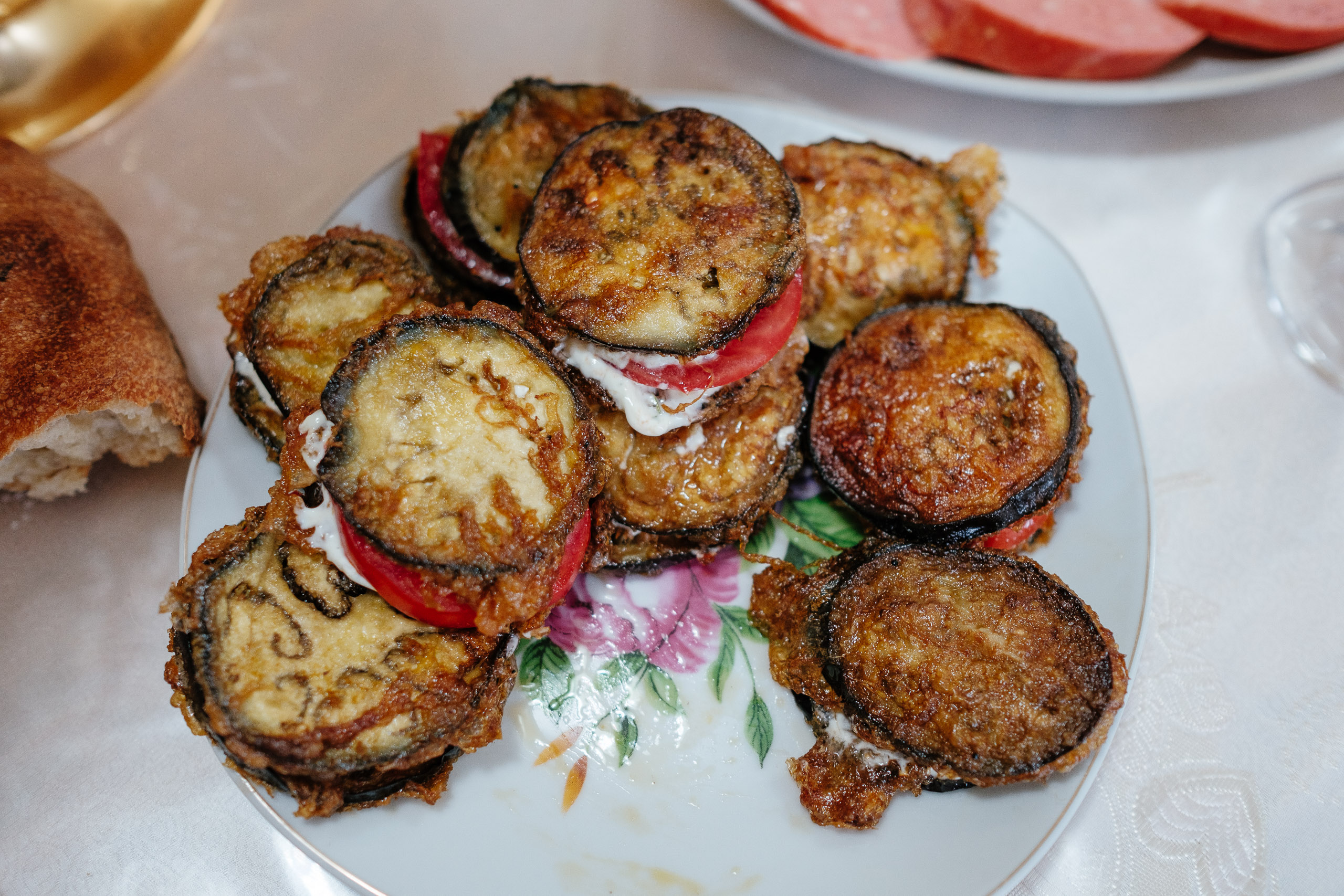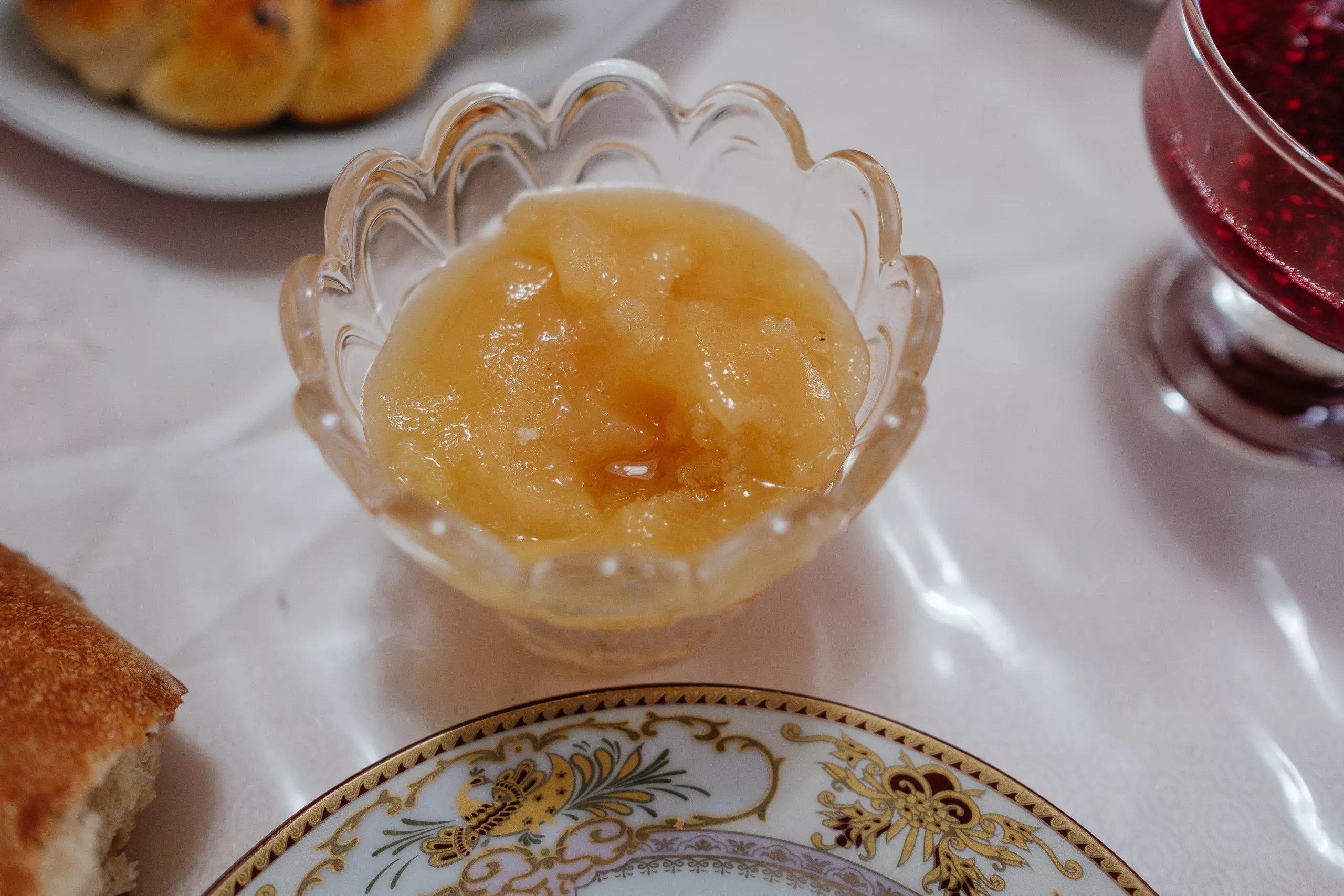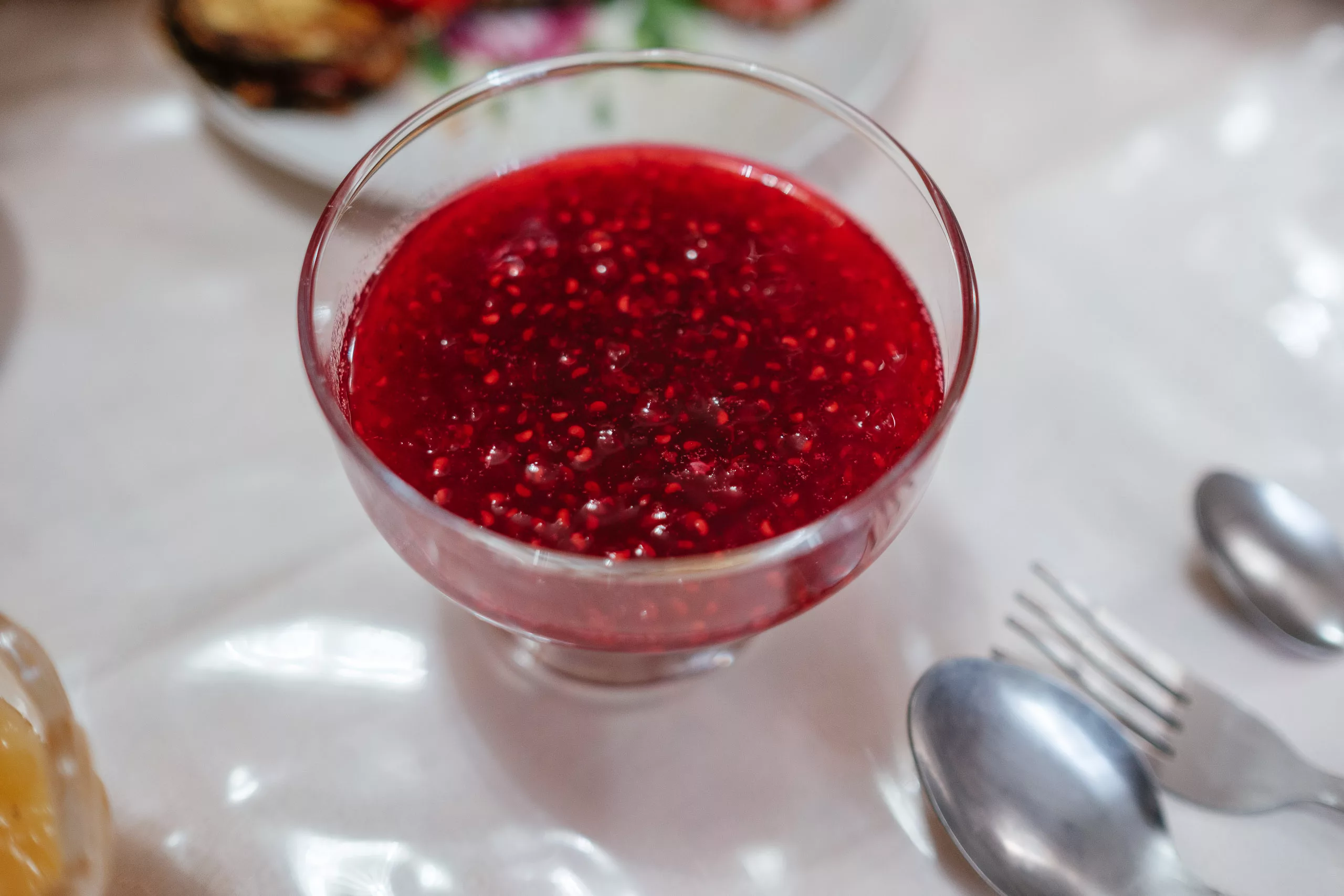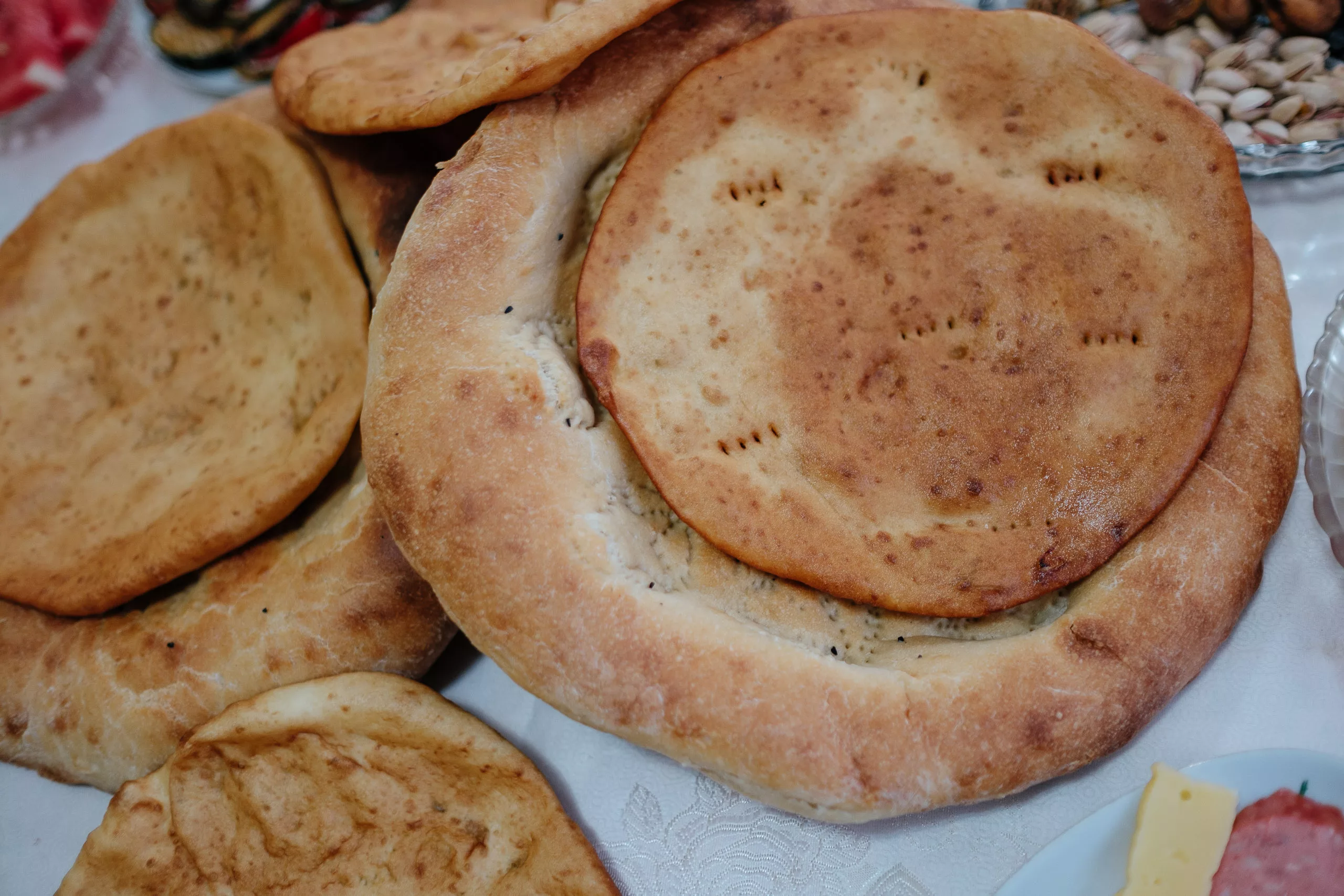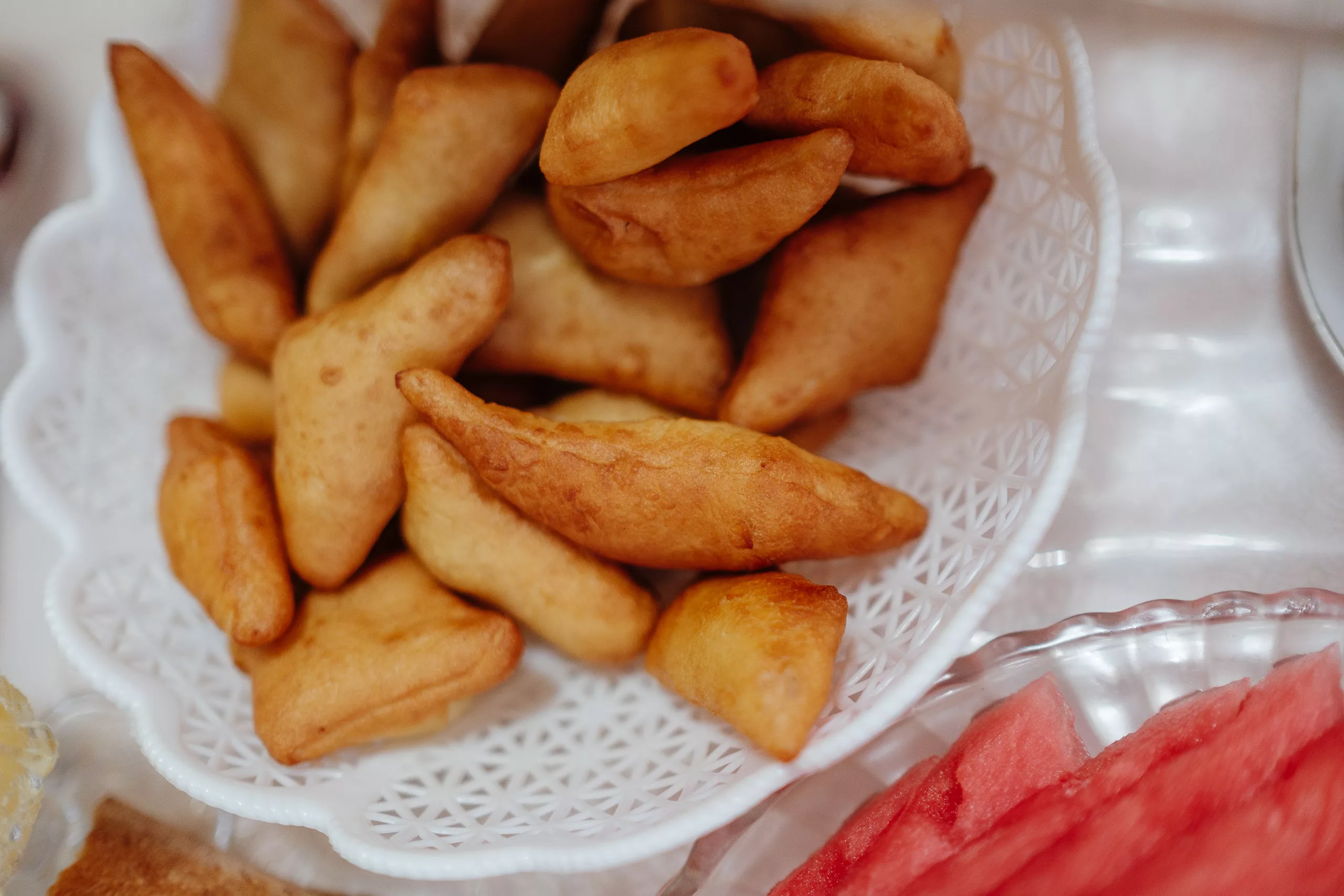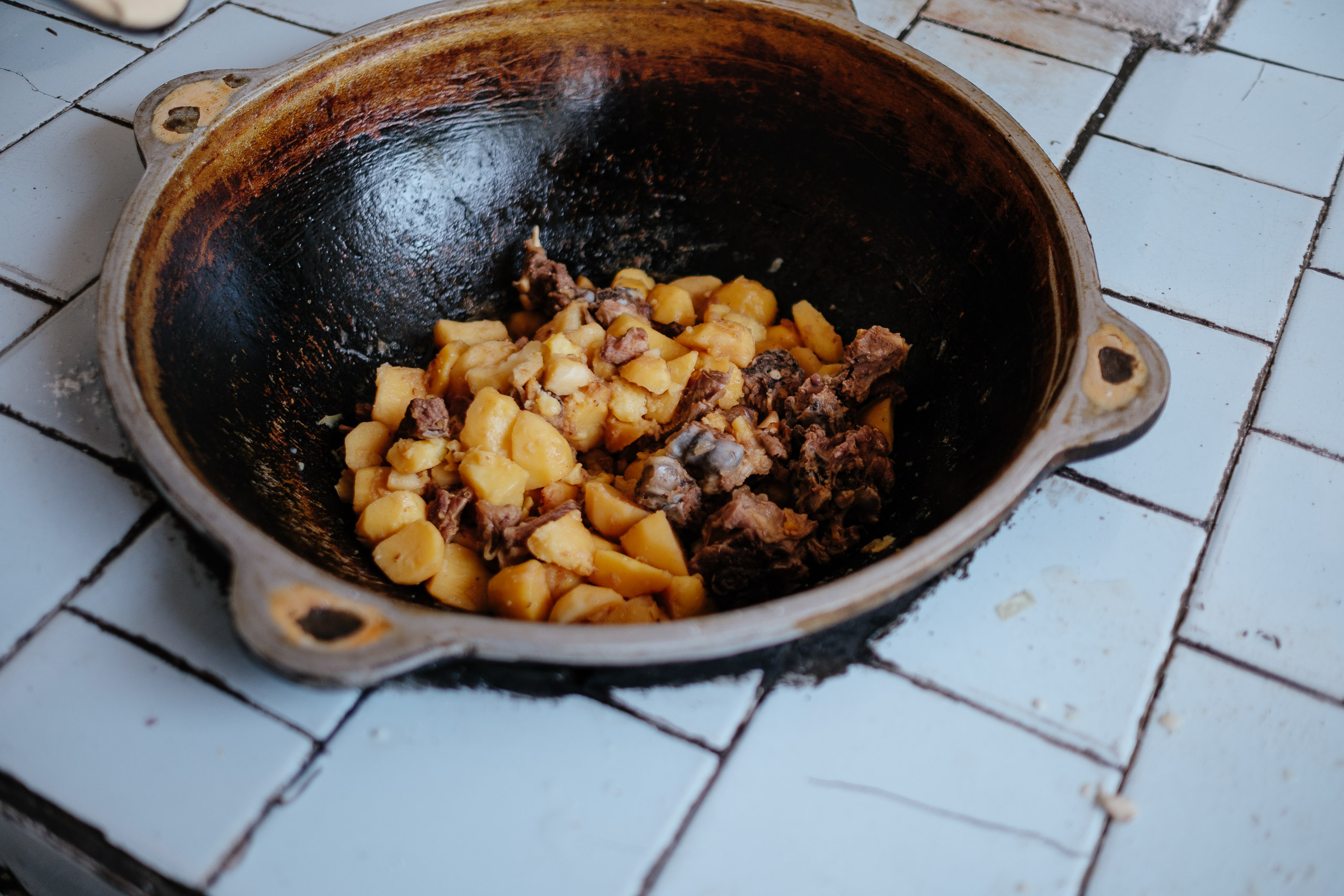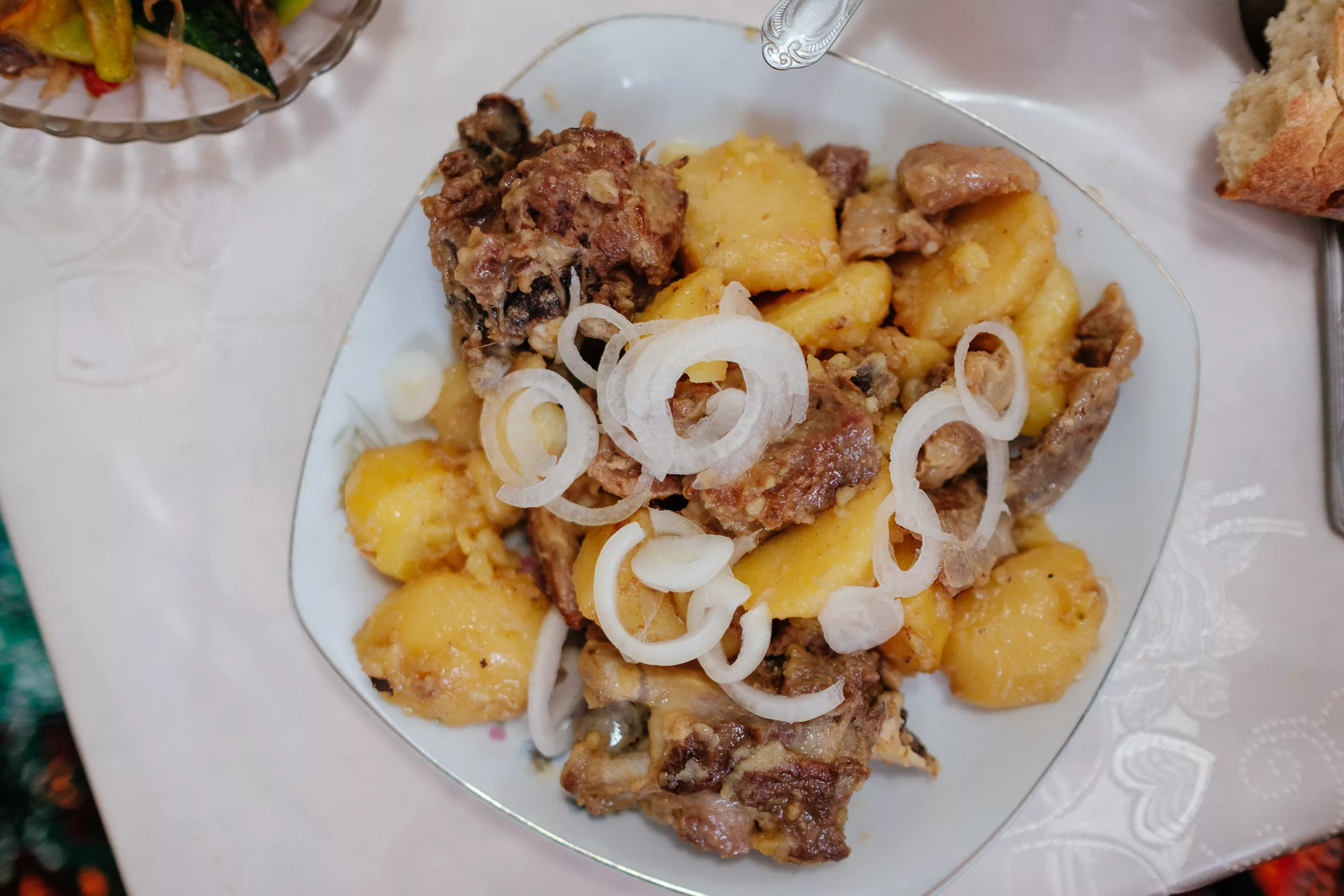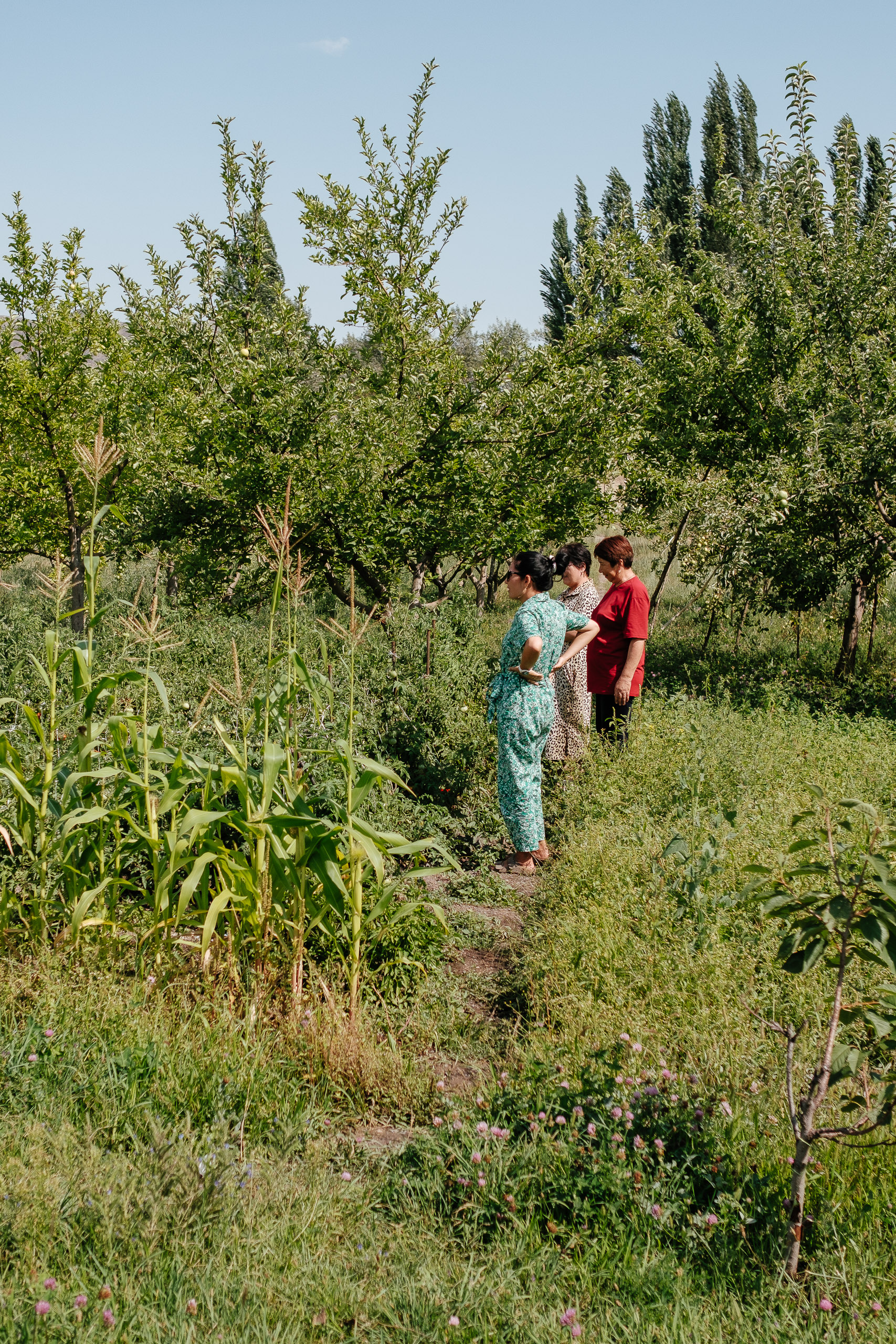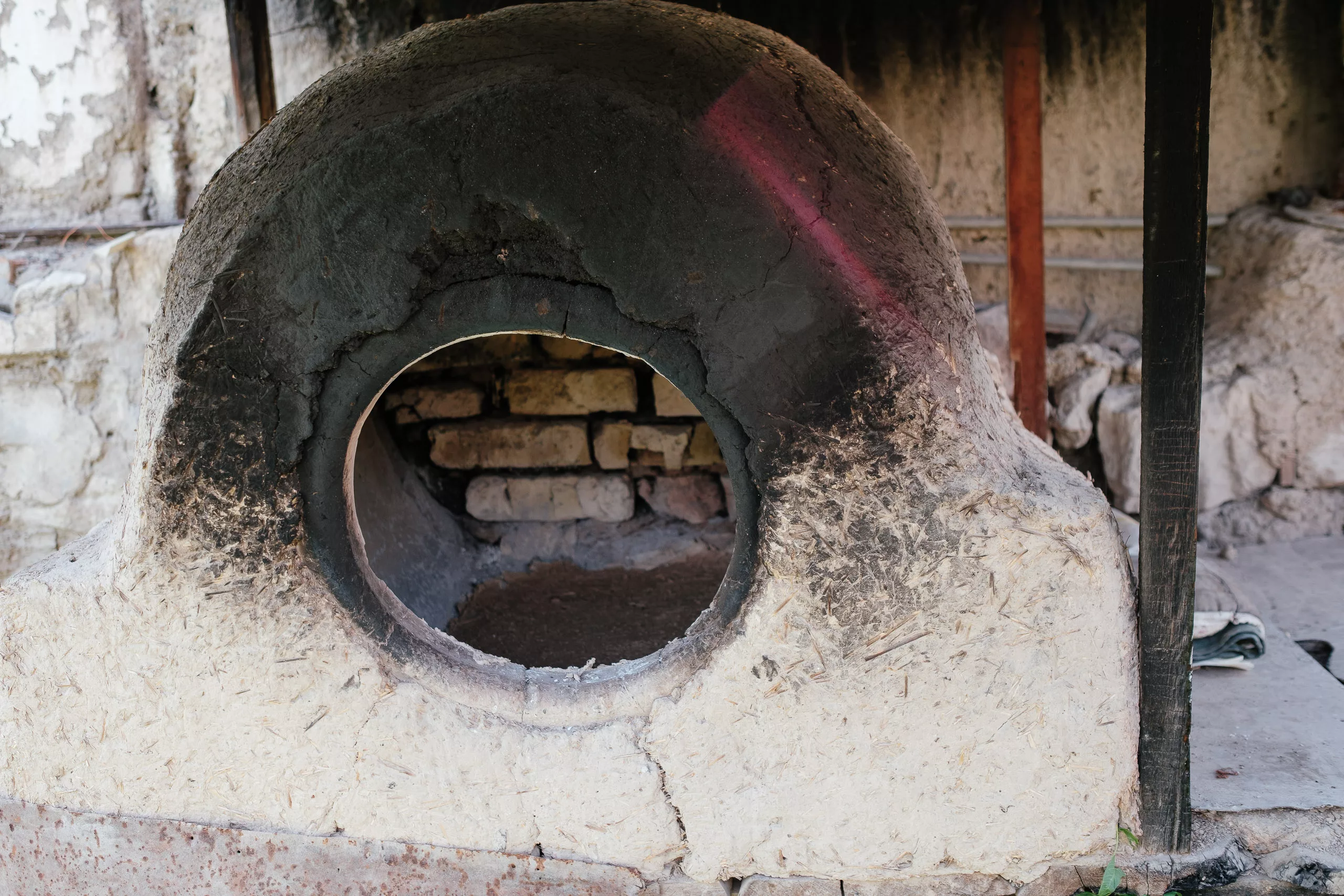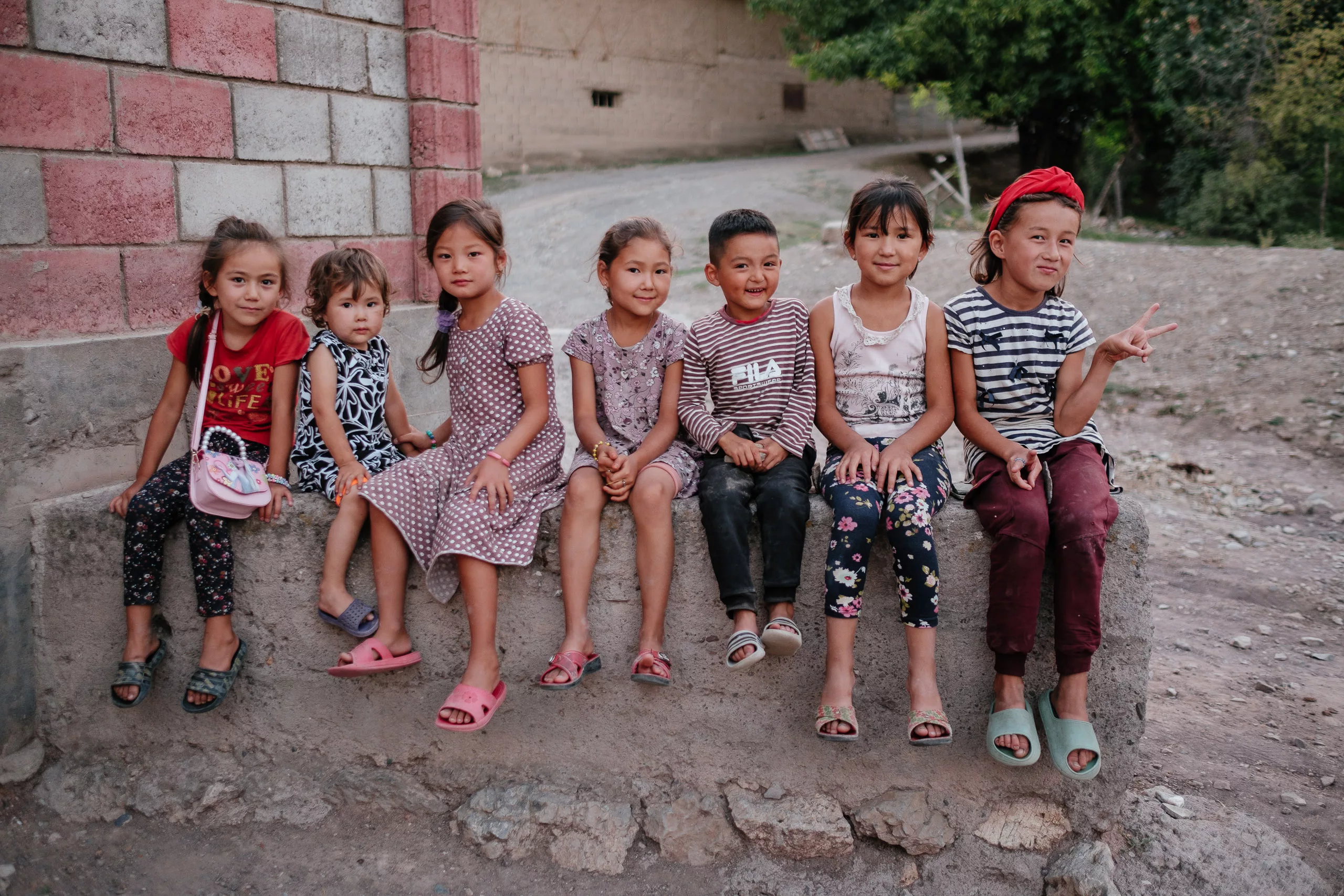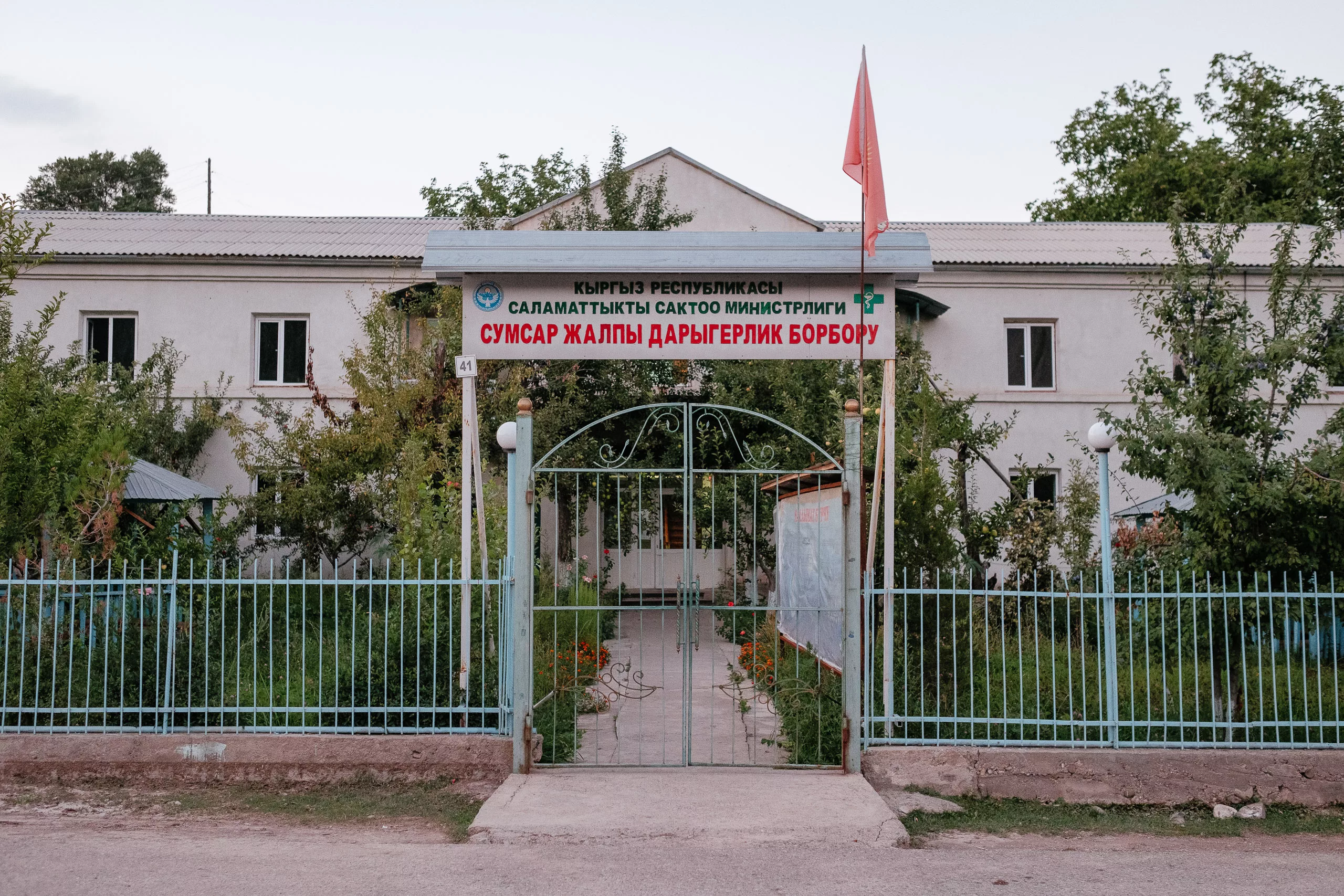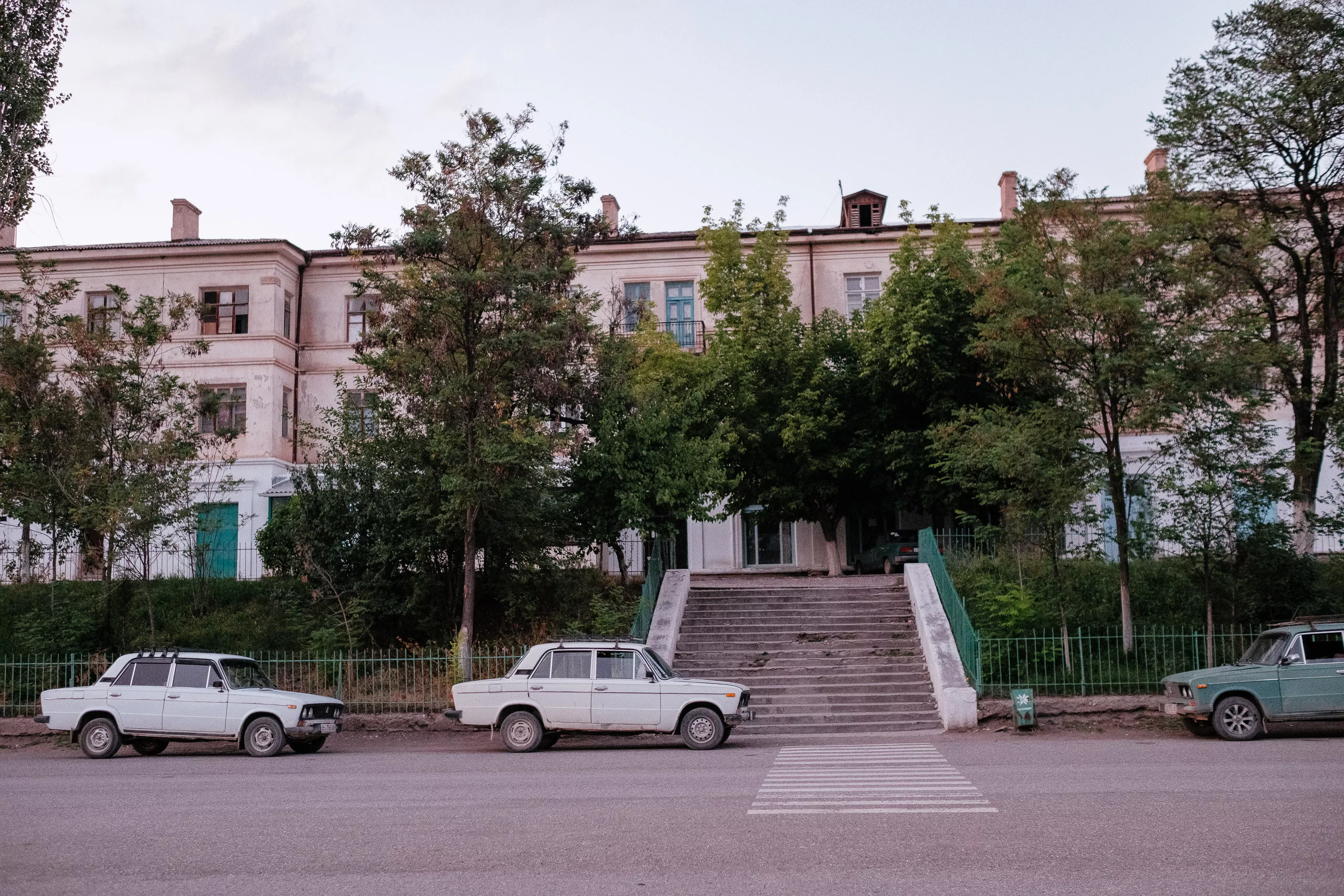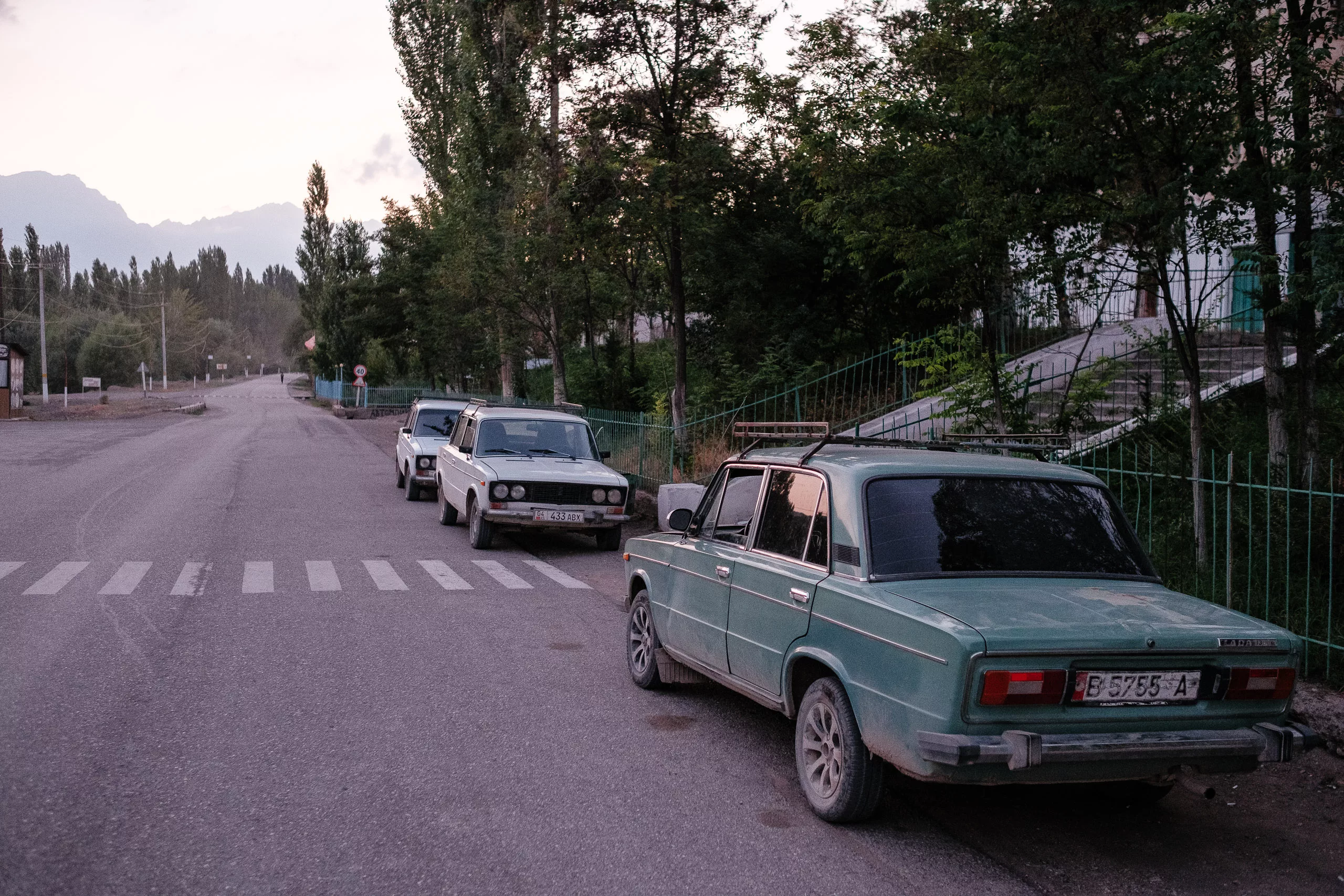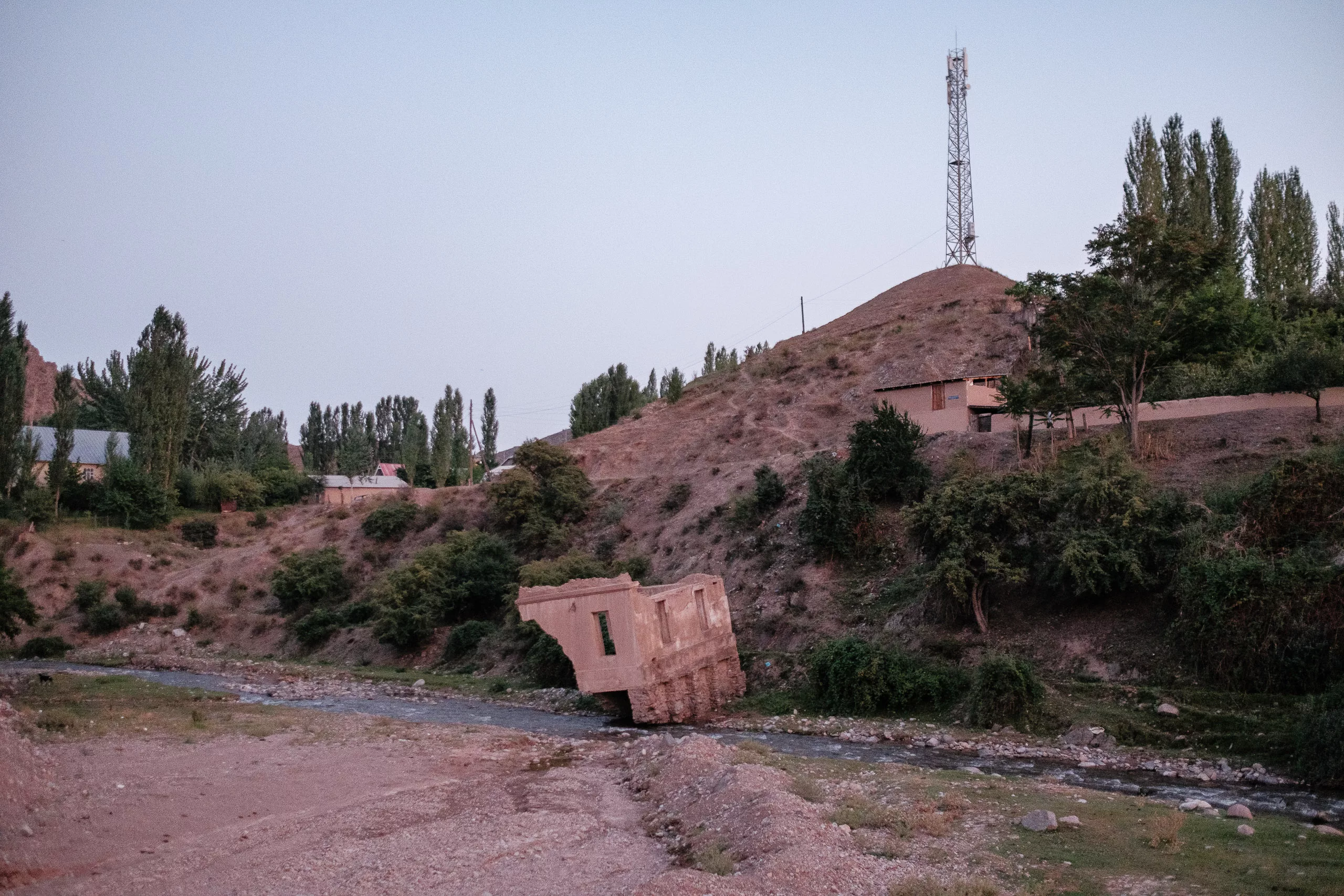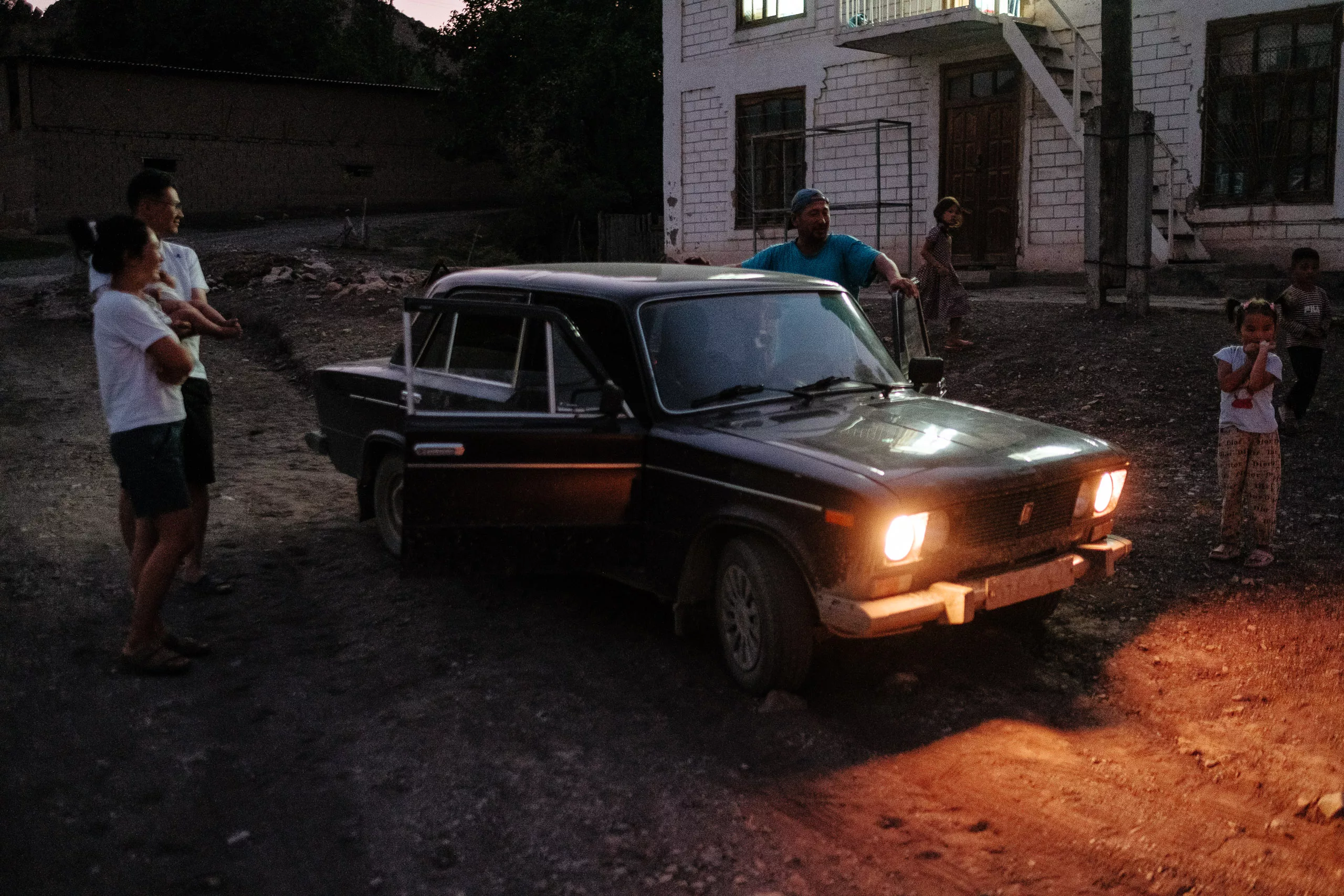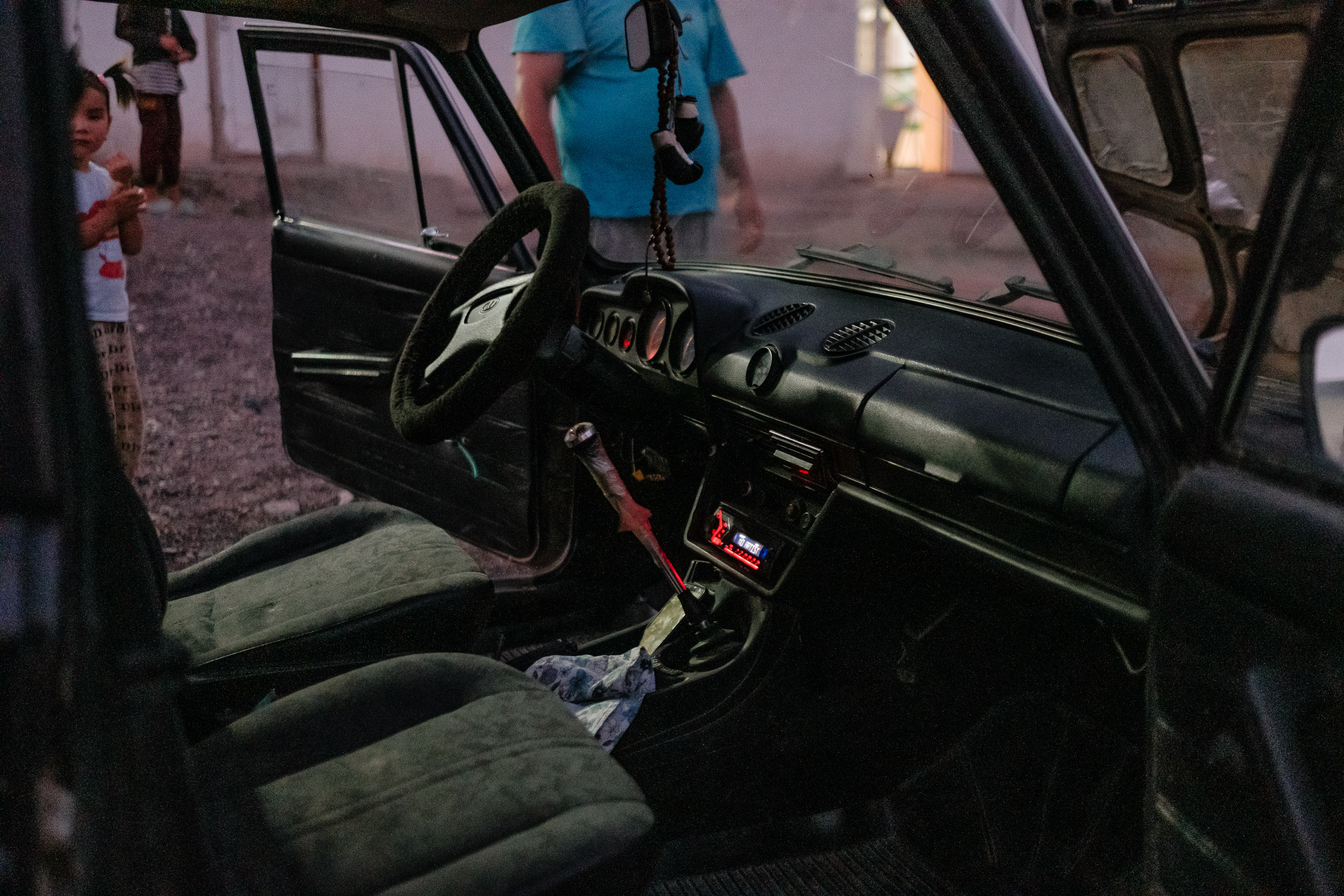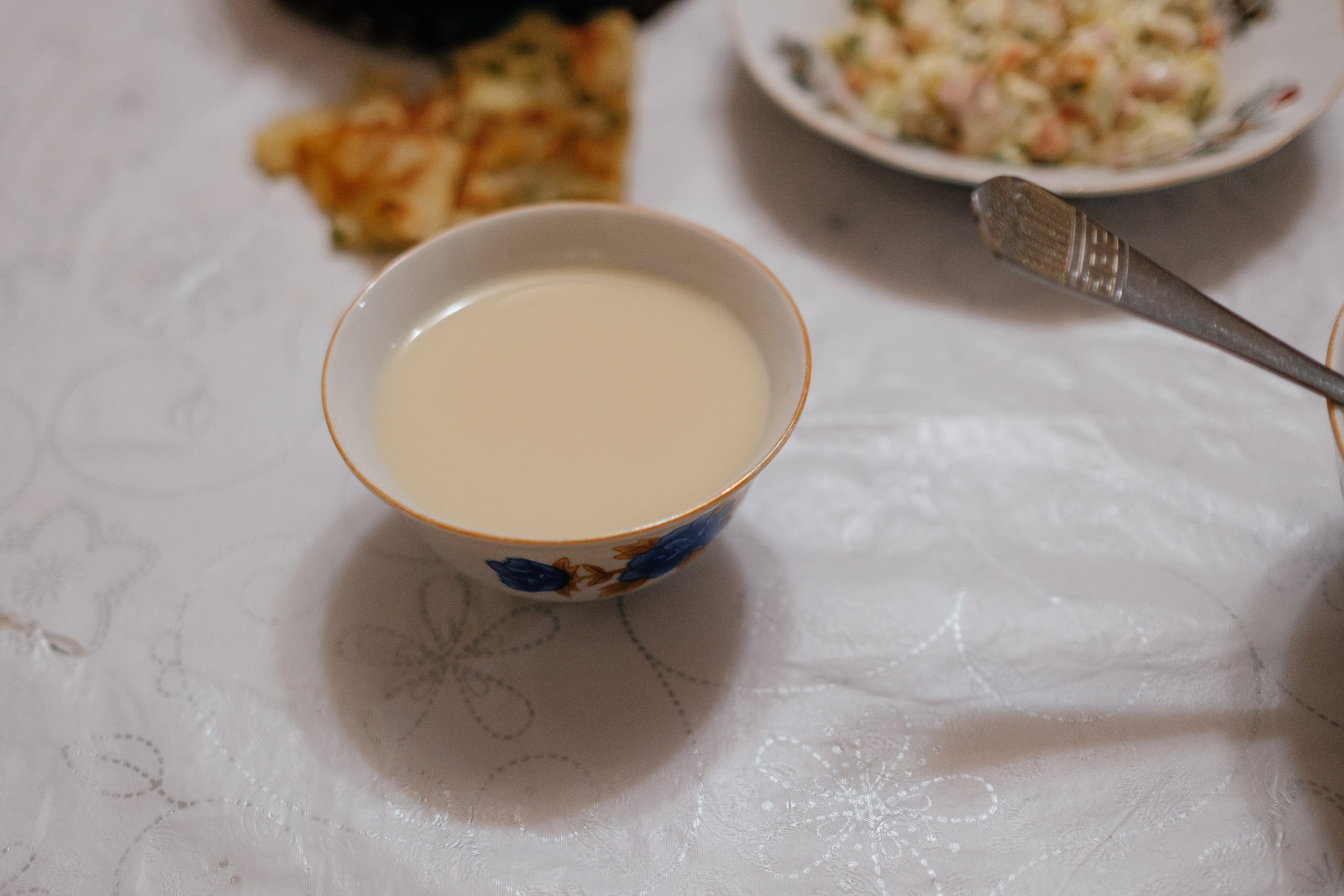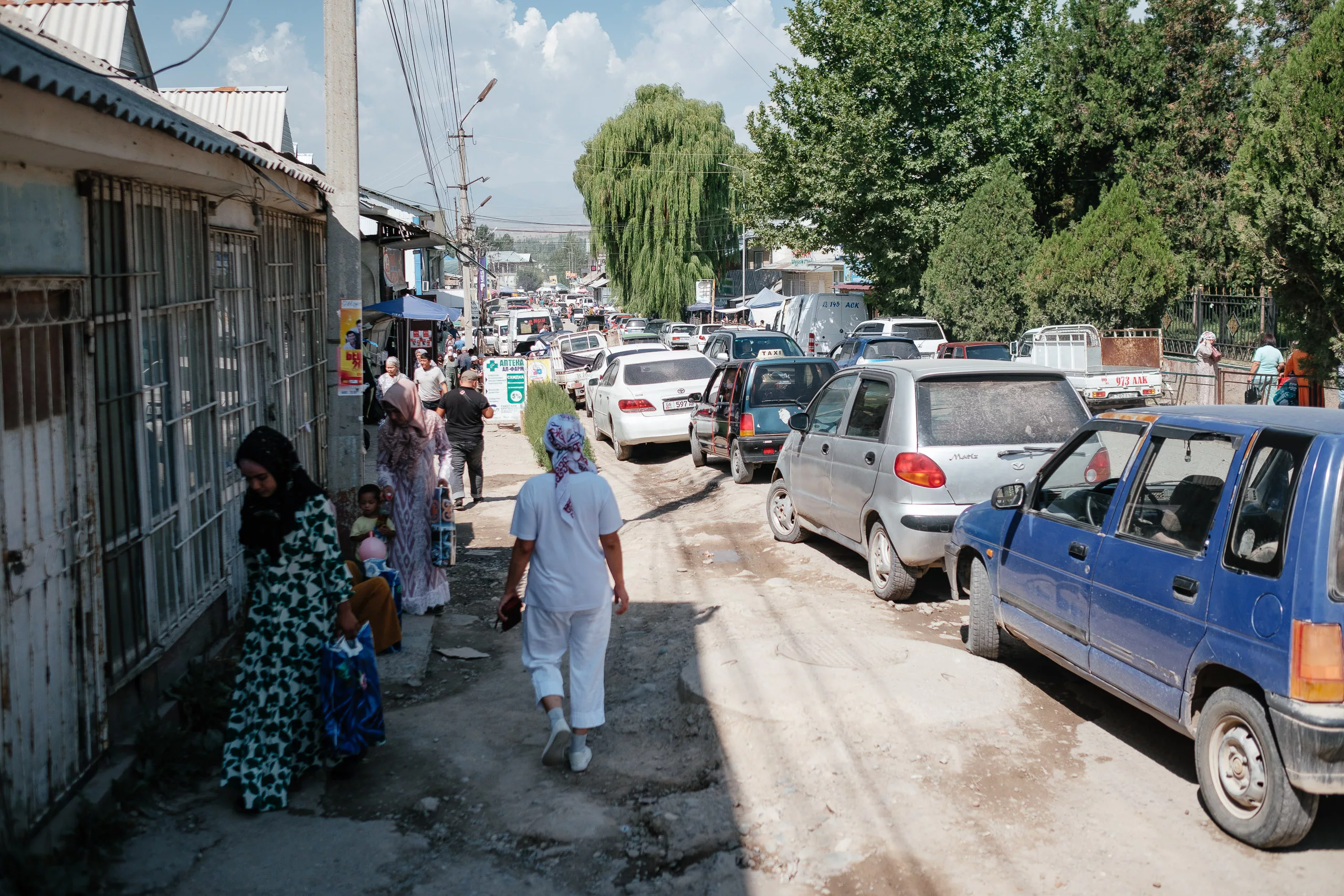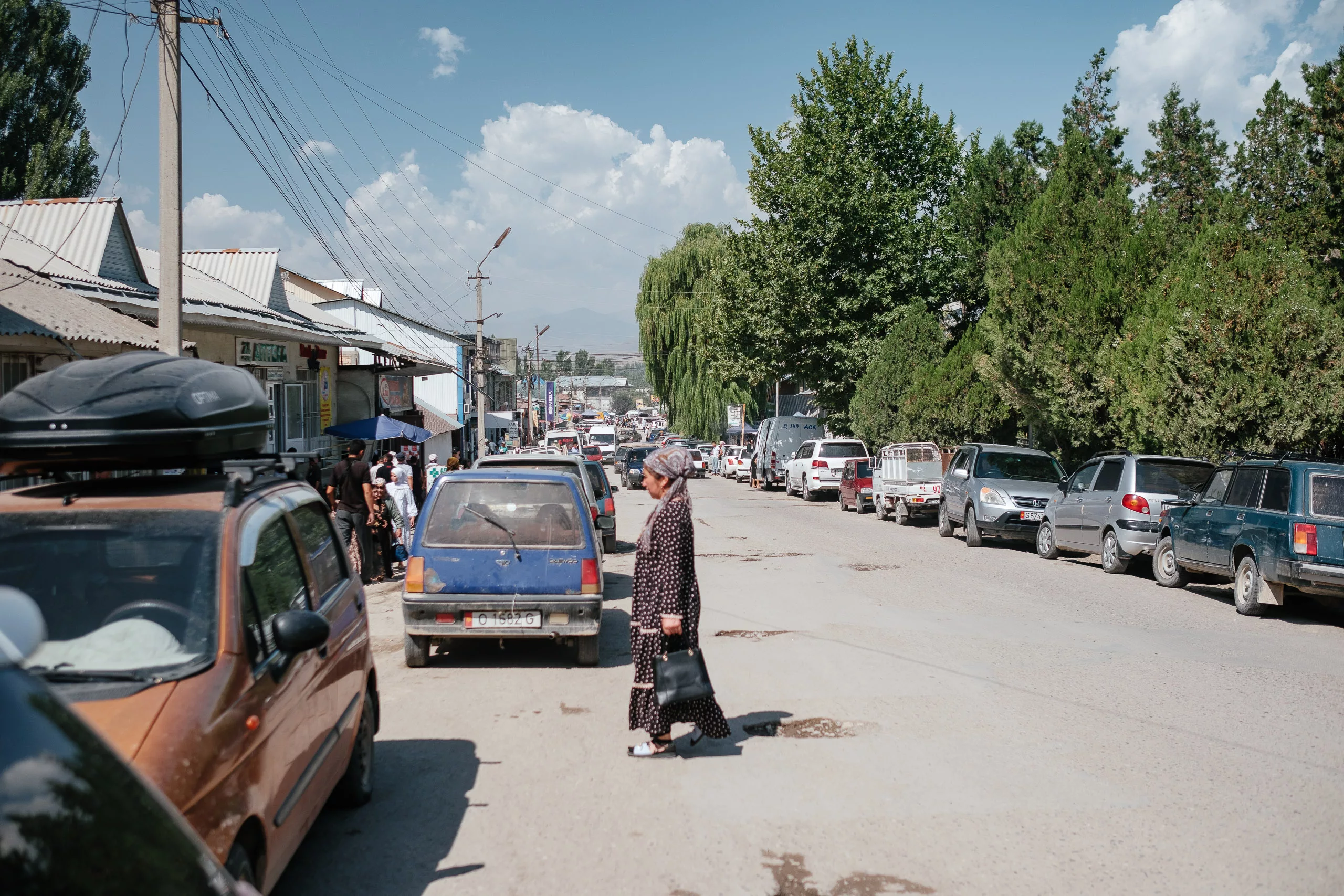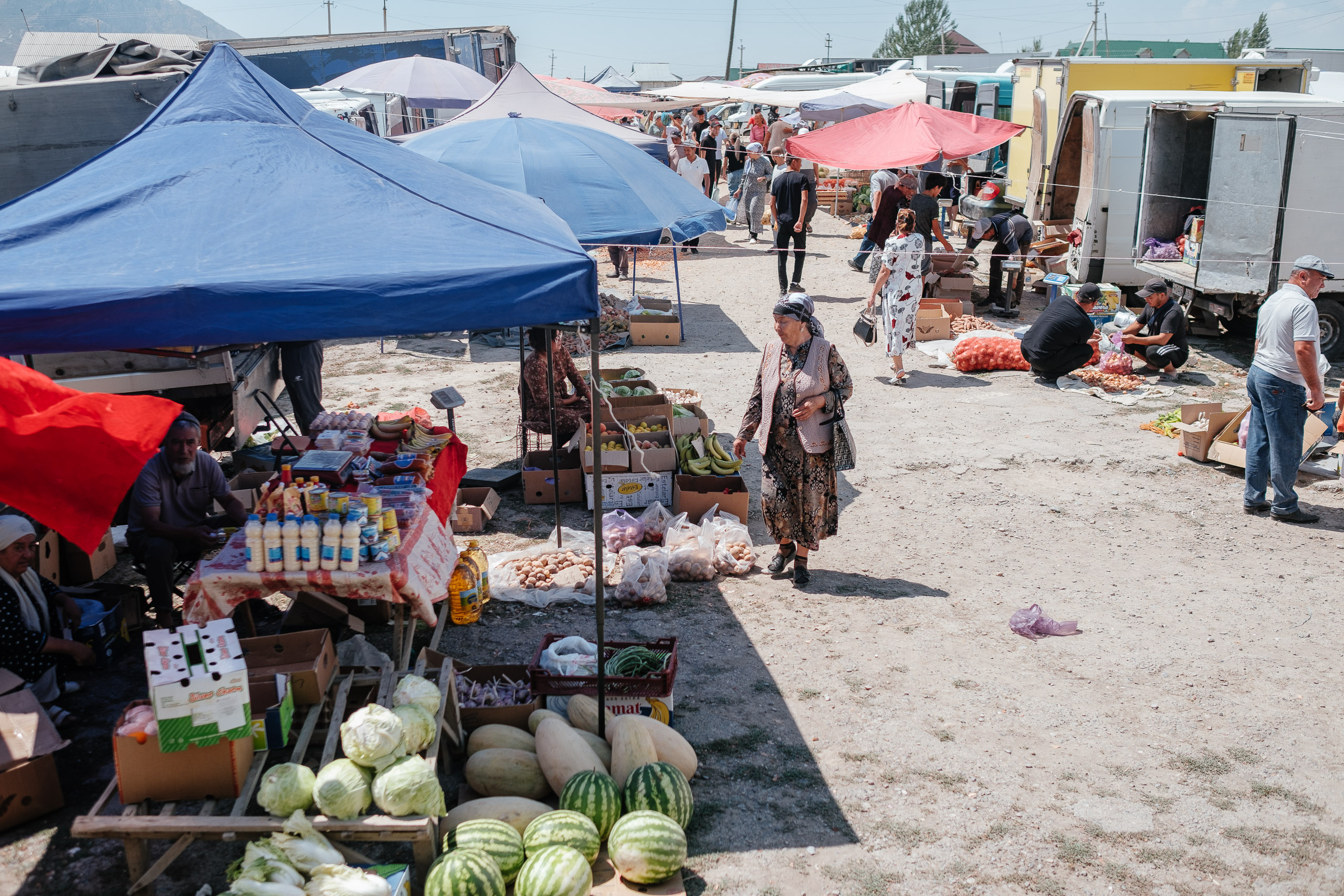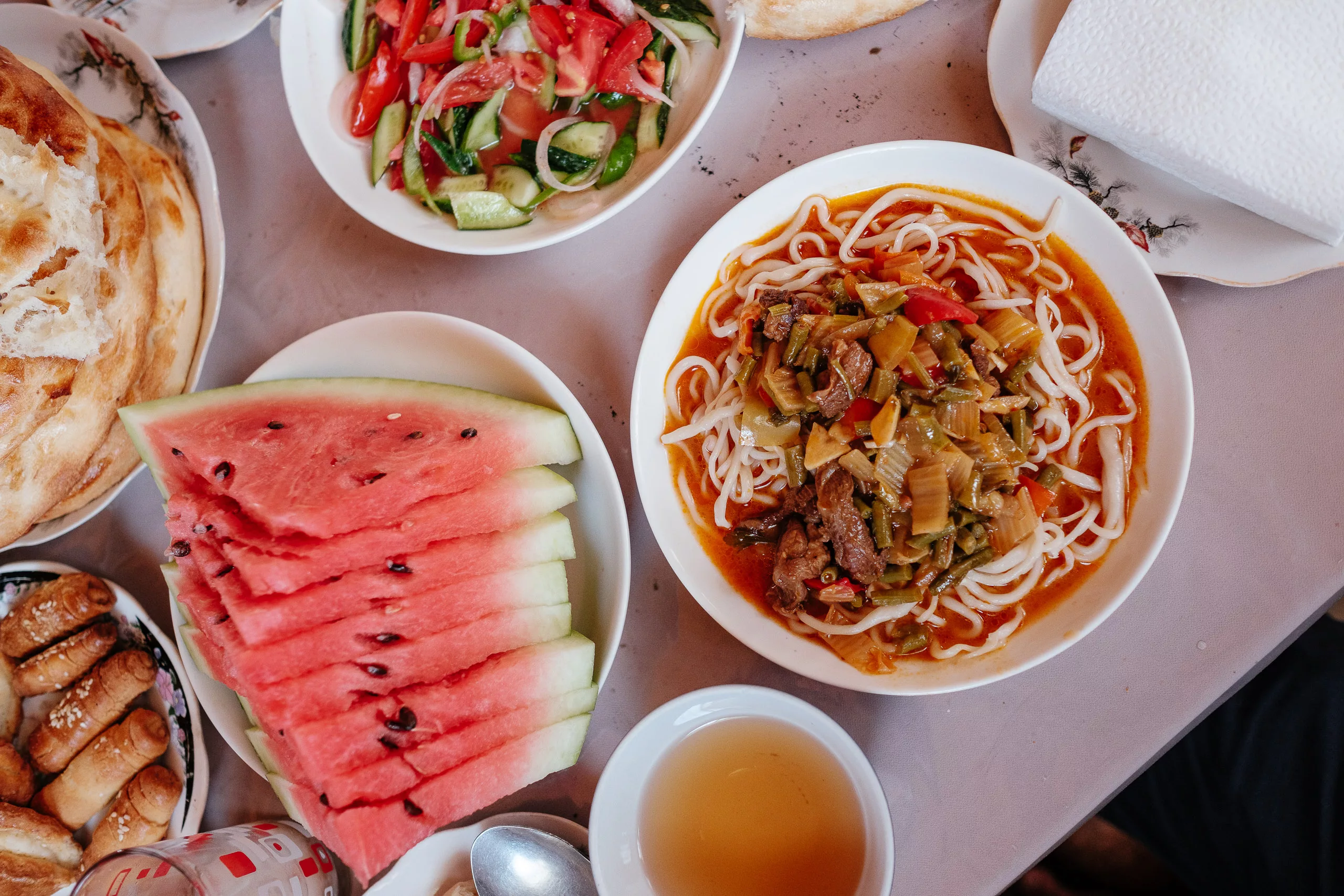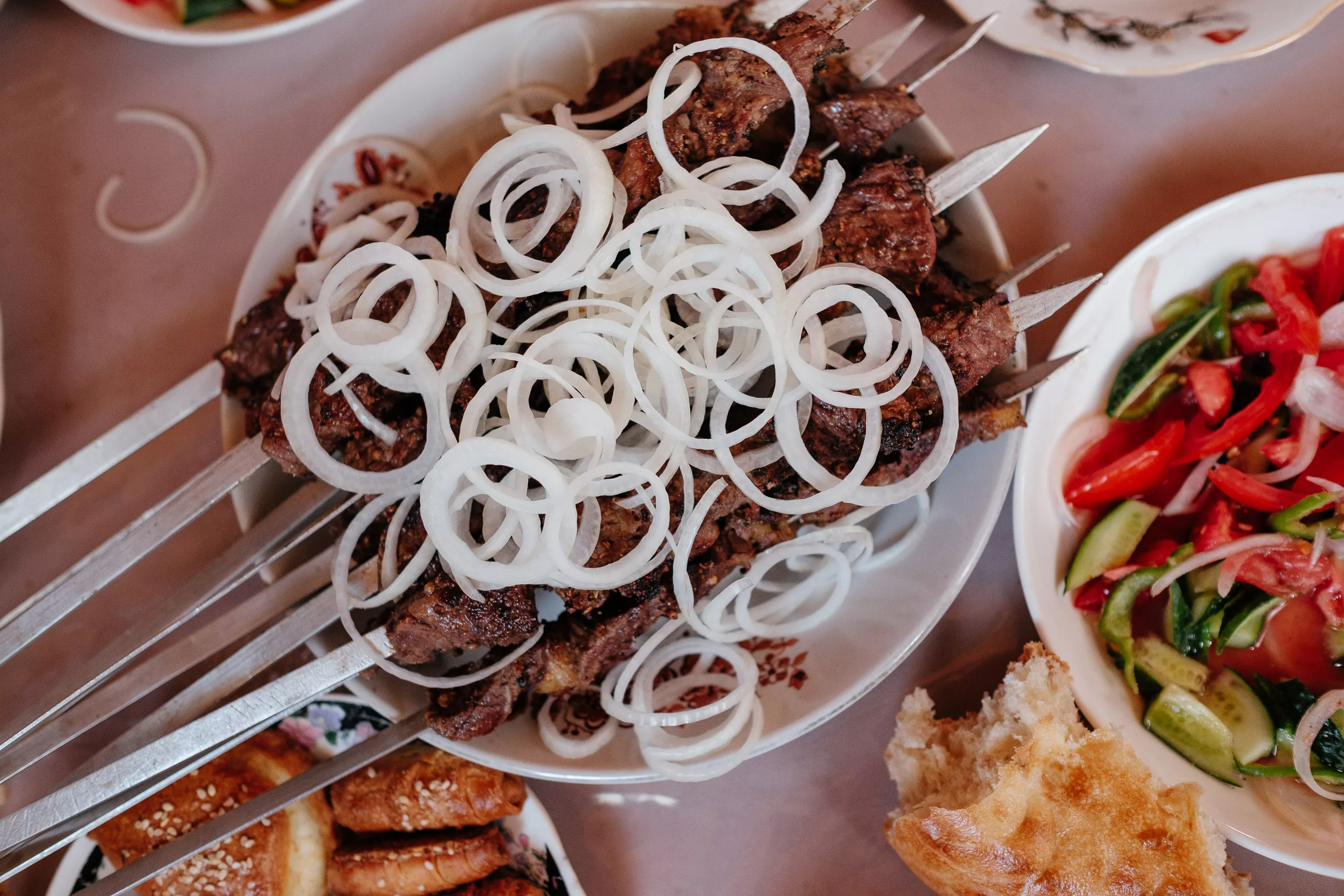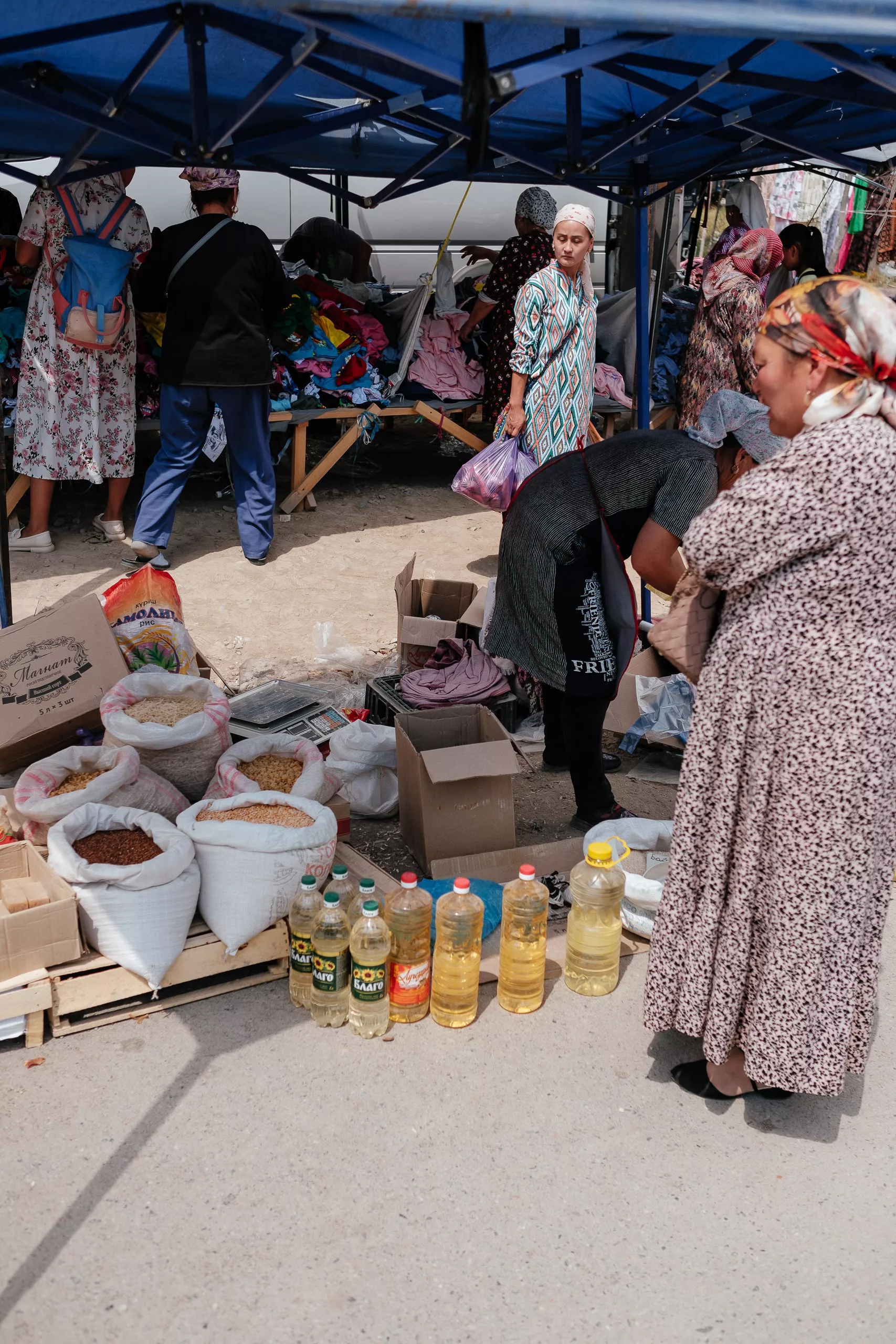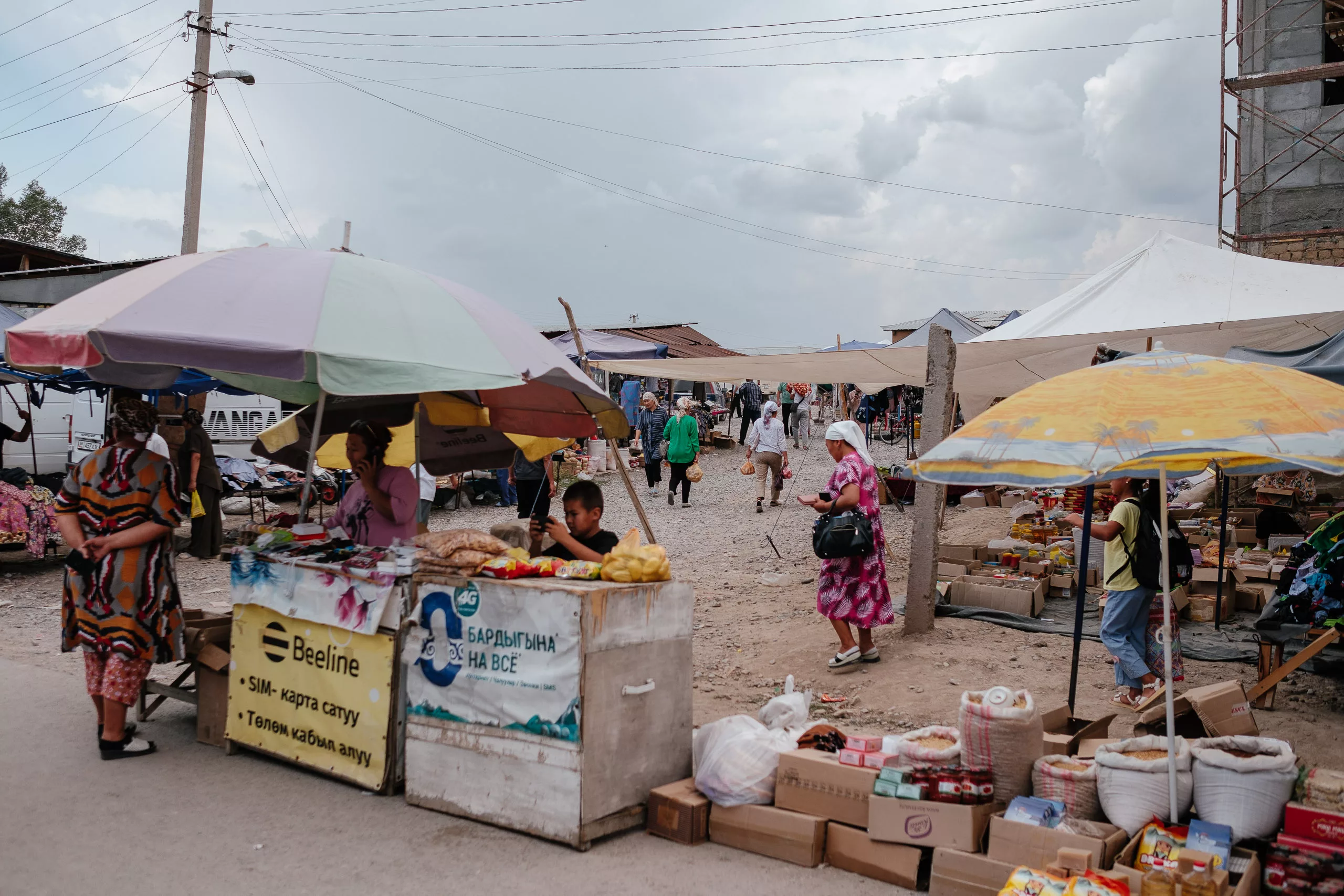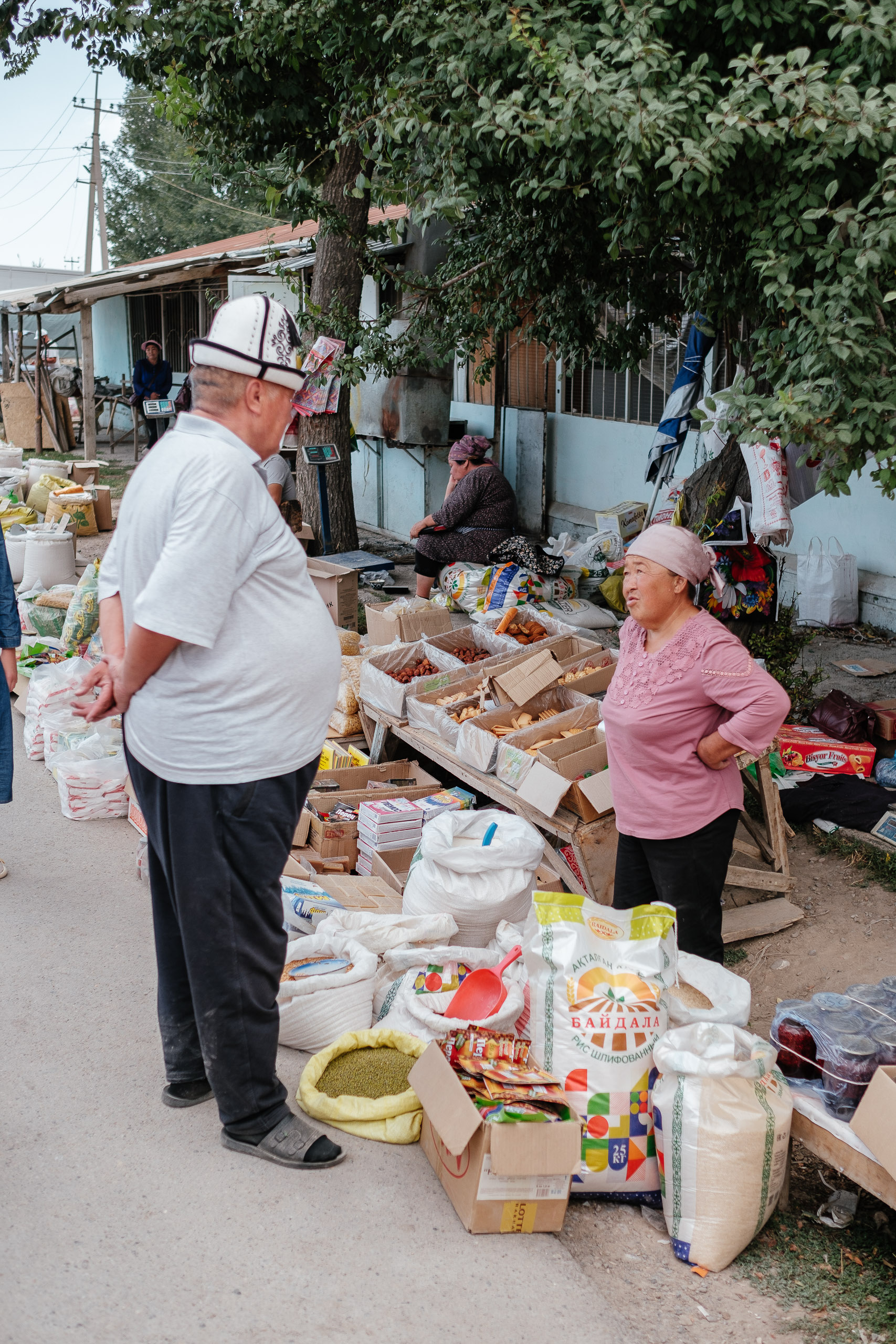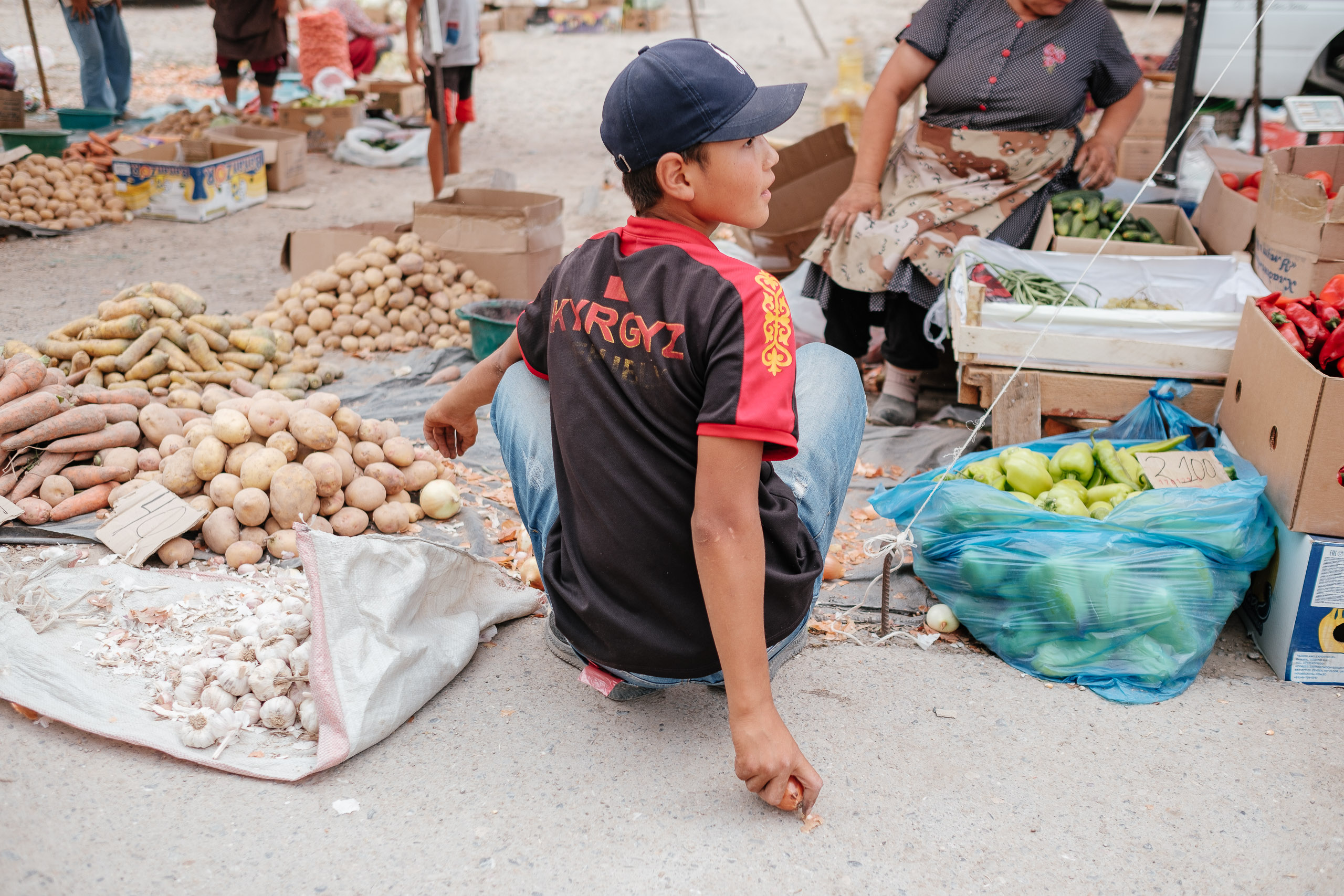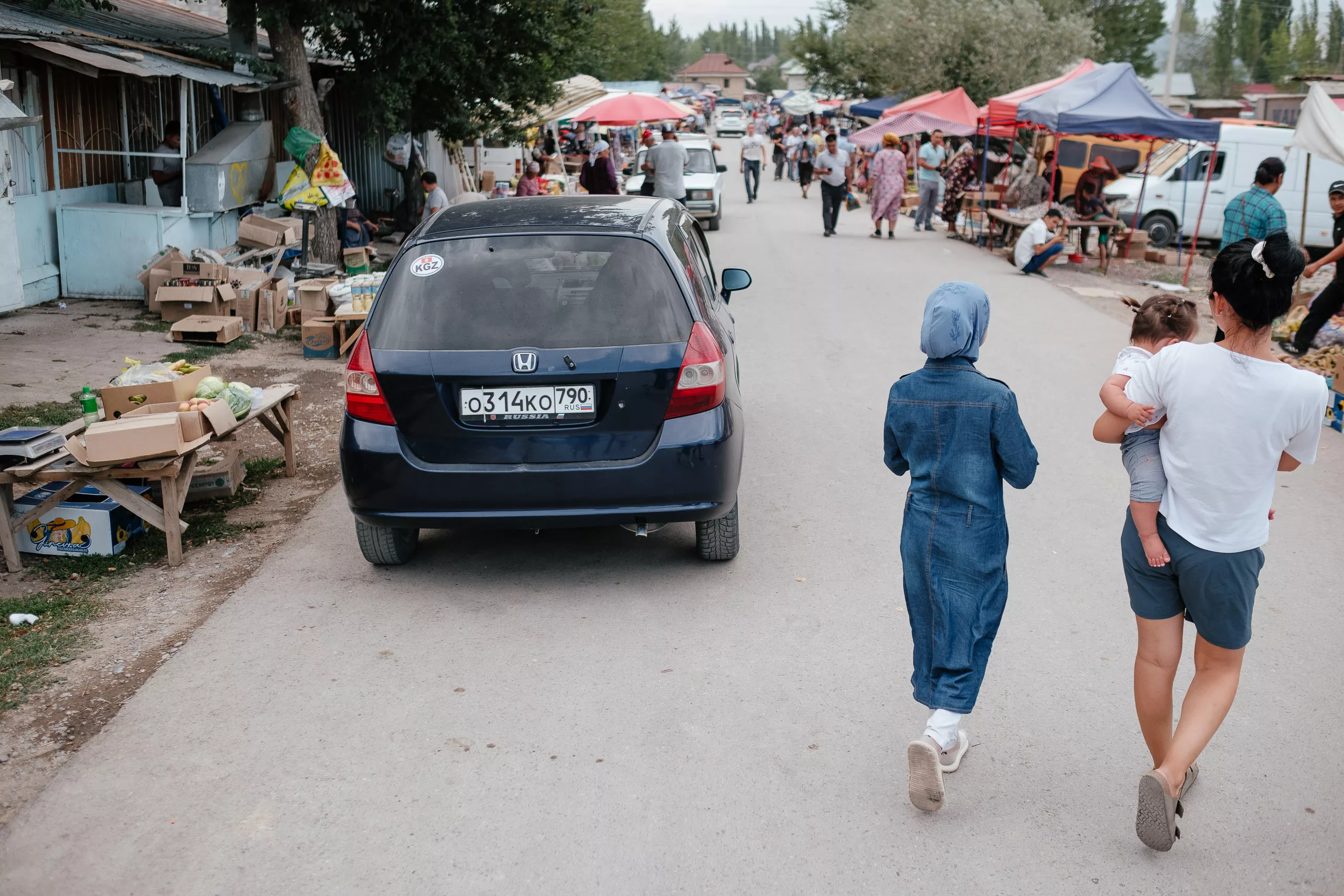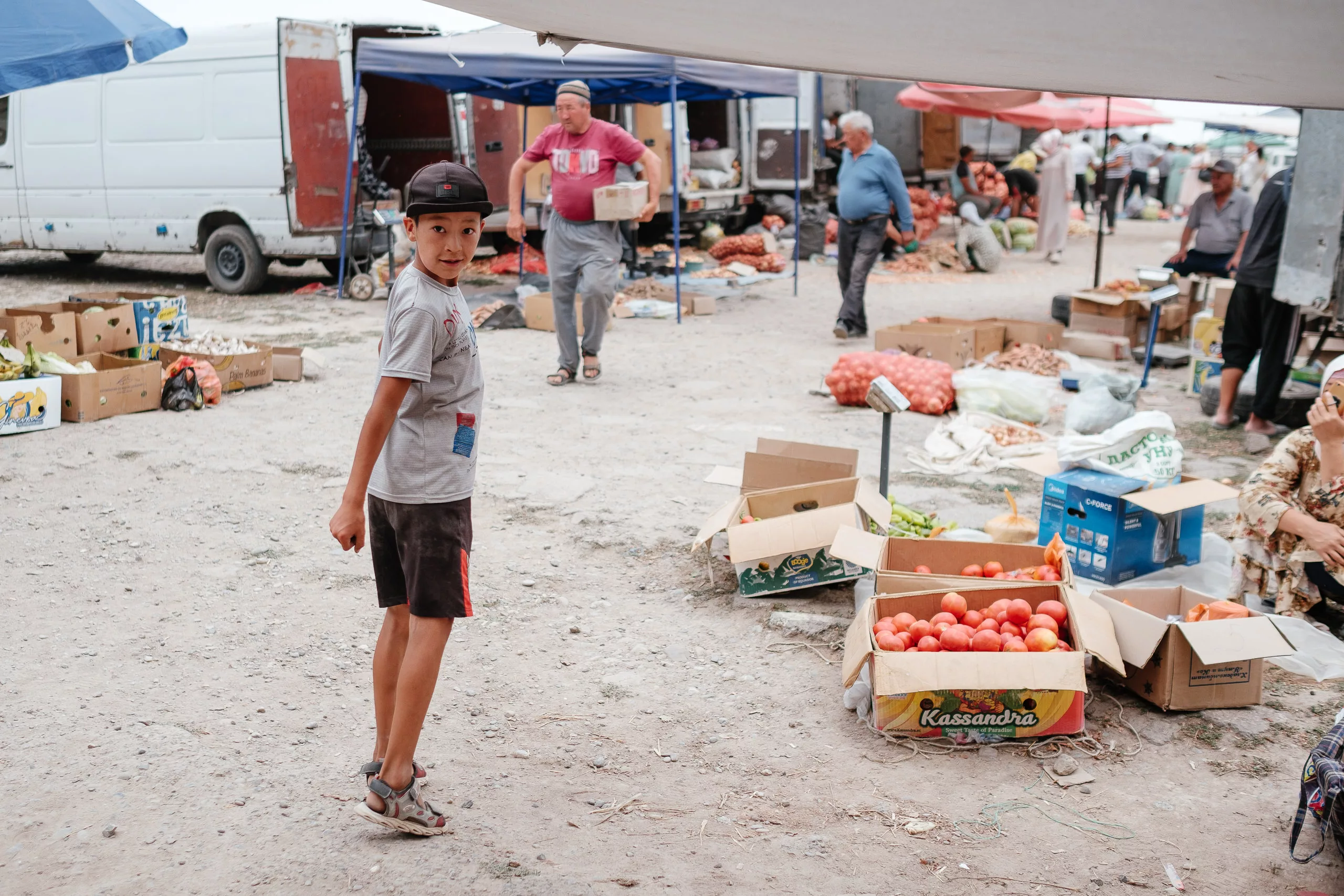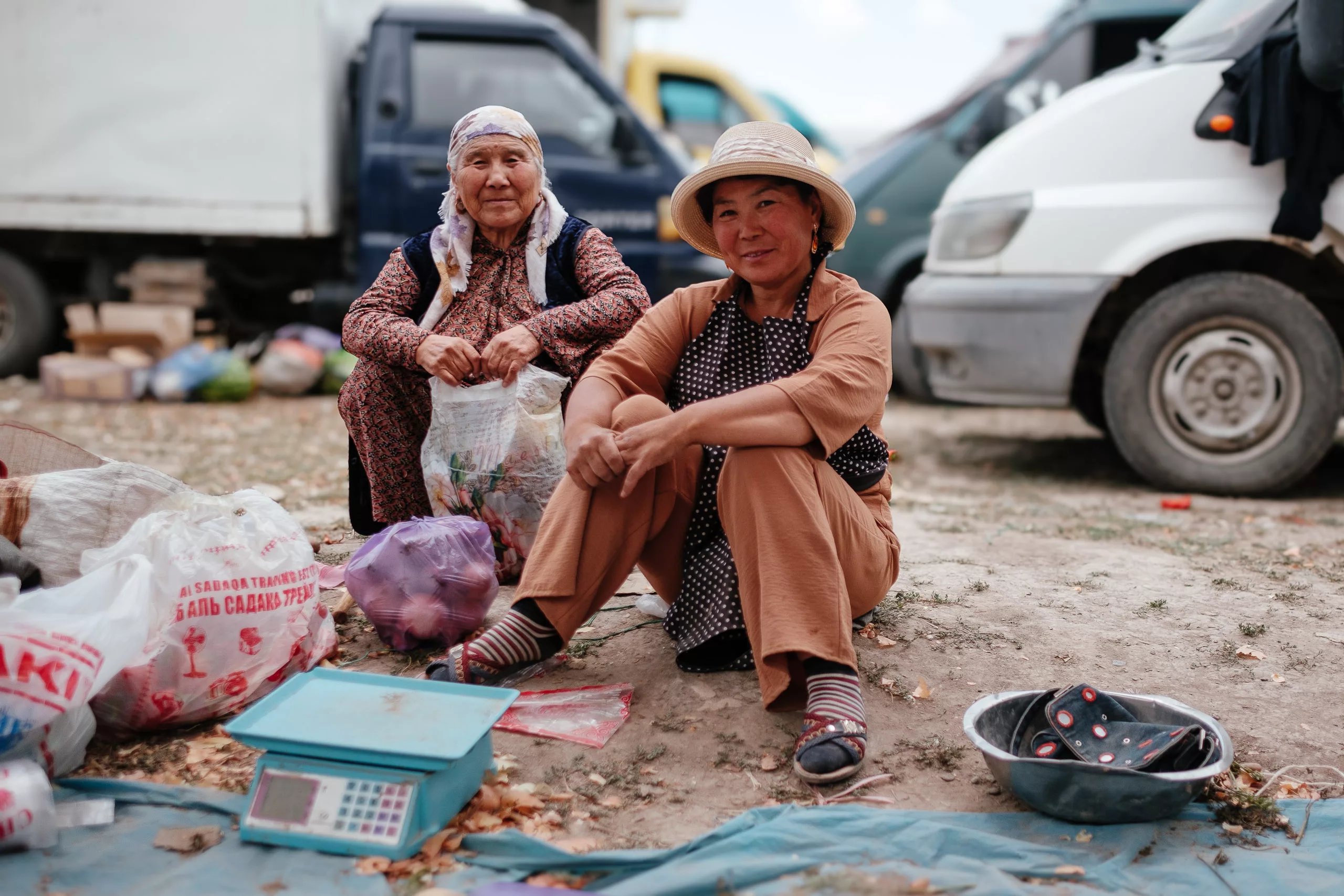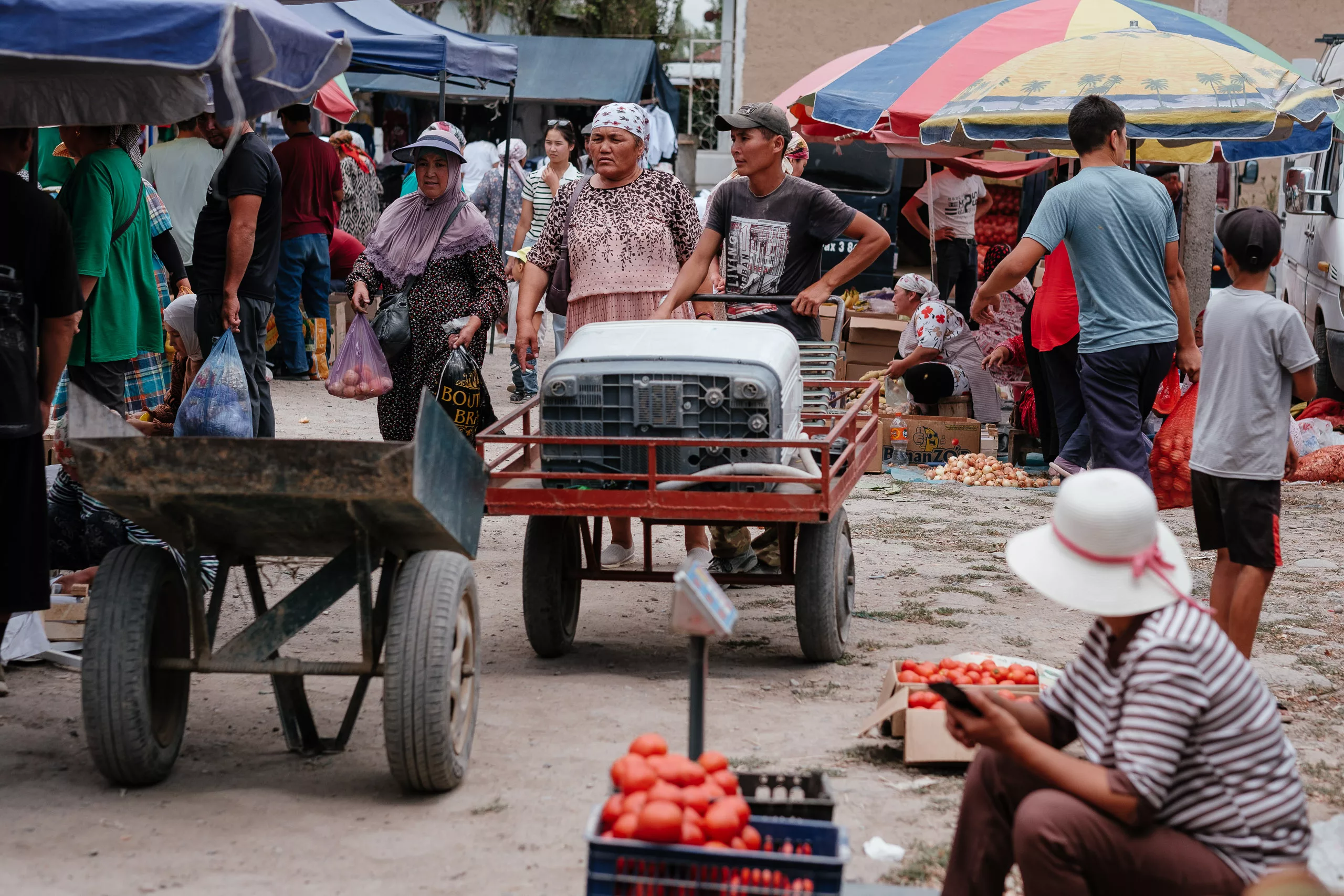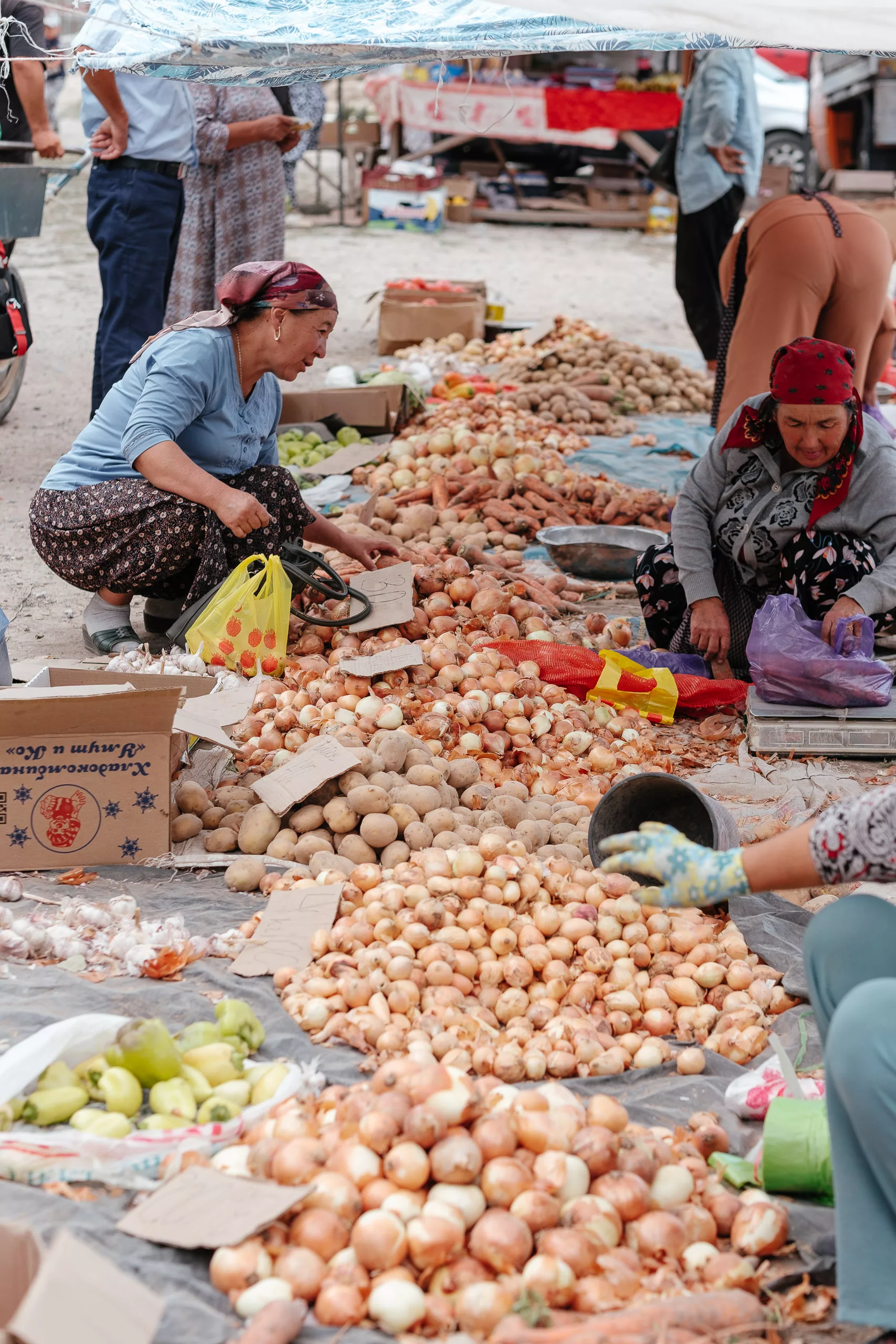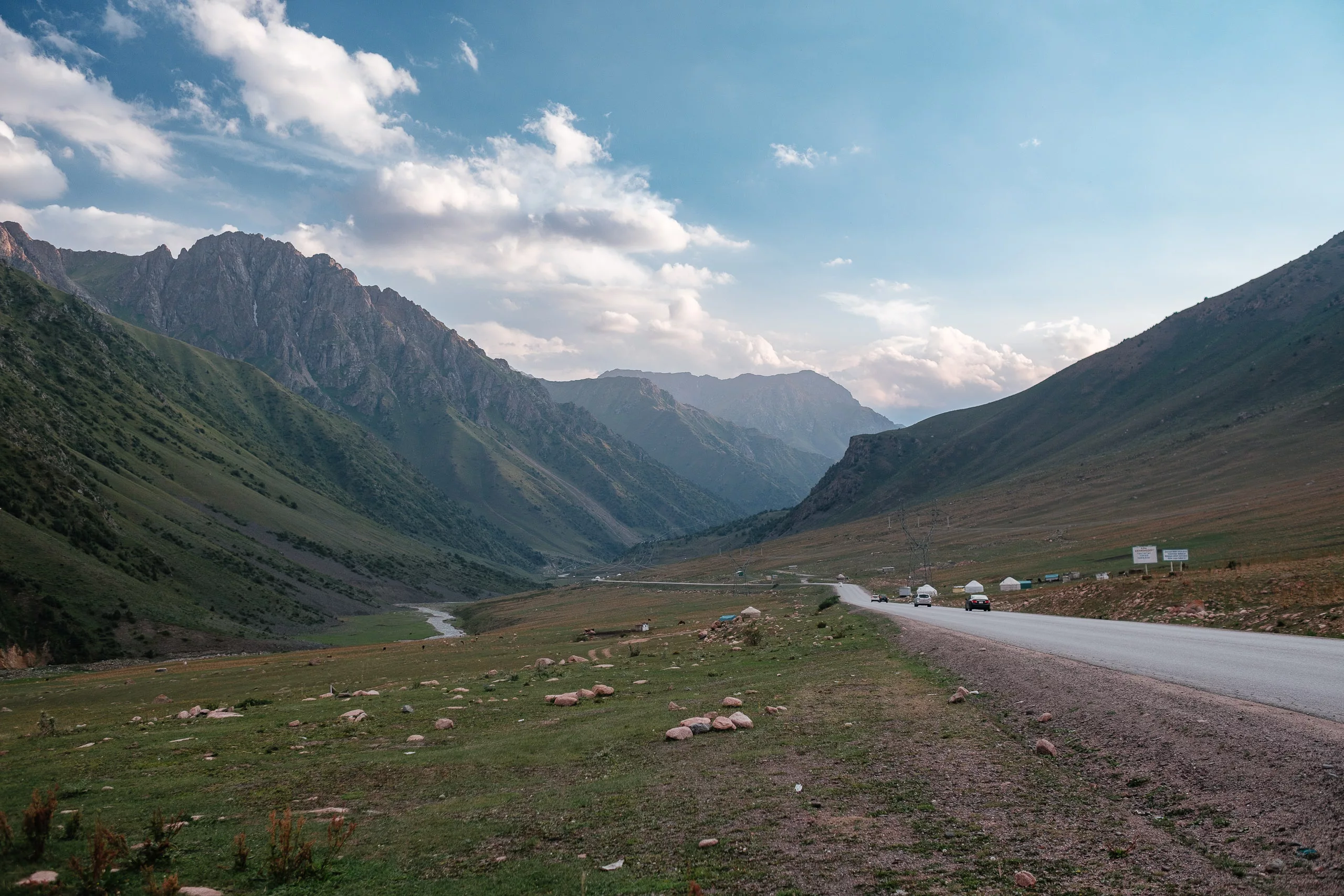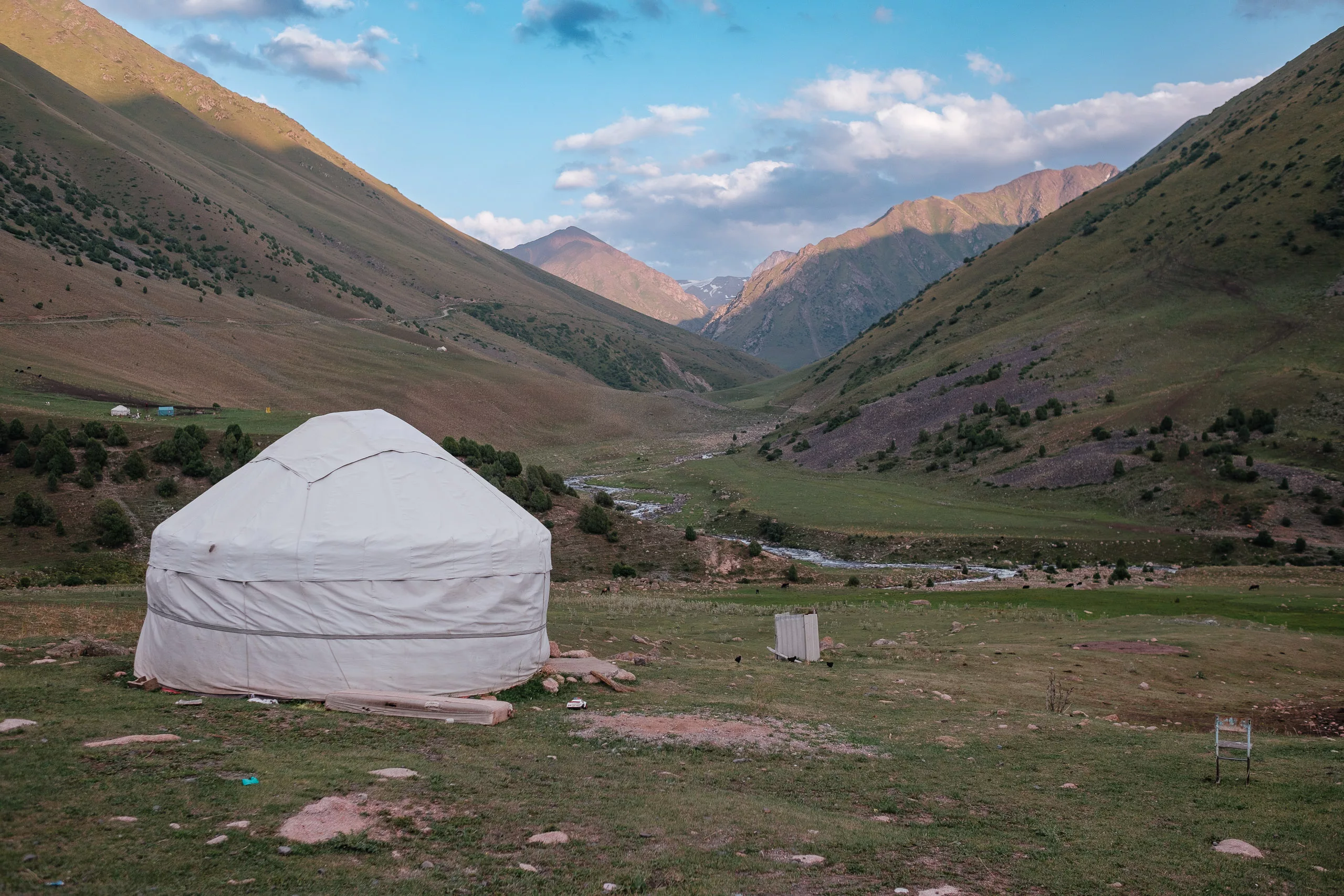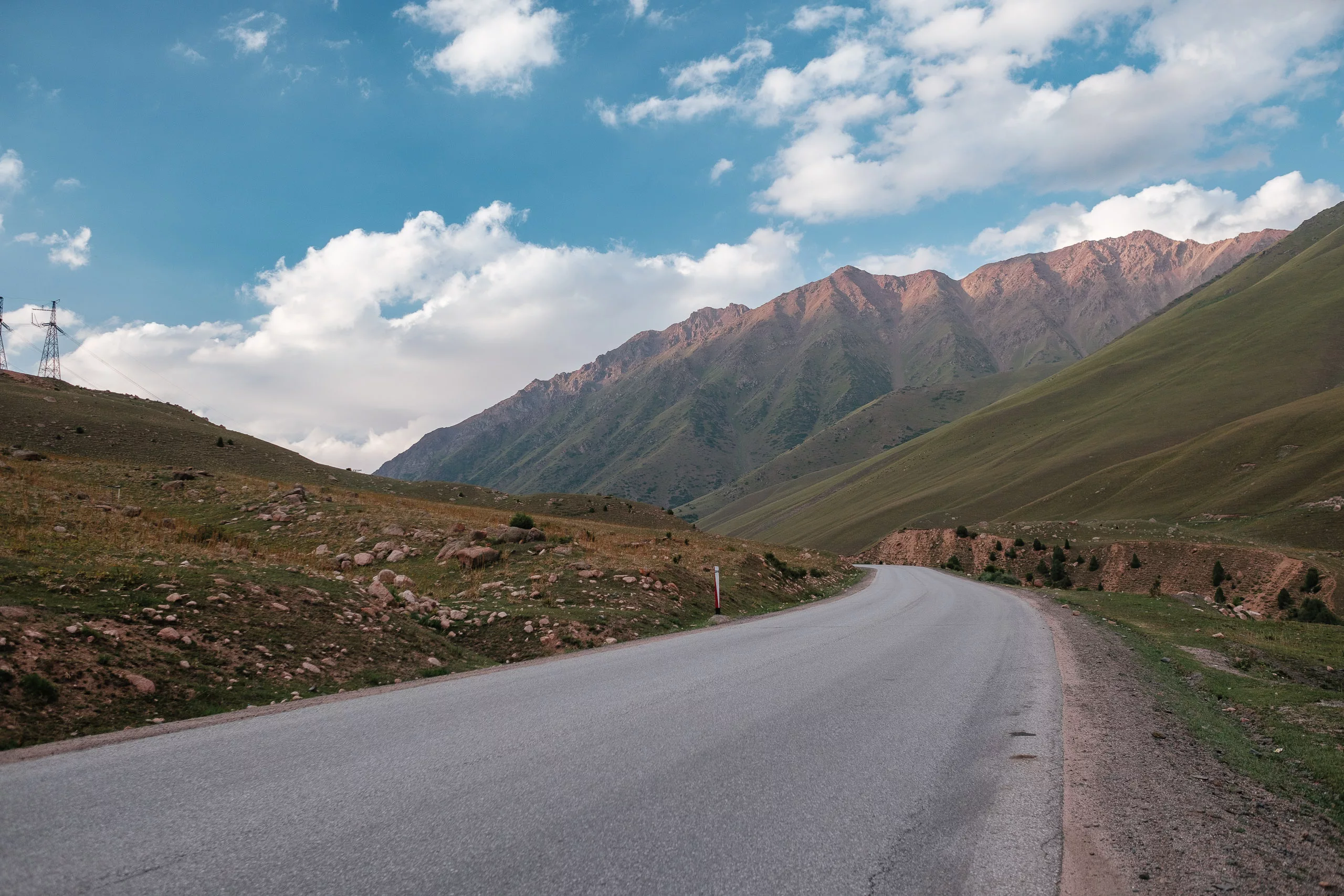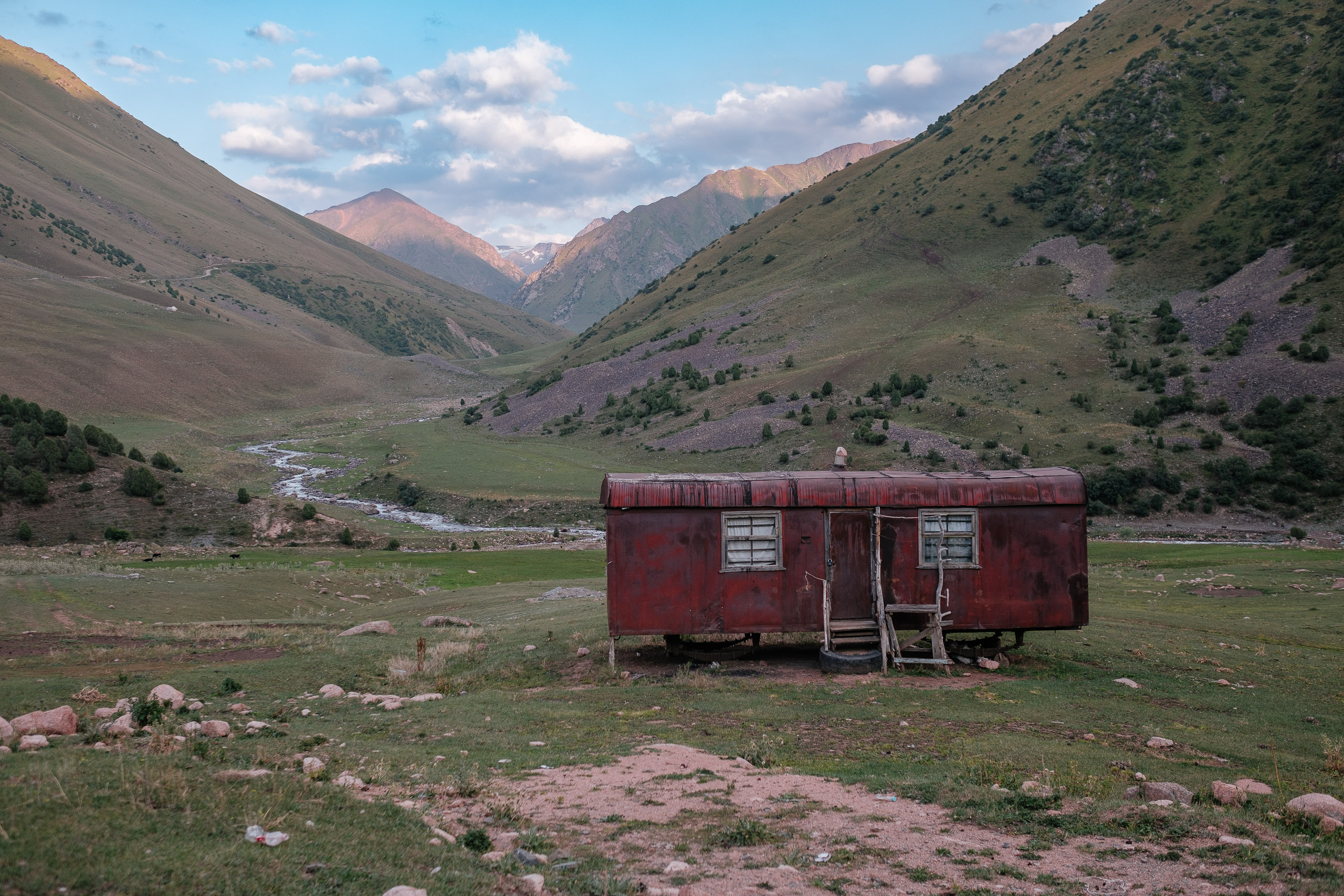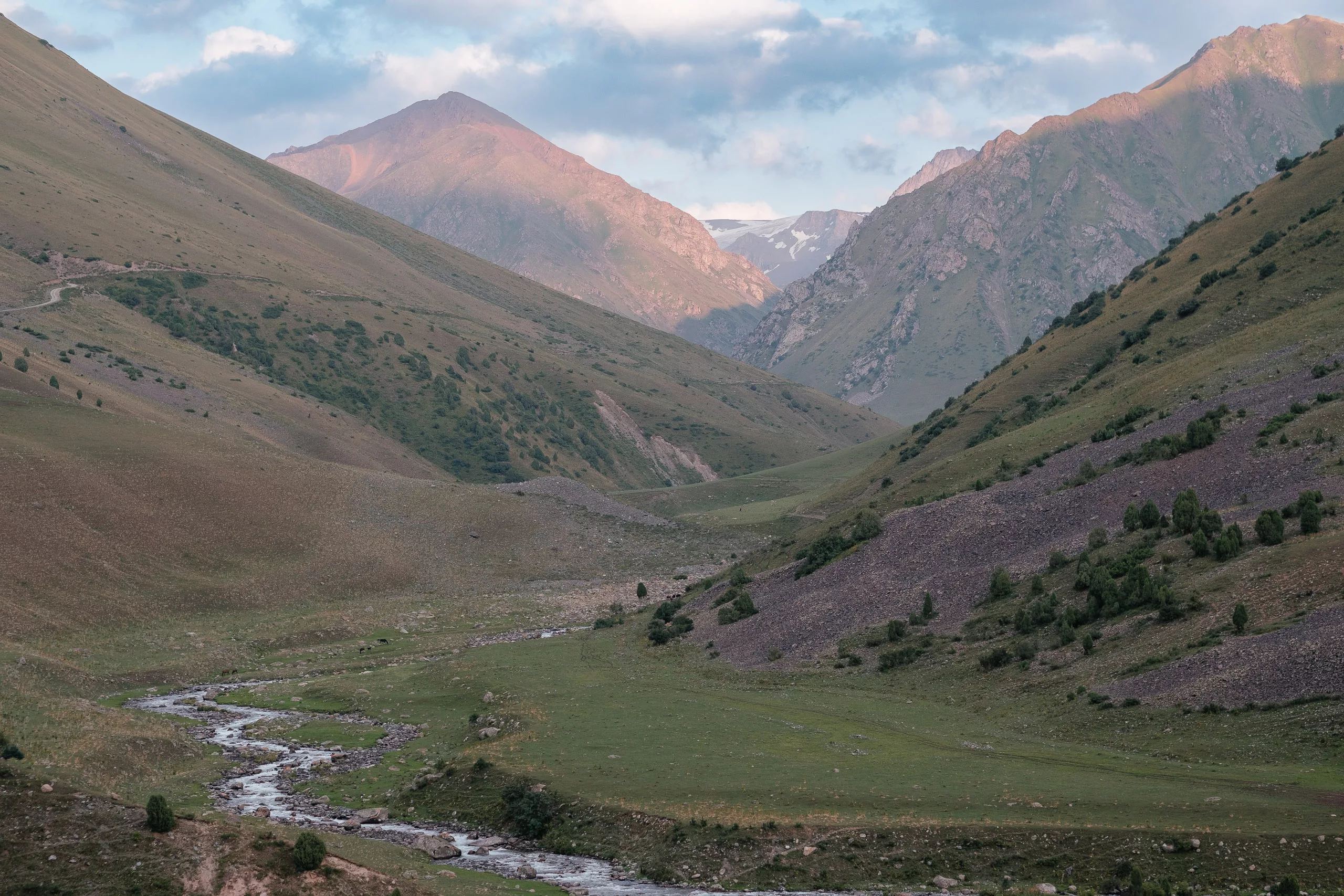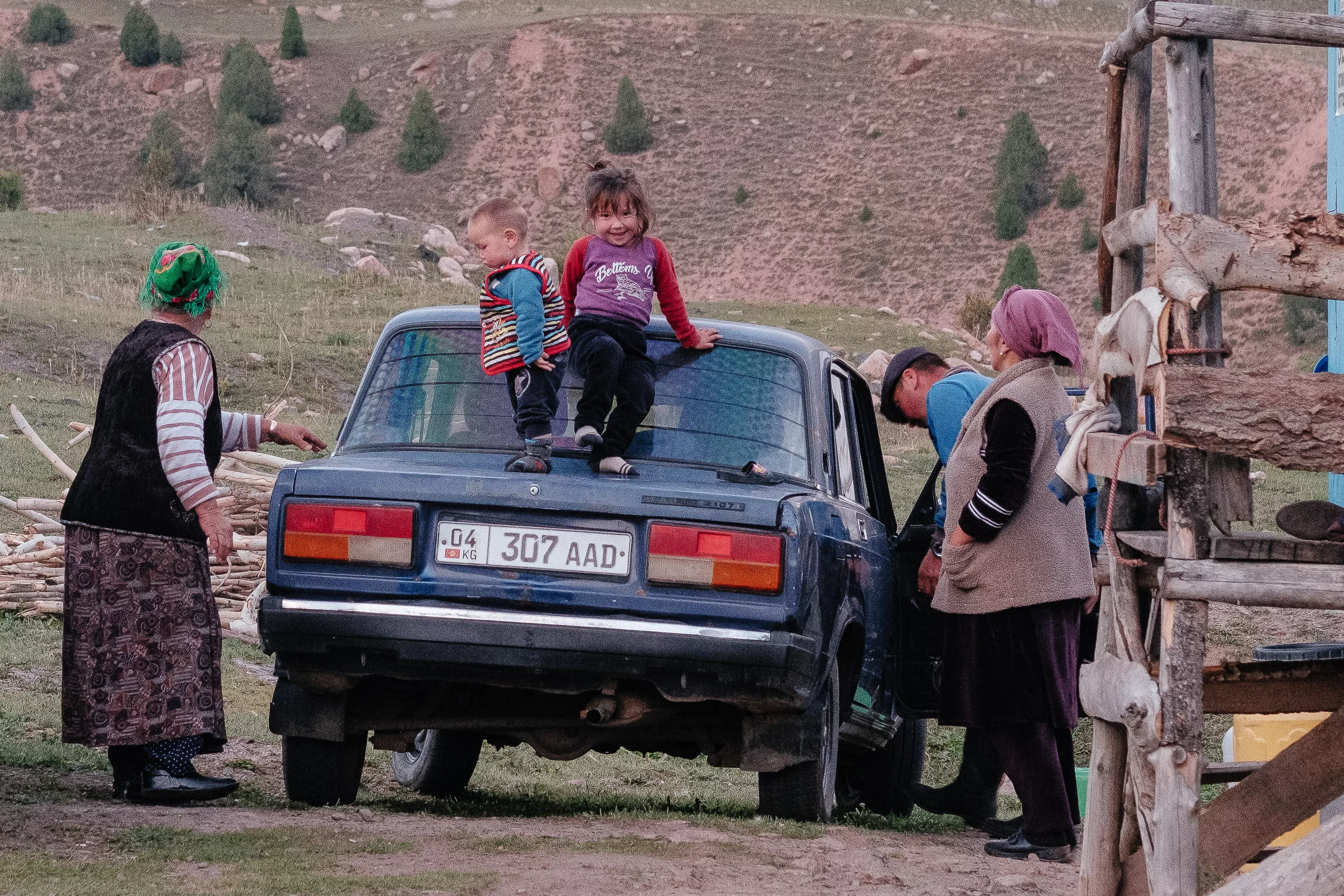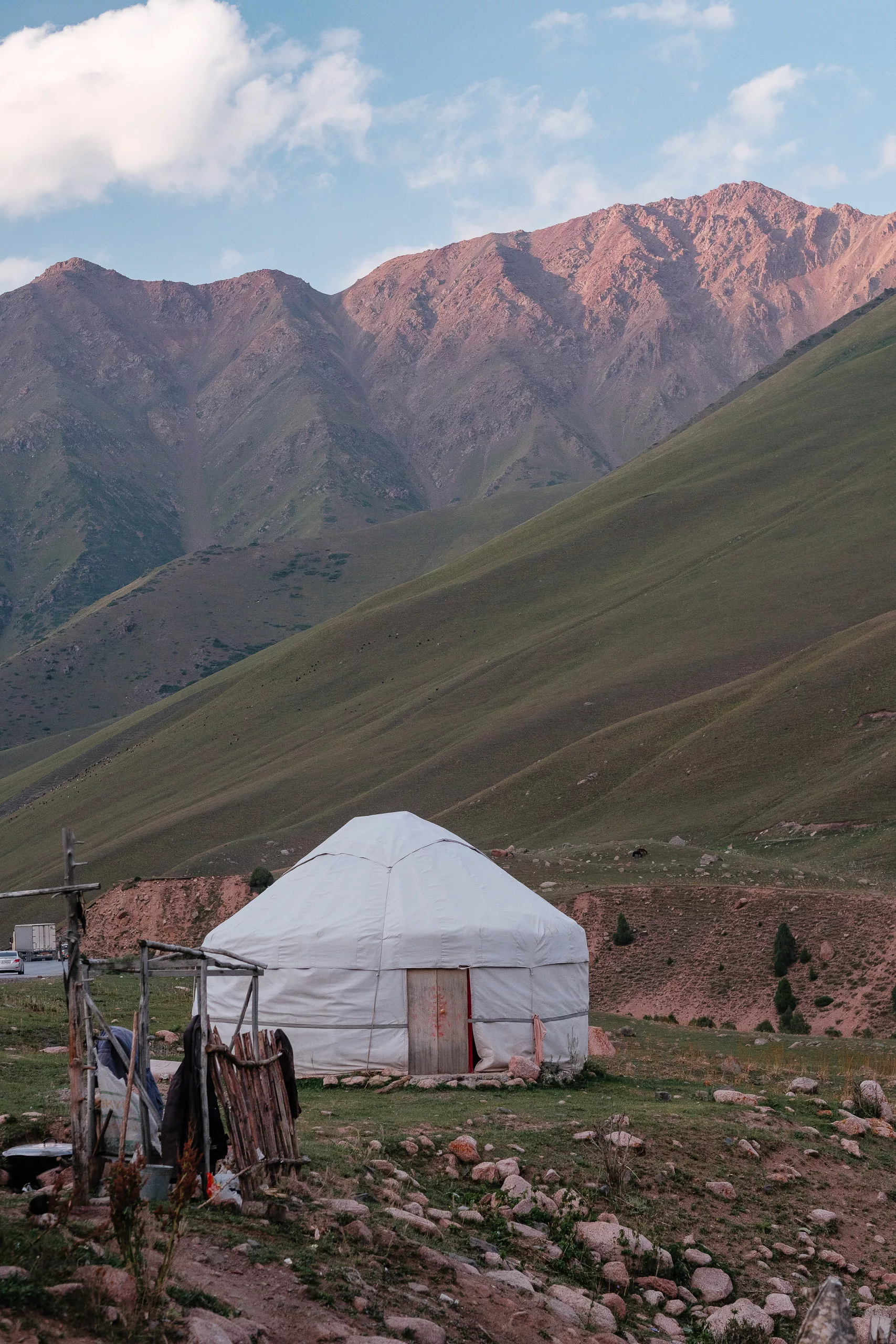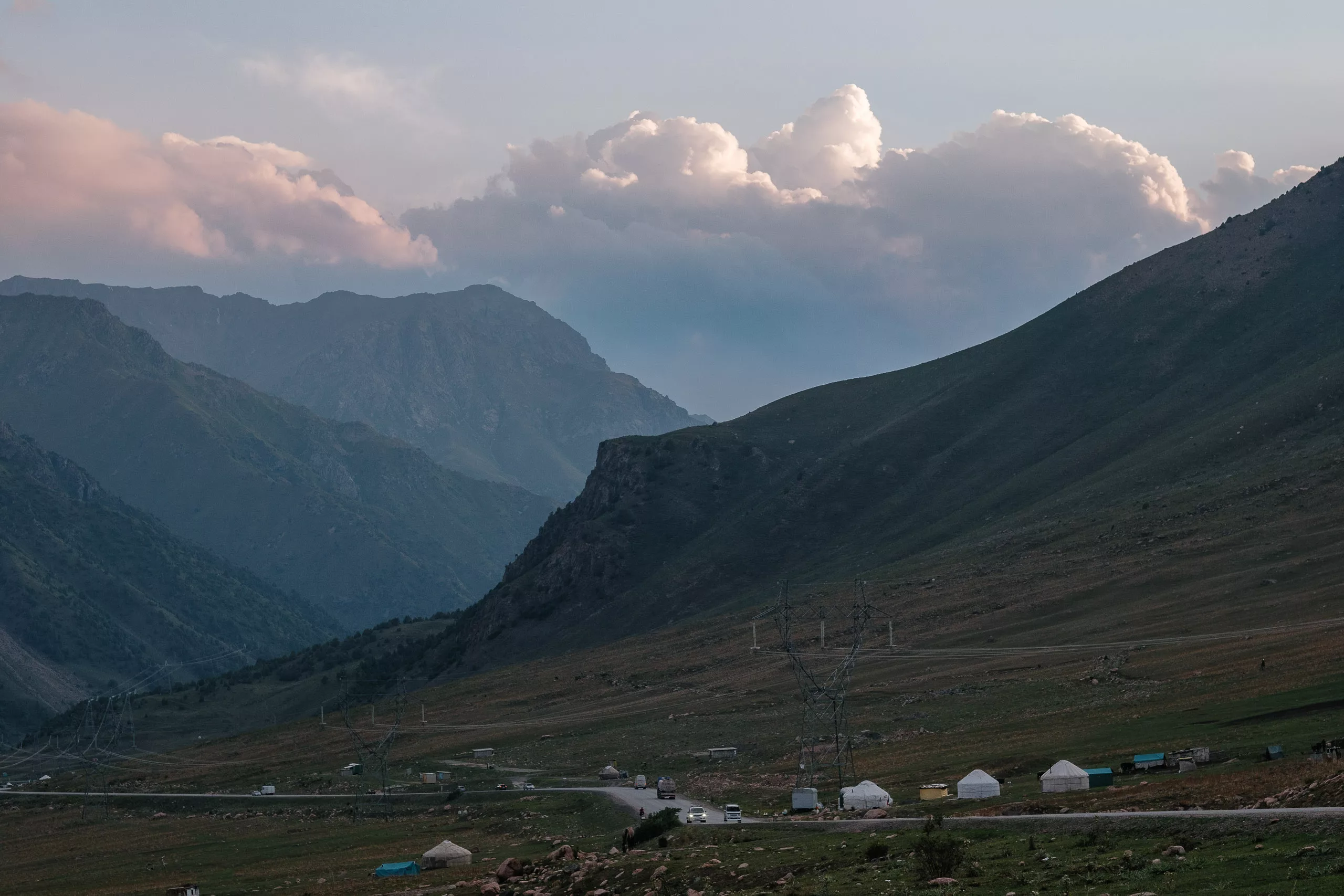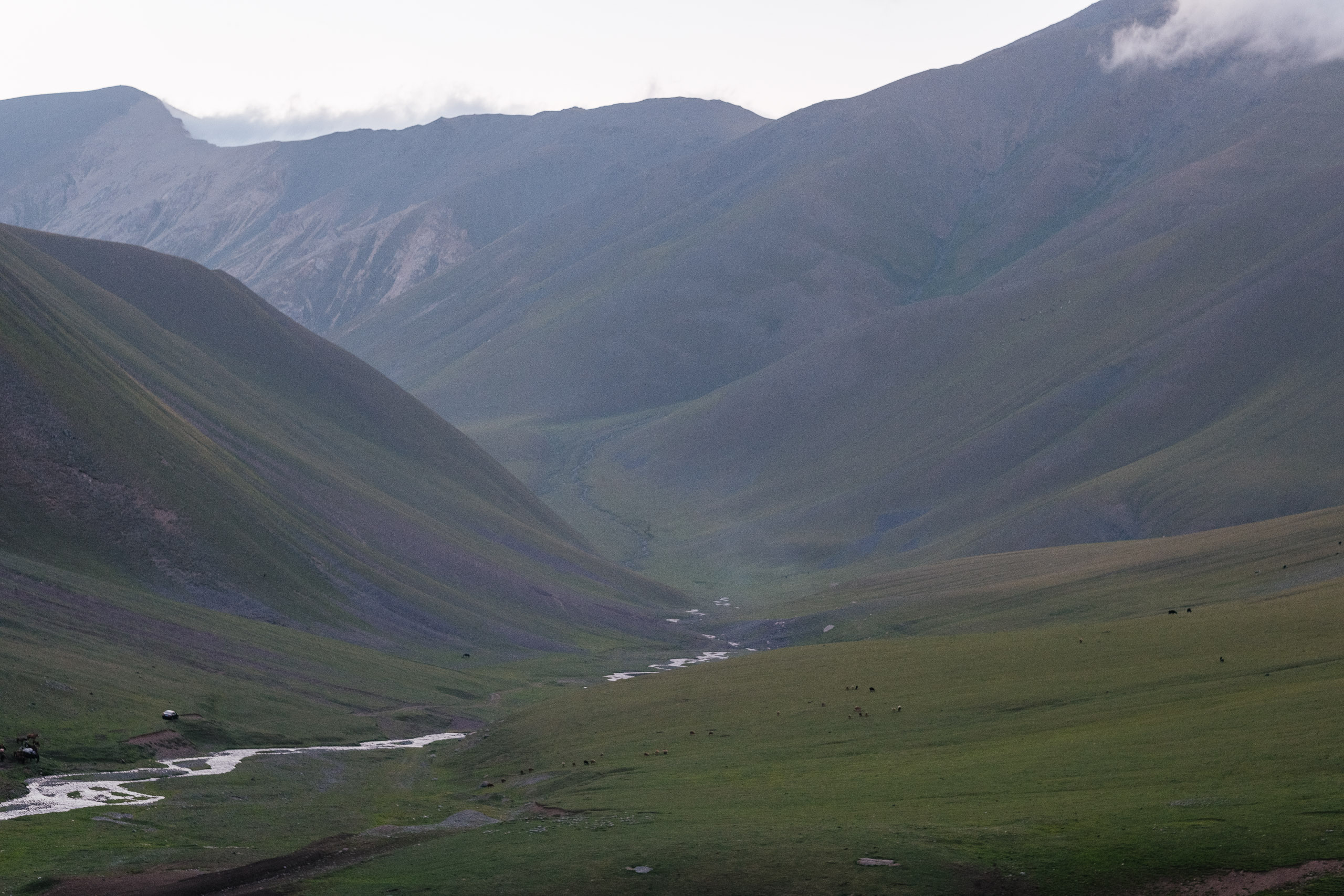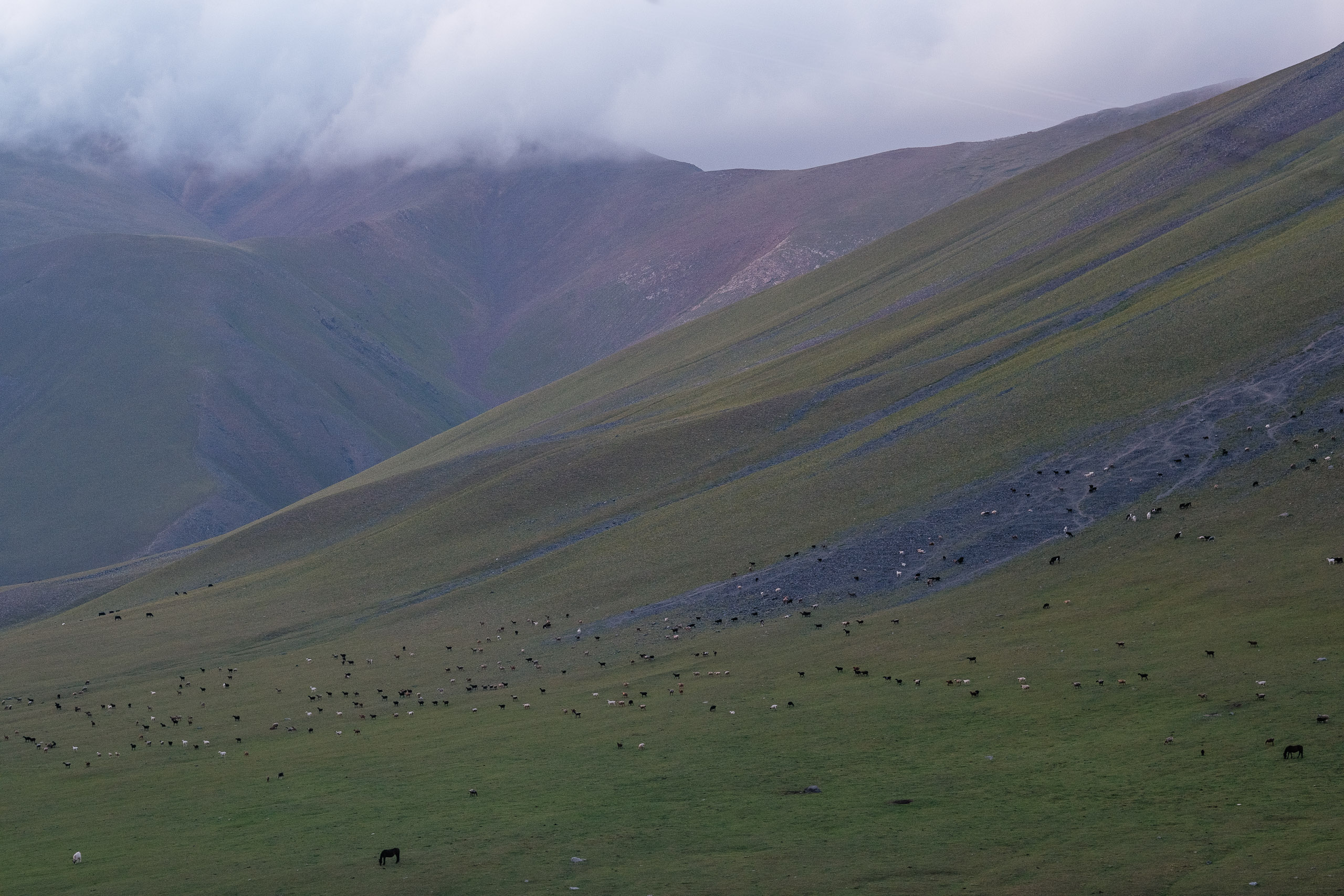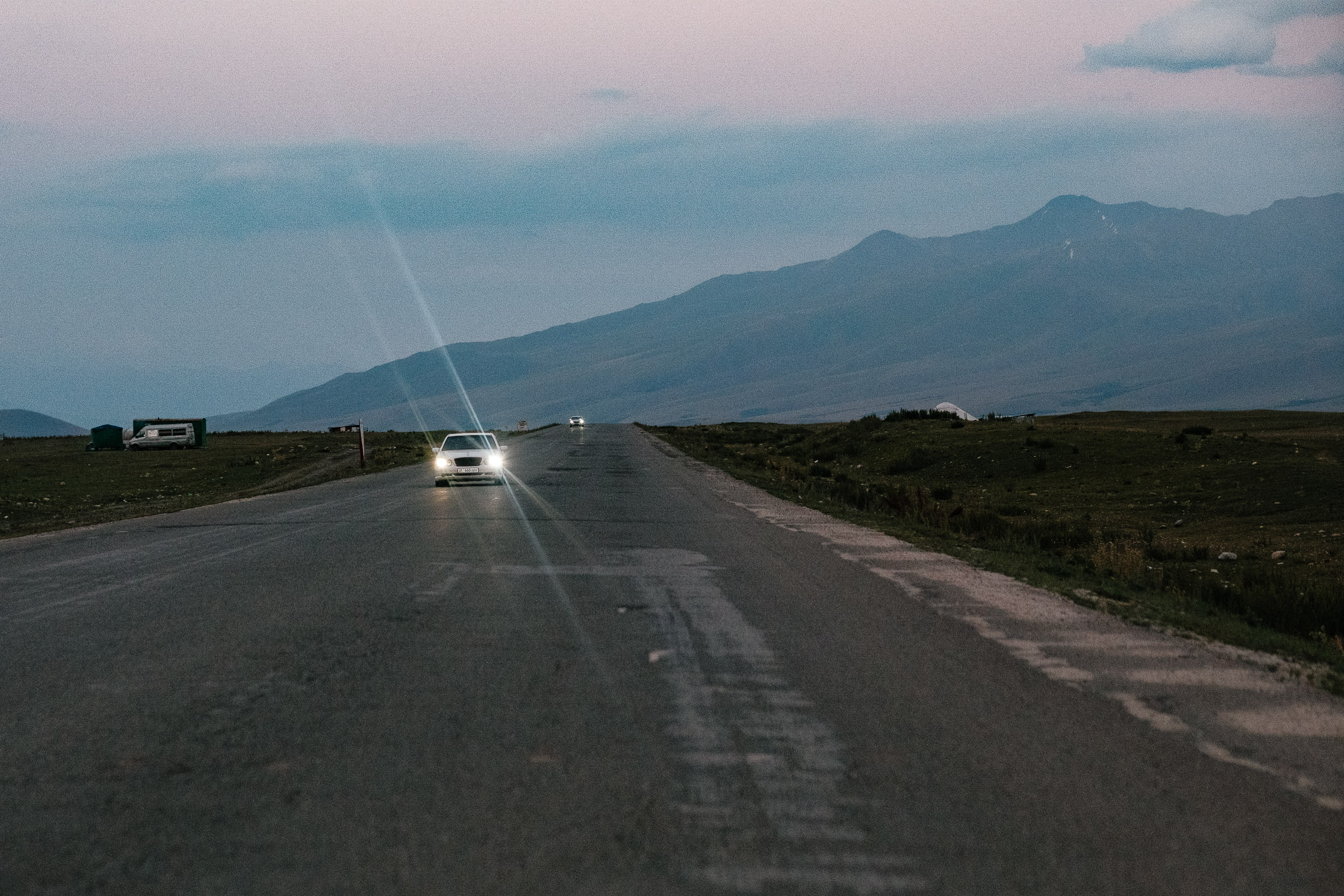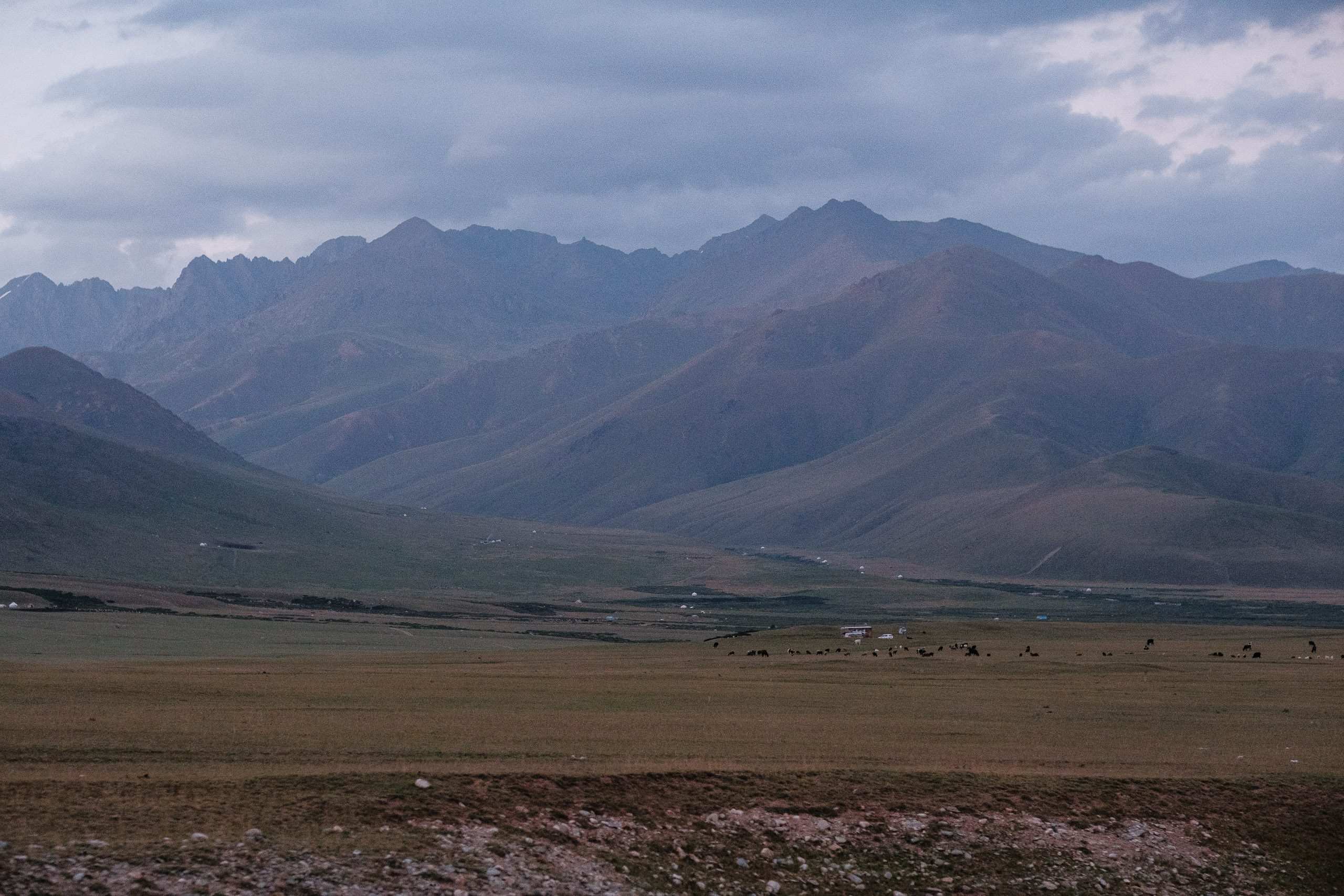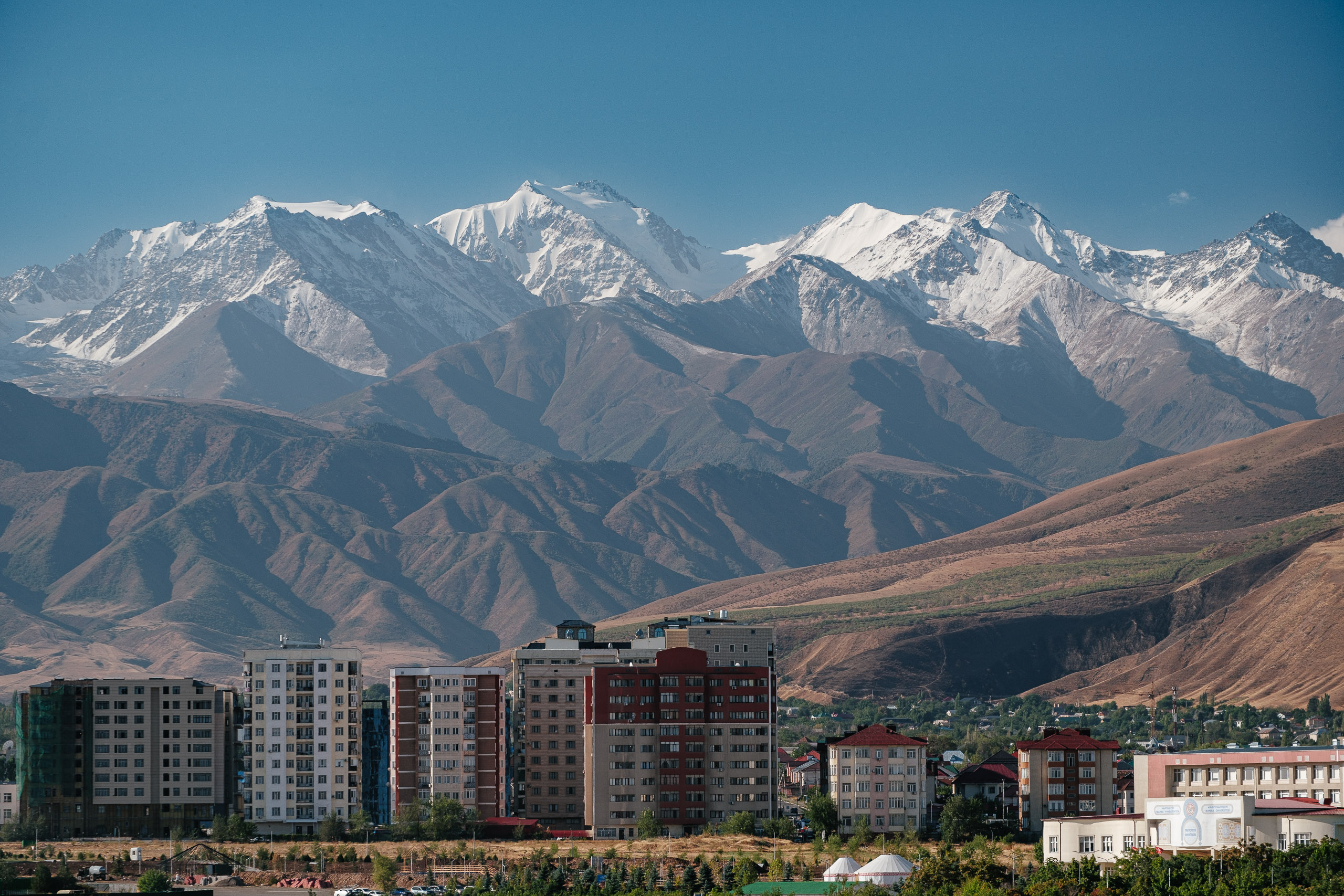You are like a harness of gold,
More delicate than the tulip, Alymkan!
Day and night I yearn,
From you, I desire you, Alymkan!Alymkan, seductive, like the steppe,
Your soul is great, you are good;
In the heat, pouring coolness, like the steppe –
You are good, heart and soul!Flying in the mountains, near Bukhara,
Today the birds are cold, Alymkan.
Come join me at night.
I am abandoned, Alymkan.Flying towards Kashgar
The birds are frozen, Alymkan.
Come see me, come to me,
Sadness torments me, Alymkan.Your scarf is embroidered with yellow thread.
I’ve been pining for you for a long time.
Your scarf is embroidered with blue thread
Grief dries me up.I composed a dream melody –
“Young dream”, which touches hearts.
If only you could hear
Toktogul – your singer!You would make a sign, waving your handkerchief,
With tenderness and compassion, Alymkan,
Driven by the fleeting life,
I’m waiting for happiness, Alymkan!— Toktogul Satylganov, Alymkan
For this second part of the trip, we do a road trip across the country, leaving the capital of Bishkek, to go visit the small village of Sumsar, where part of Bakulia’s family lives. The village is quite close to the border of Uzbekistan. This is a 11-hour drive, 614 kilometers and going over two high mountain passes reaching 3200 meters. The landscapes are amazing, and you can see a lot of Kyrgyz rural life just looking at the car window. It is also very varied, between green pastures to more areas that are more like high mountain deserts.
If you’ve missed the first part of the trip, you can find it here: Bishkek and the Chüy region.
But first a little video of the trip.
Our Itinerary
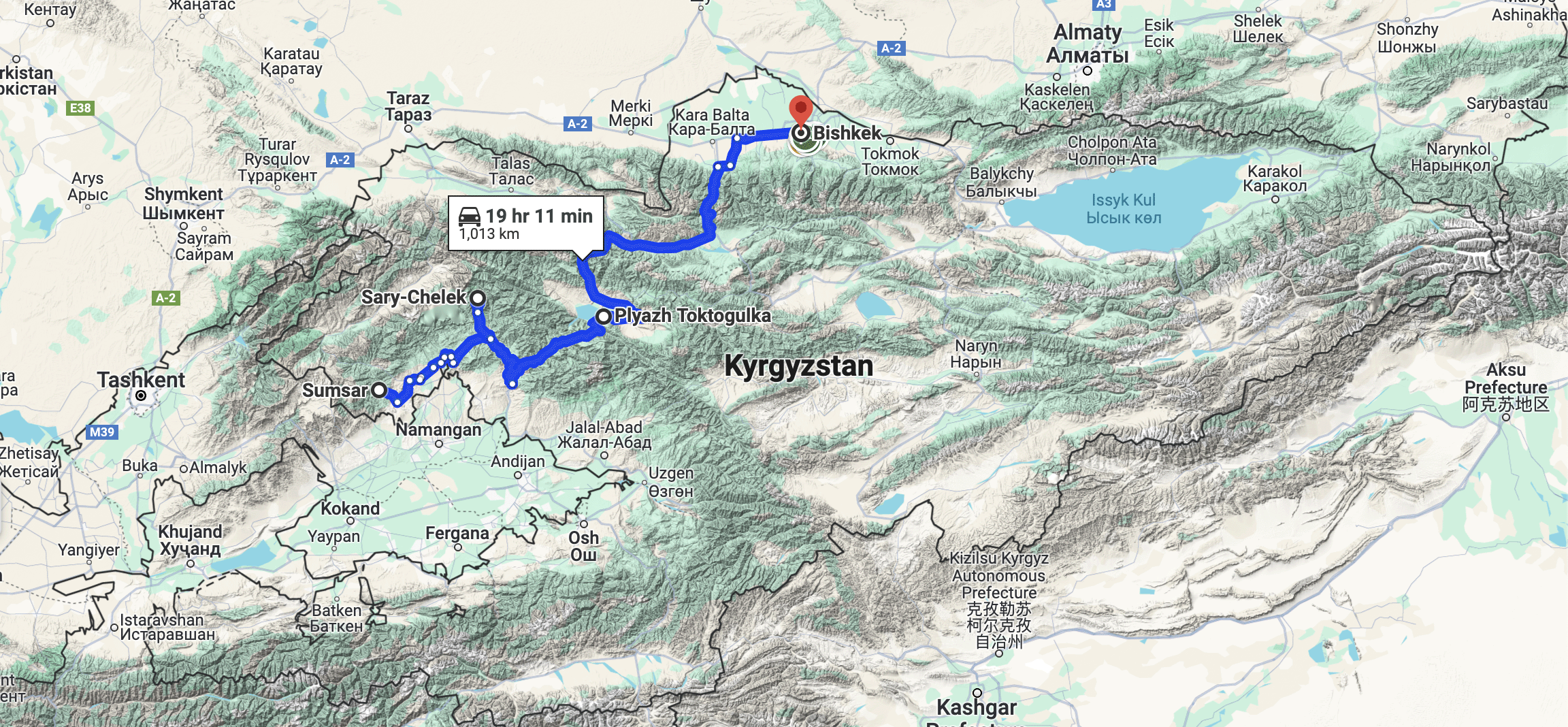
Sulutor Lakes
Our first stop is near a trail to the Sulutor Lakes, two small lakes near the Too Ashuu pass. We do the hike to stretch our legs and get our first taste of the high mountains of Kyrgyzstan. The landscape is just gorgeous! I hike all the way to the second lake. We see yurts, horses and shepherds with their sheep around. We are getting deeper in the heart of the country.
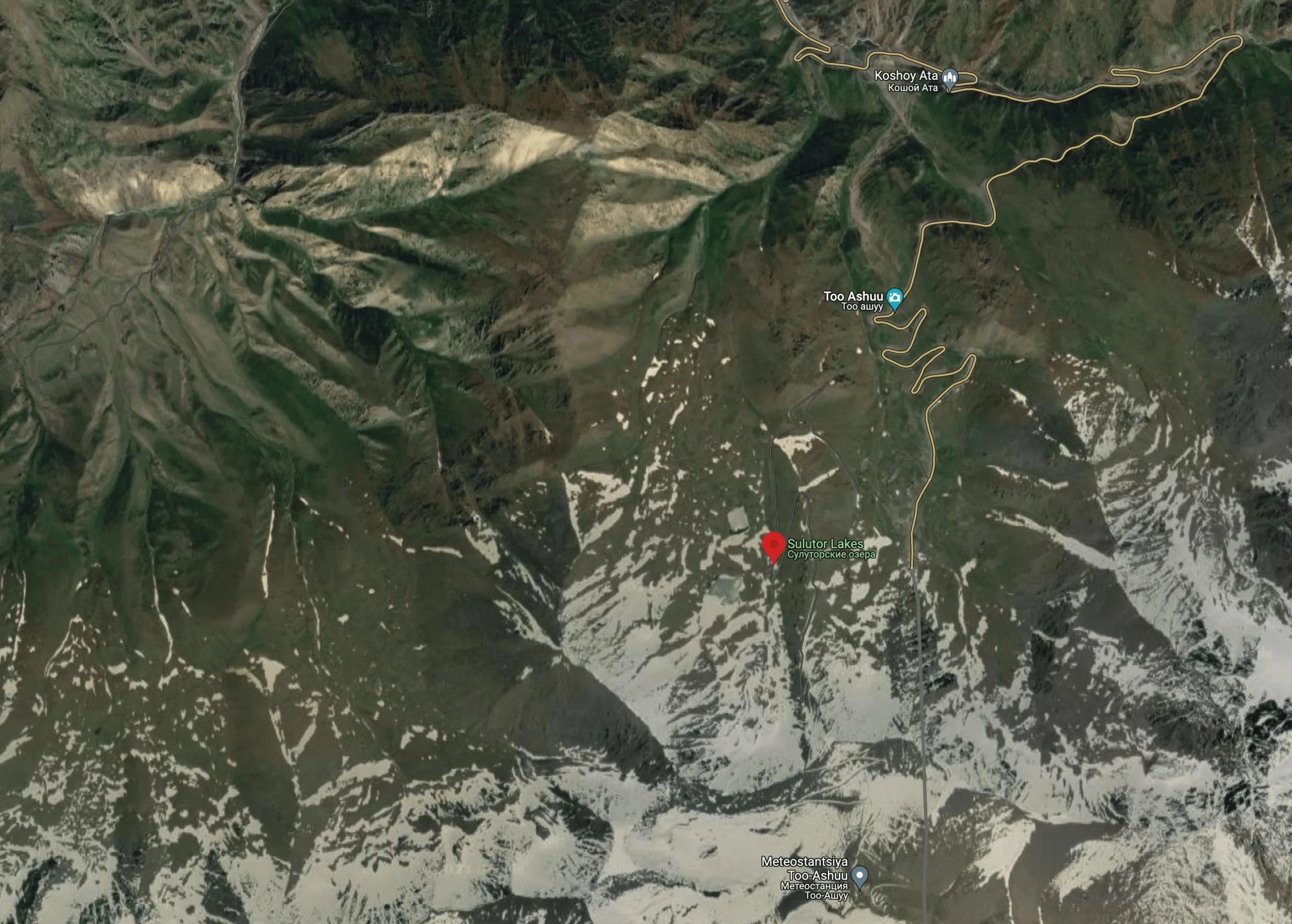
Toktogul
The next stop where we’ll spend our first night, is near the lake/reservoir of Toktogul. It is the largest fresh water reservoir in Central Asia and provides water reserves and electricity for many of the neighbor countries. The region name comes from Toktogul Satylganov, who is one of the countries most famous “Aqyn”, improvisational poets and singers. It was also his birthplace, in a village that is now submerged by the reservoir. His portrait is on kyrgyz currency, and there are streets/schools named after him. Generally, a lot of poets and singers come from this region.
There are no recordings of Toktogul Satylganov, and there is only one song for which we have lyrics from him. I’ve put the lyrics of this songs at the top of this post.. Here’s a couple recording of this song, Alymkan.
- The first one from 1958 by Myskal Omurkanova, who was the very first to record it. She is a very famous singer in her own right.
- The second one, by another beloved singer, Salamat Sadikova, in a more recent live performance.
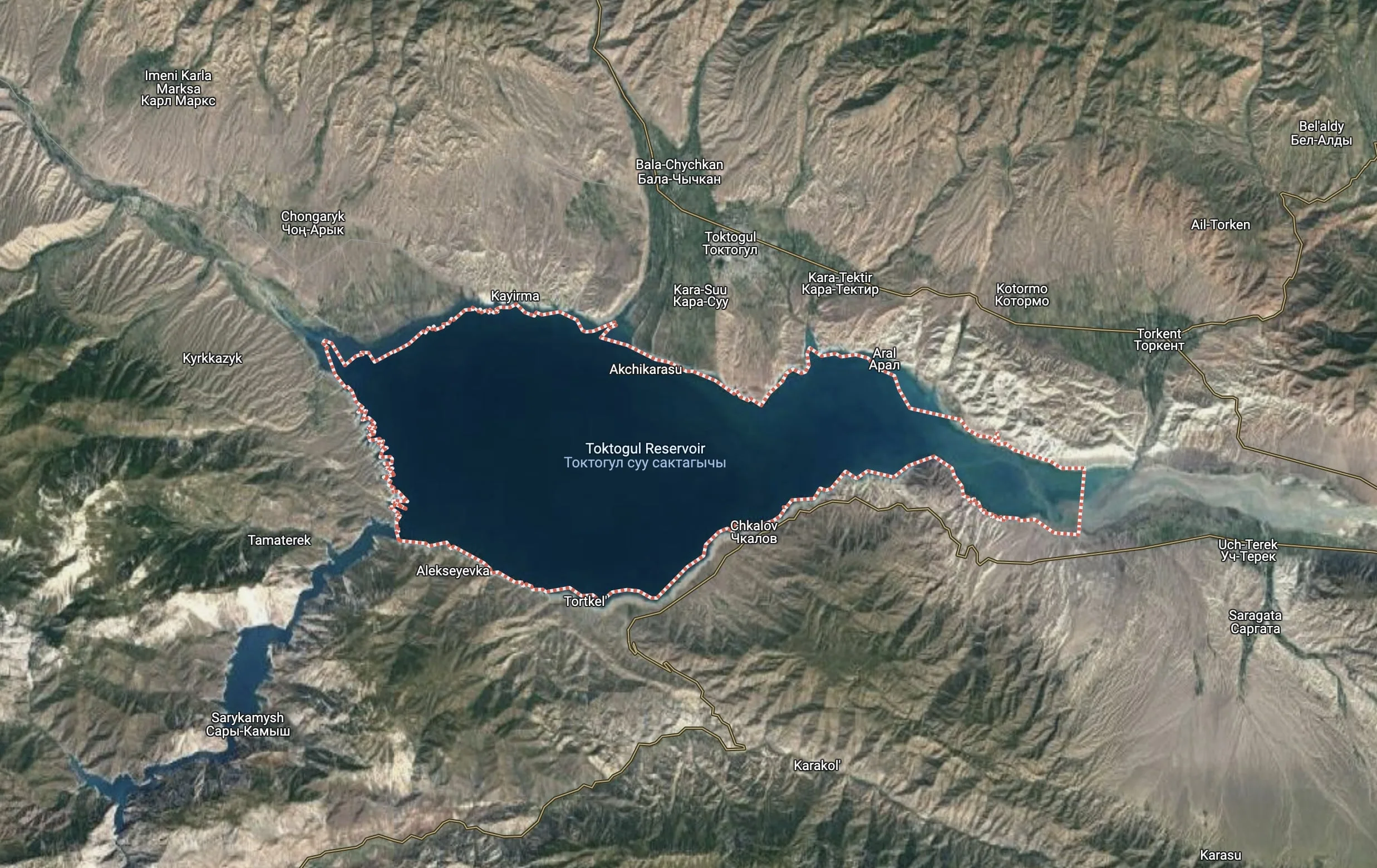
We stop for lunch at a restaurant on the road, where they serve fresh trout that you can pick alive from a pond, and then they cook it on a woodfire. The food is delicious and obviously very fresh.
Sary-Chelek Biosphere Reserve
We make our way to the Sary-Chelek Biosphere Reserve which is on the Unesco World Heritage List. The climate changes a lot, it goes from being very dry to suddenly very green. The biosphere reserve ranges from 1,200 to 4,247 meters above sea level. This nature reserve protects a gorgeous area that contains 7 lakes, including the largest one Lake Sary-Chelek which means “Yellow Bucket” in Kyrgyz. It is located at an altitude of 1900 meters; the depth is more than 200 meters. The lake appeared during the strong earthquake. The mountain river was blocked and a lake was formed there. The lake is surrounded by high ridges and steep banks.
There are forests of walnuts, juniper. There are more than 34 species of animals (such as deer, bear, lynx, wolves, foxes, badgers, porcupine and even snow leopards), 160 species of birds and more than a thousand species of plants.
Near the lake, I could say also some bee farms, where they are maiking honey. It is also possible to arrange a boat ride on the lake, or a horseback riding trip. We decided to go for the boat ride and we were on the same boat as a group of old men that were traveling together. We learned that they knew each other since kindergarden, and took trips together every year! These kinds of old men are nicknamed Aqsaqals (which means “white beards”) and are often quite important in traditional kyrgyz rural society.
We stay in a homestay, where there is a very nice family with kids. They cook for us a really nice meal on top of providing rooms for the night. The bread is homemade and baked fresh.
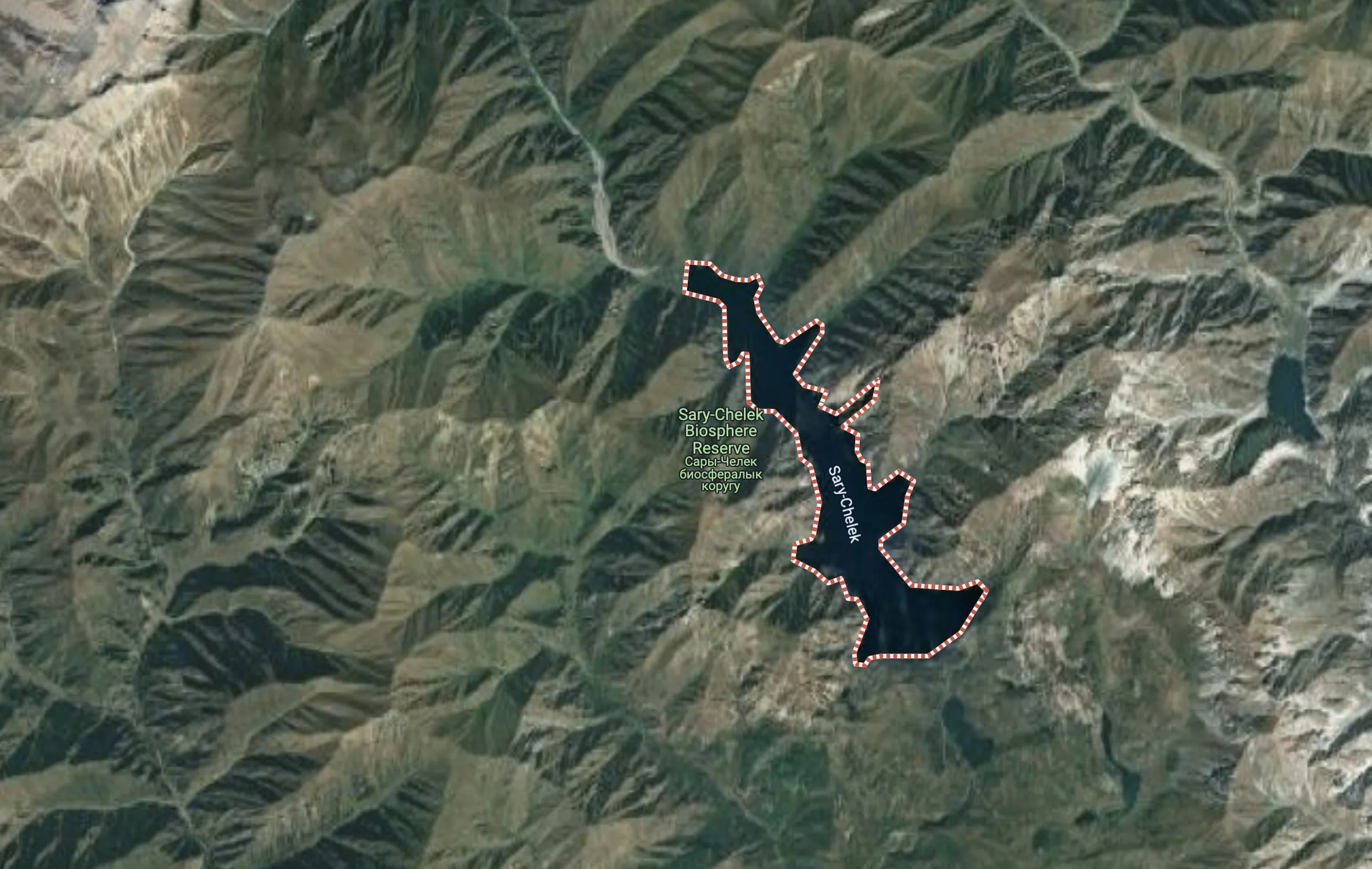
Sumsar
We finally arrive in Sumsar, meet more of Bakulia’s relatives and visit the region. We see her old school, and houses where she grew up. We celebrate a typical Kyrgyz tradition called Tushoo Toi, which is held when a child is one year old, and he just begins to walk. Wishing the child’s future steps to be better and faster, or just wishing him a bright future, happiness and success in everything his parents cut a sheep devoting it to him an organize a big toi (party). They invite their relatives and neighbors.
The rule of the custom is as follows: after the guests have had a meal and given “bata” (blessing for the child) to the child, his parents invite the guests to the race competition for children. They tie up the child’s legs with a white and black striped wool cord. The children race from a certain distance. The first and second winners have the right to cut the cord and walk with the child taking him by his arms. The first winner is usually given an expensive present and knife with which he has cut the cord. The second and third winners are also given presents. The other participants are given sweets, various toys etc. the children whose tusho’os (cords) are not cut are said to be unlucky in their future life.
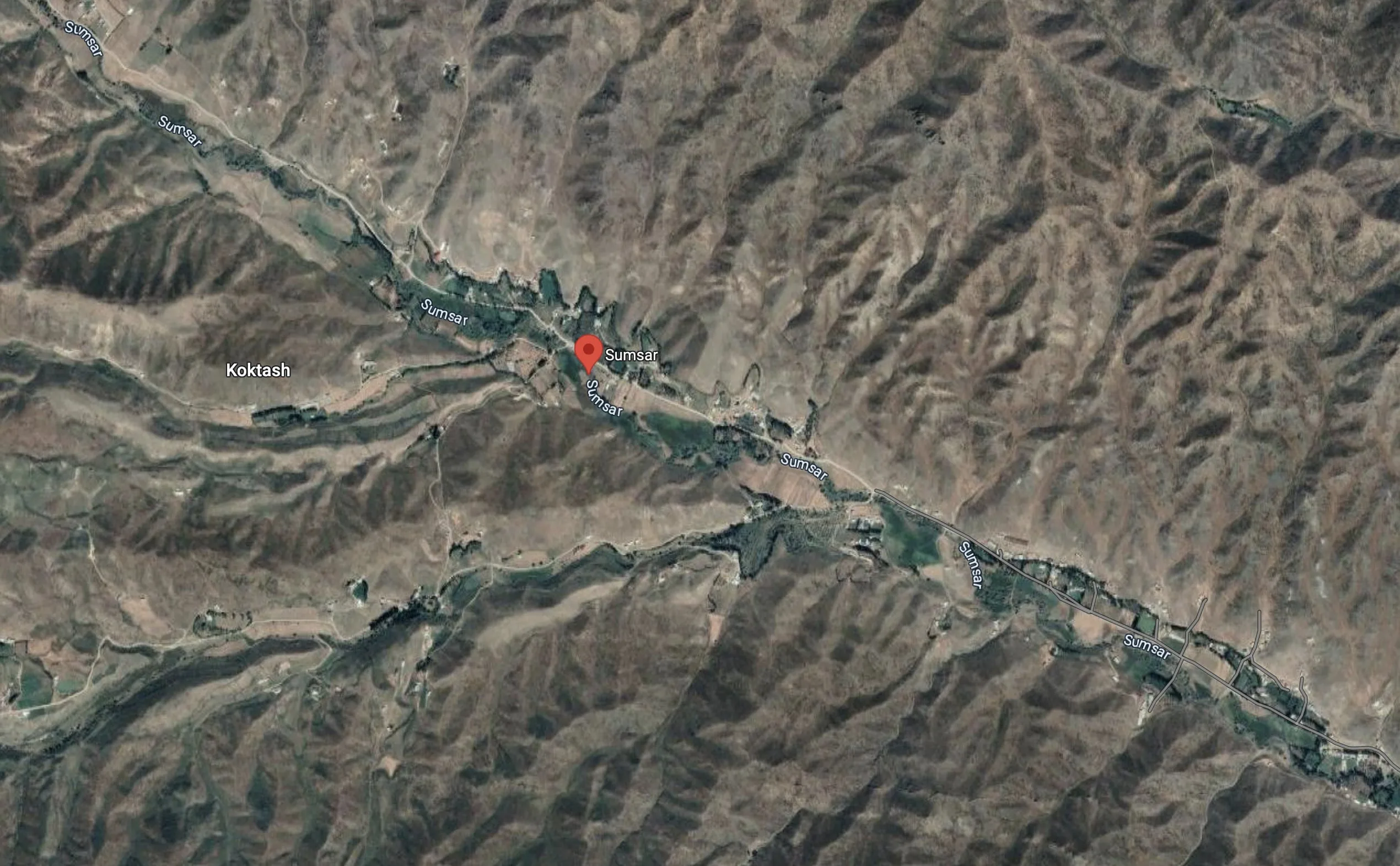
Karavan
On our way back, we make a stop in the village of Kerben, also known as Karavan. We meet more relatives and walk around the colorful bazaar.
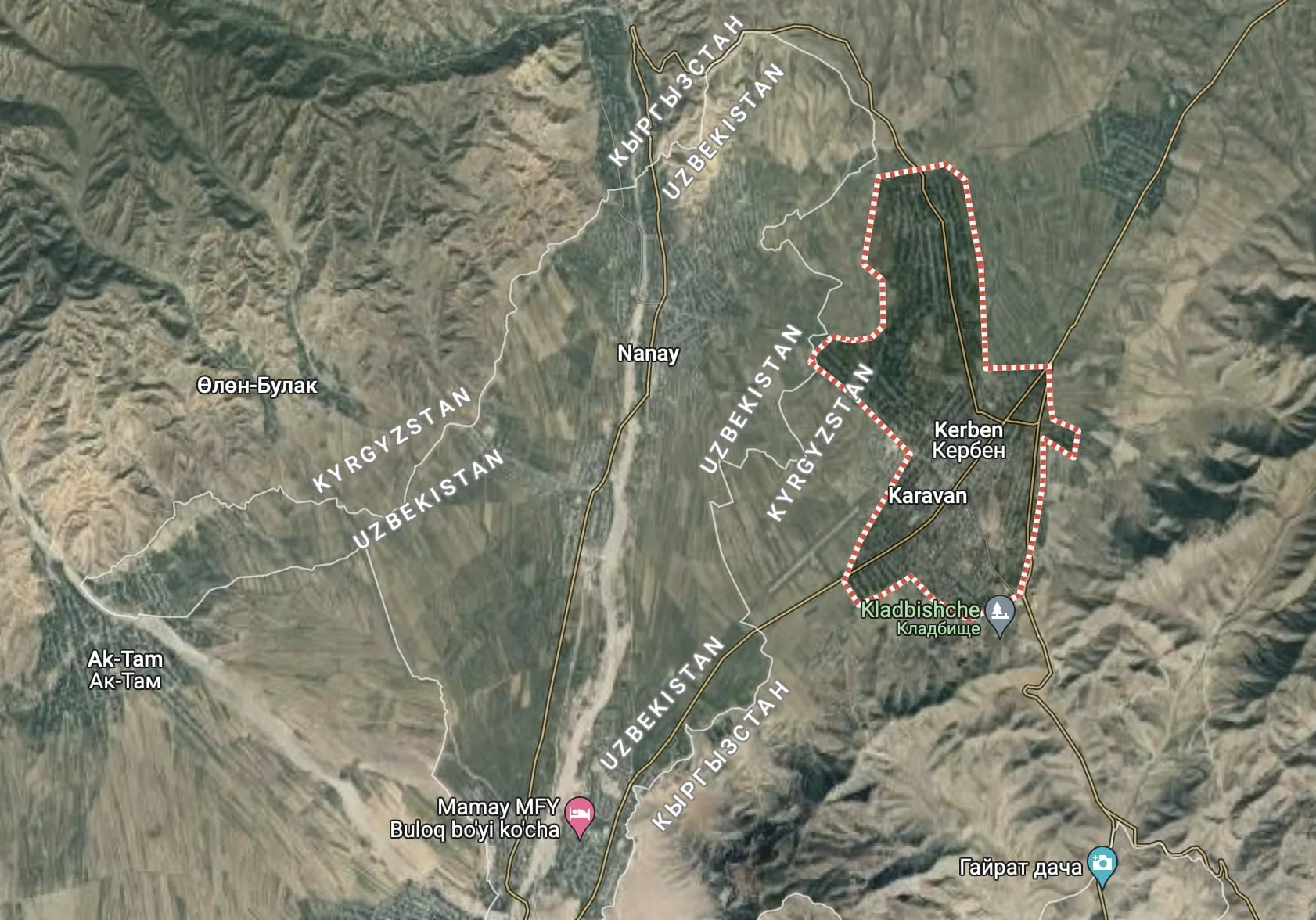
Suusamyr
Our final stretch of our roadtrip takes us through the Suusamyr valley. The valley itself is at 2000-2500 meters, and it is surrounded by truly impressive green mountains. It is doted with yurts and shepherds. One can witness here the traditional lifestyle of the rural Kyrgyz, very close to their nomadic ancestors. On a weekly basis people here play Kok Boru, one of the world’s craziest sports. It’s a game where two teams play a sort of game of polo, but with a dead goat. The players have to pick up the animal from the ground or steal it from the other camp and dump it into a sort of giant basket. The game is a little hard to follow and can be quite chaotic. Here’s a little sample below.
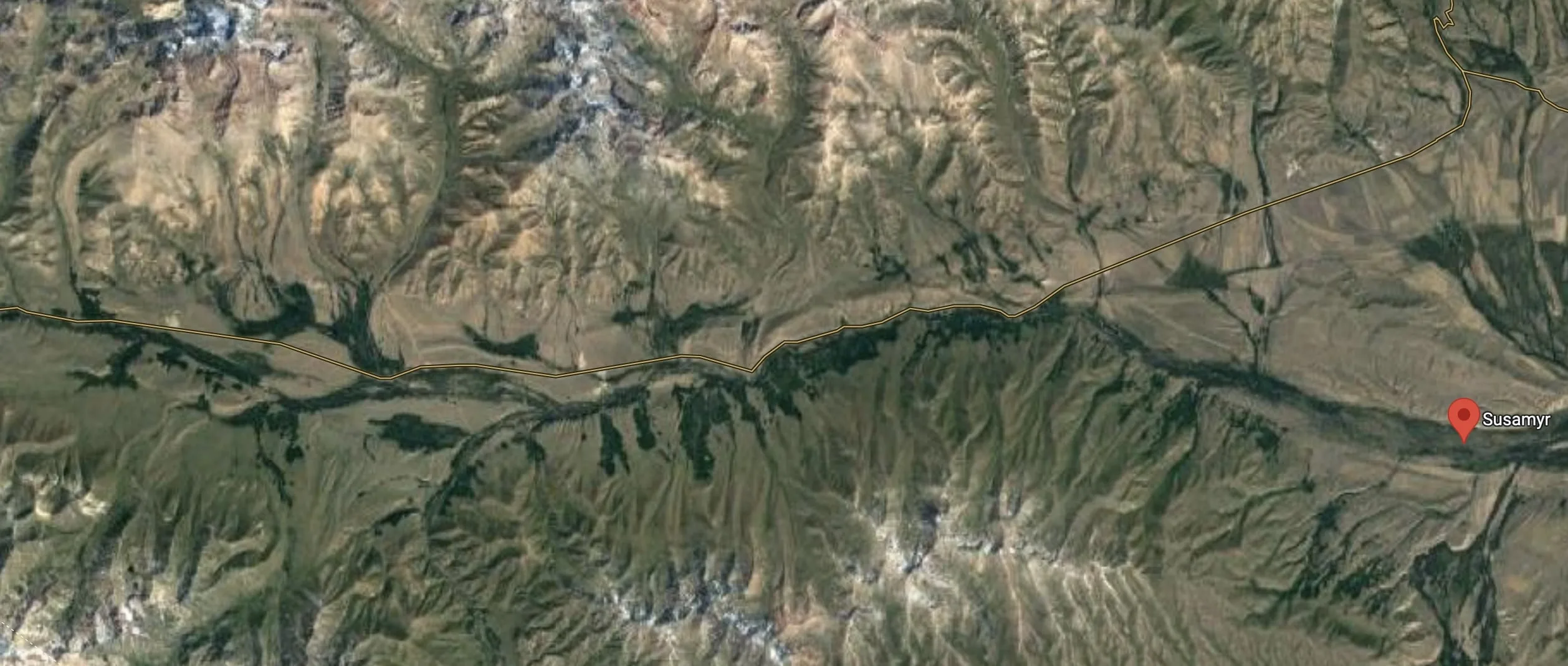
Thanks for making it this far! I hope you enjoyed the read. This was the second part of my 3-part series on Kyrgyzstan. The next one will be about the Issyk Kul region and circling the lake.
